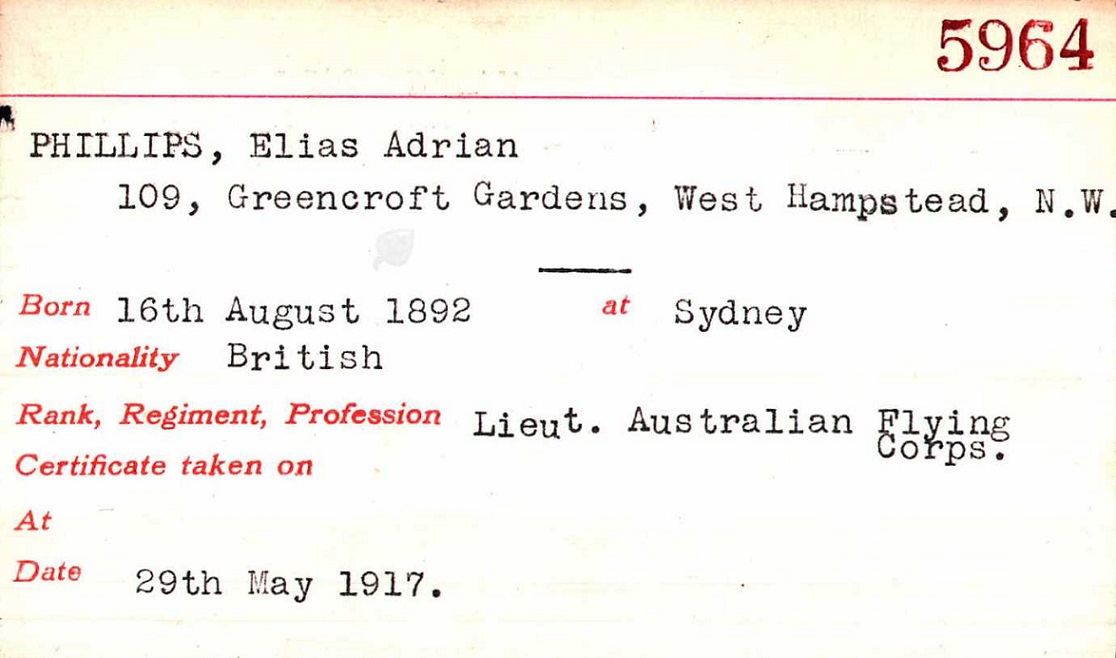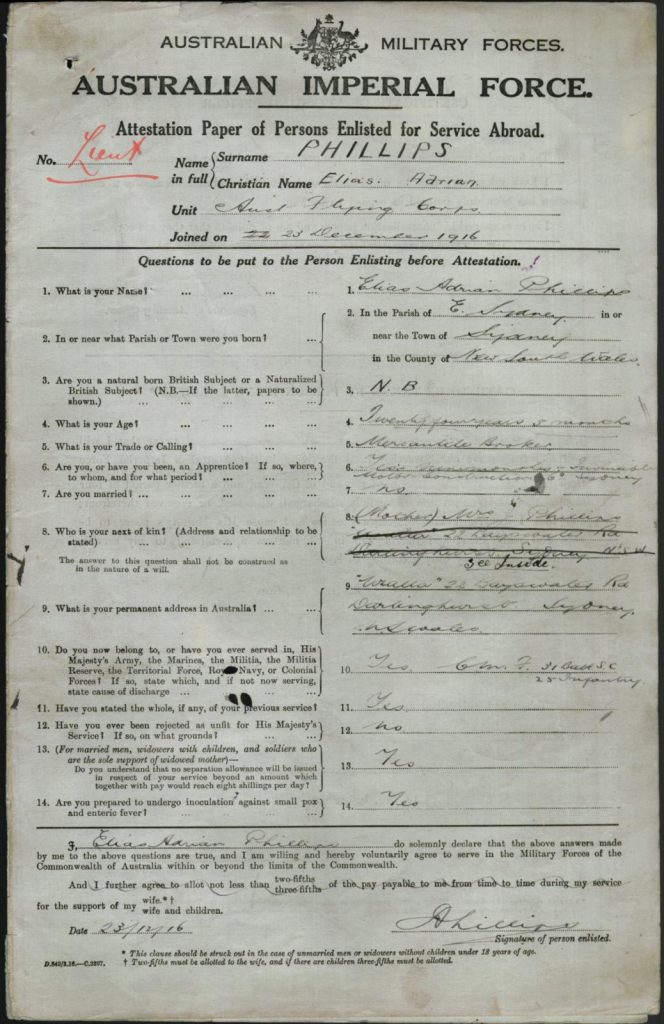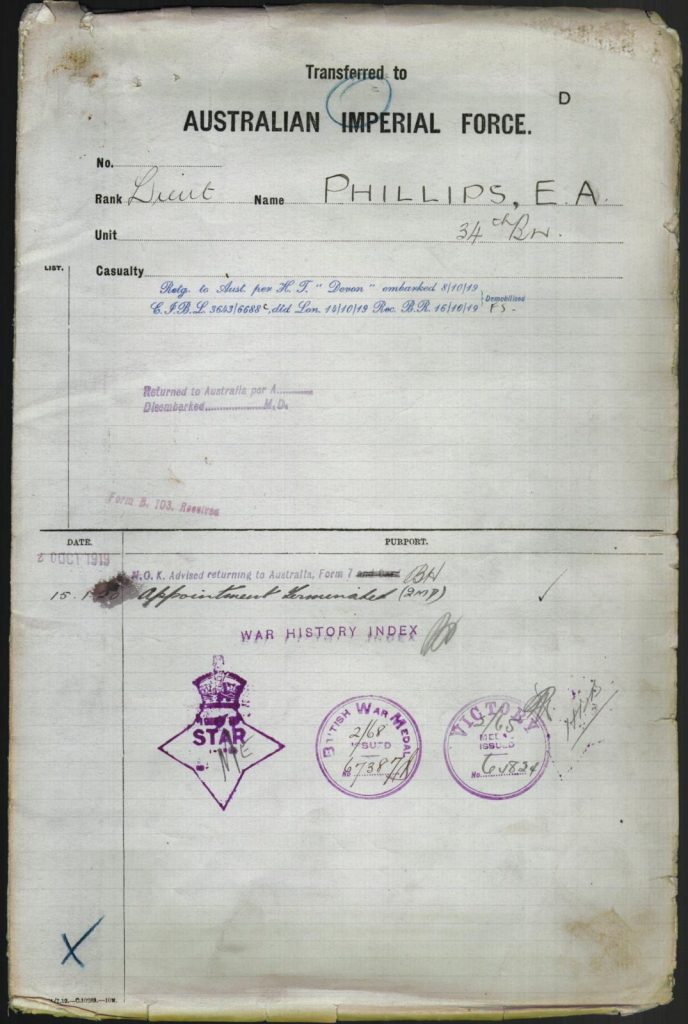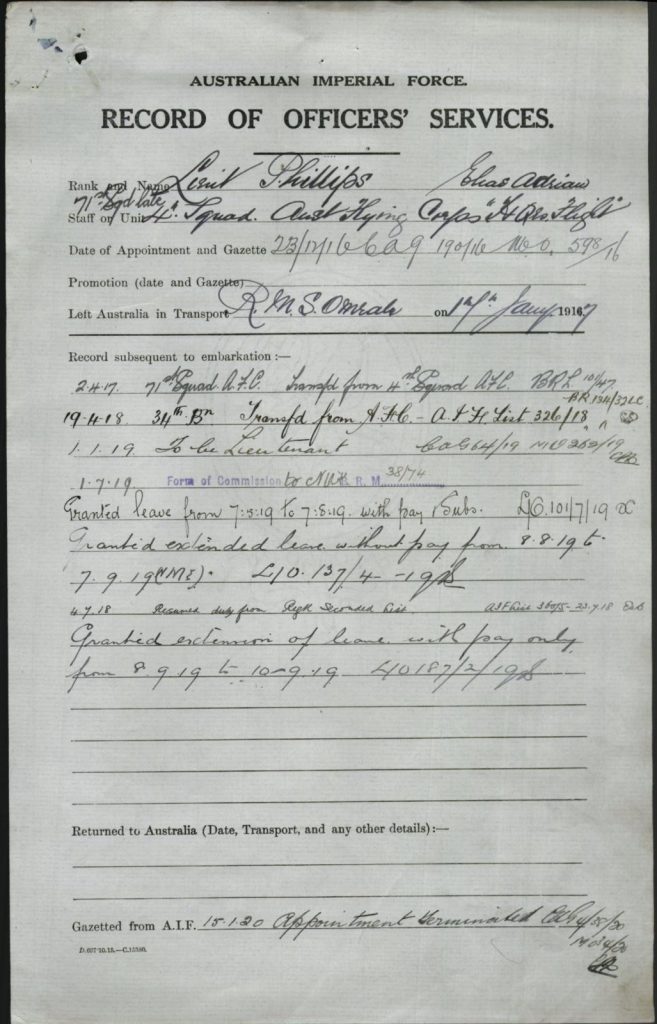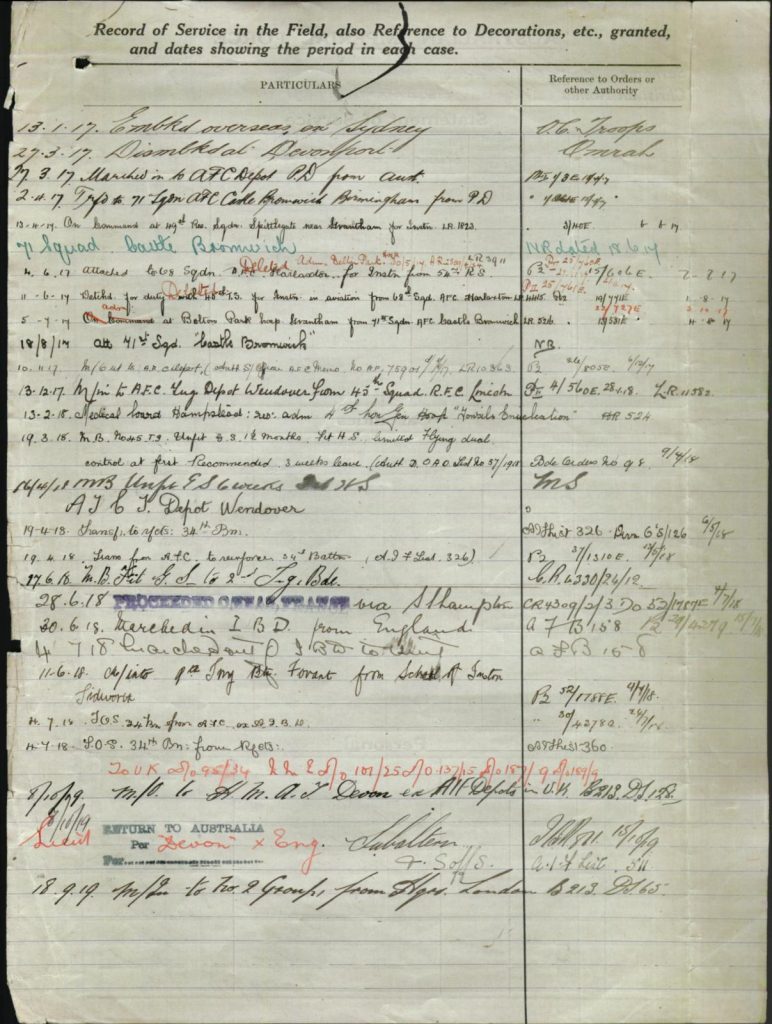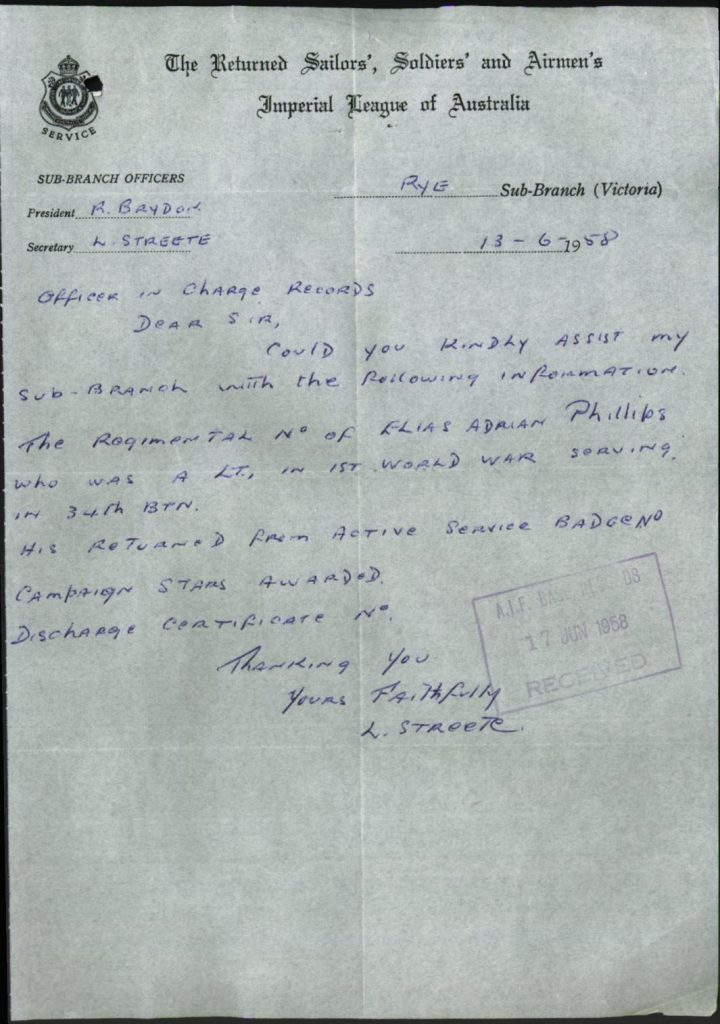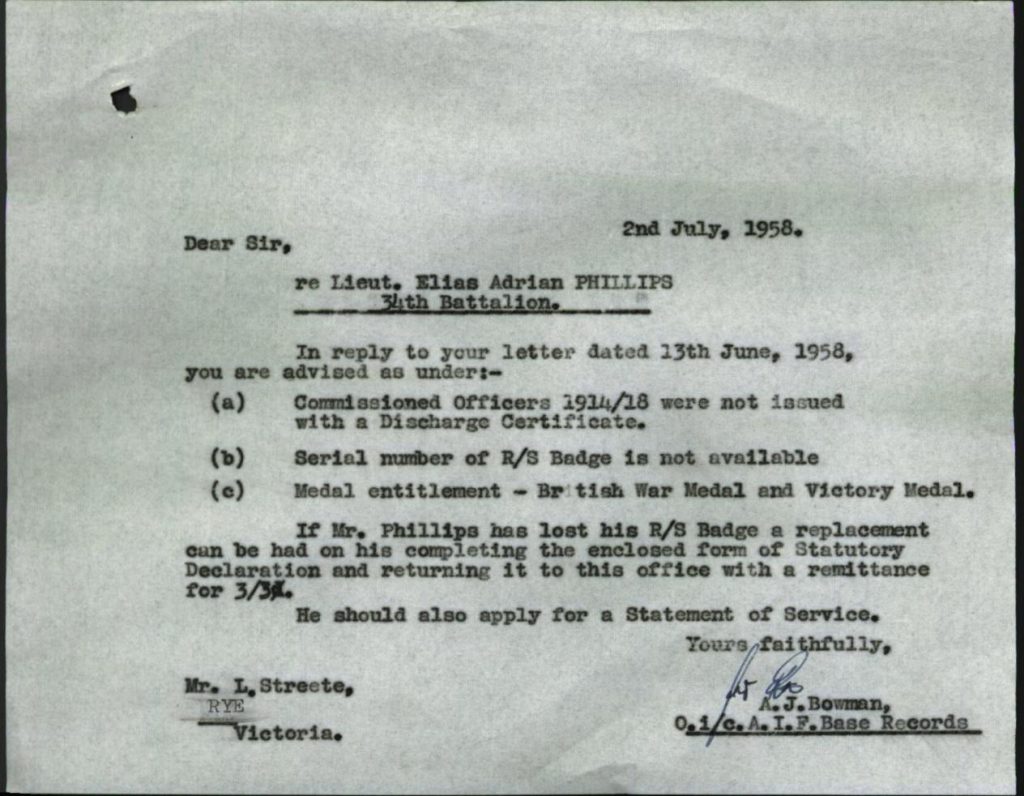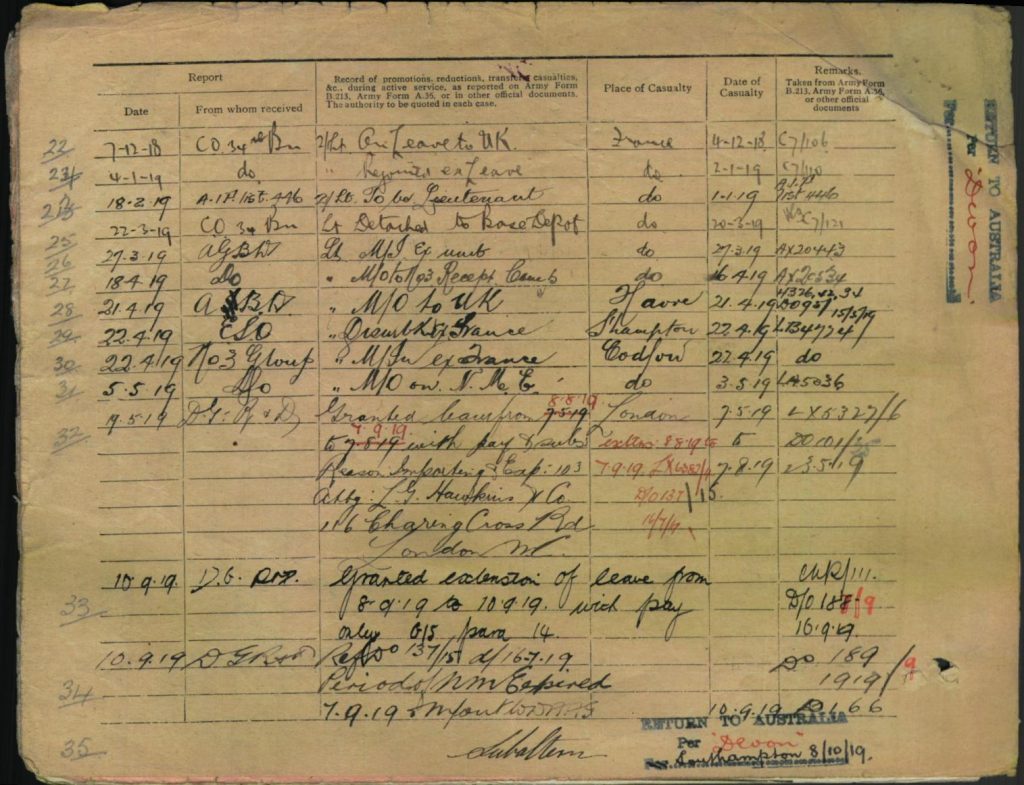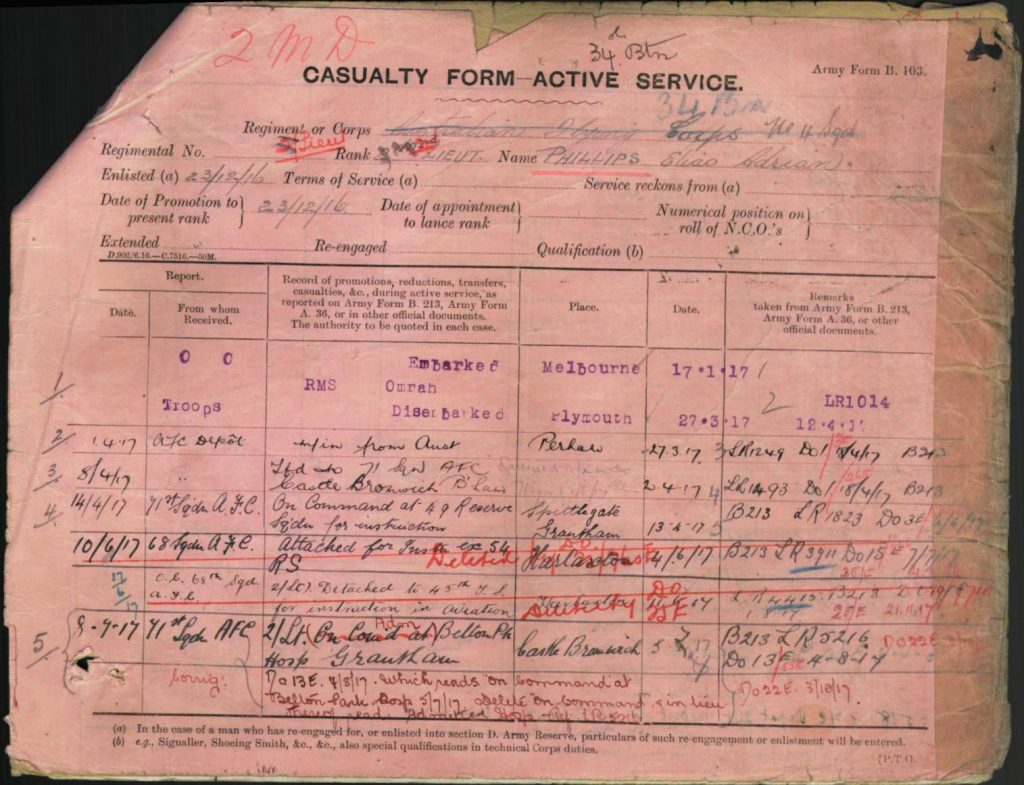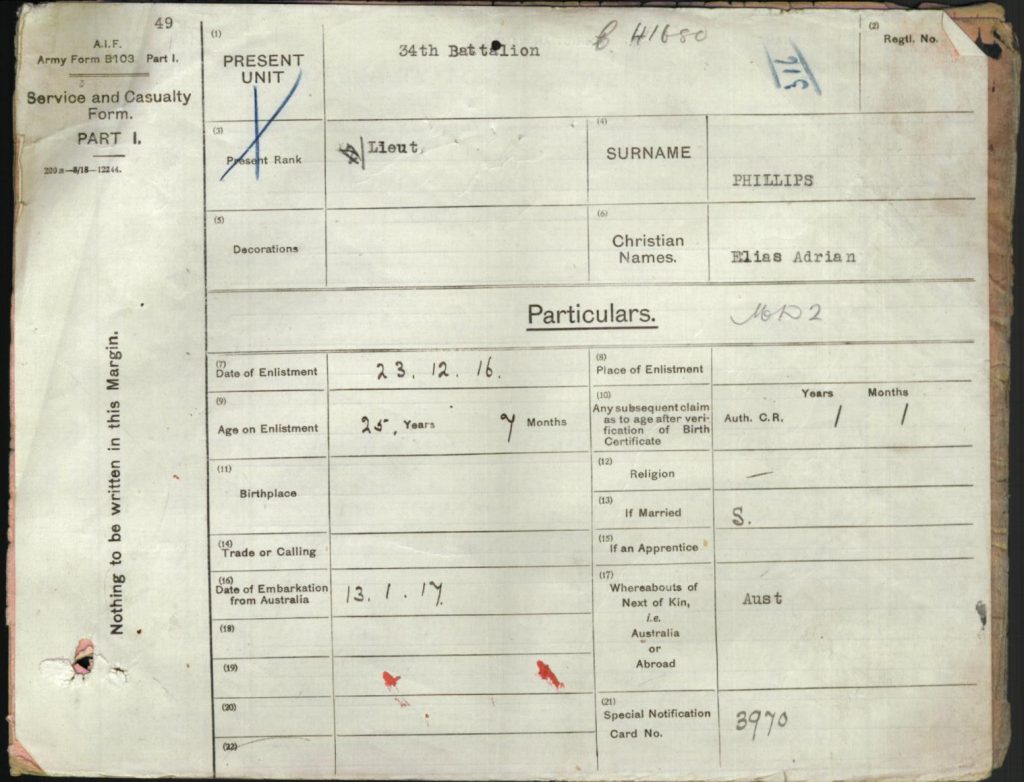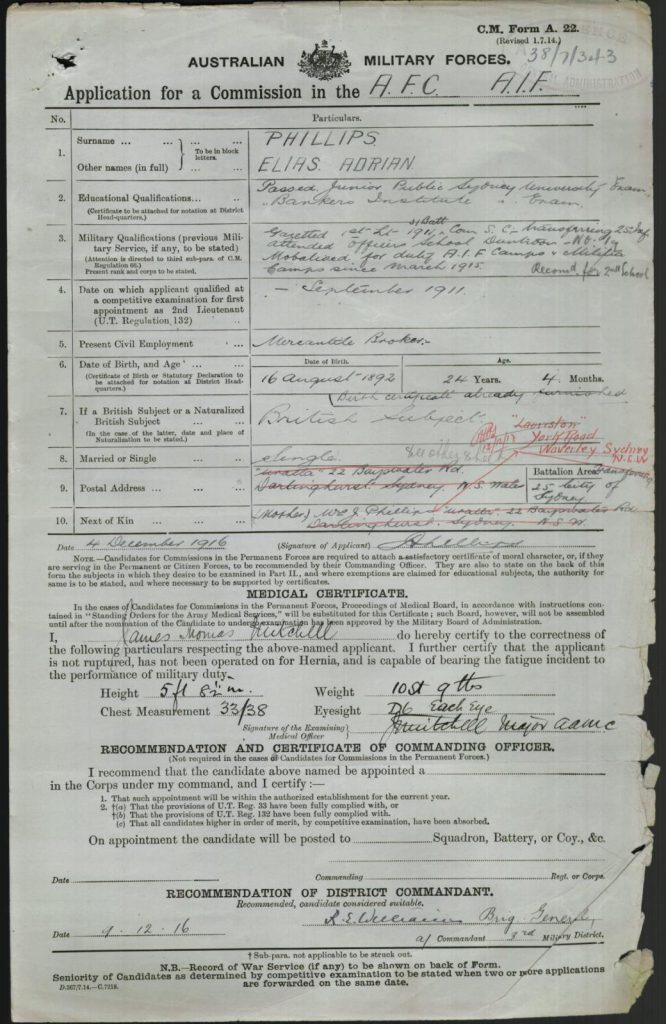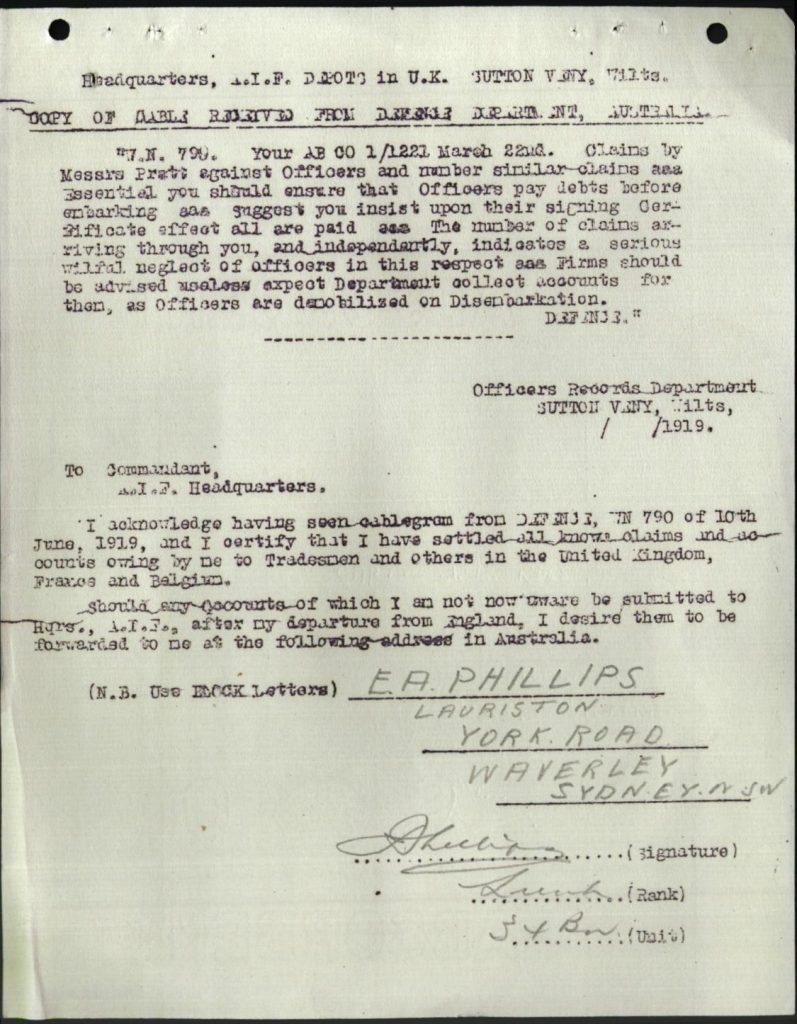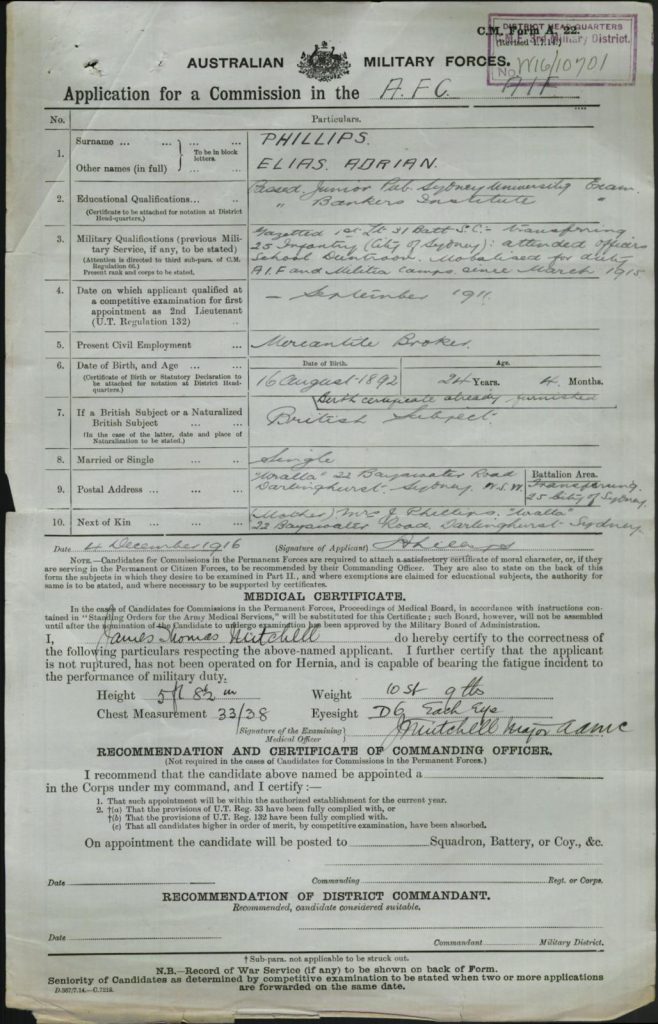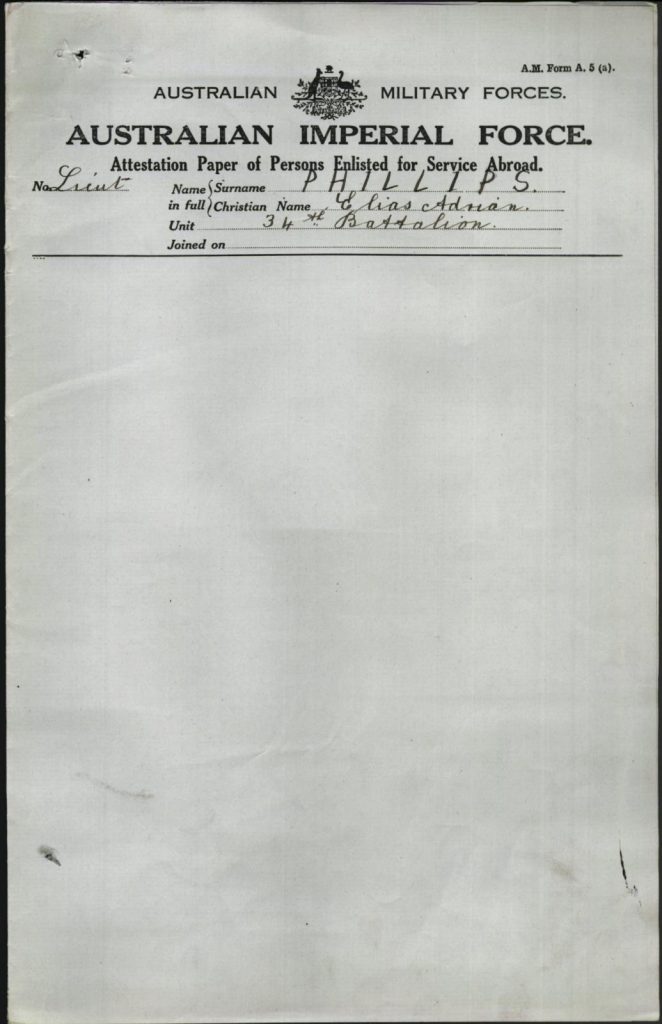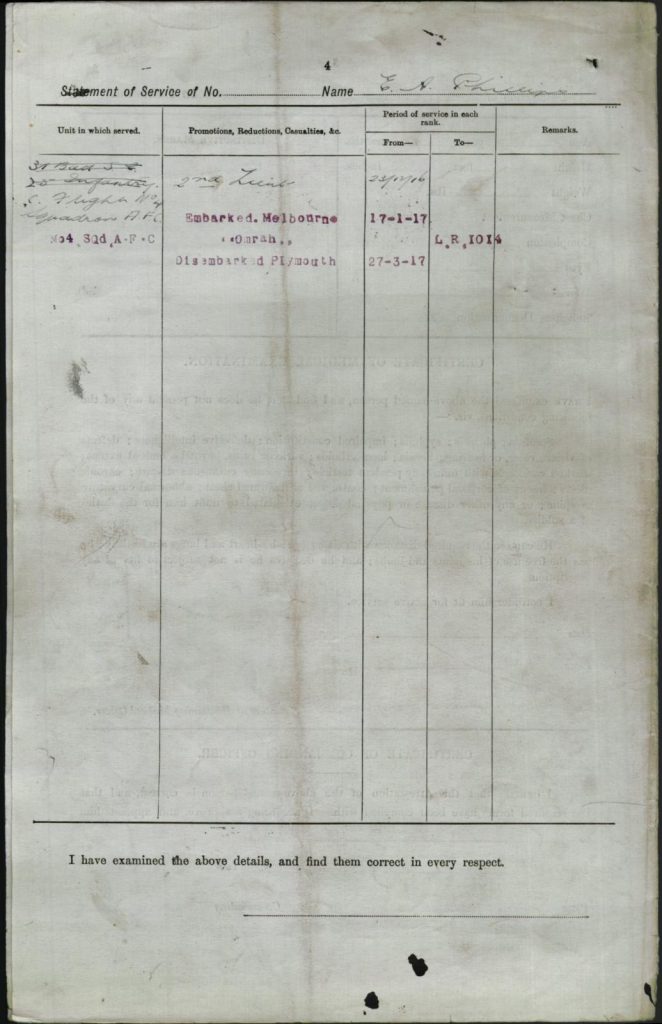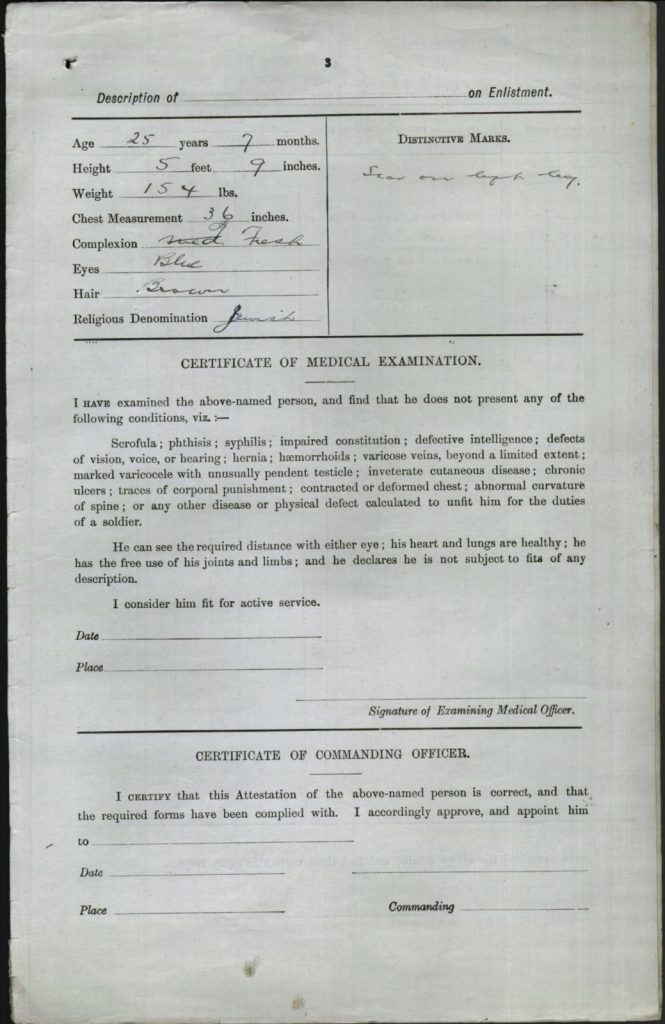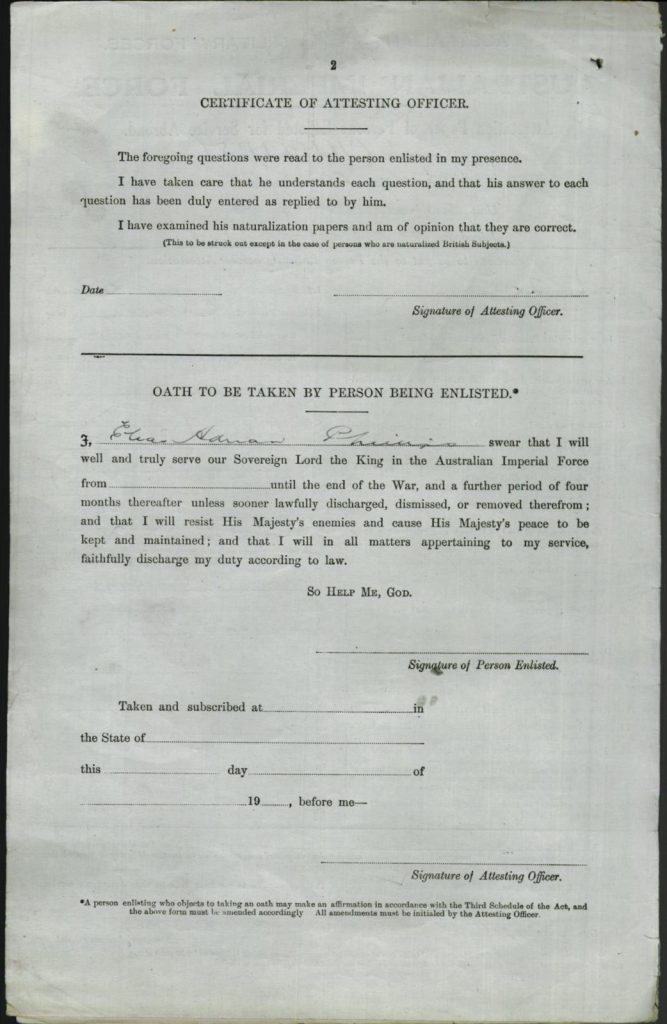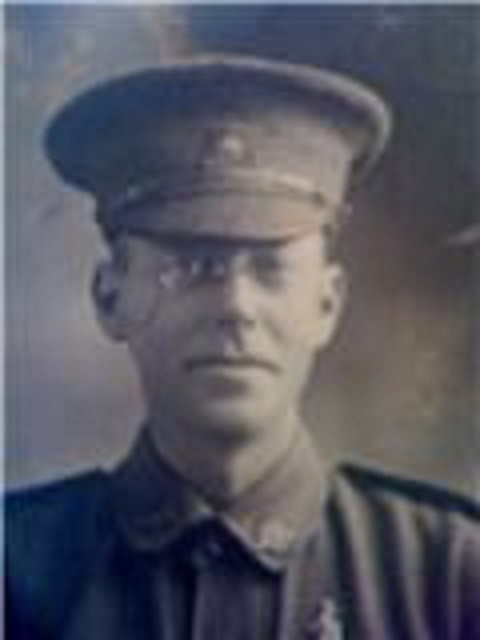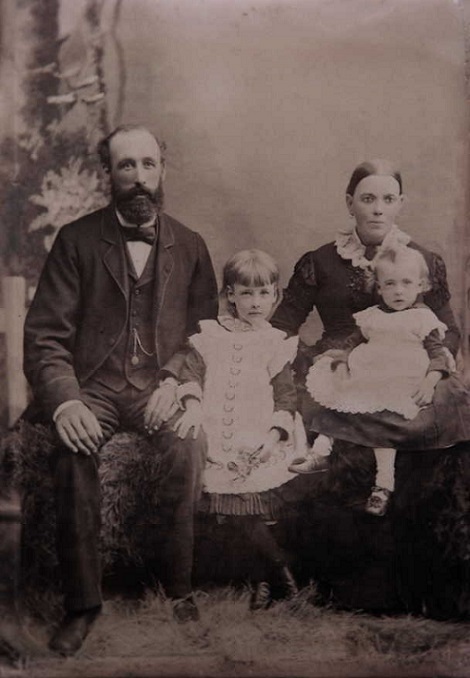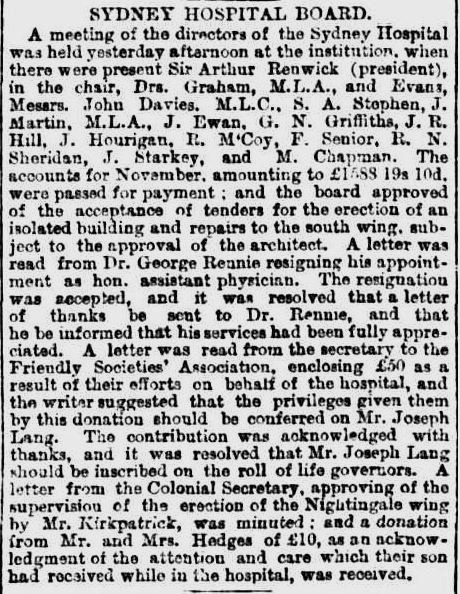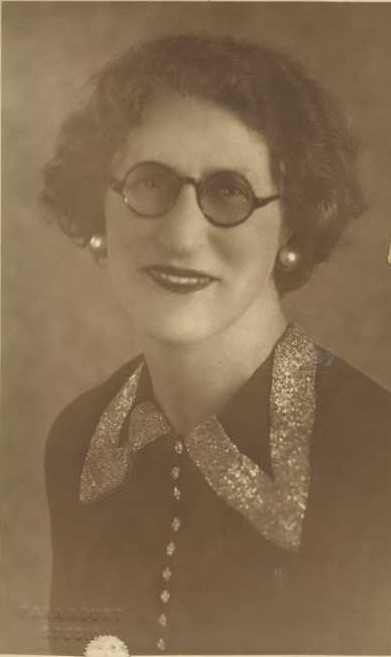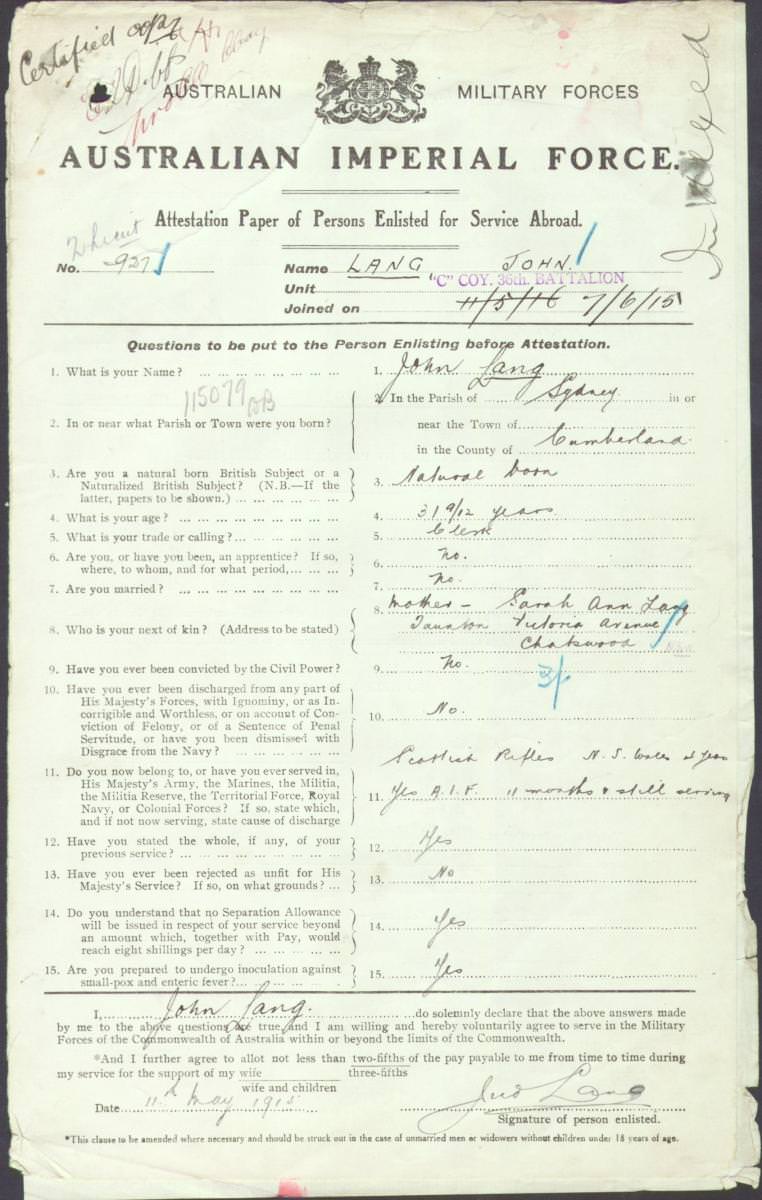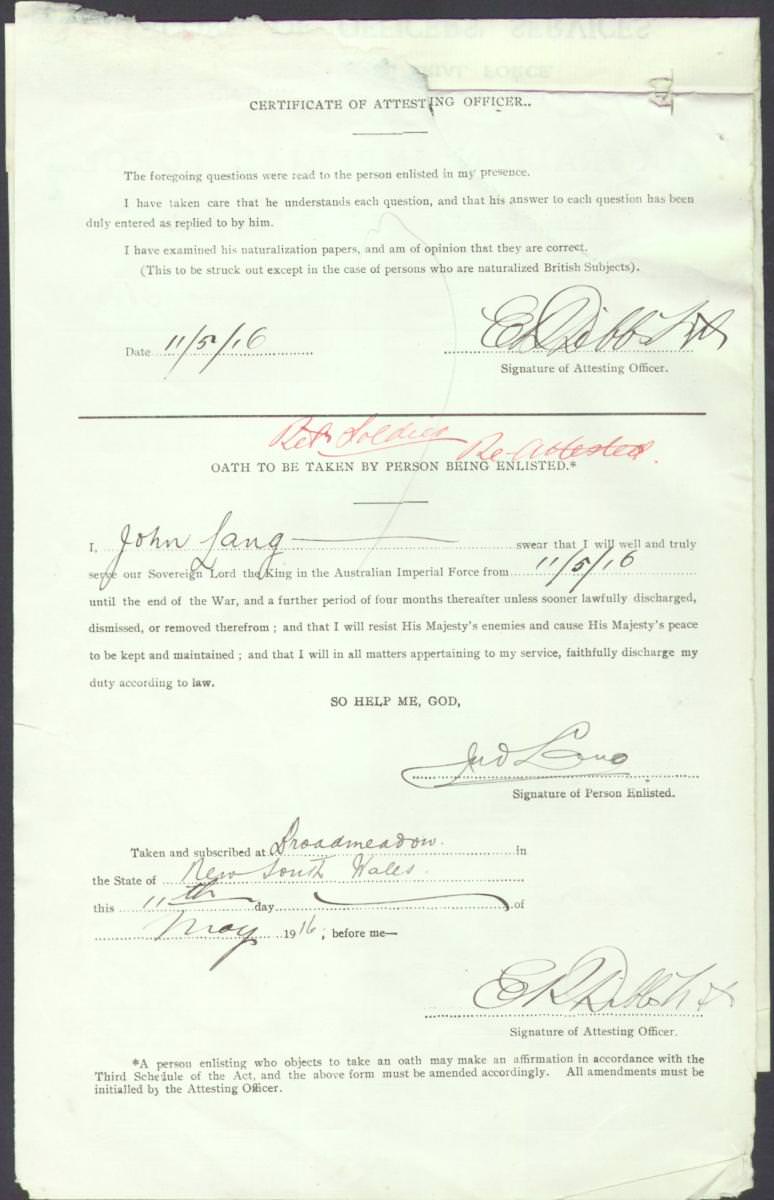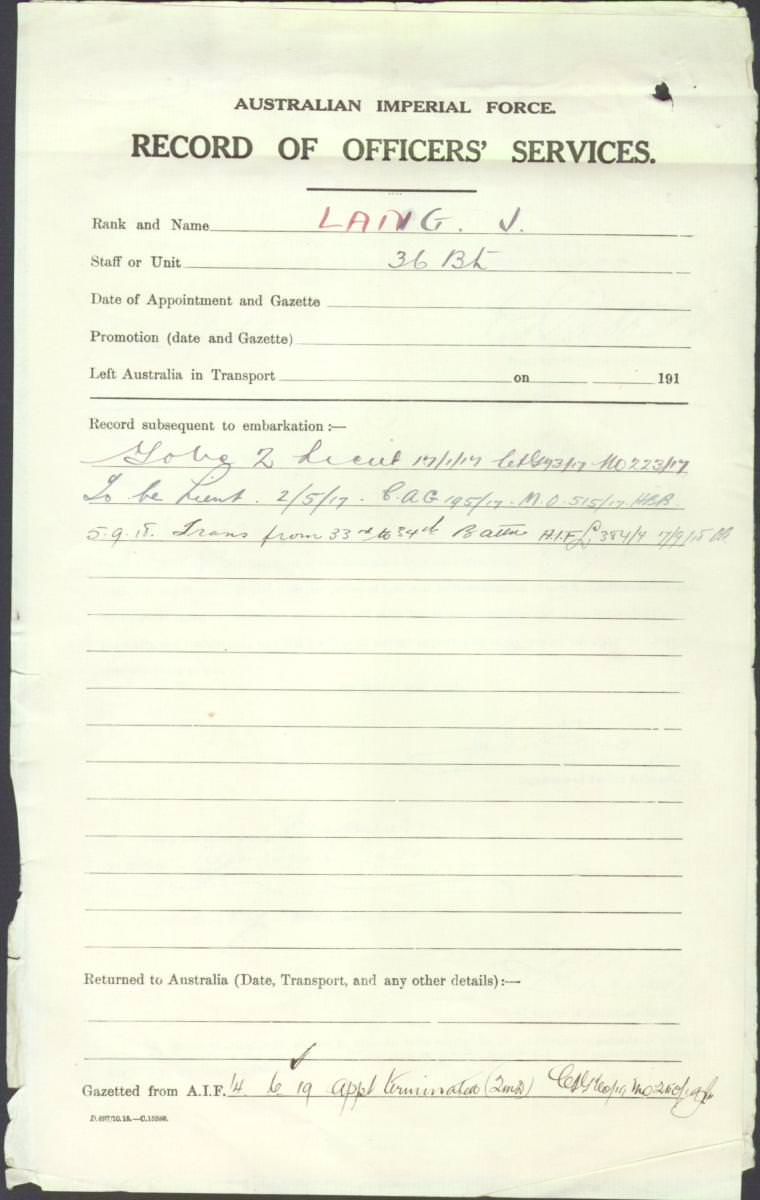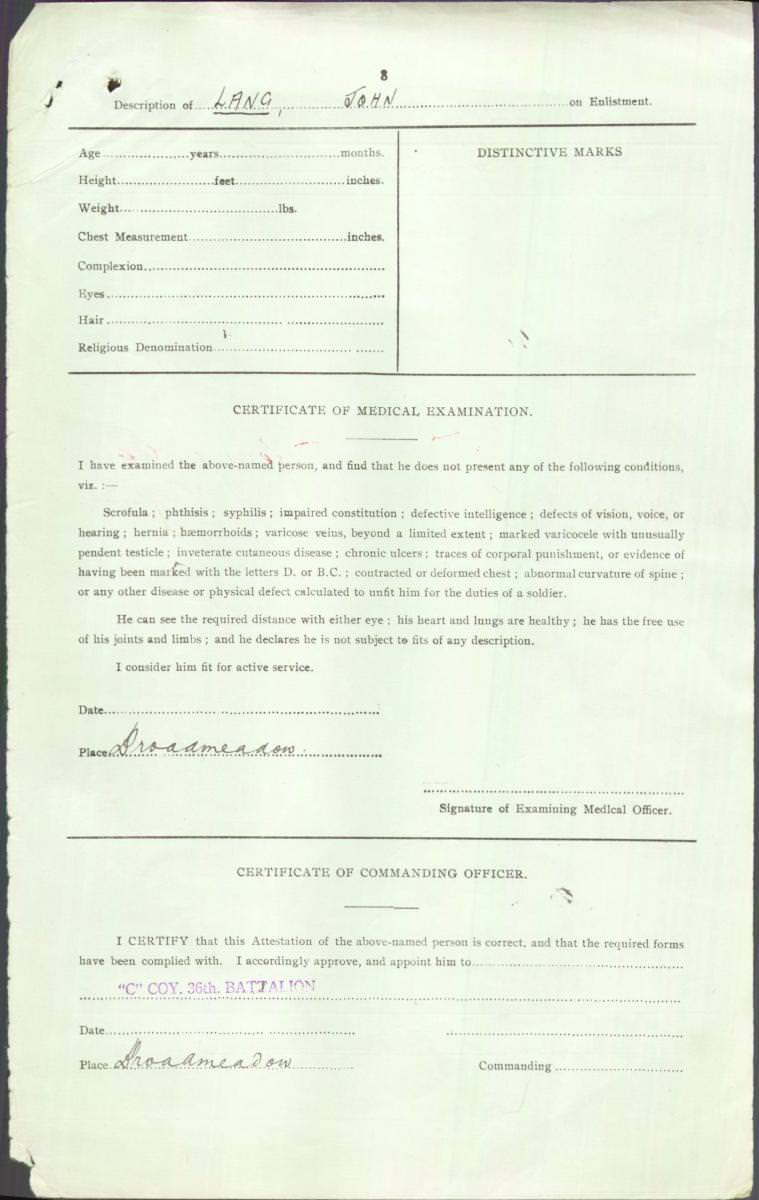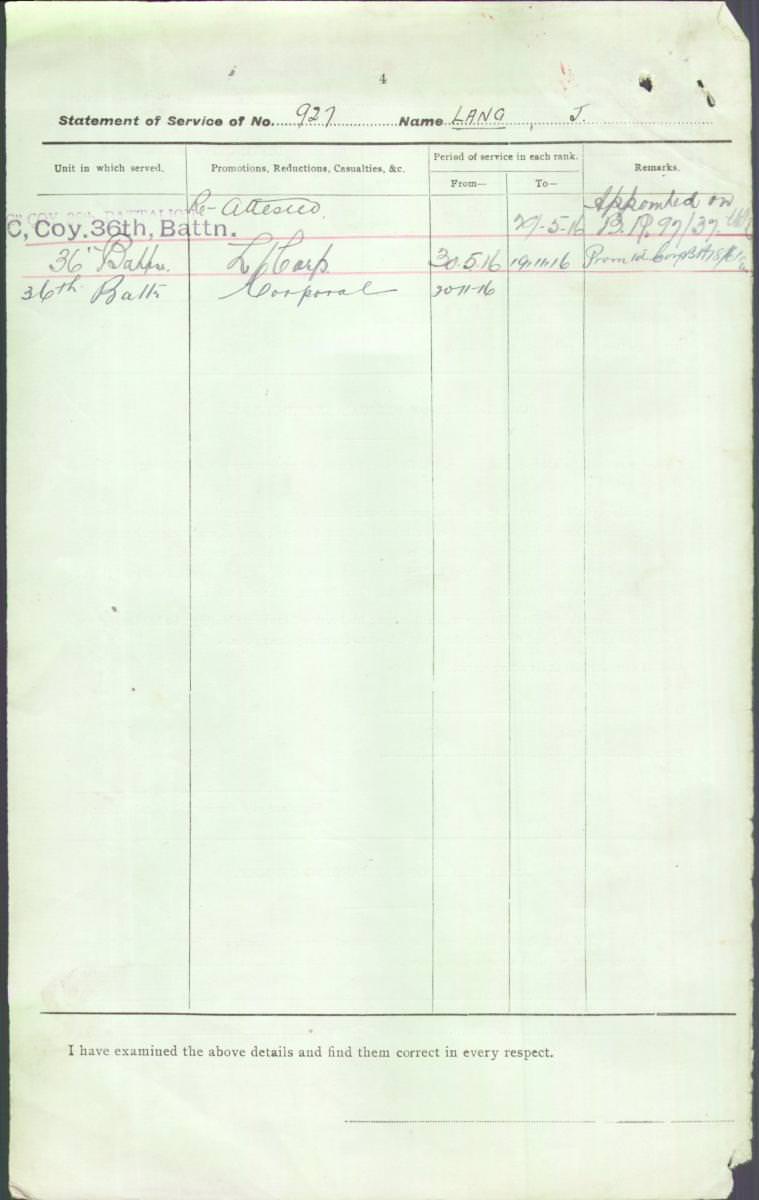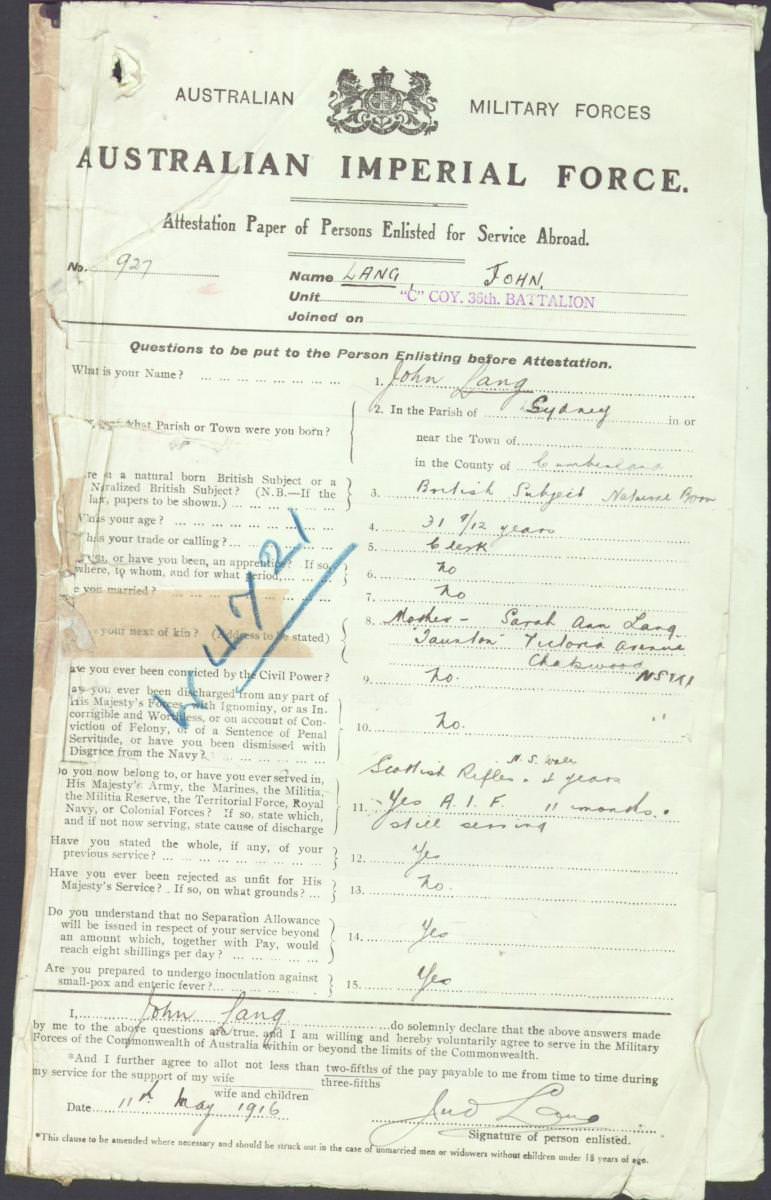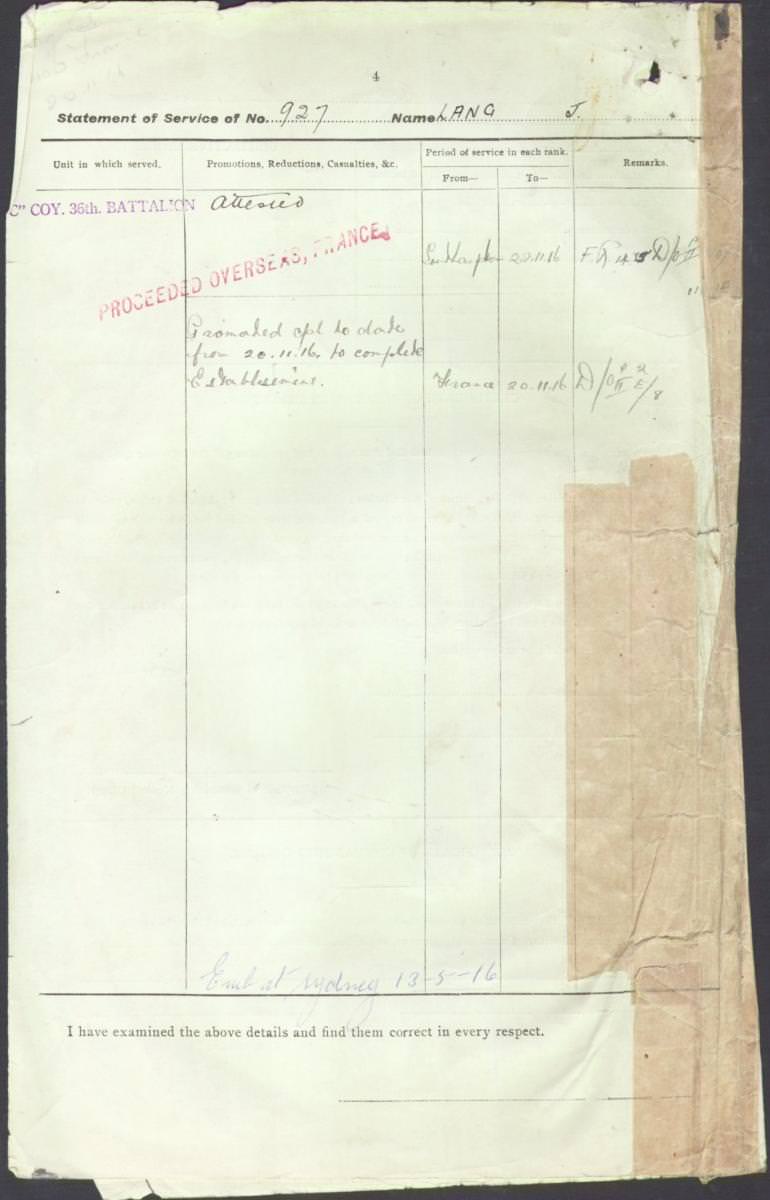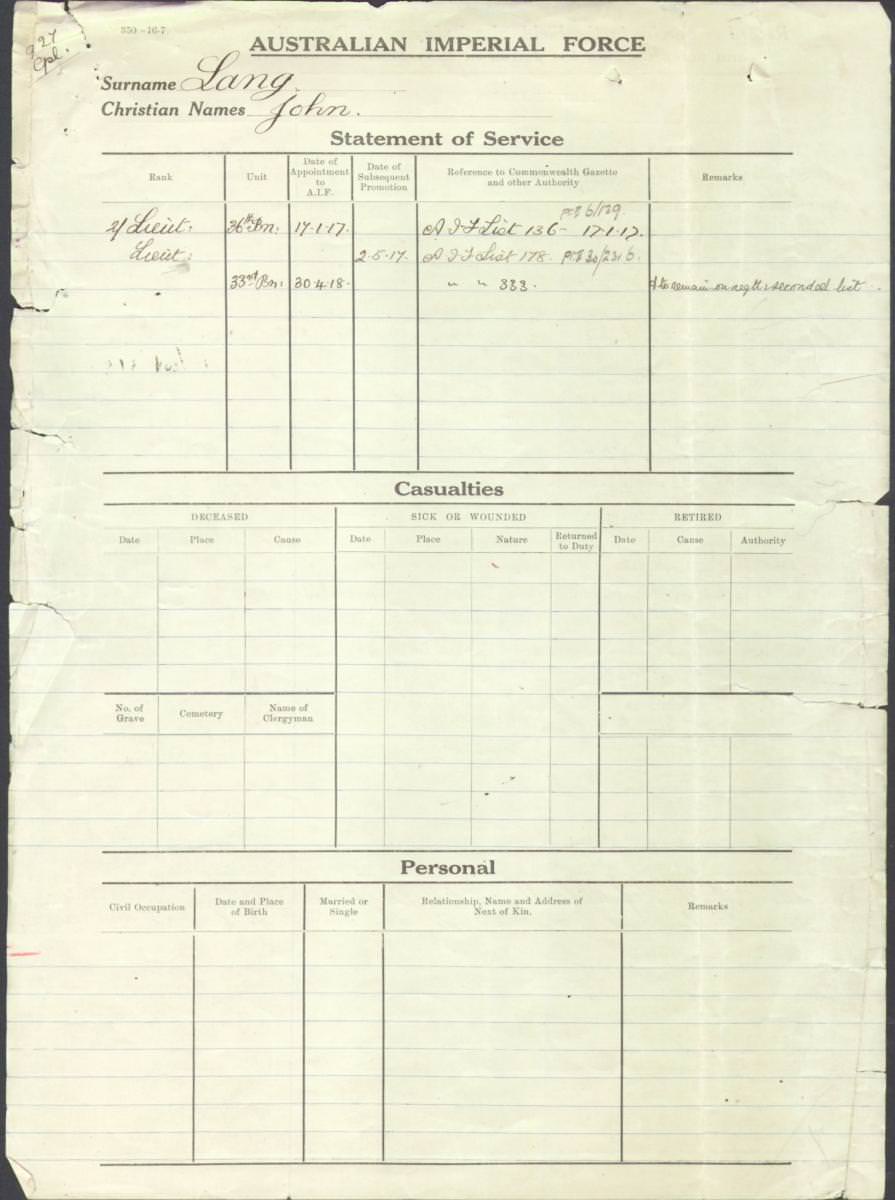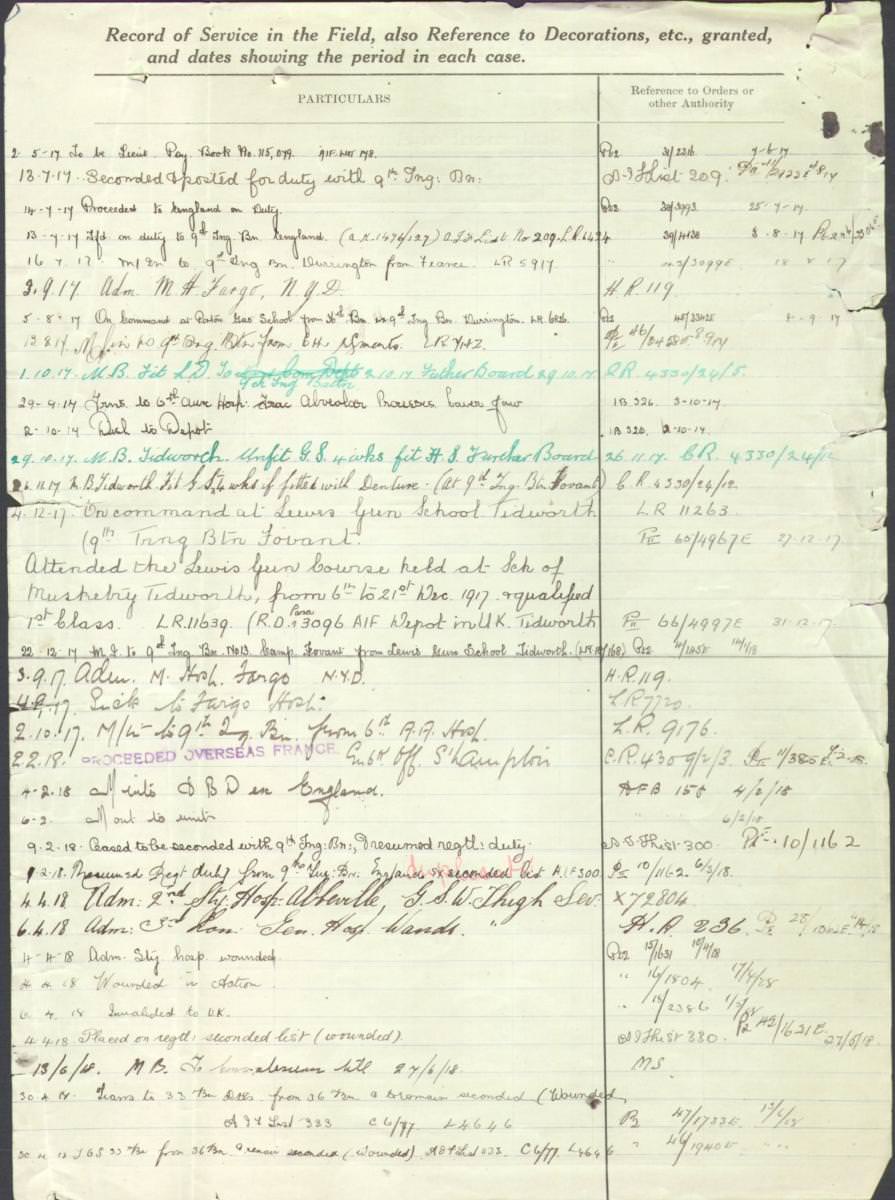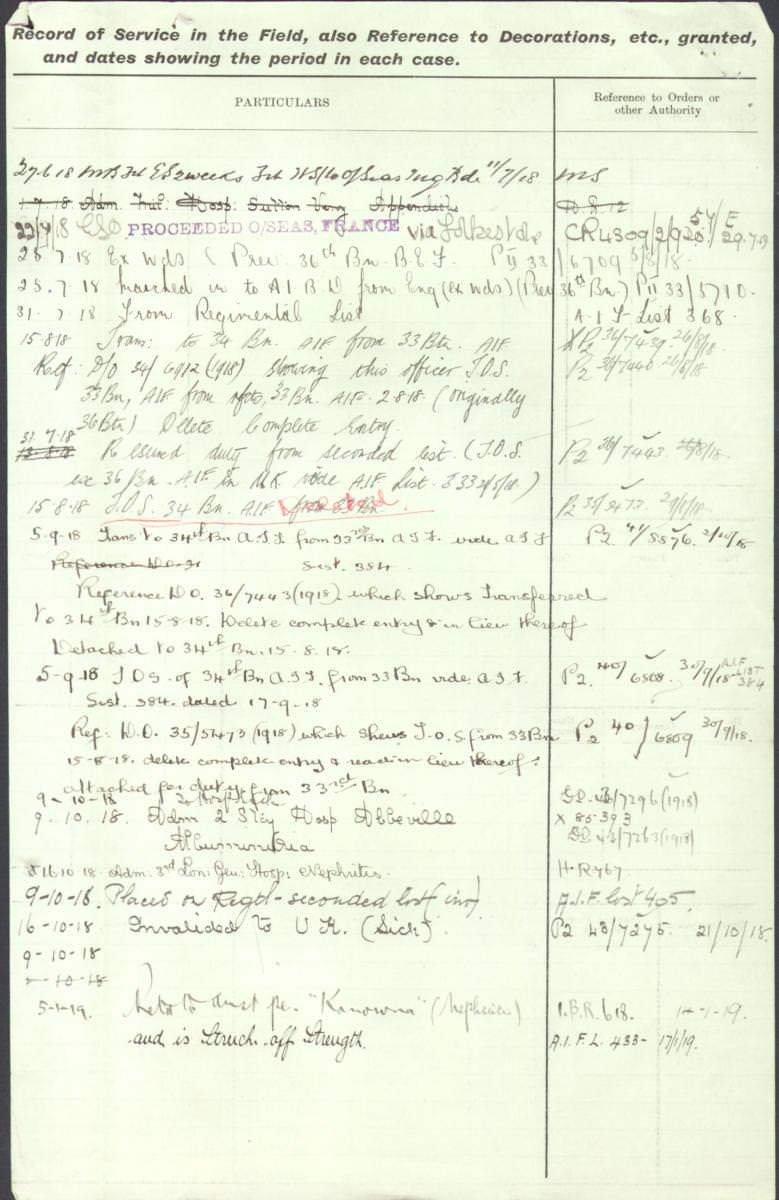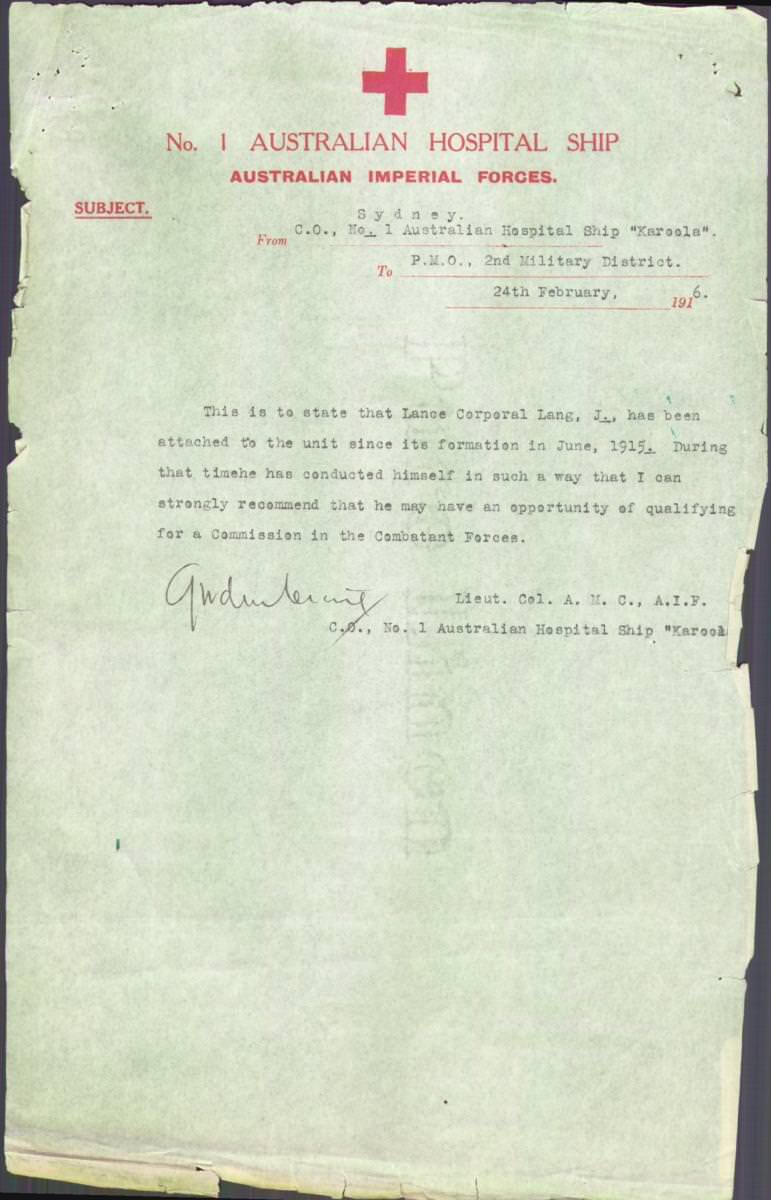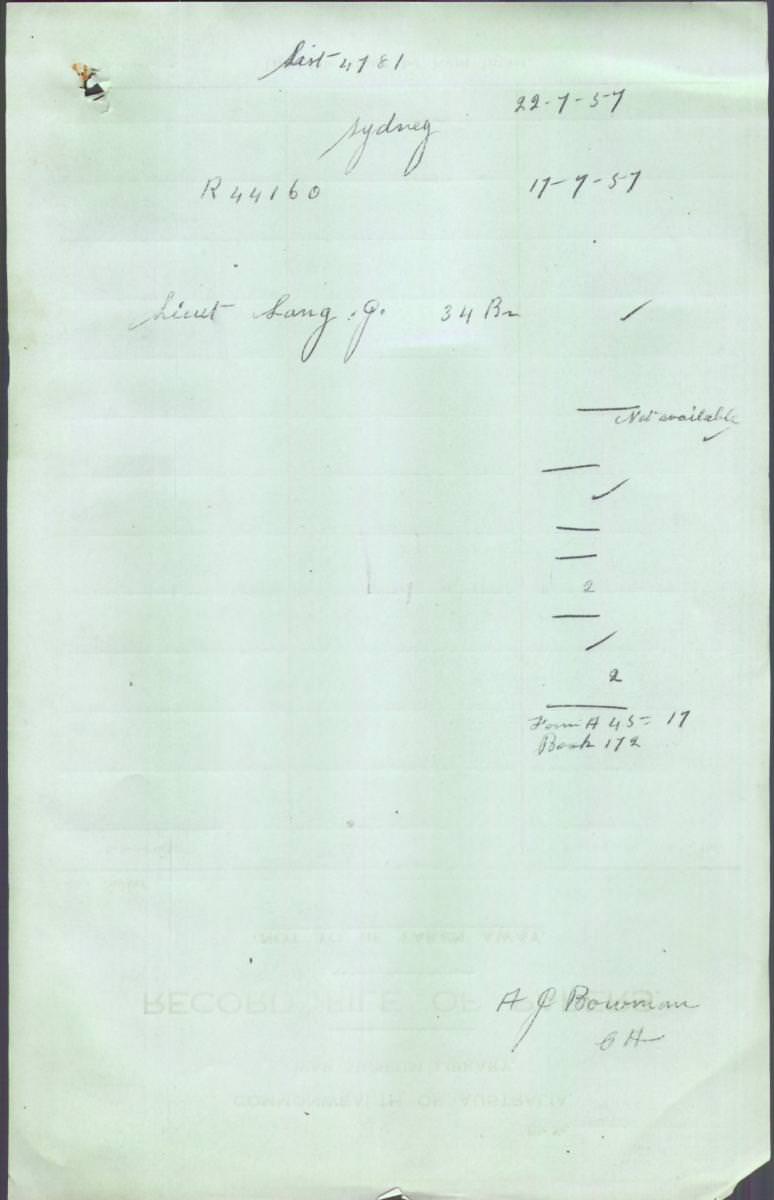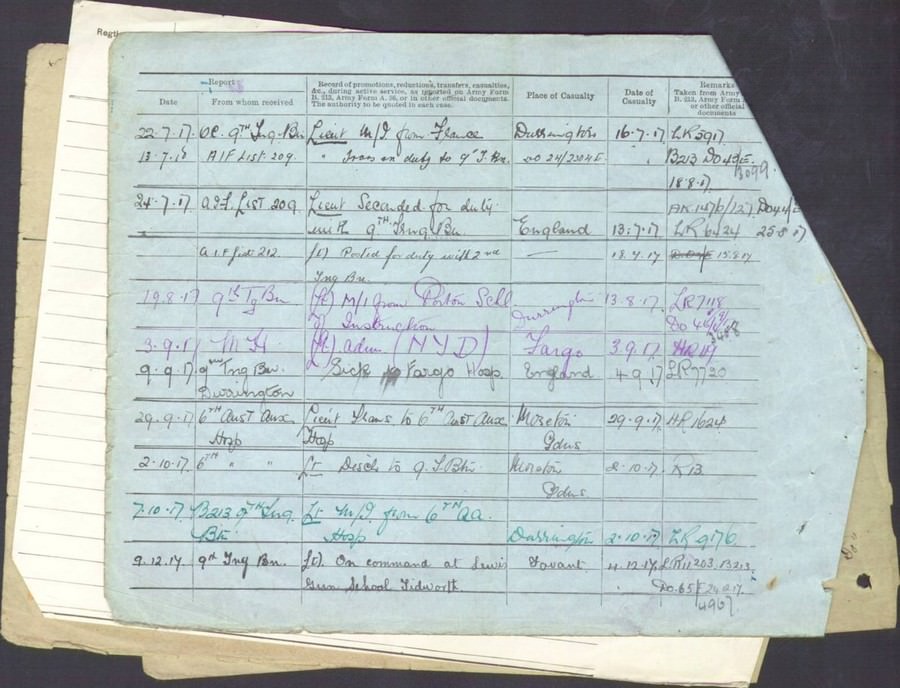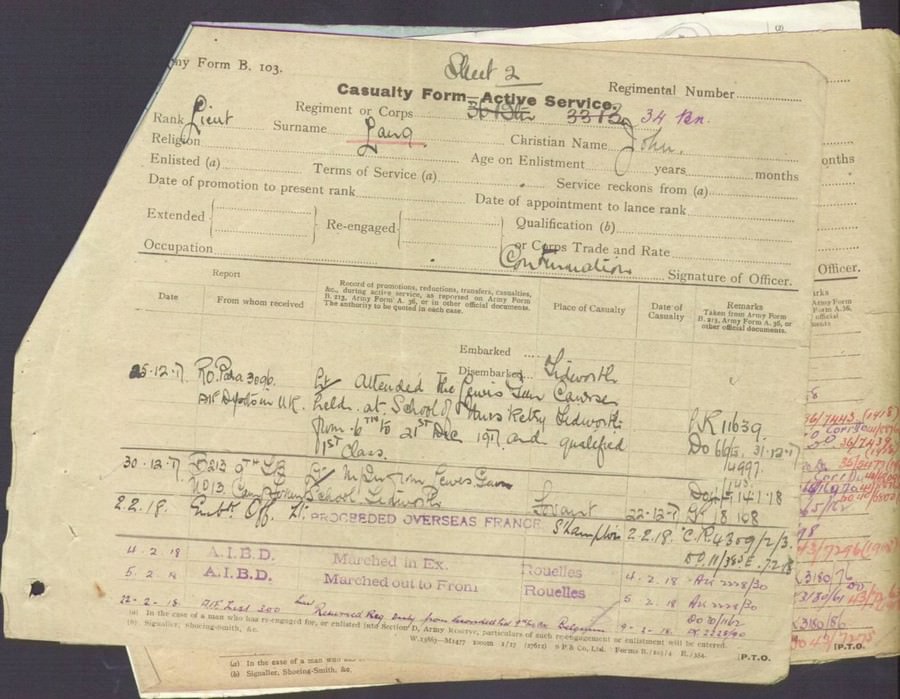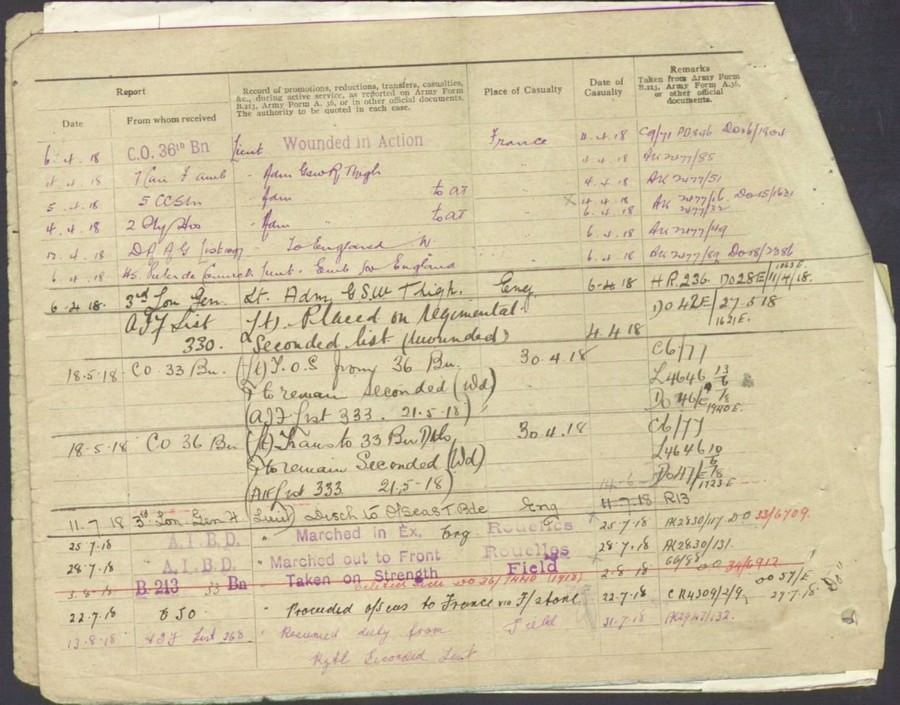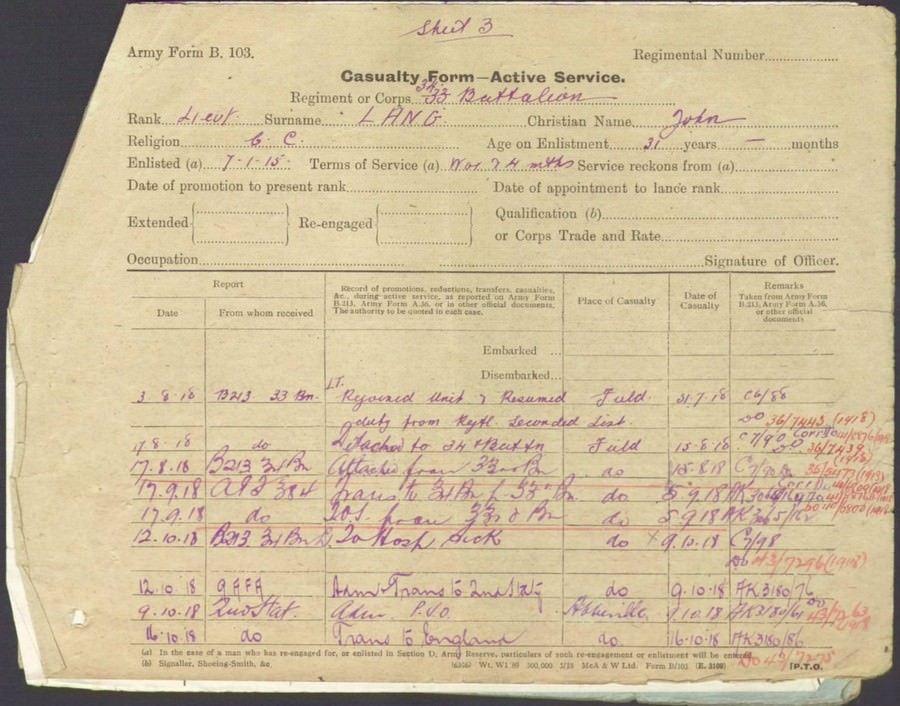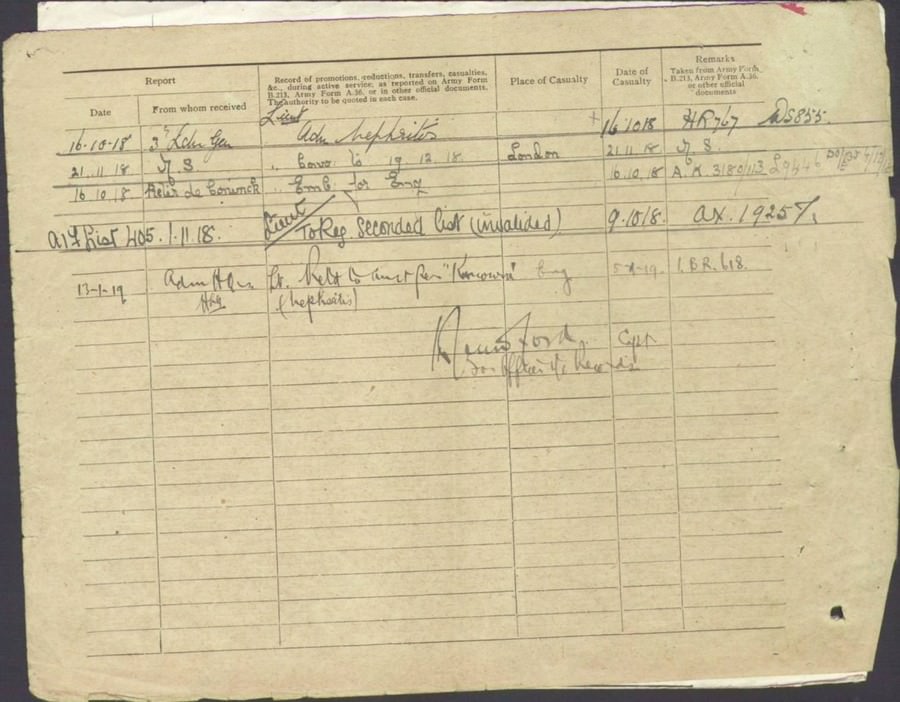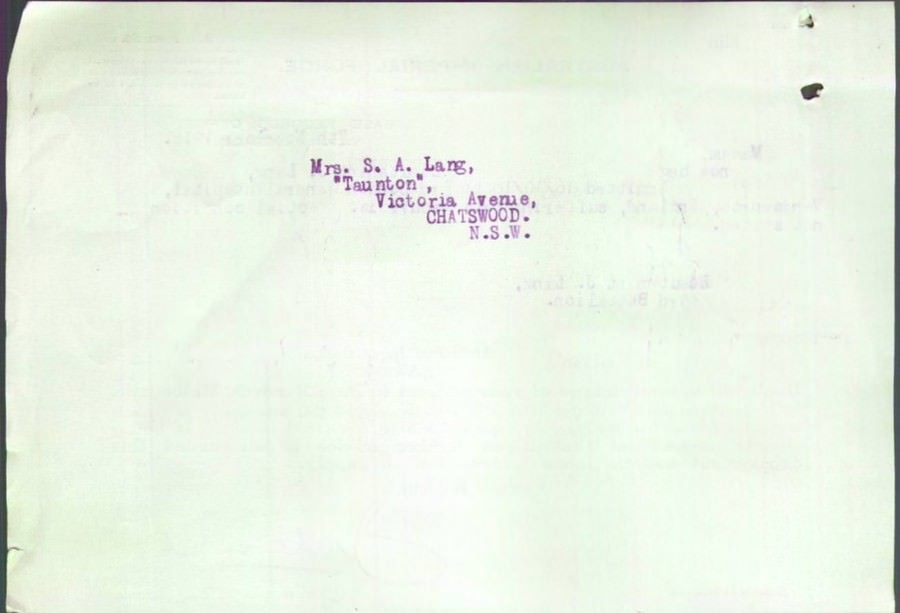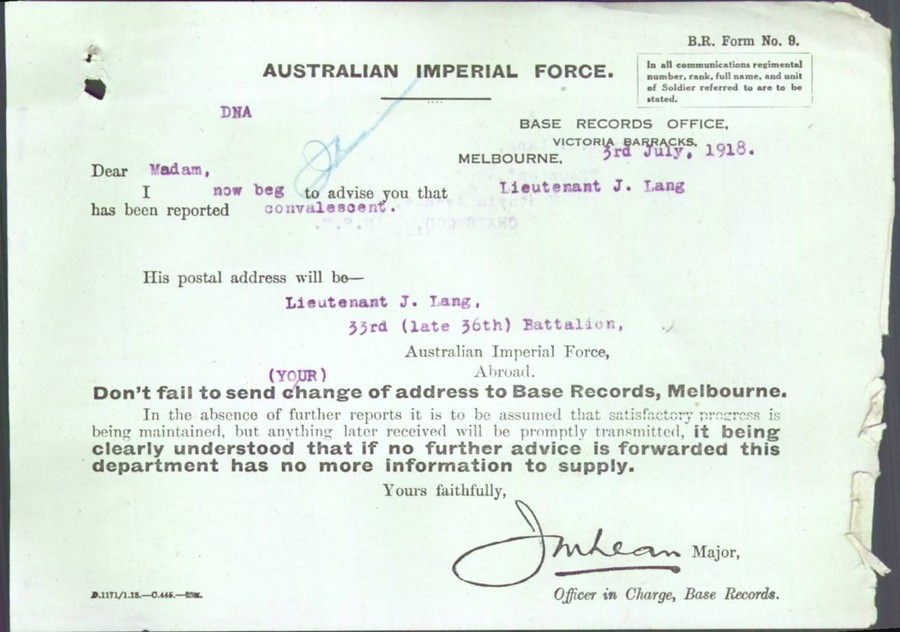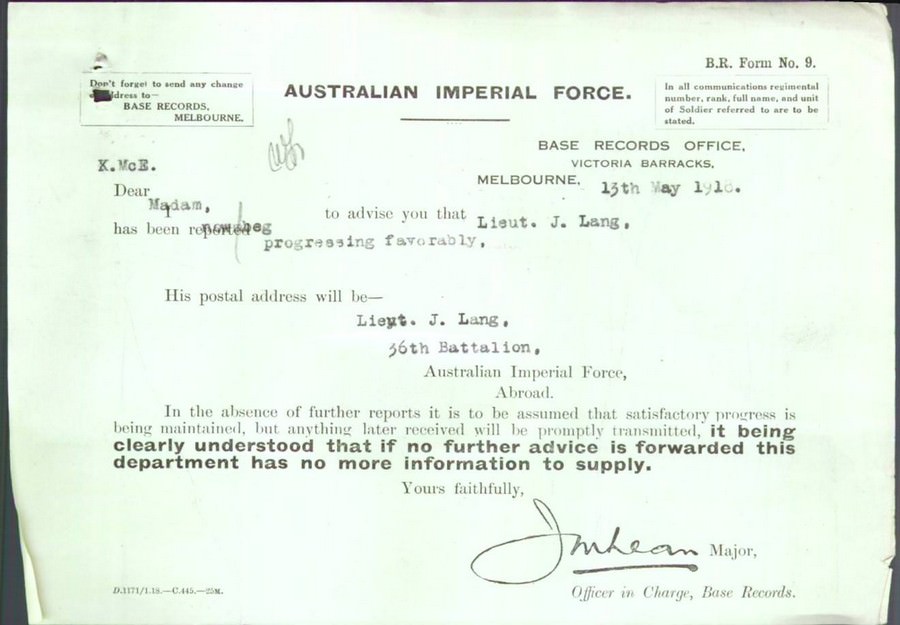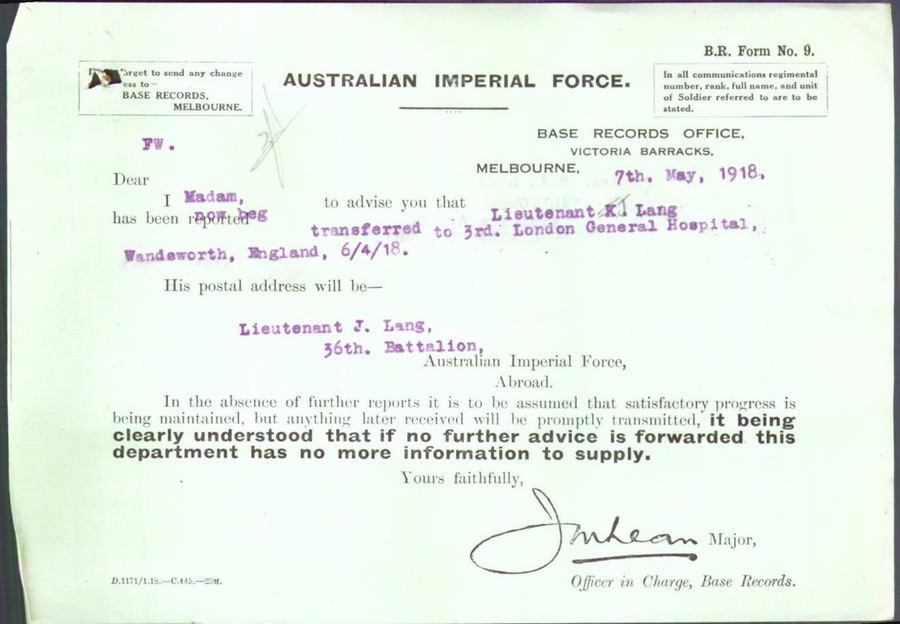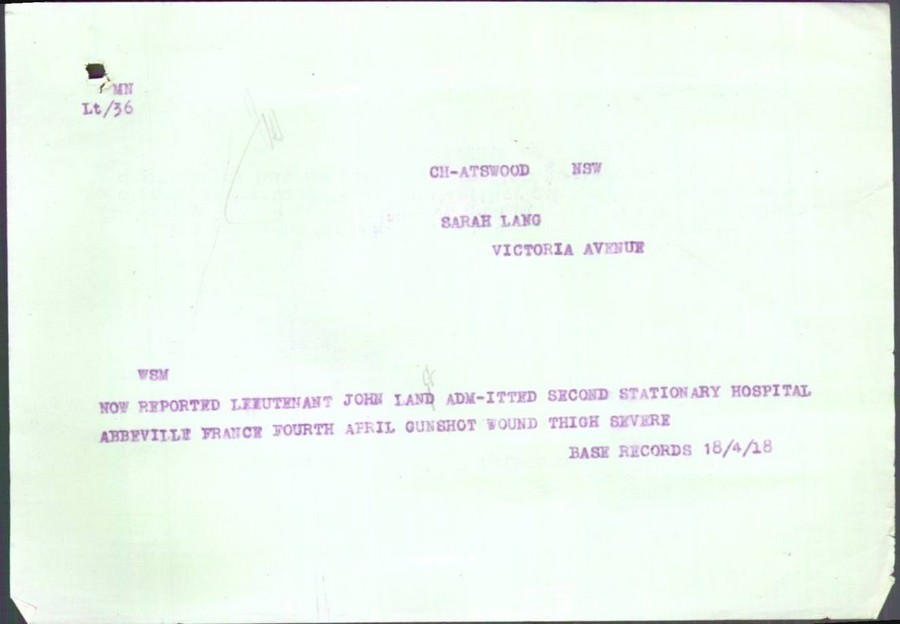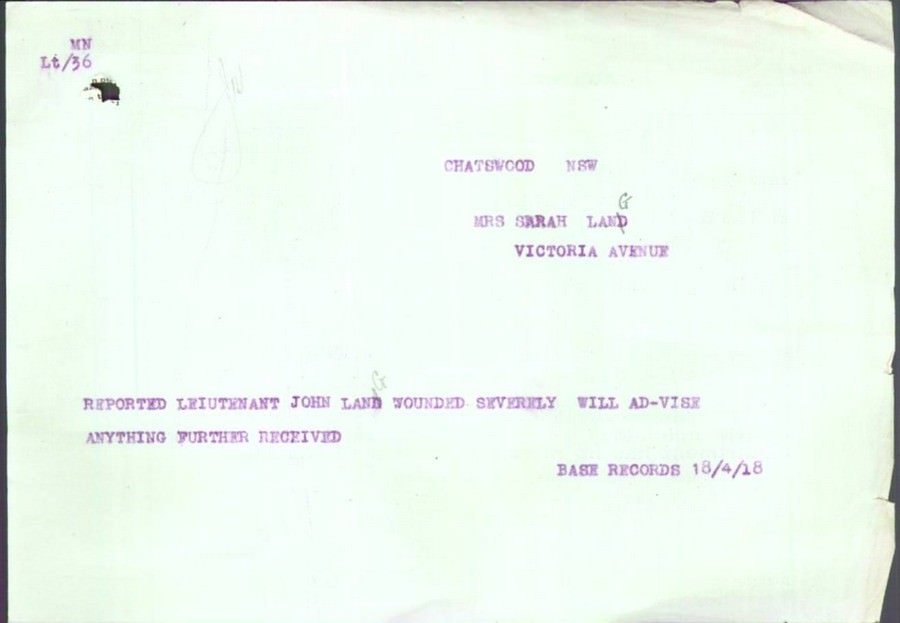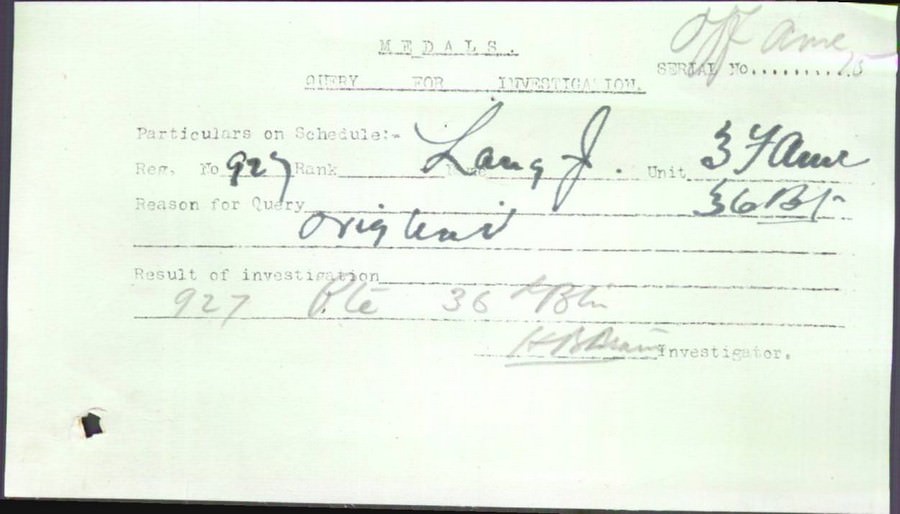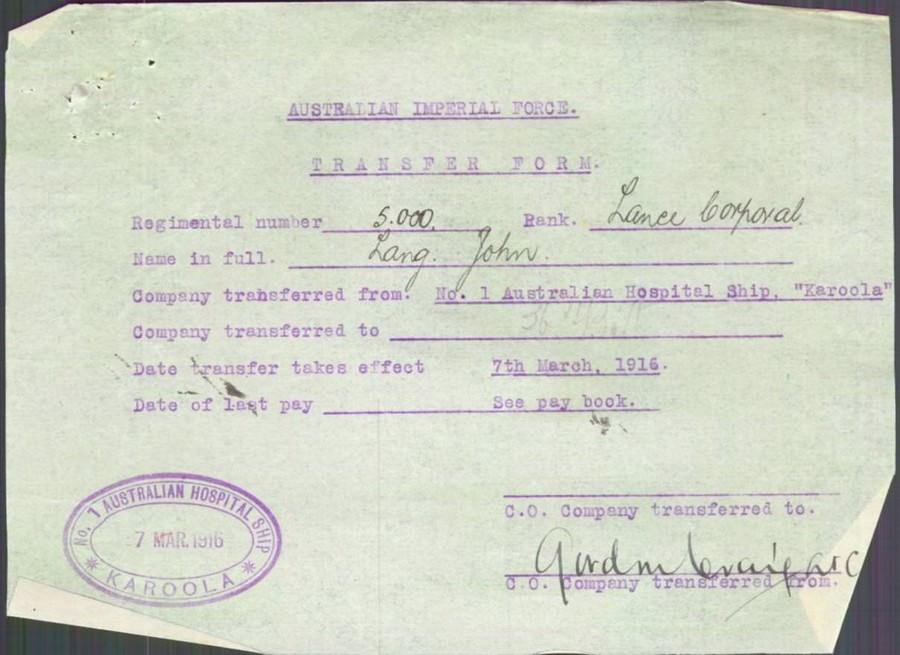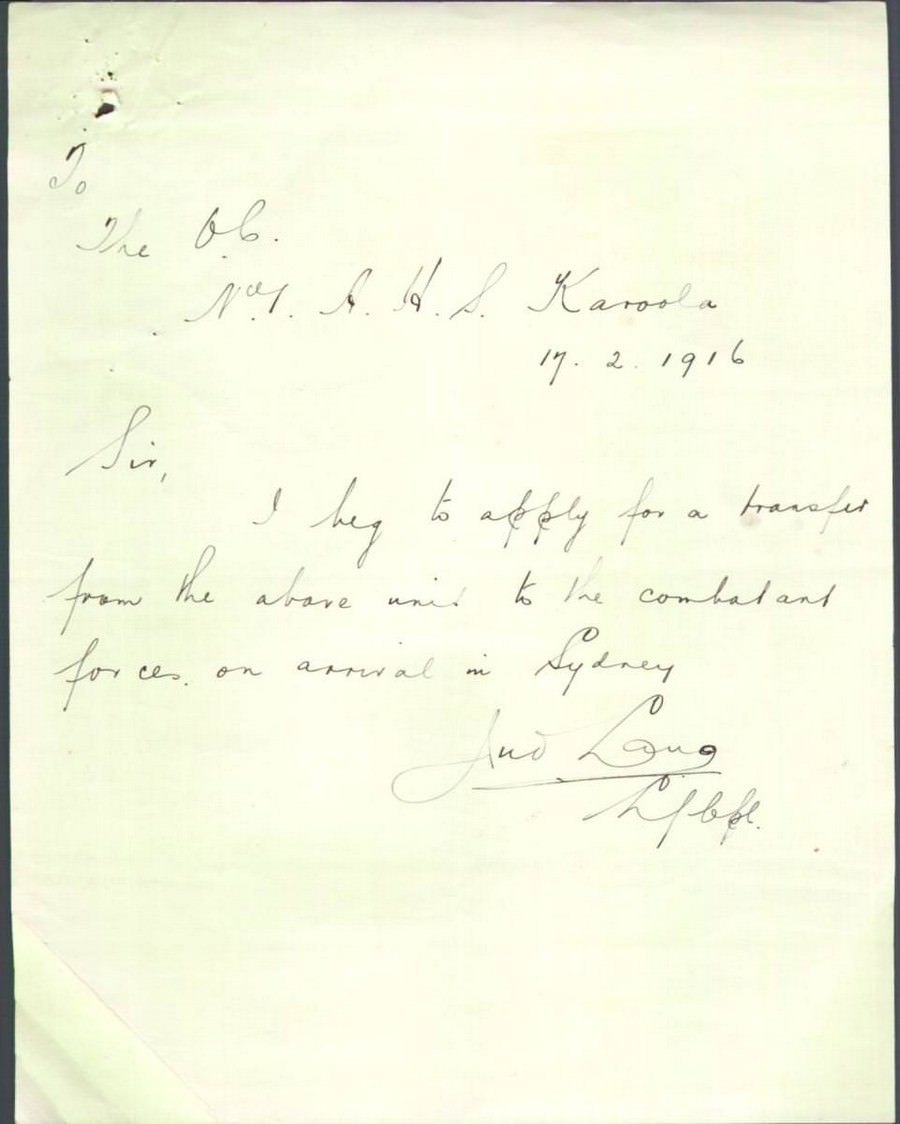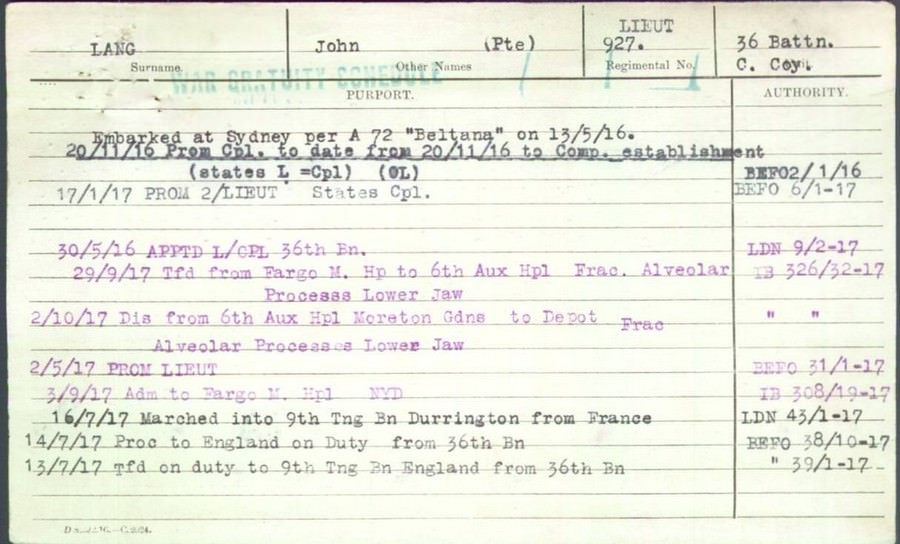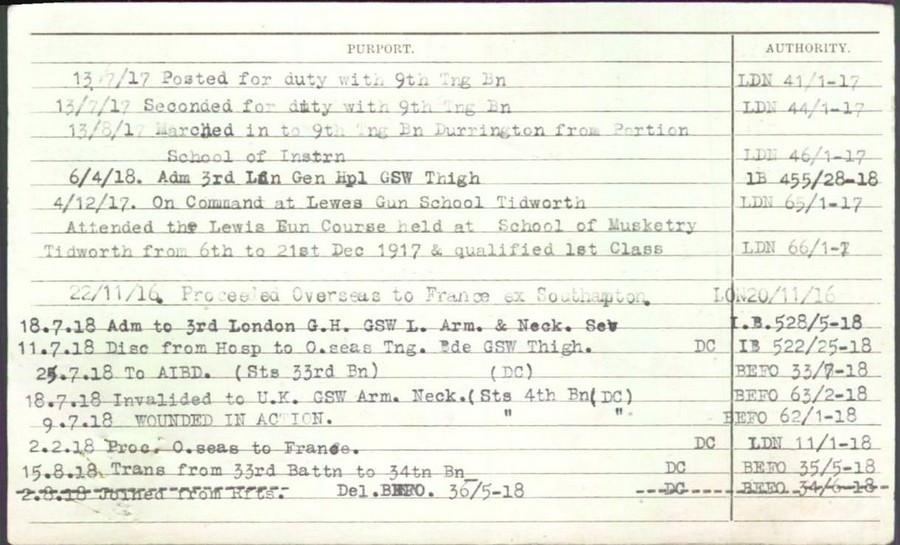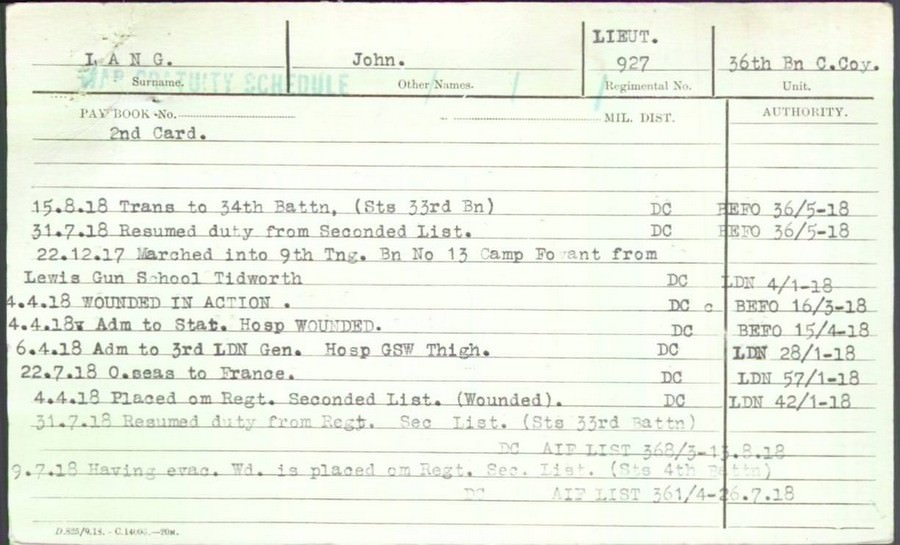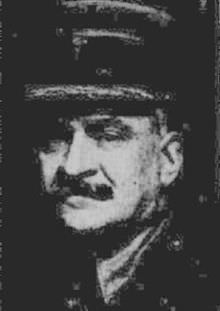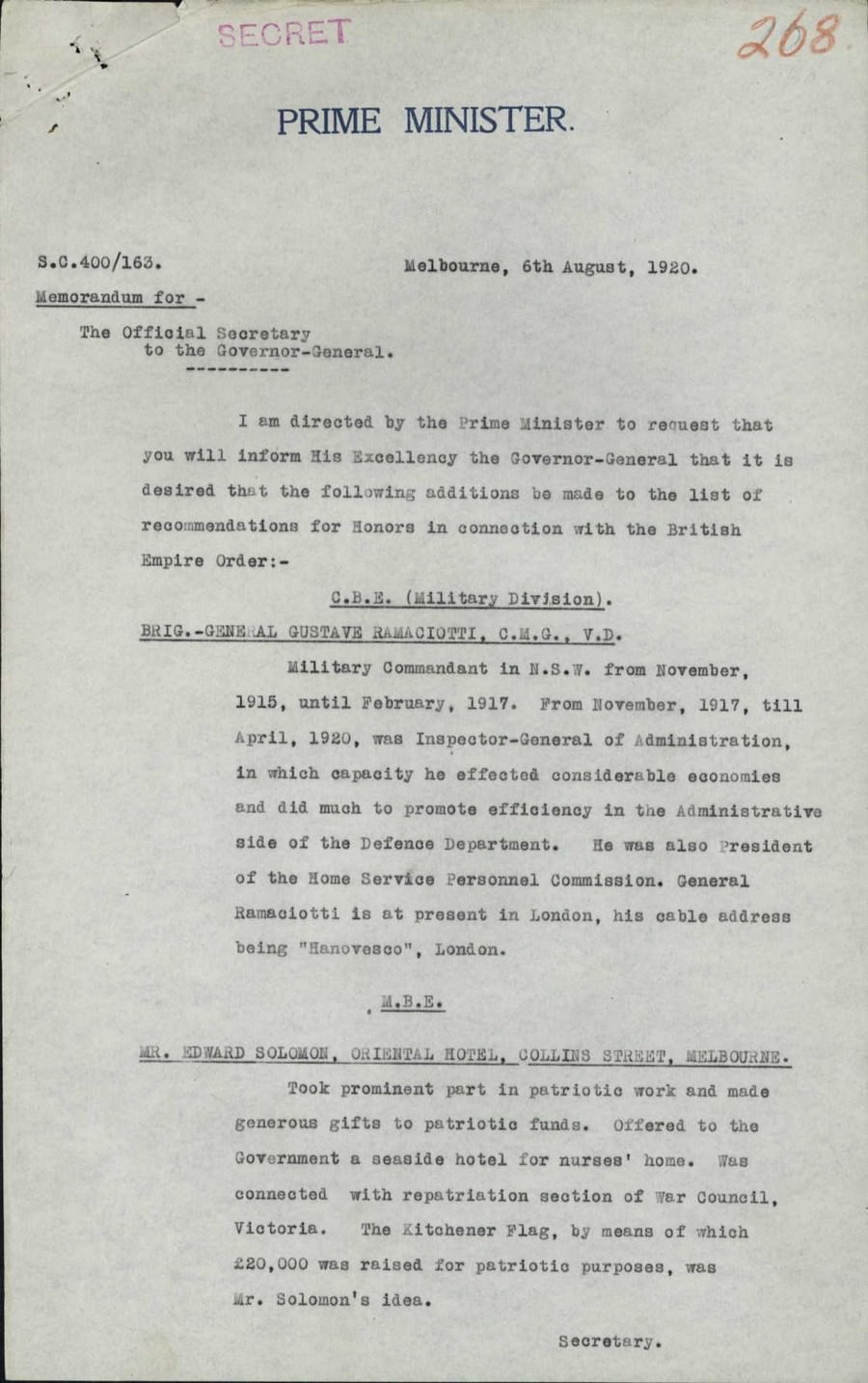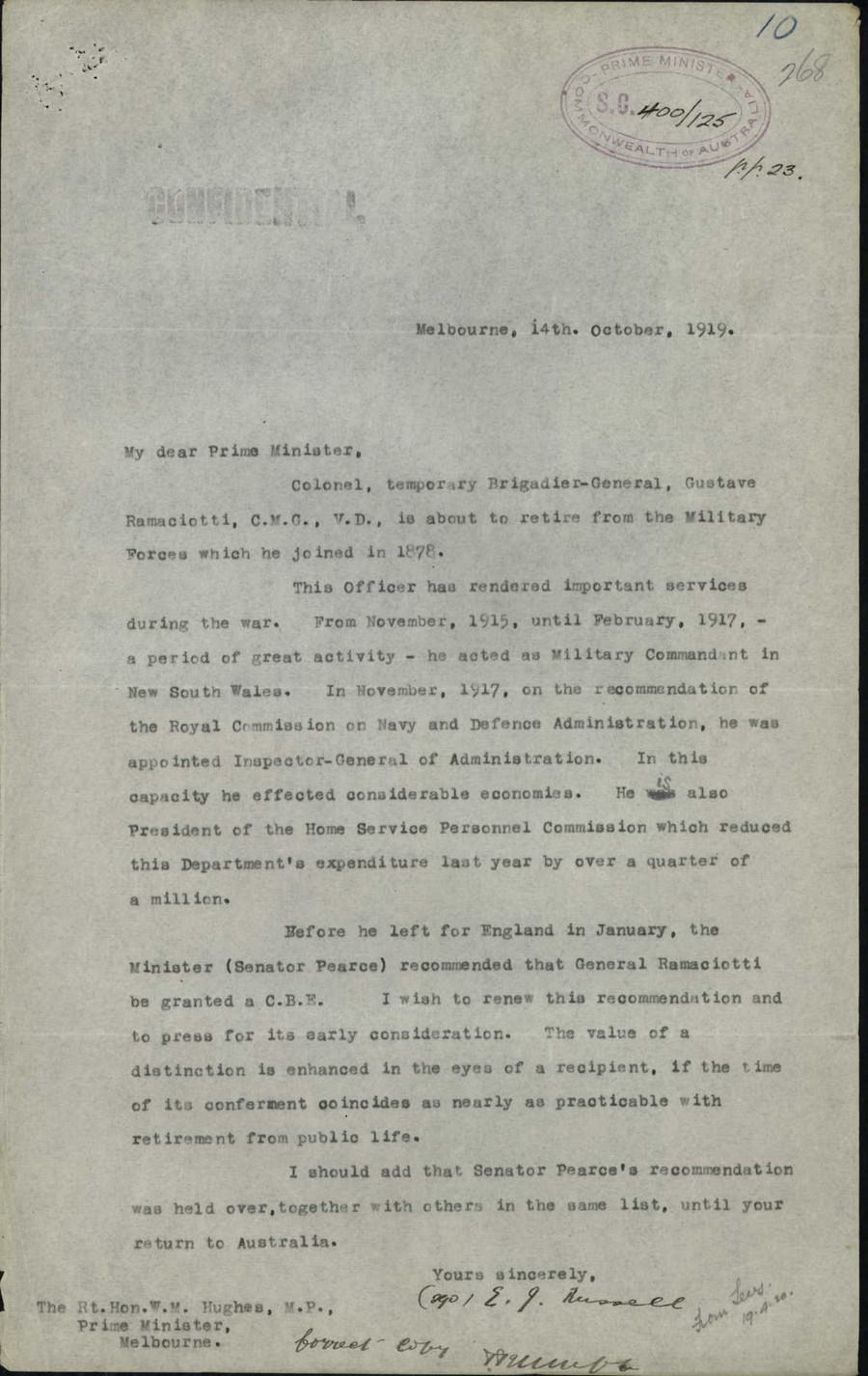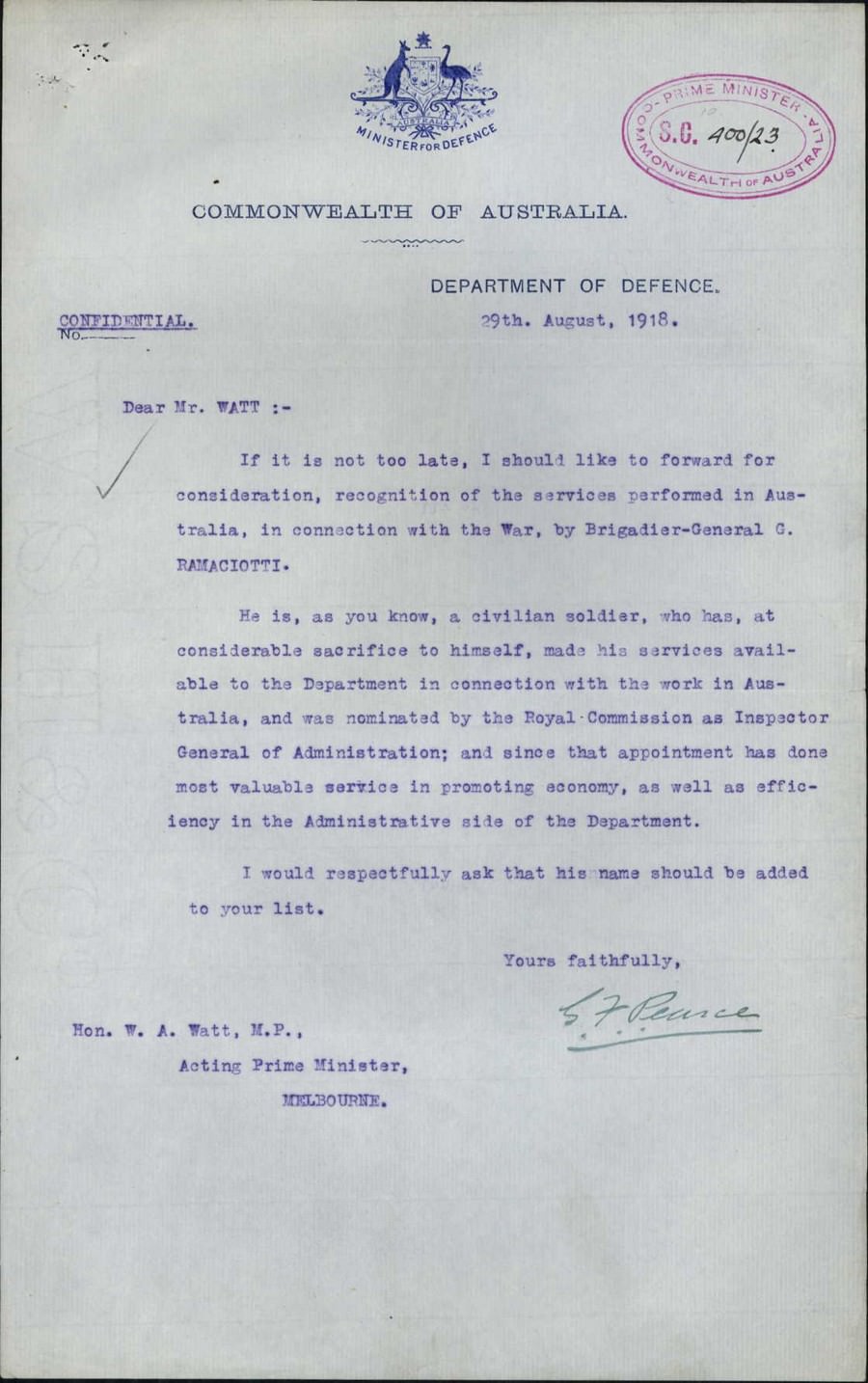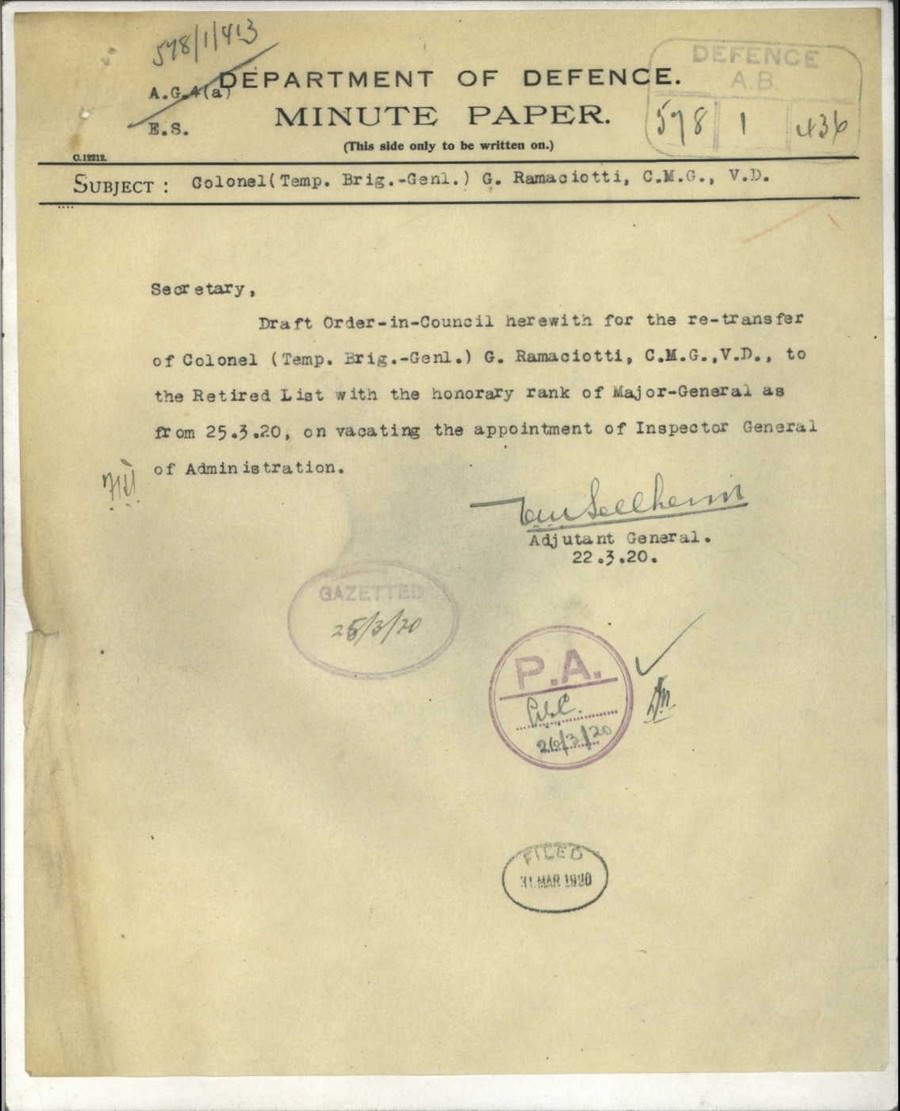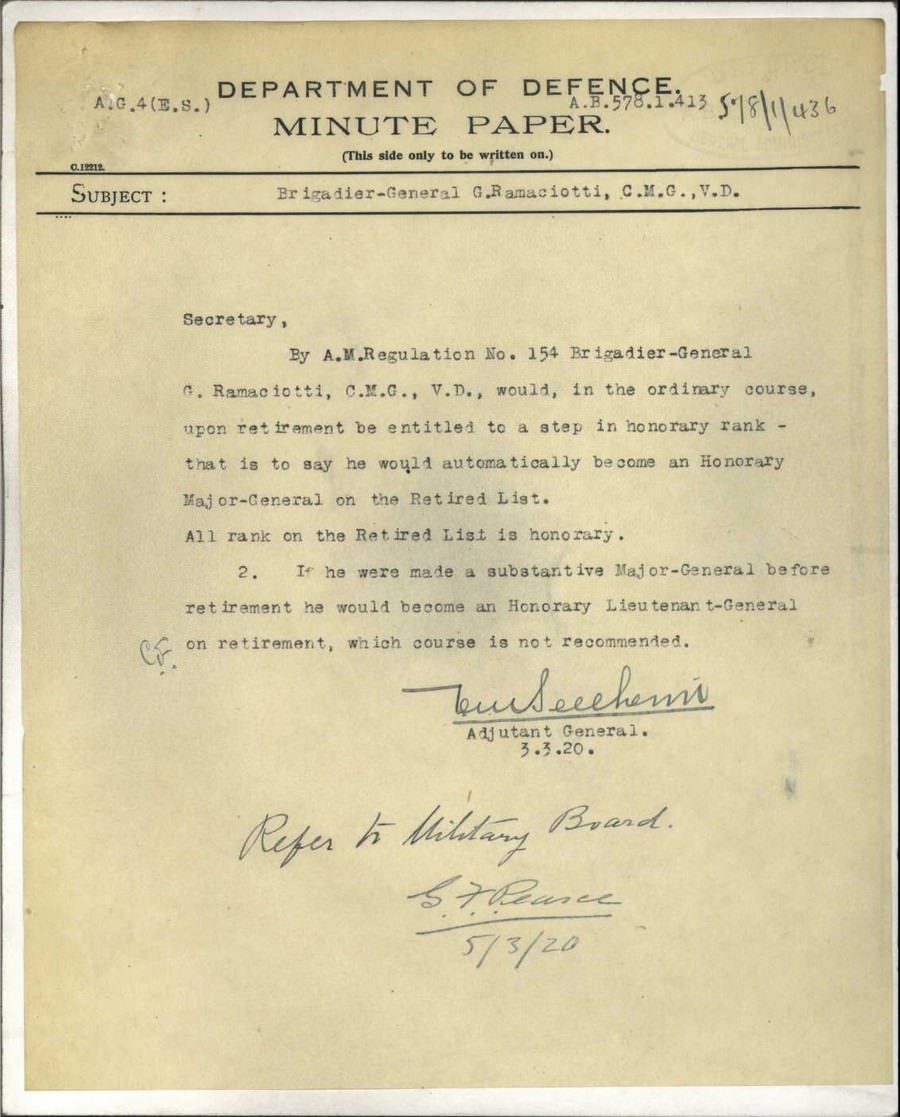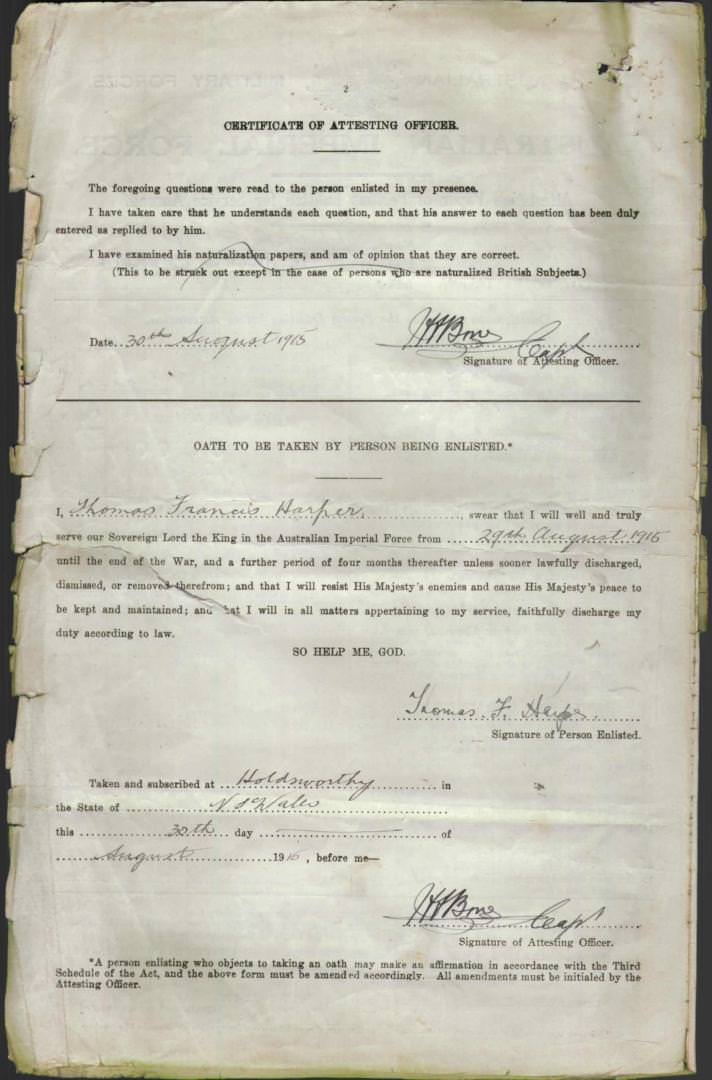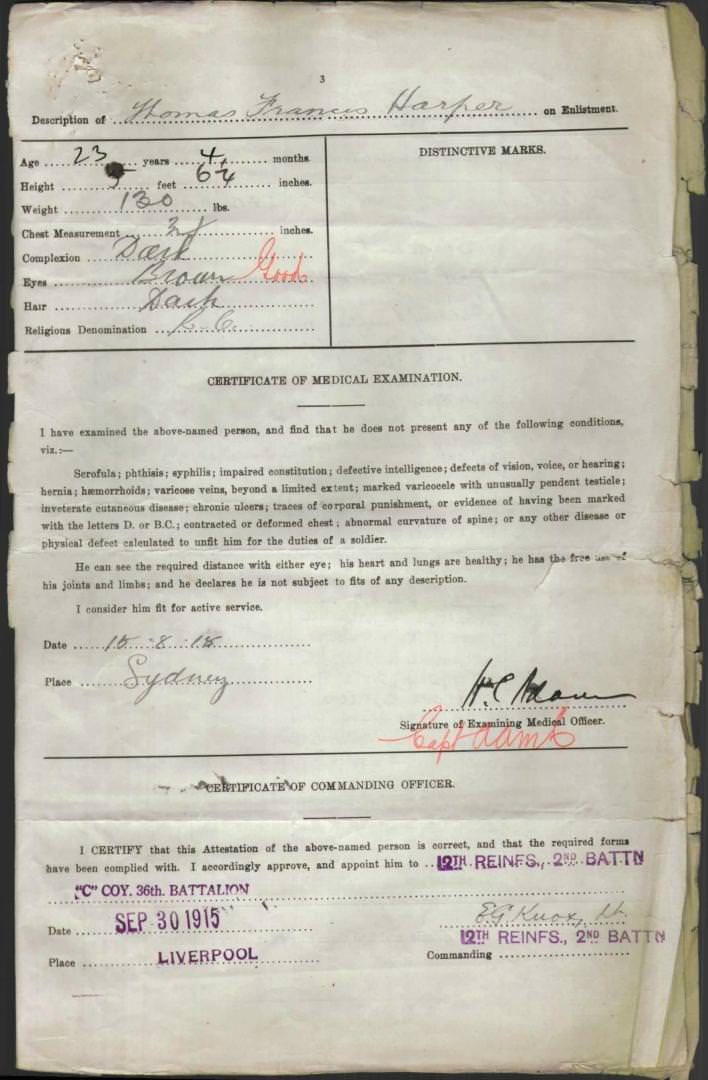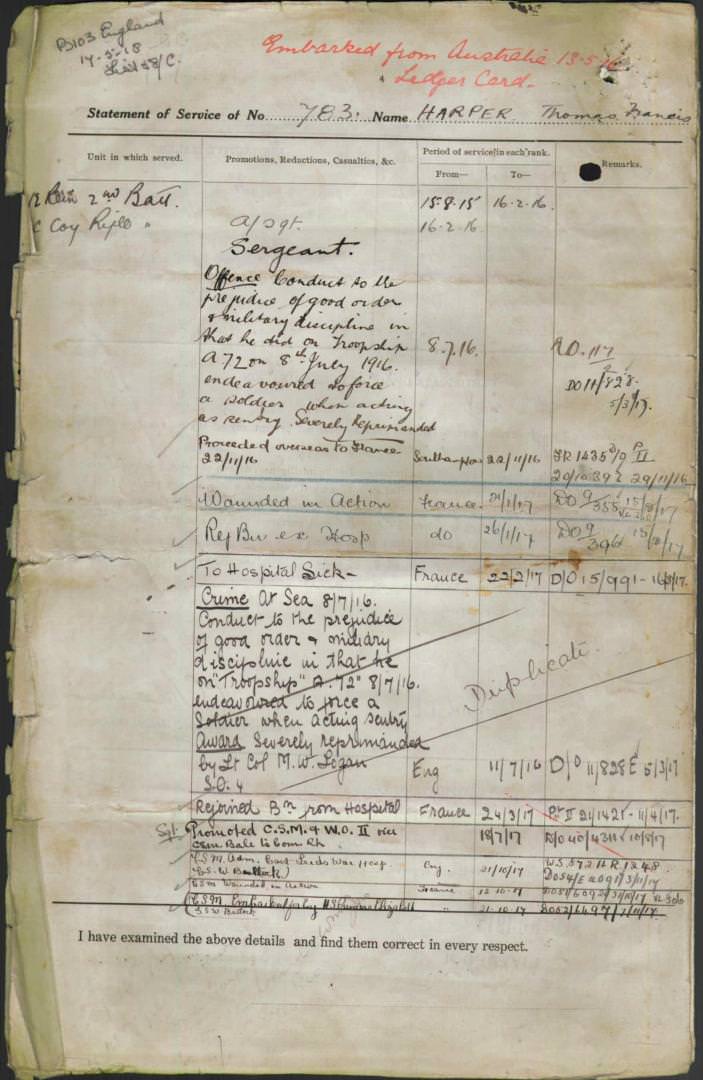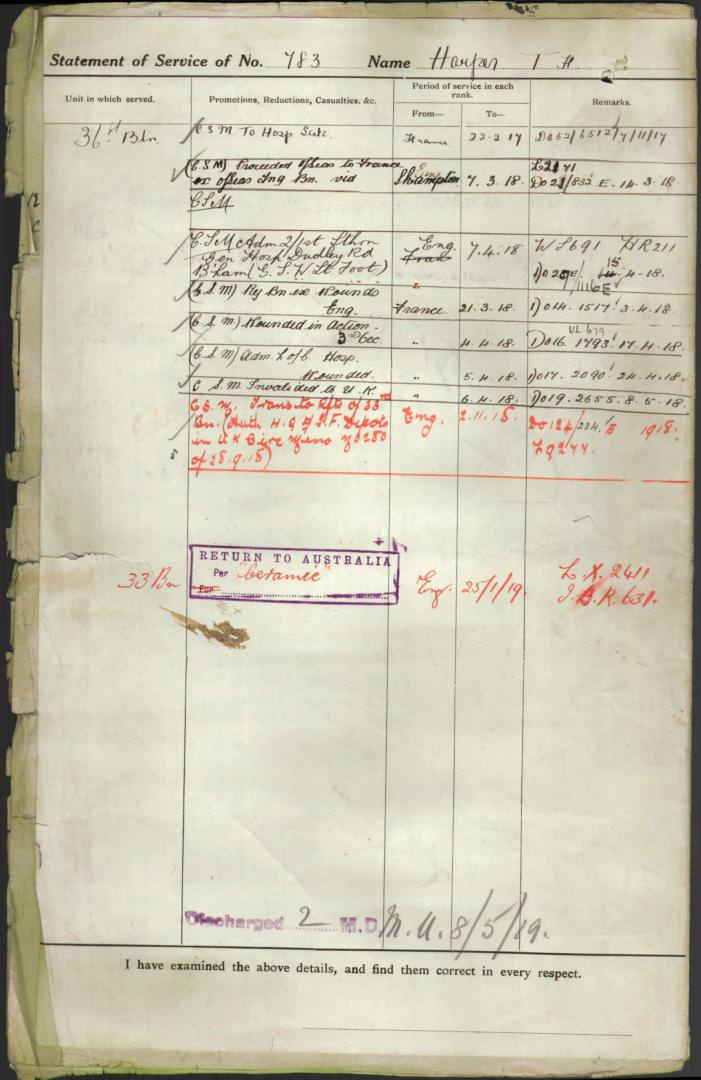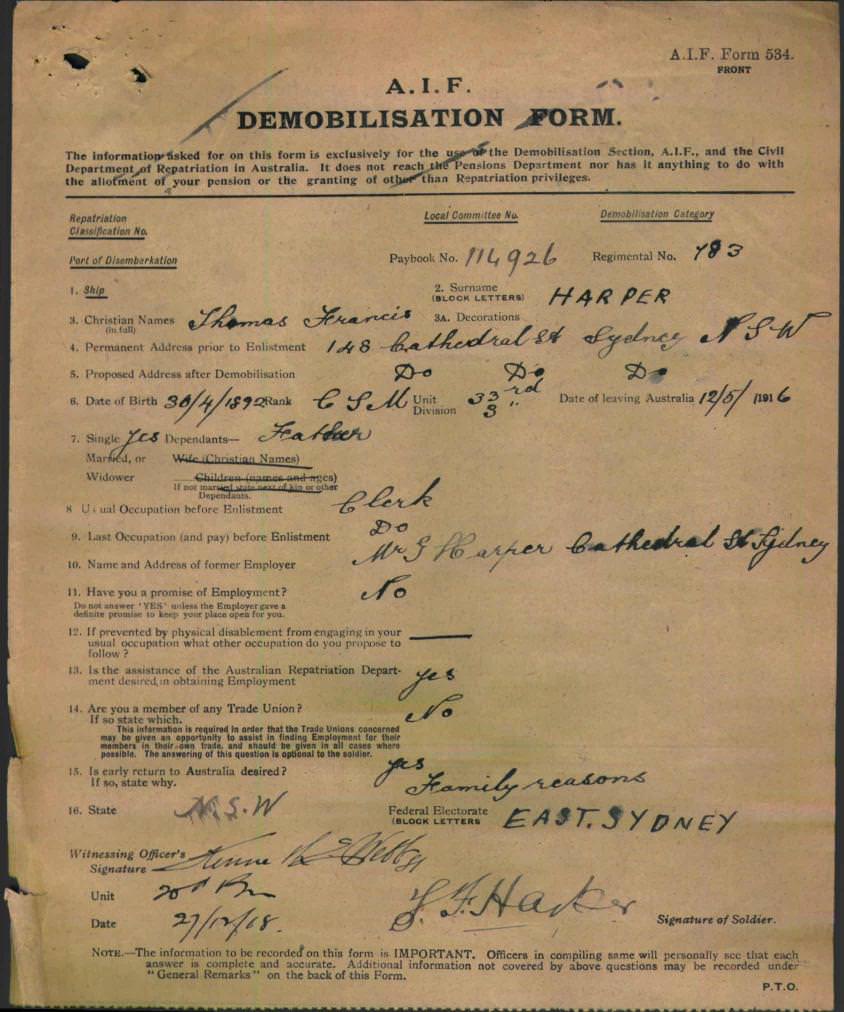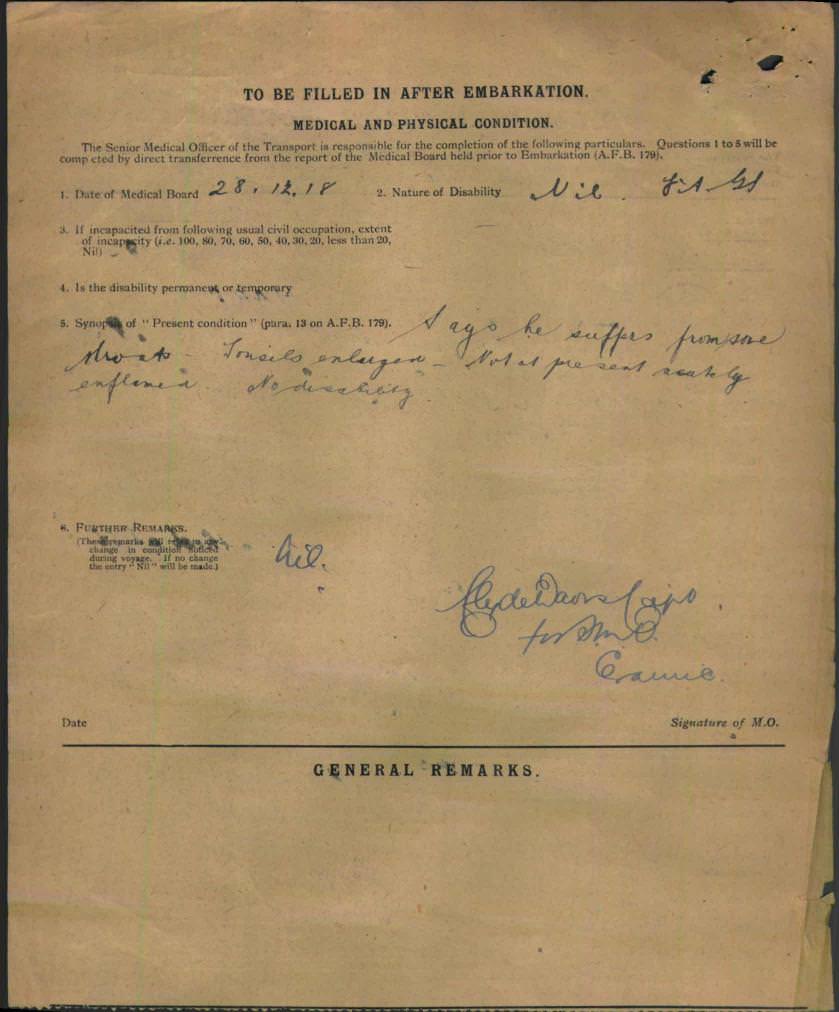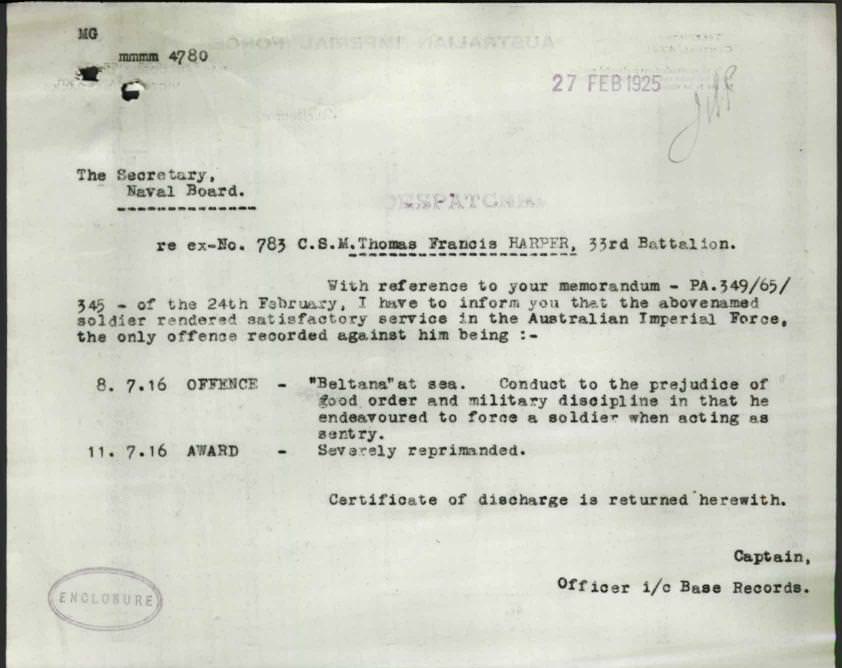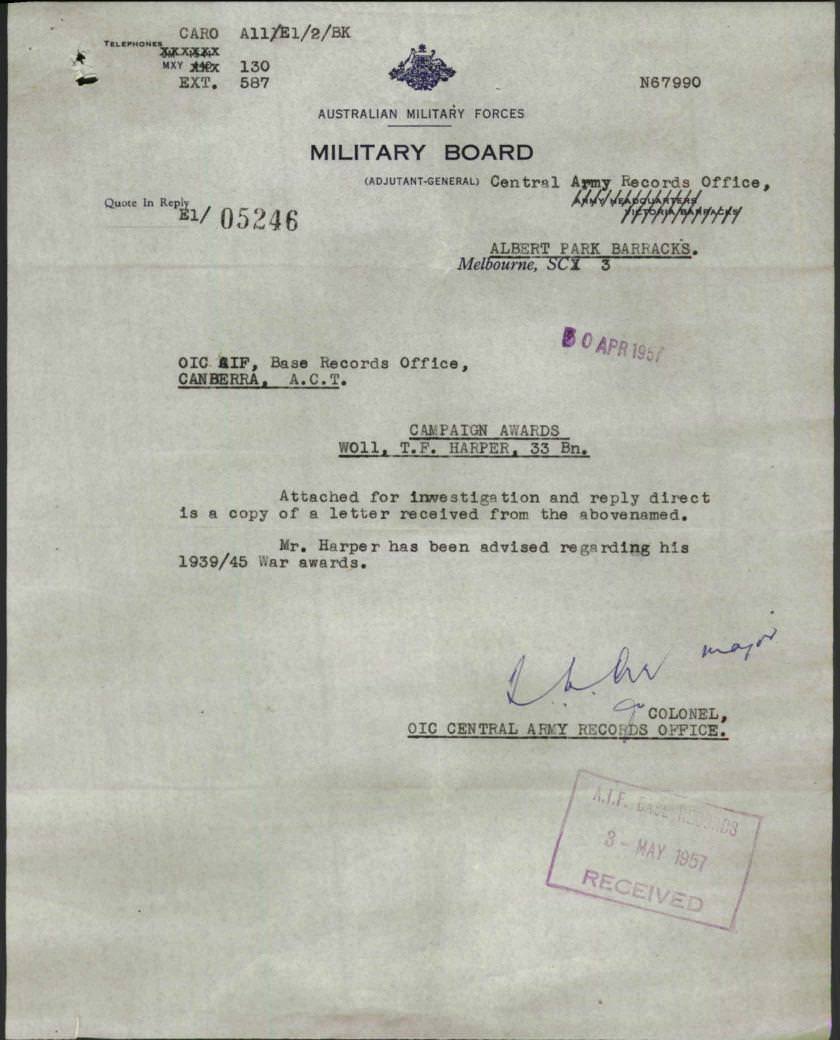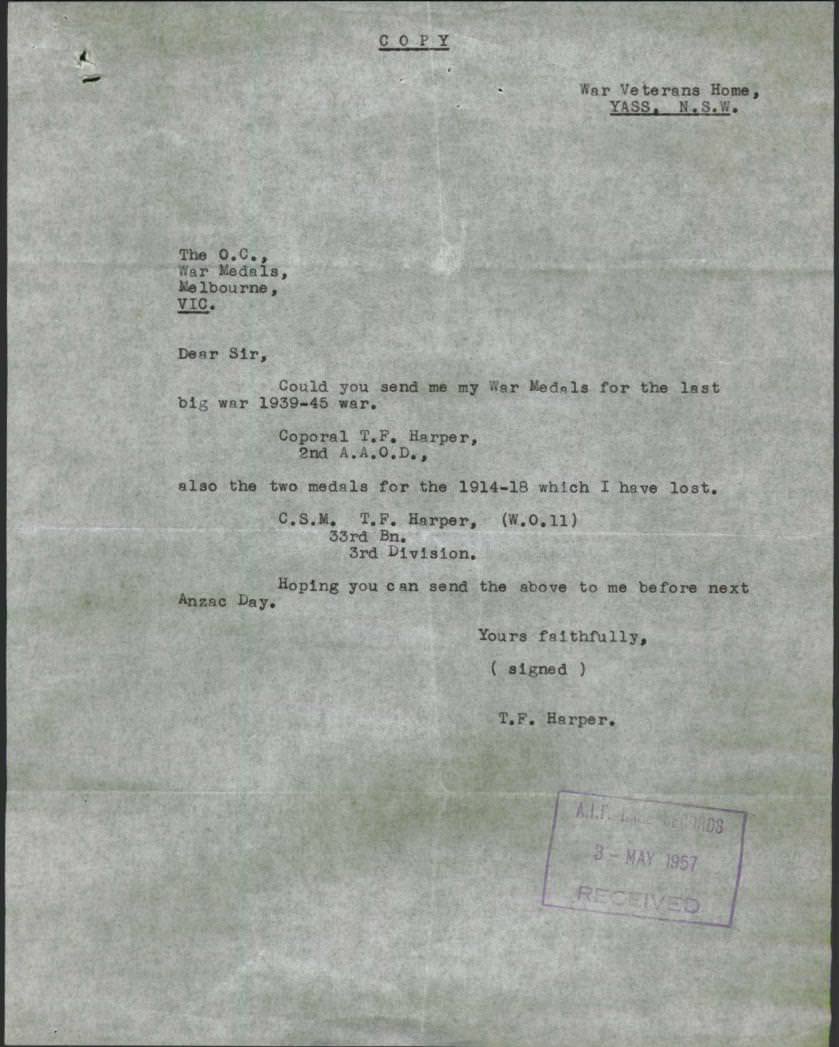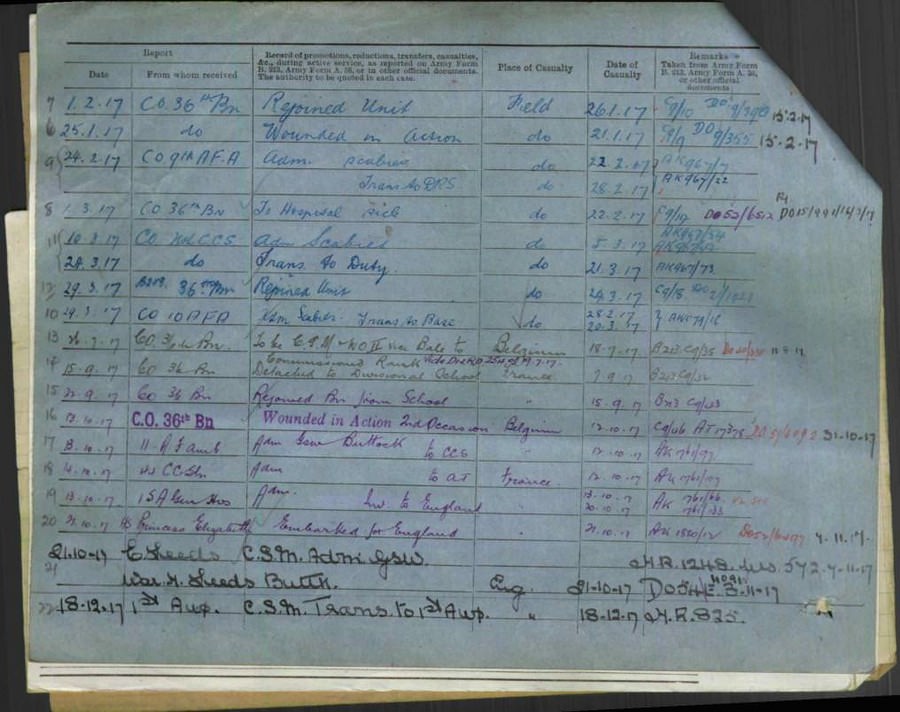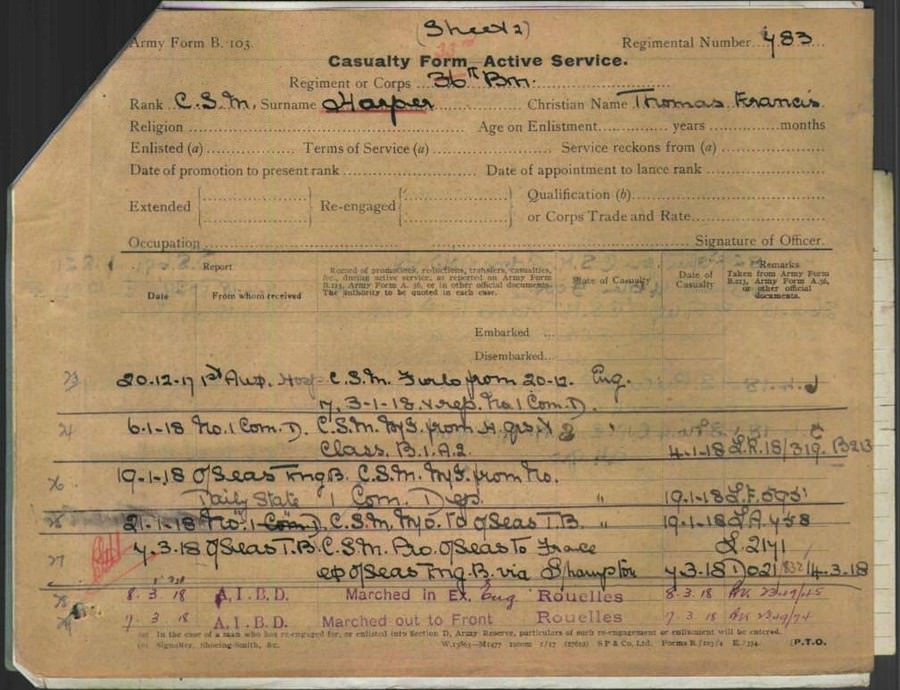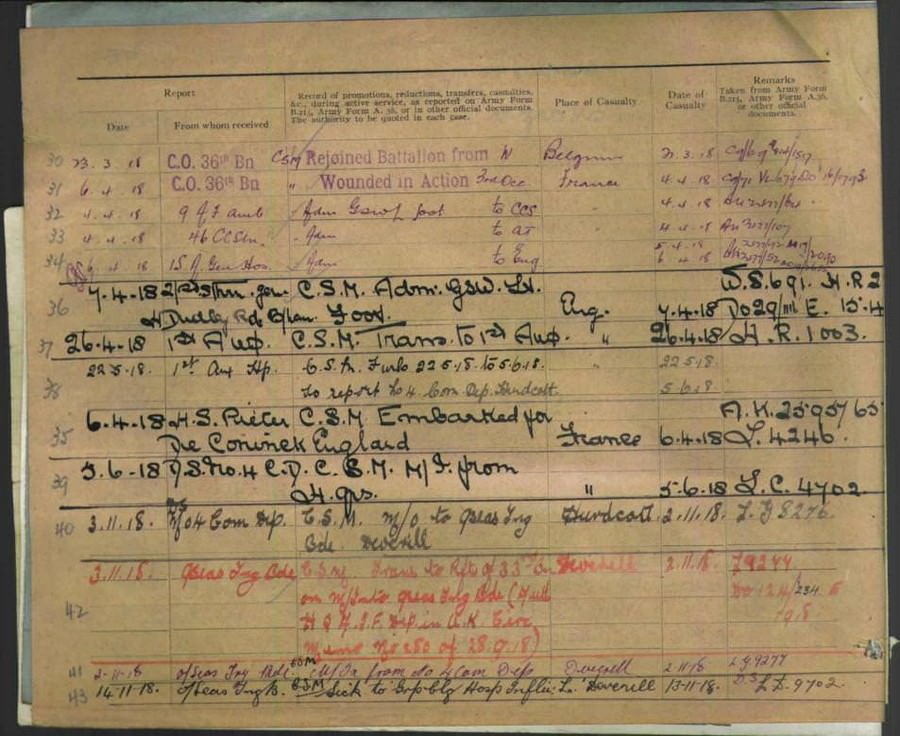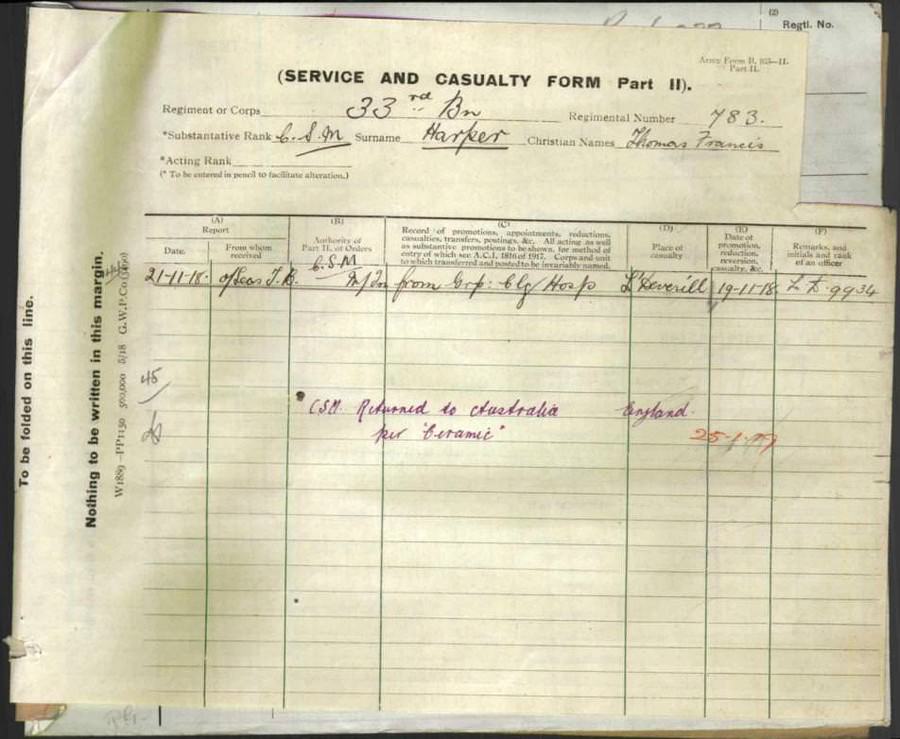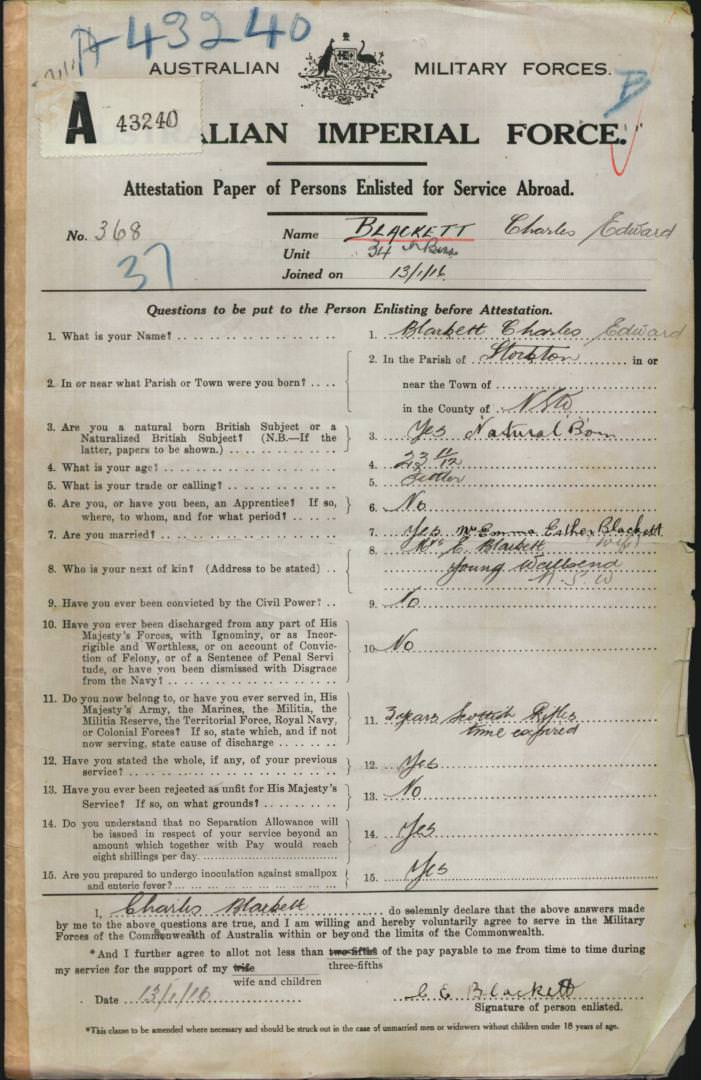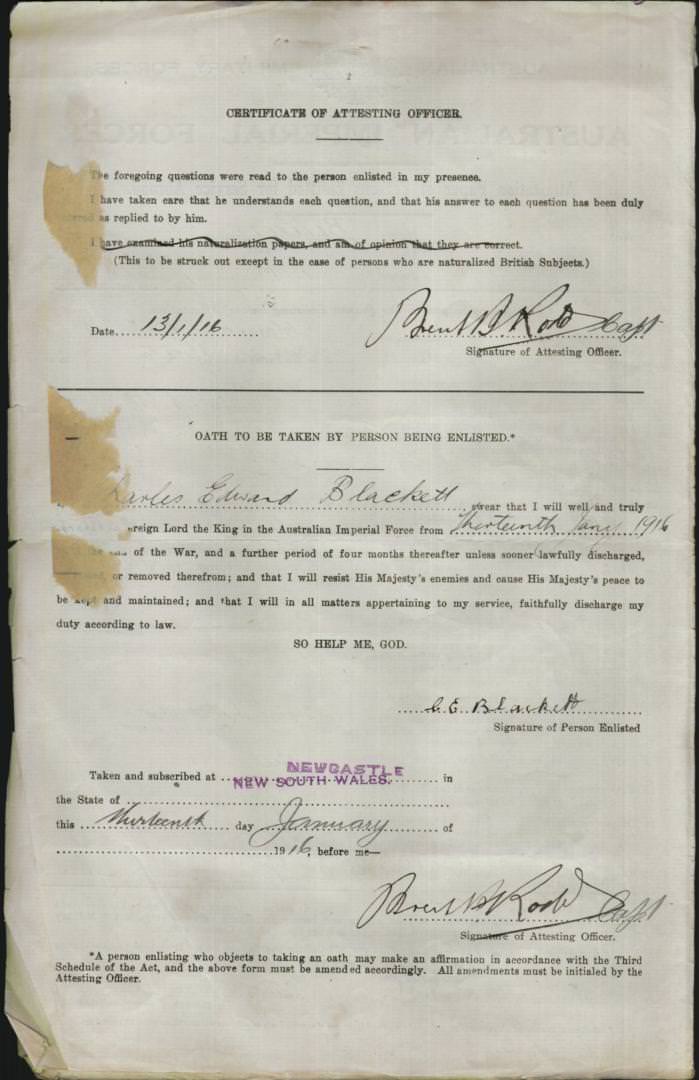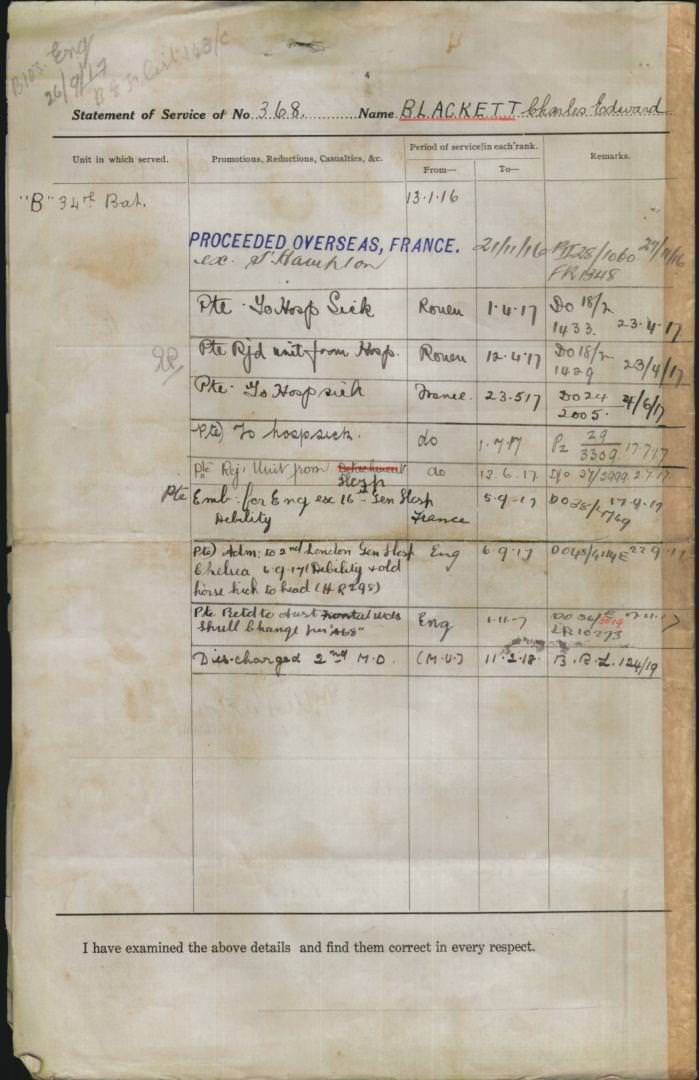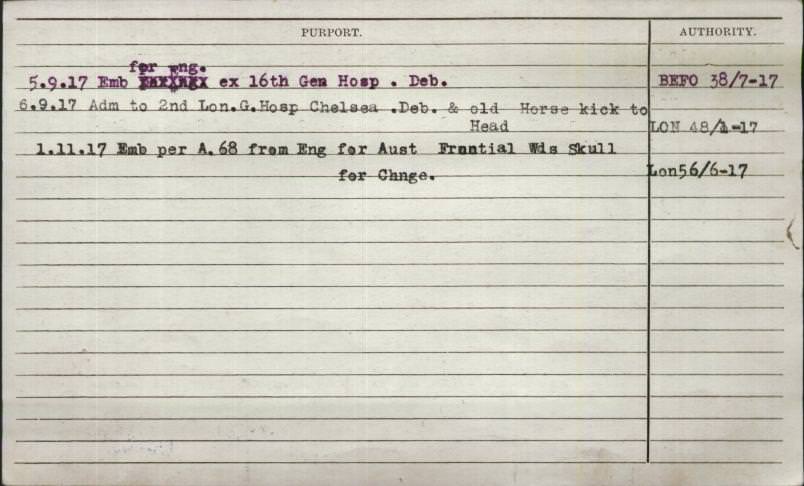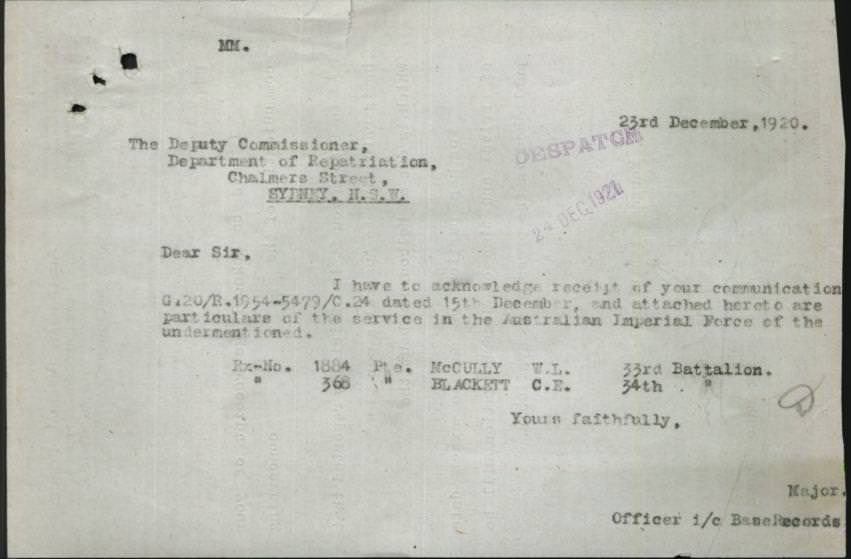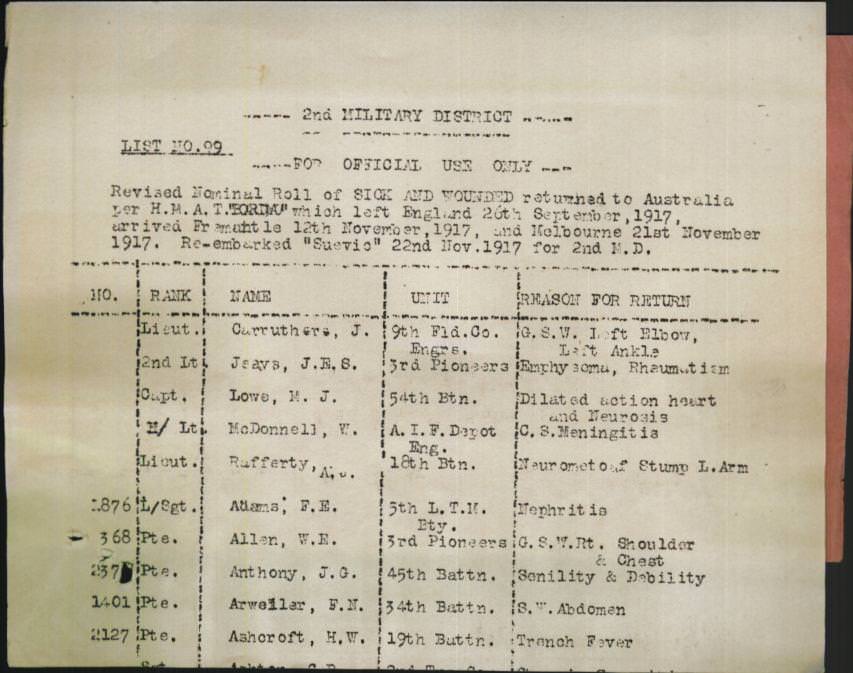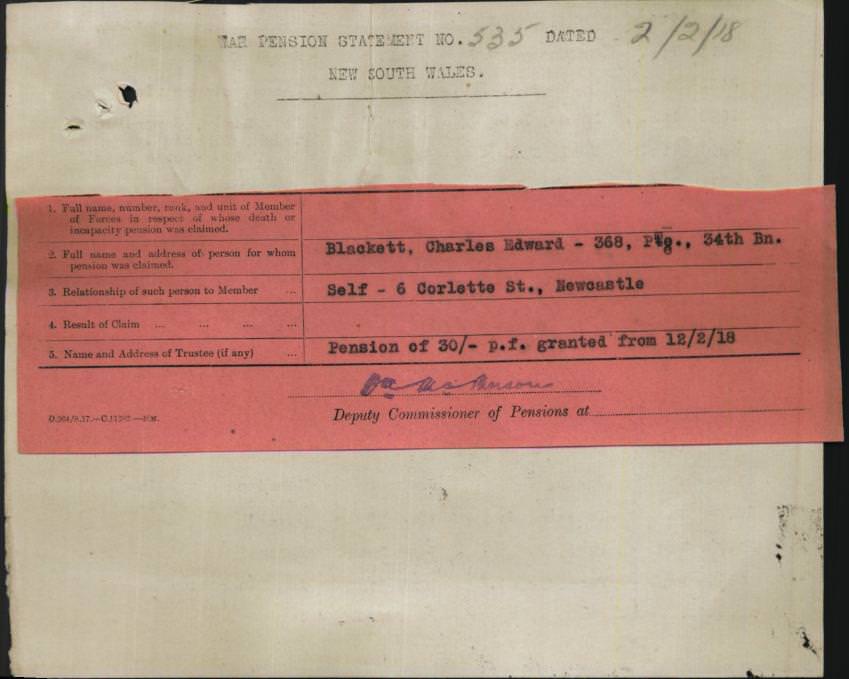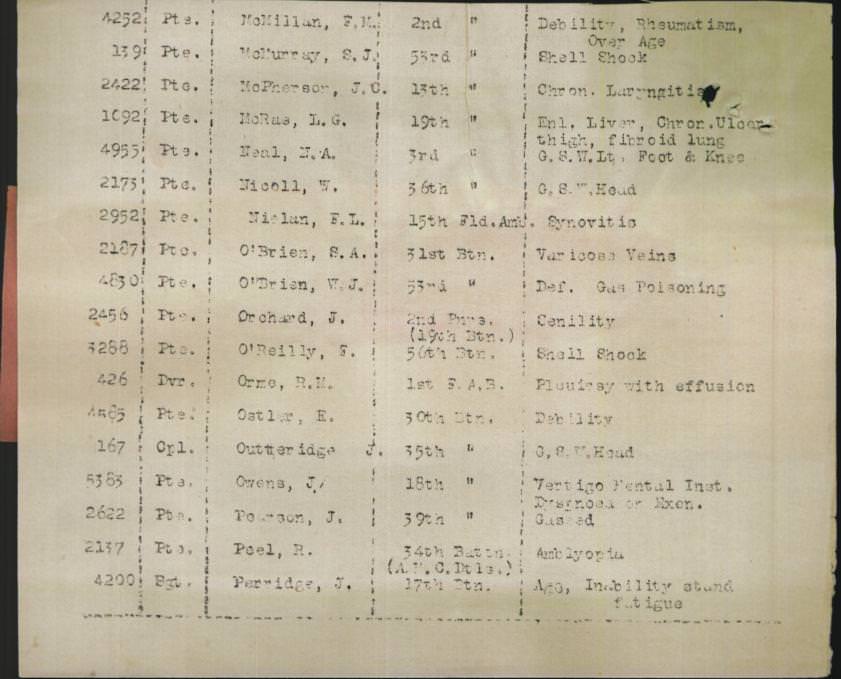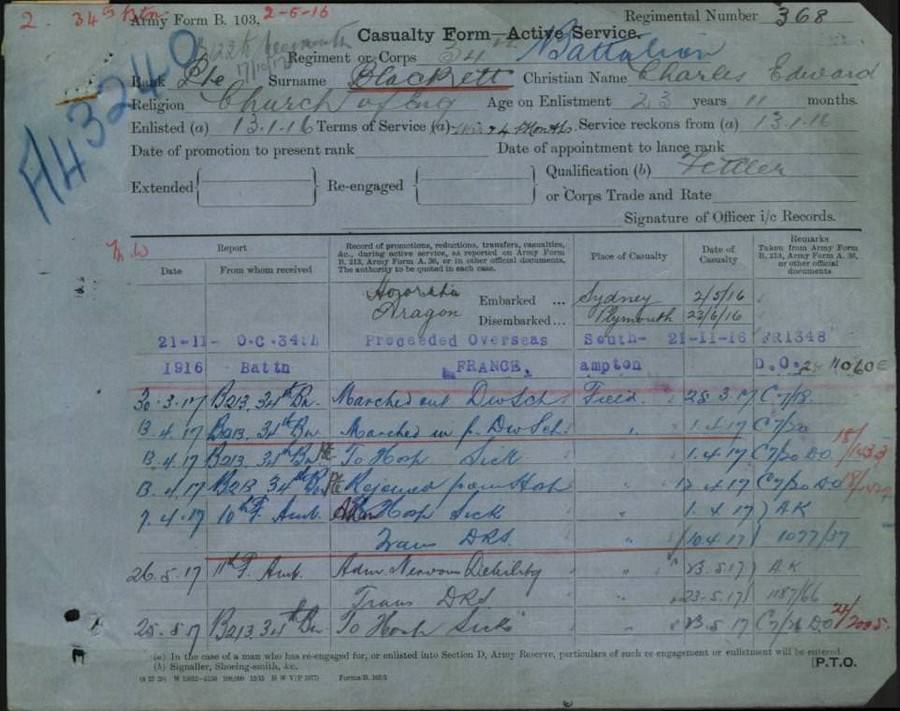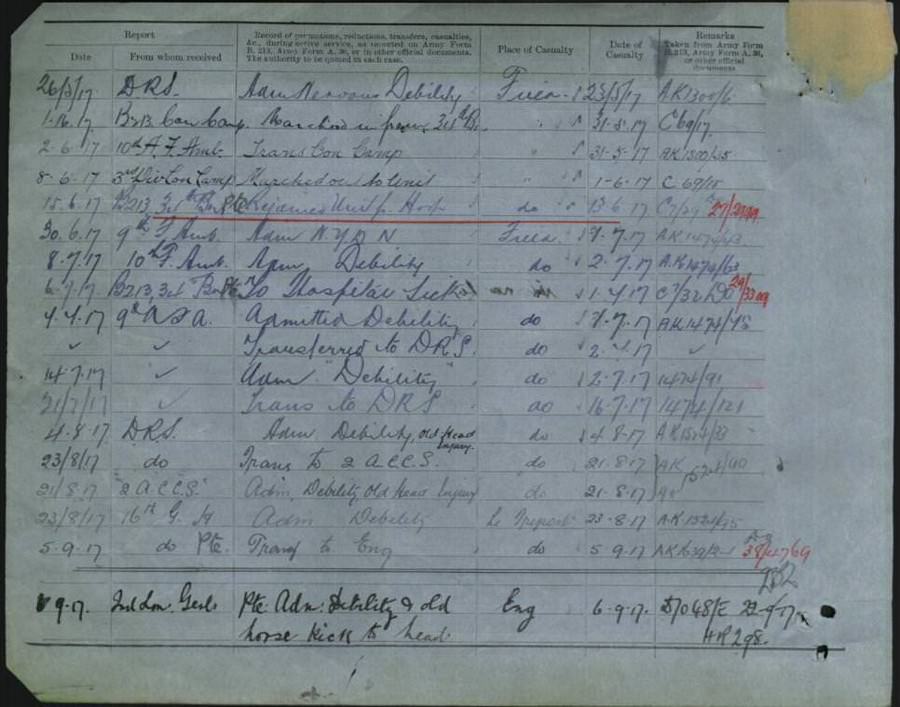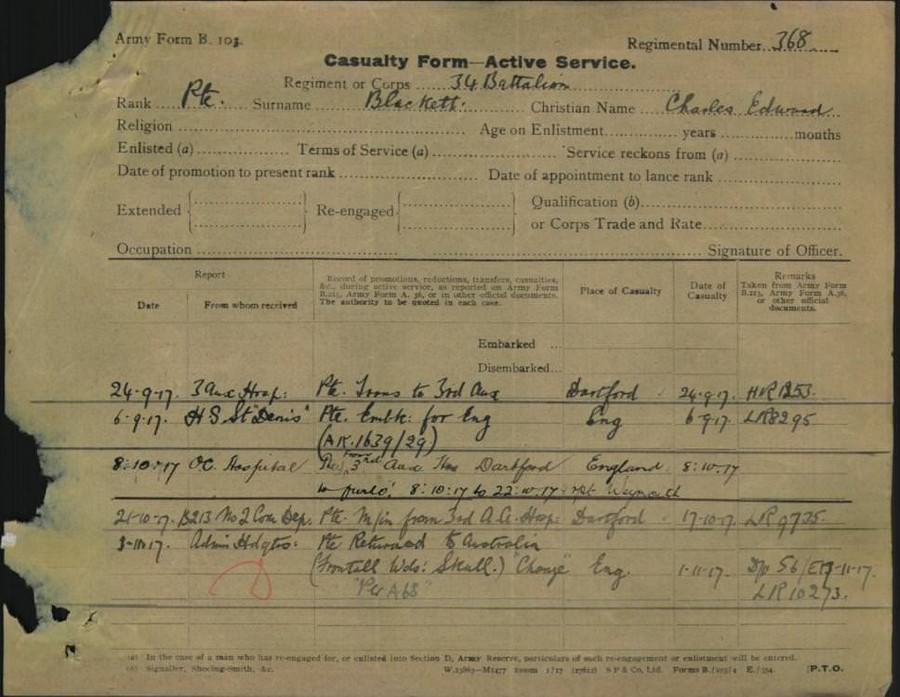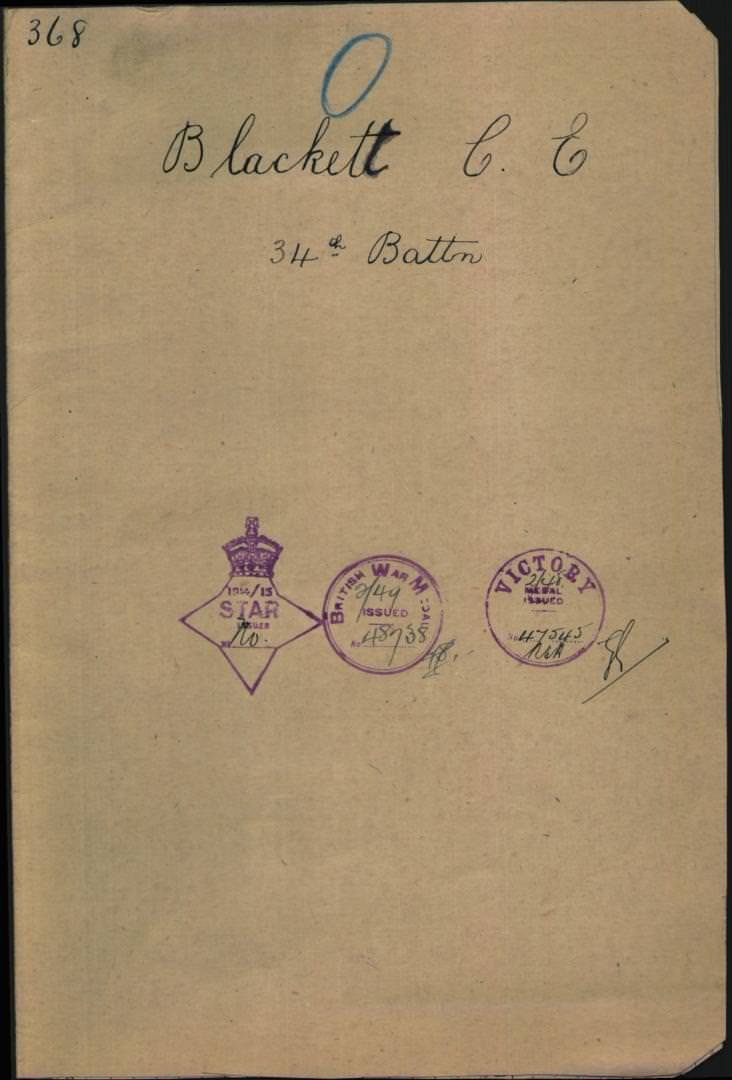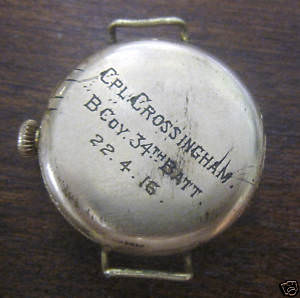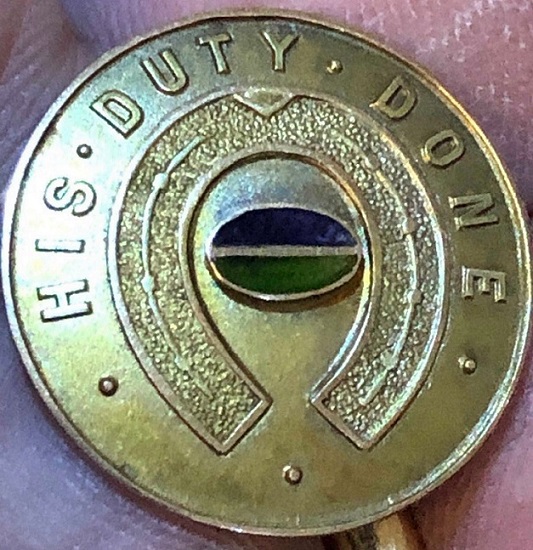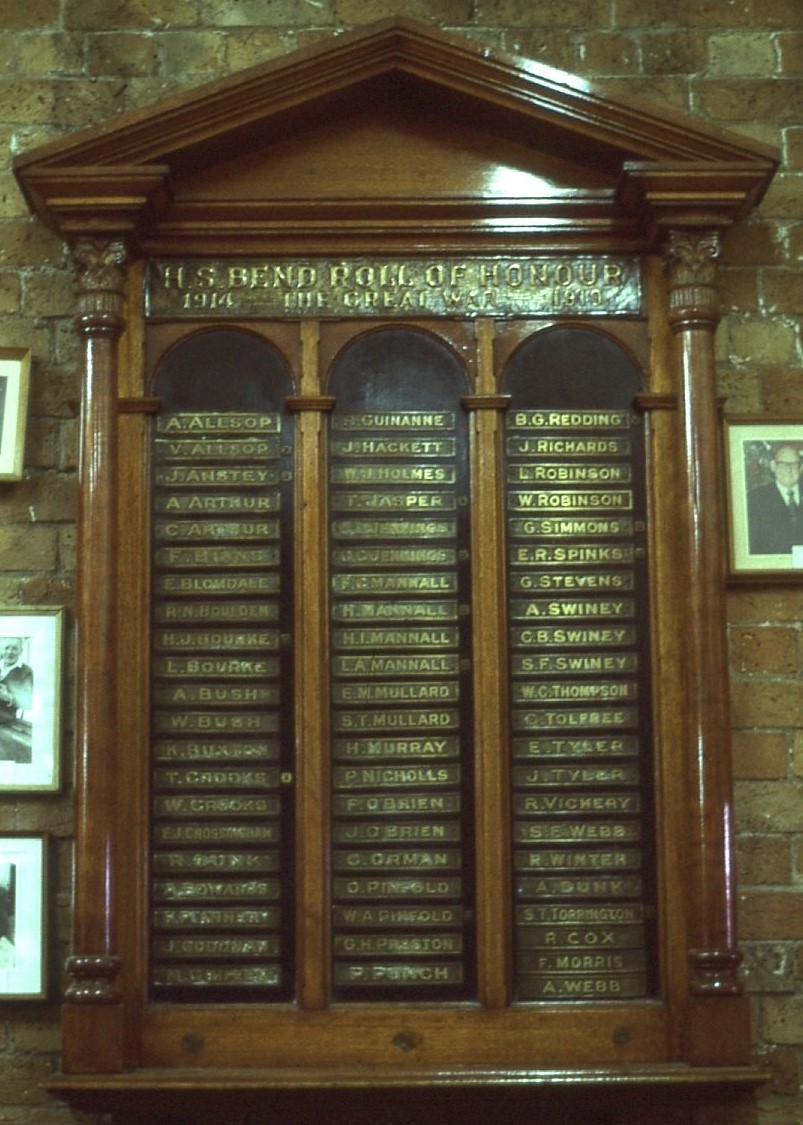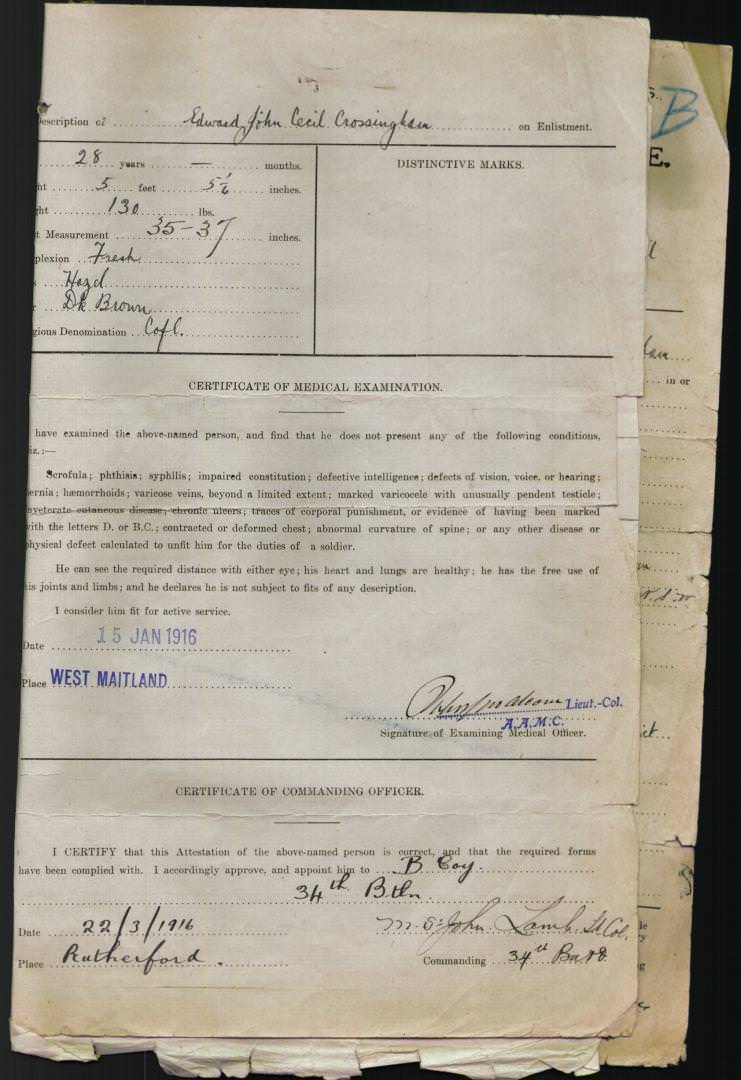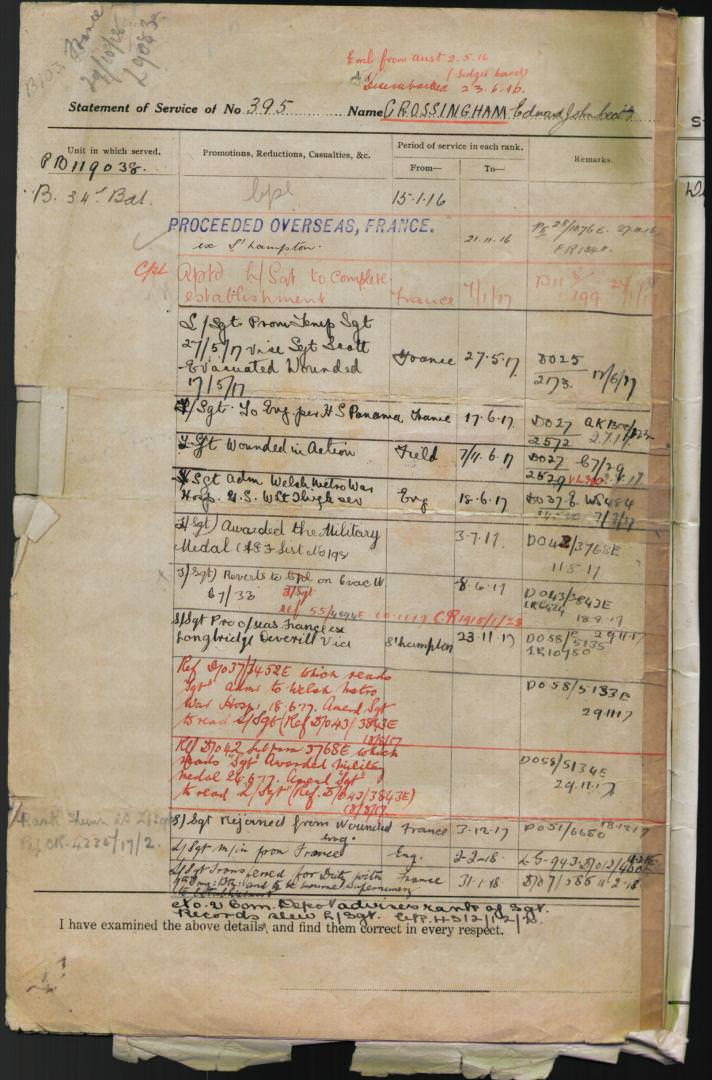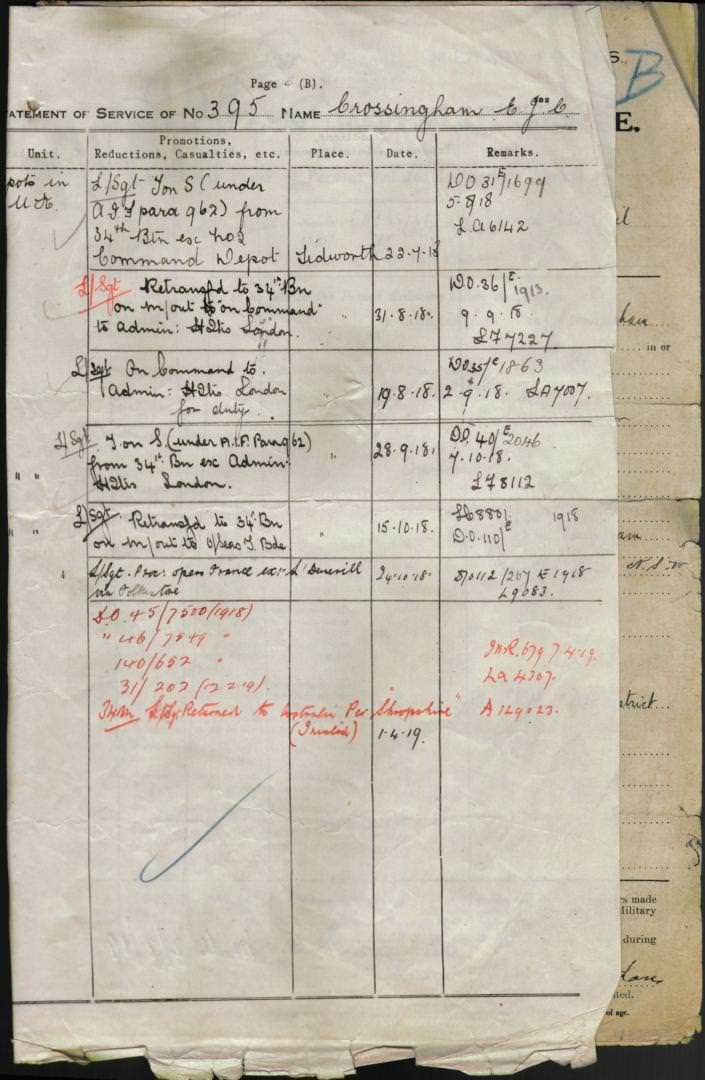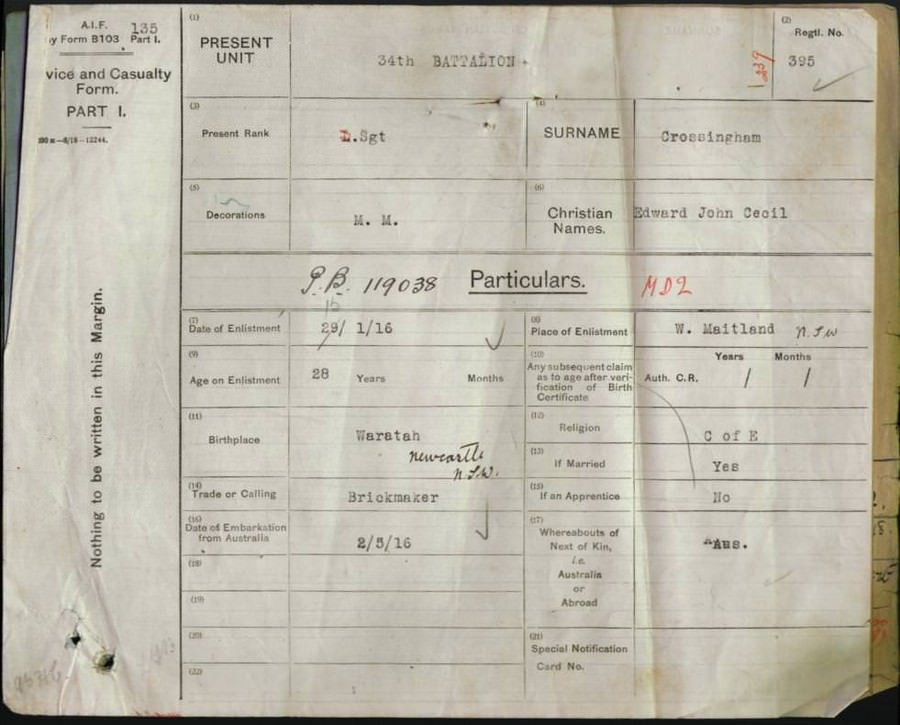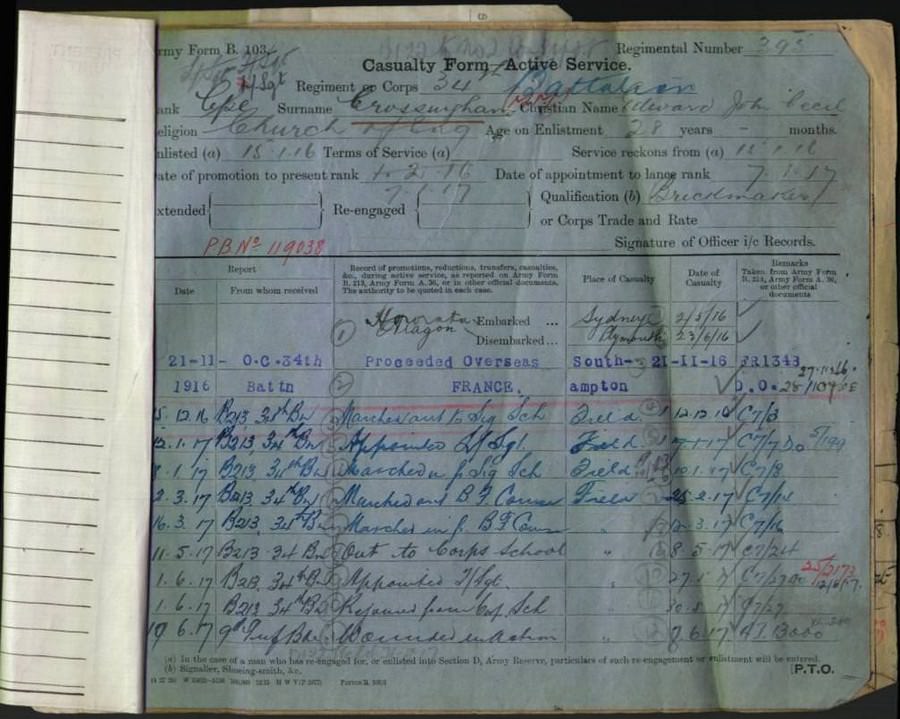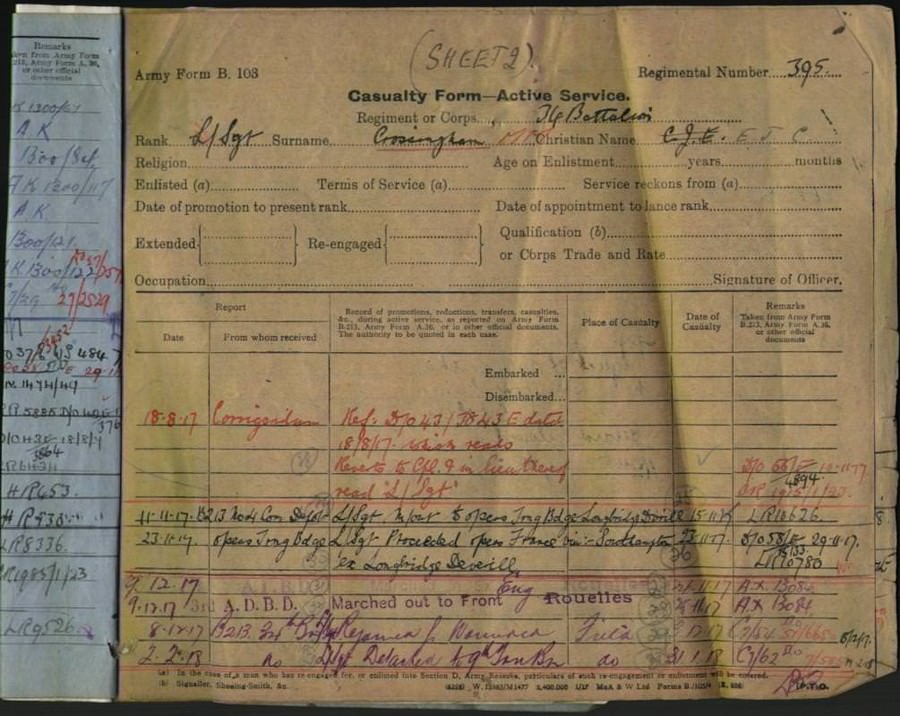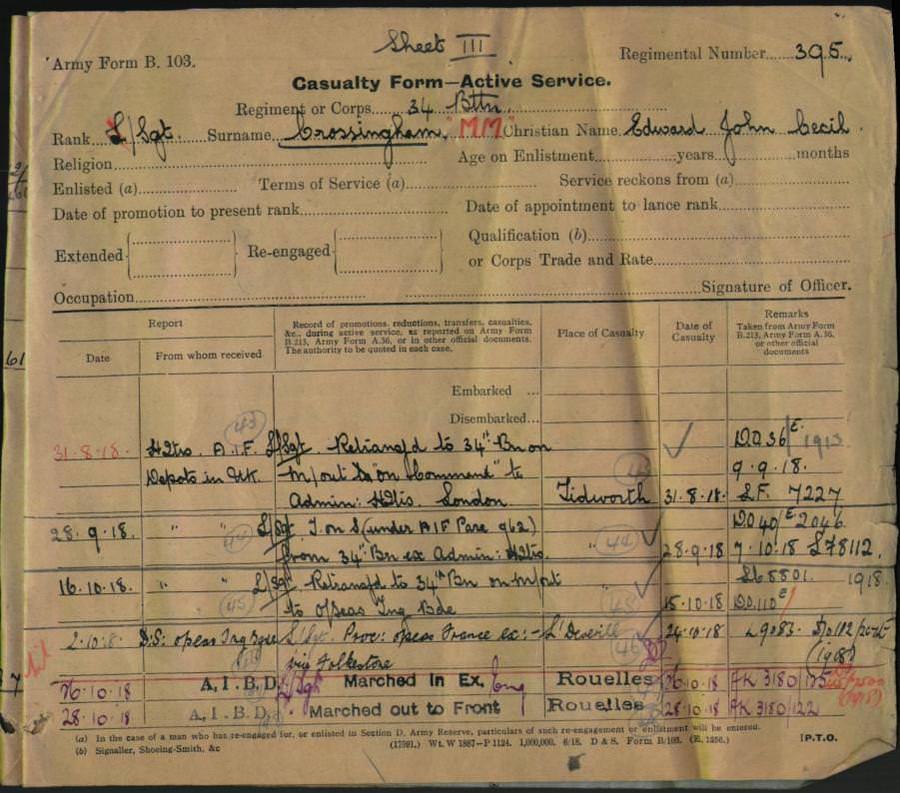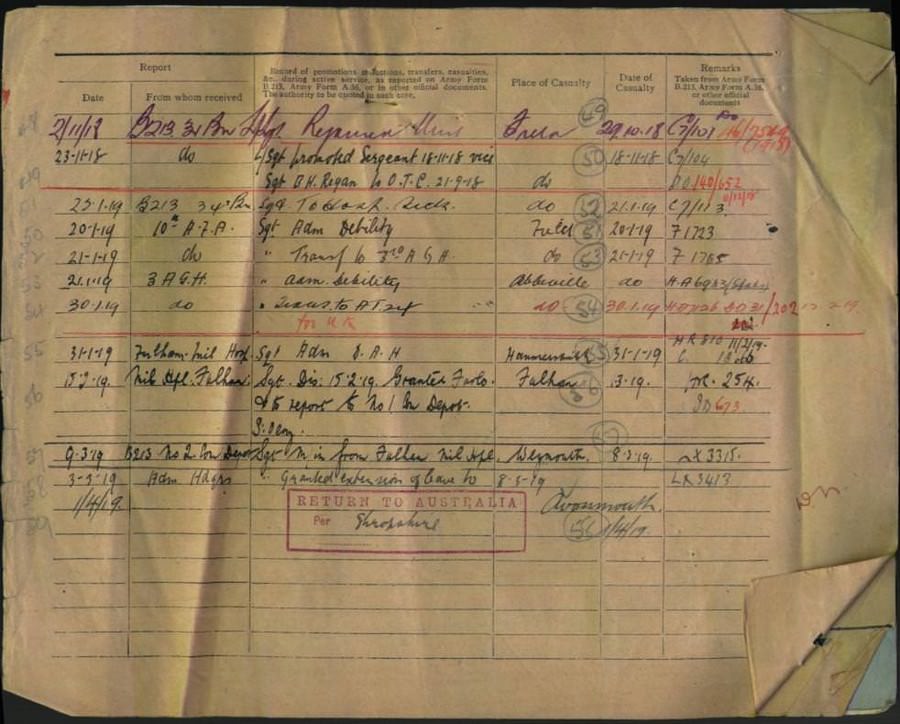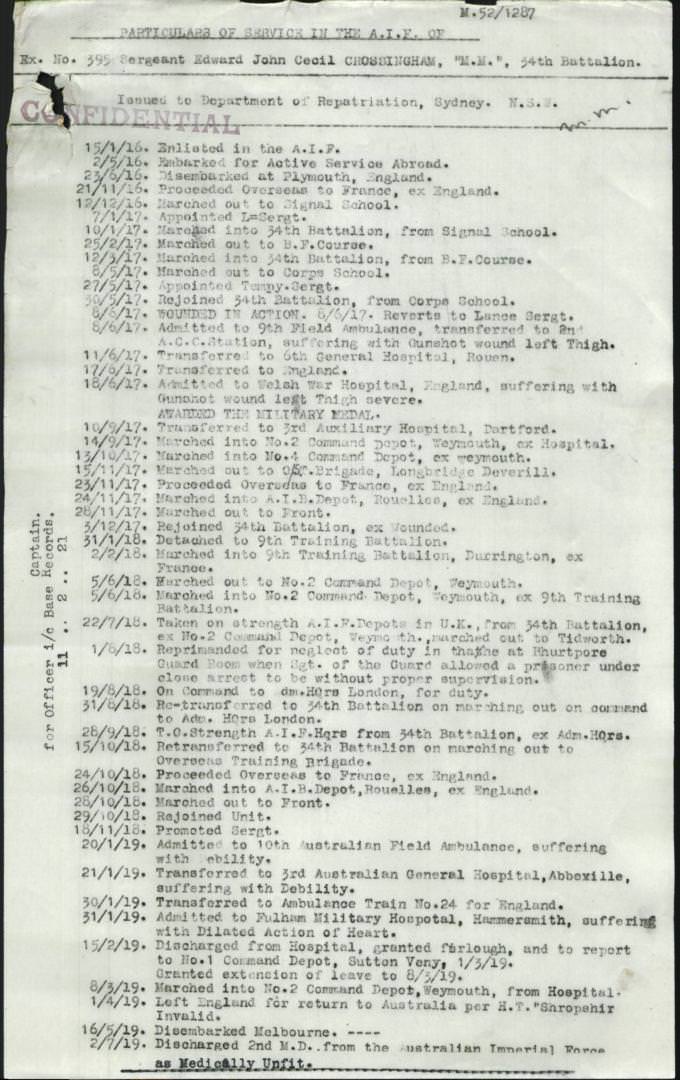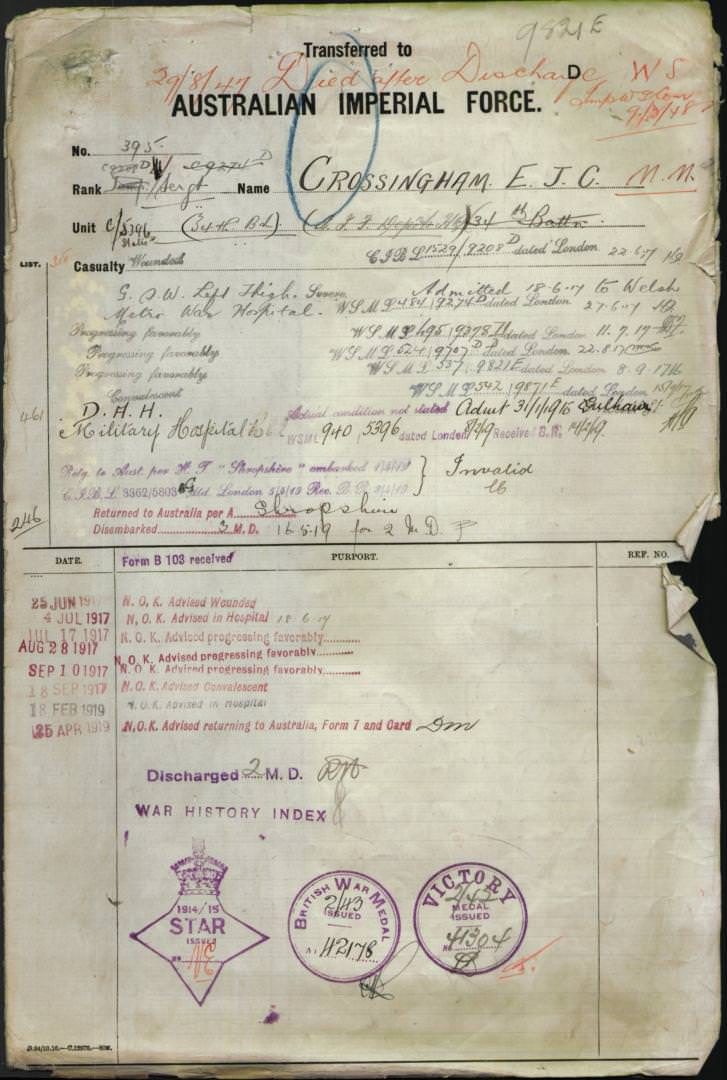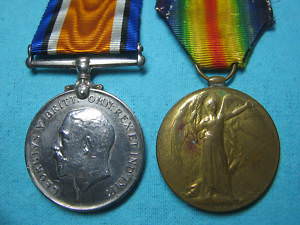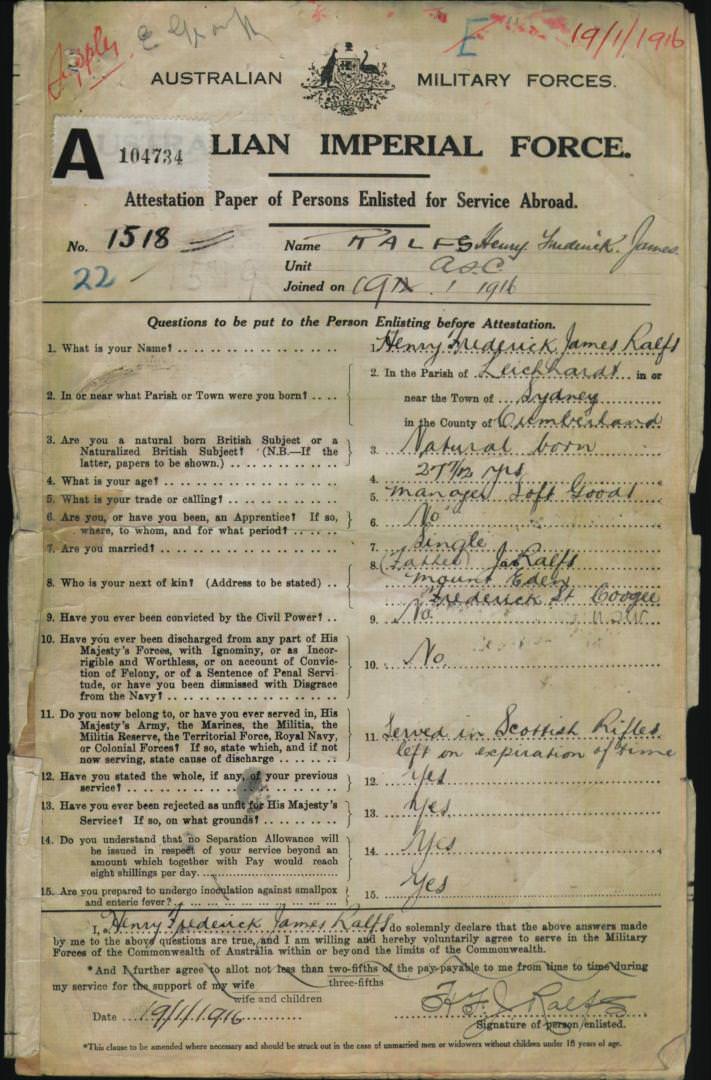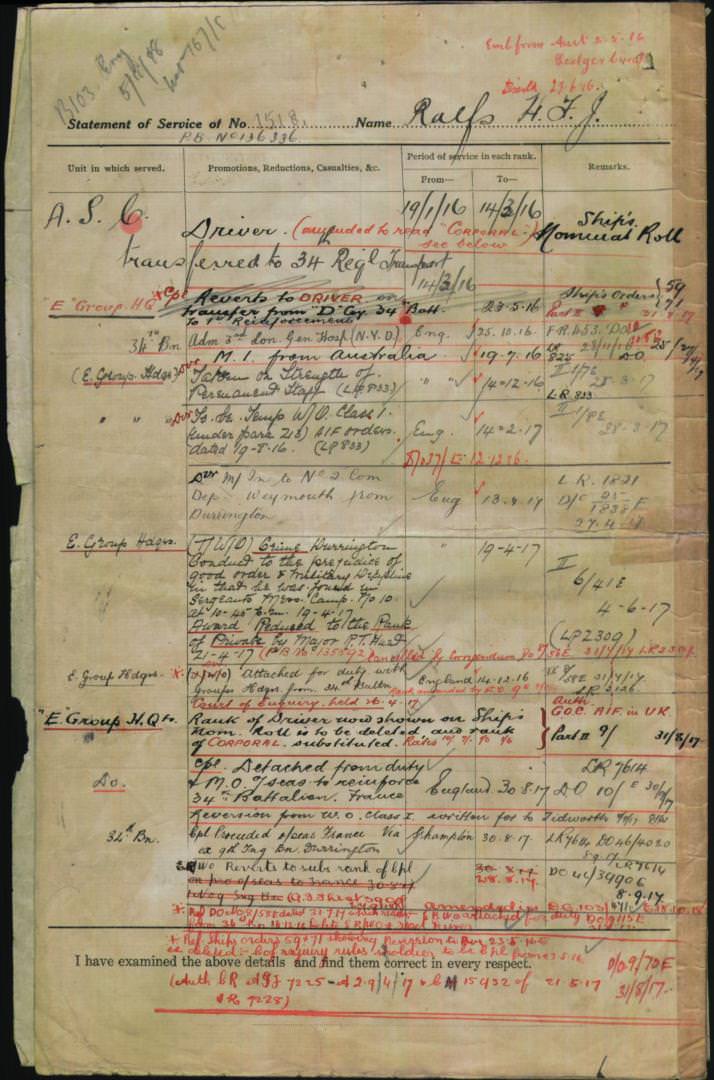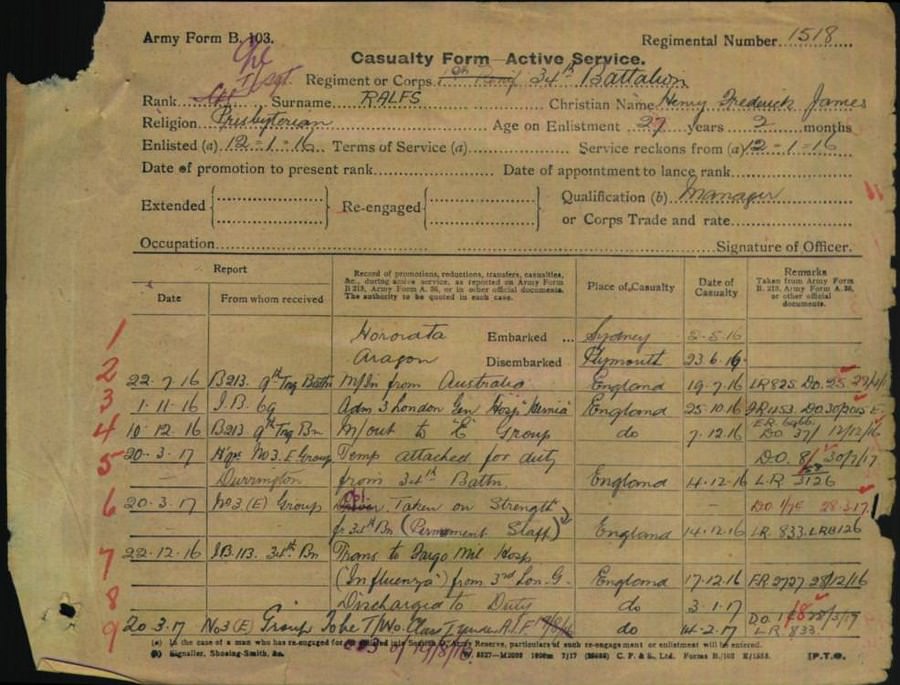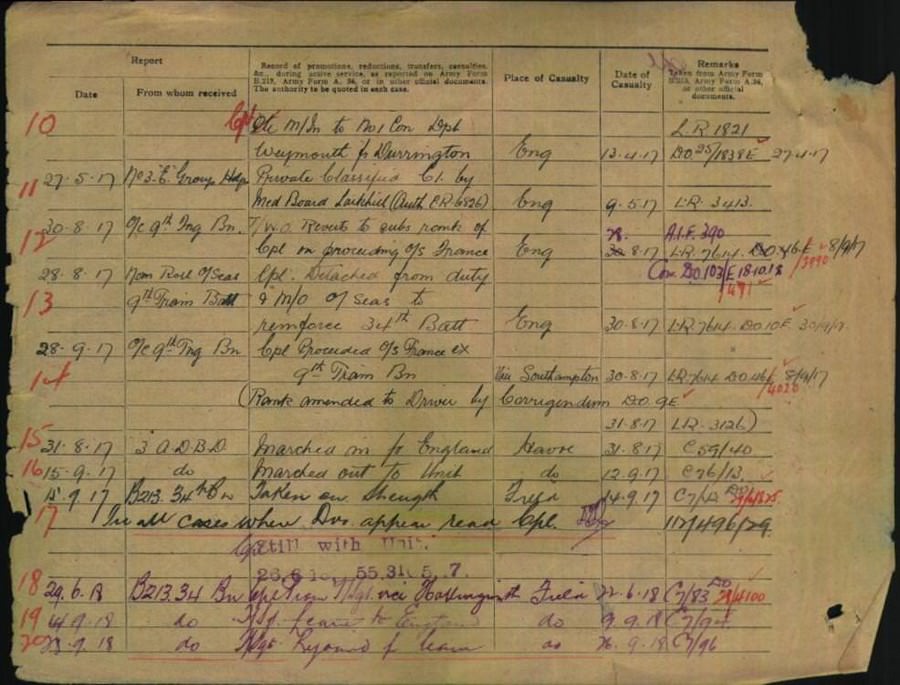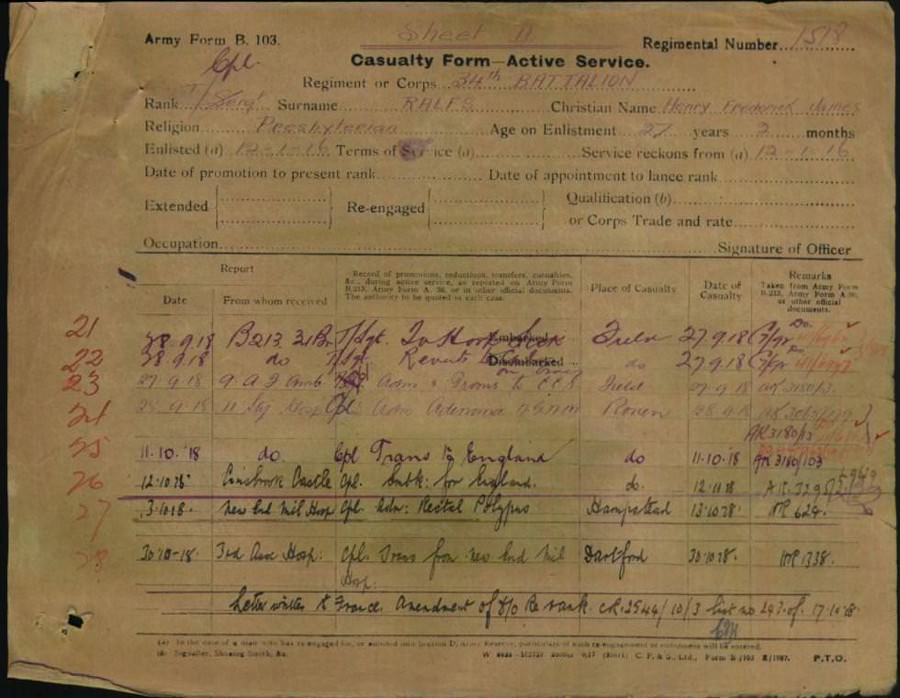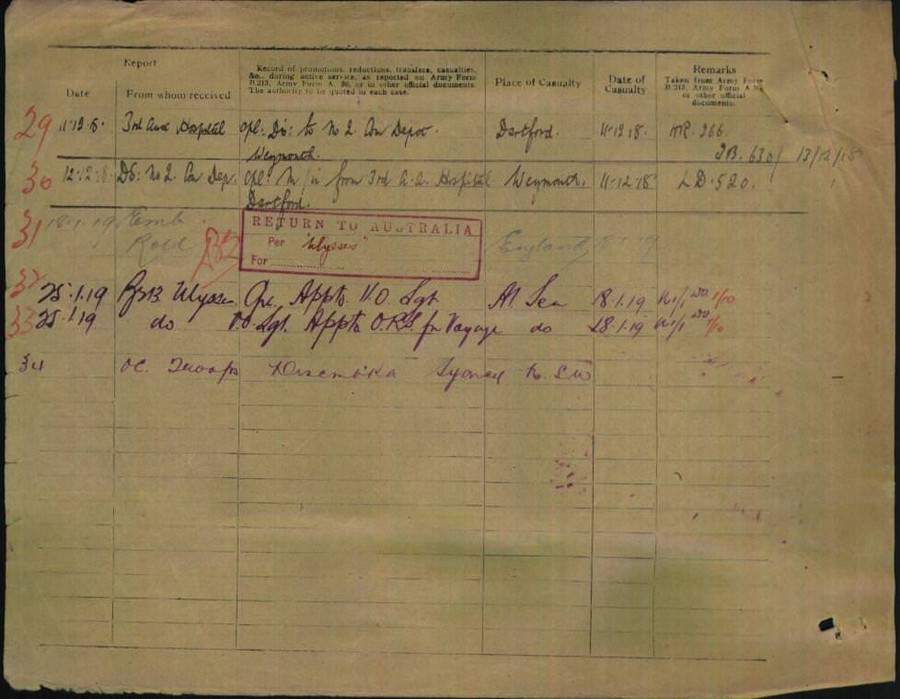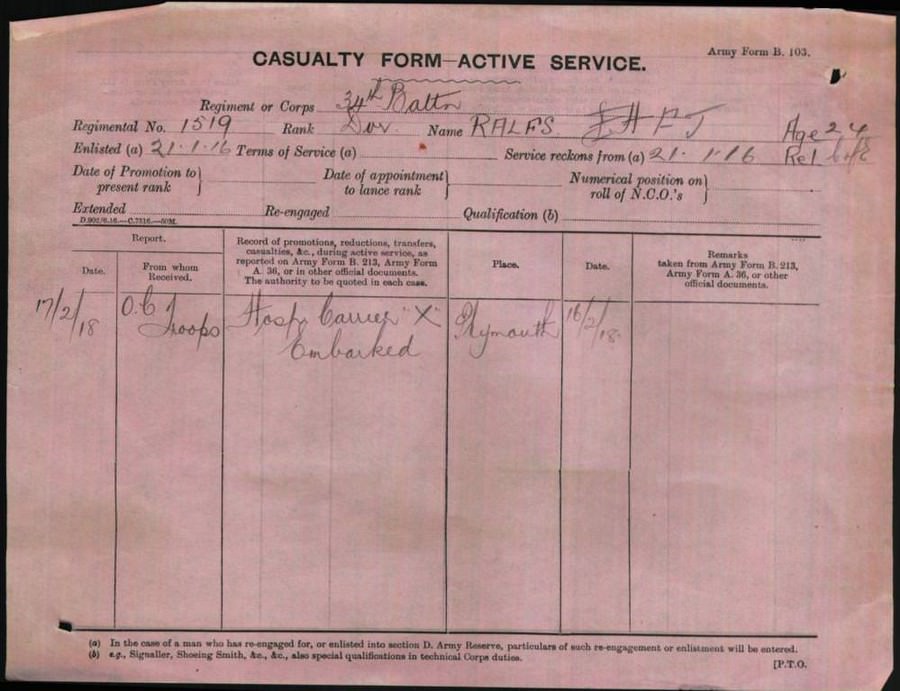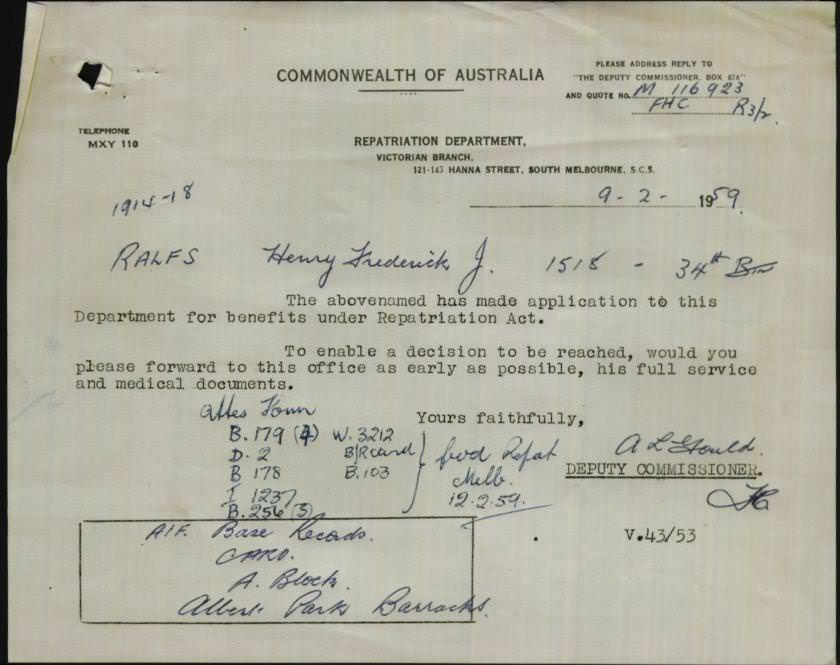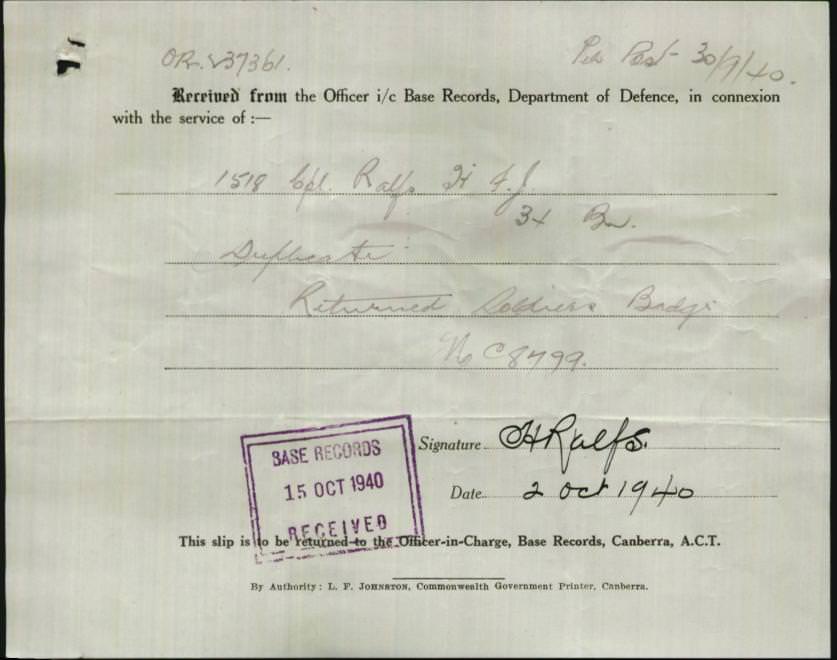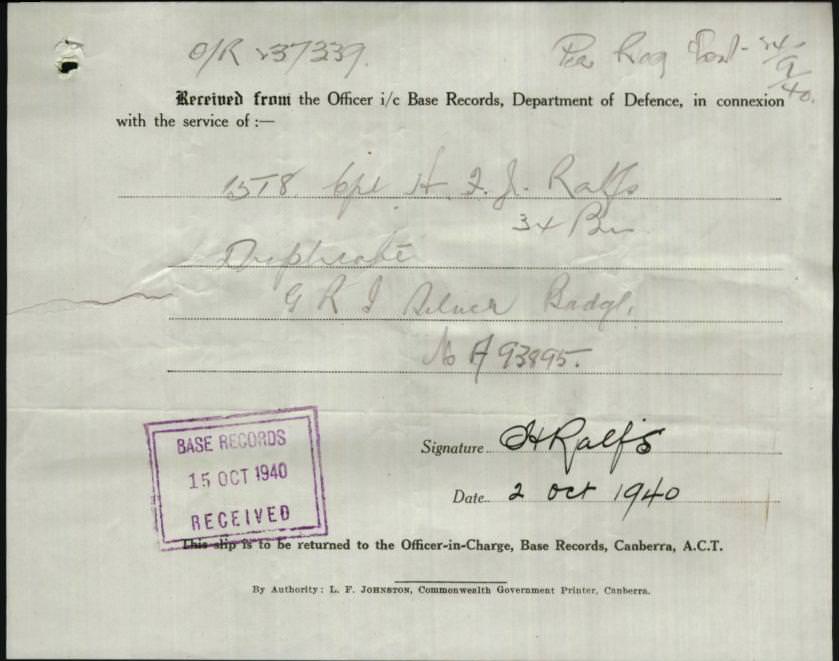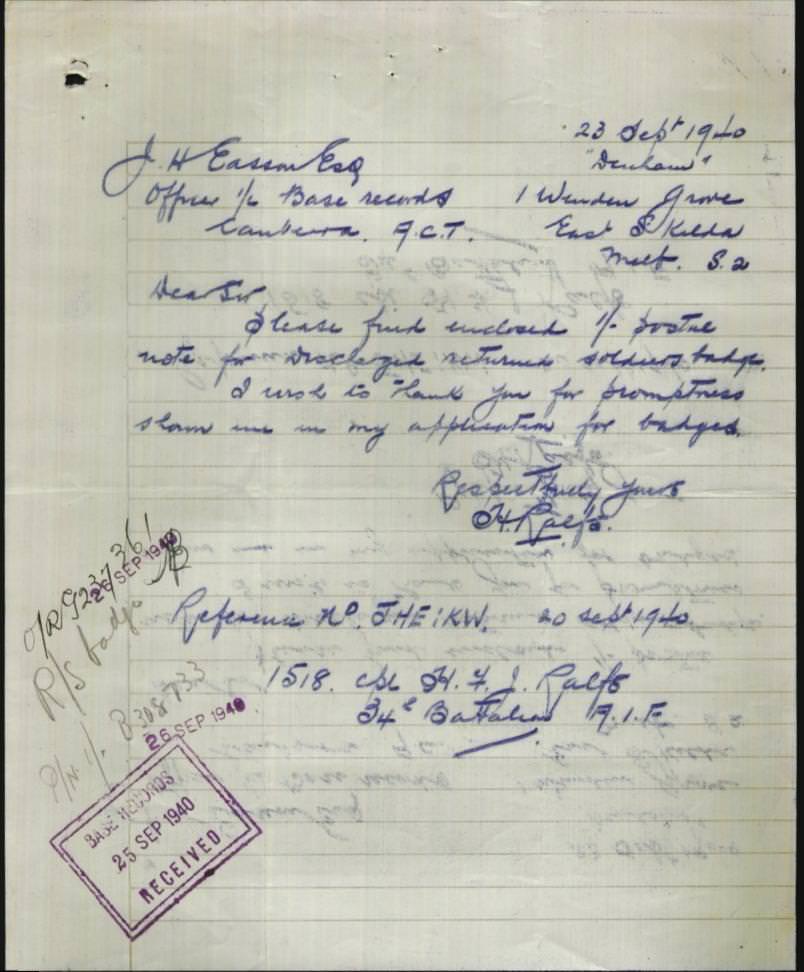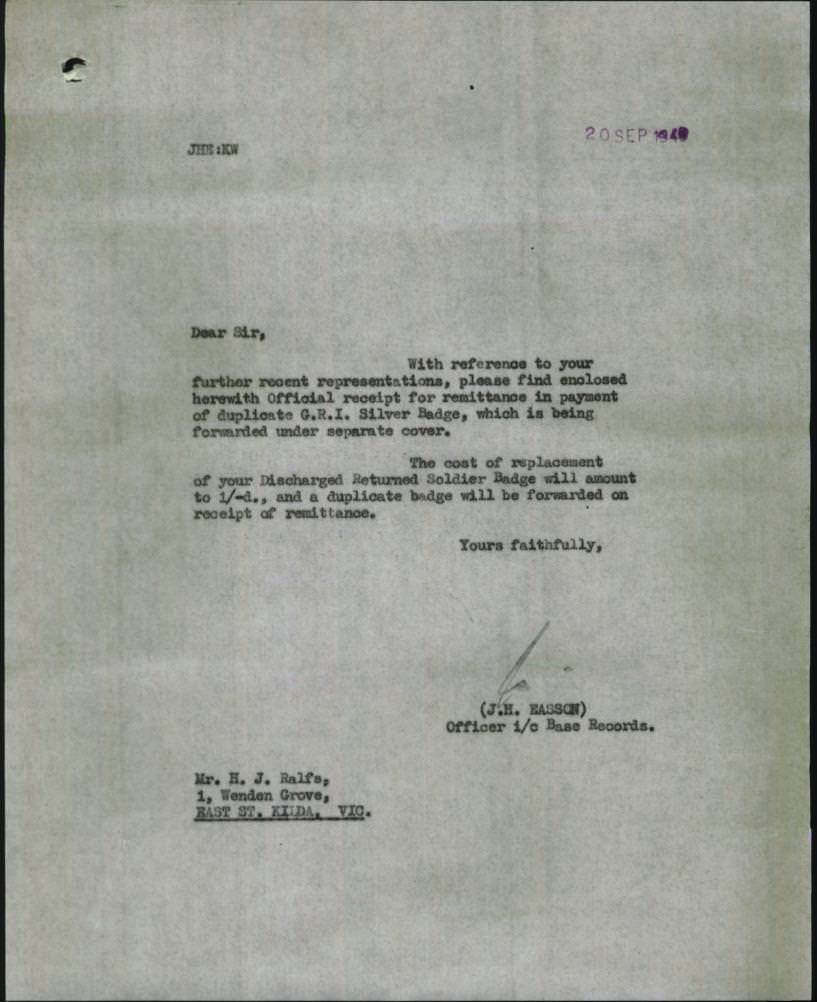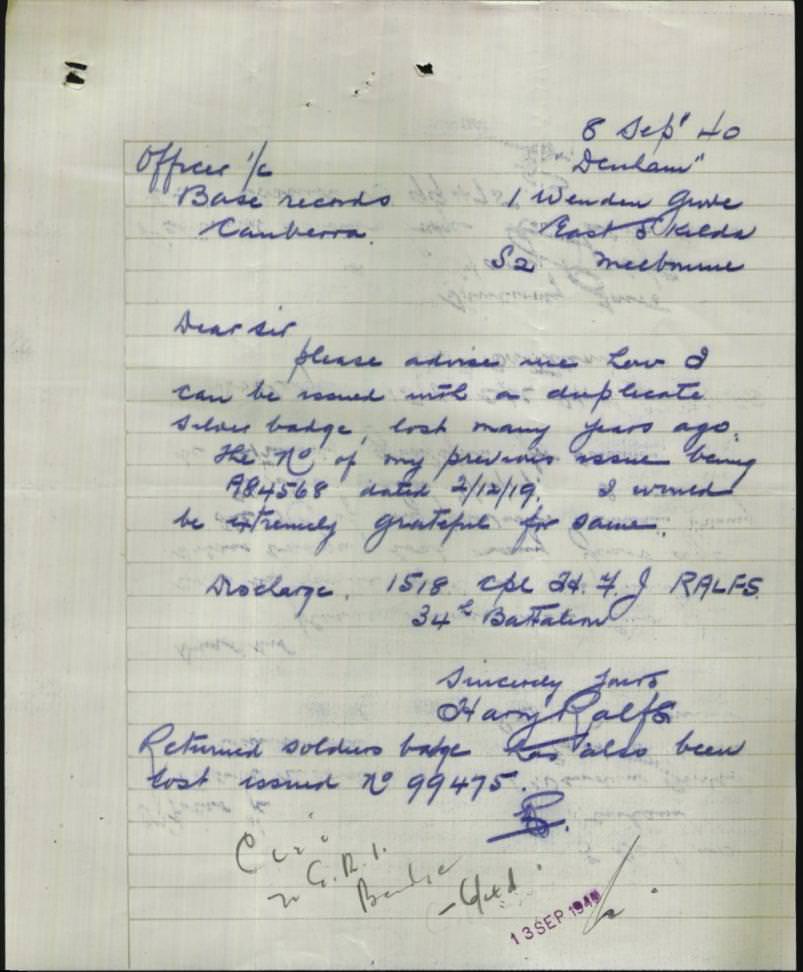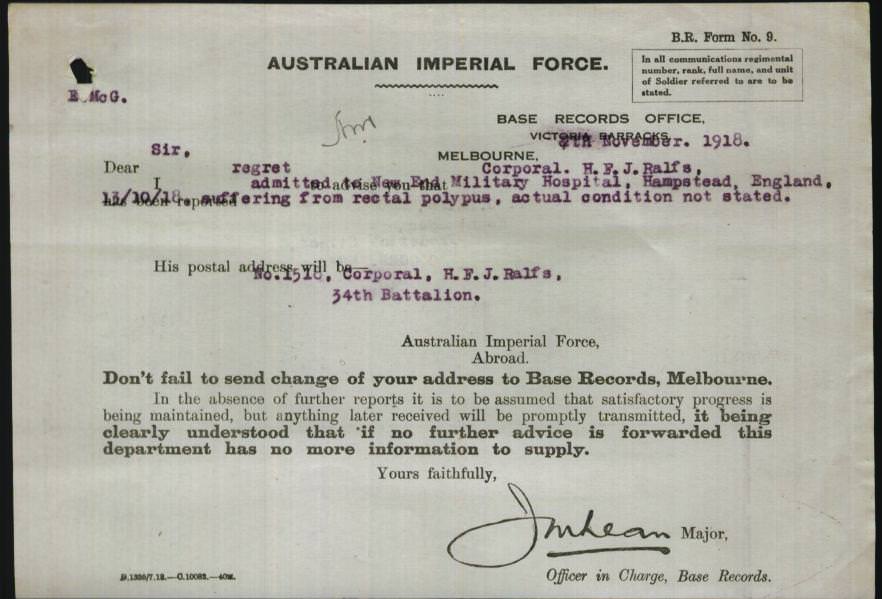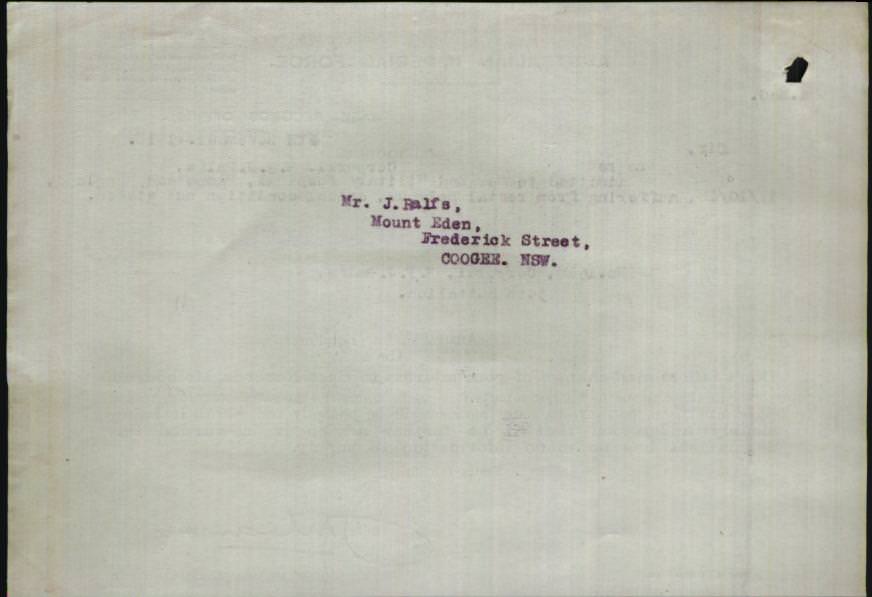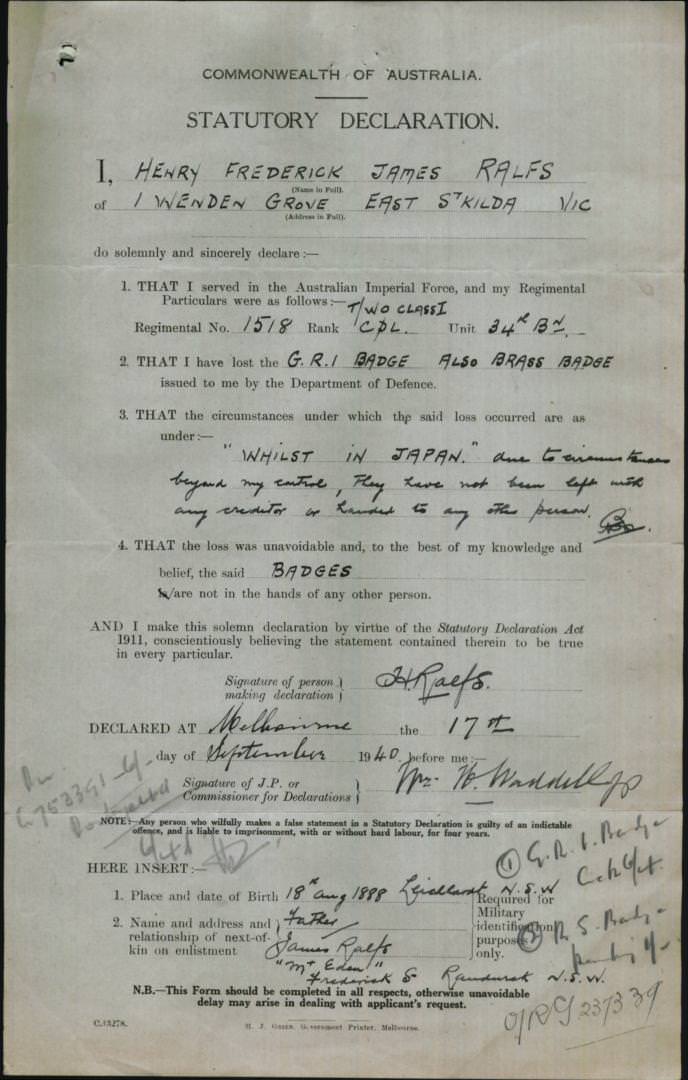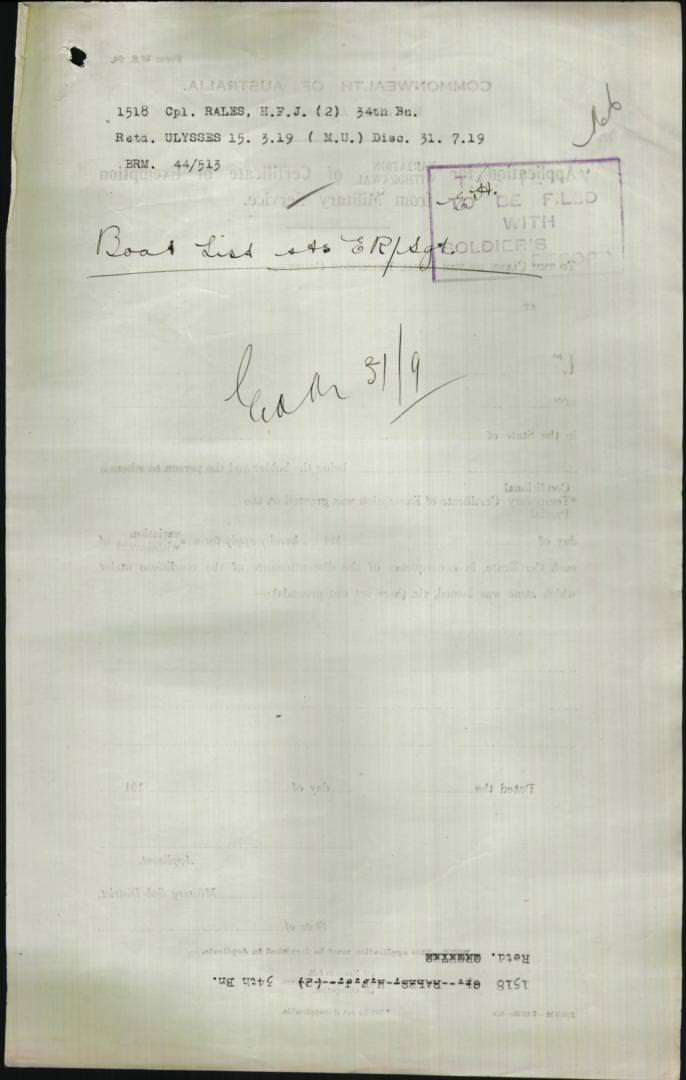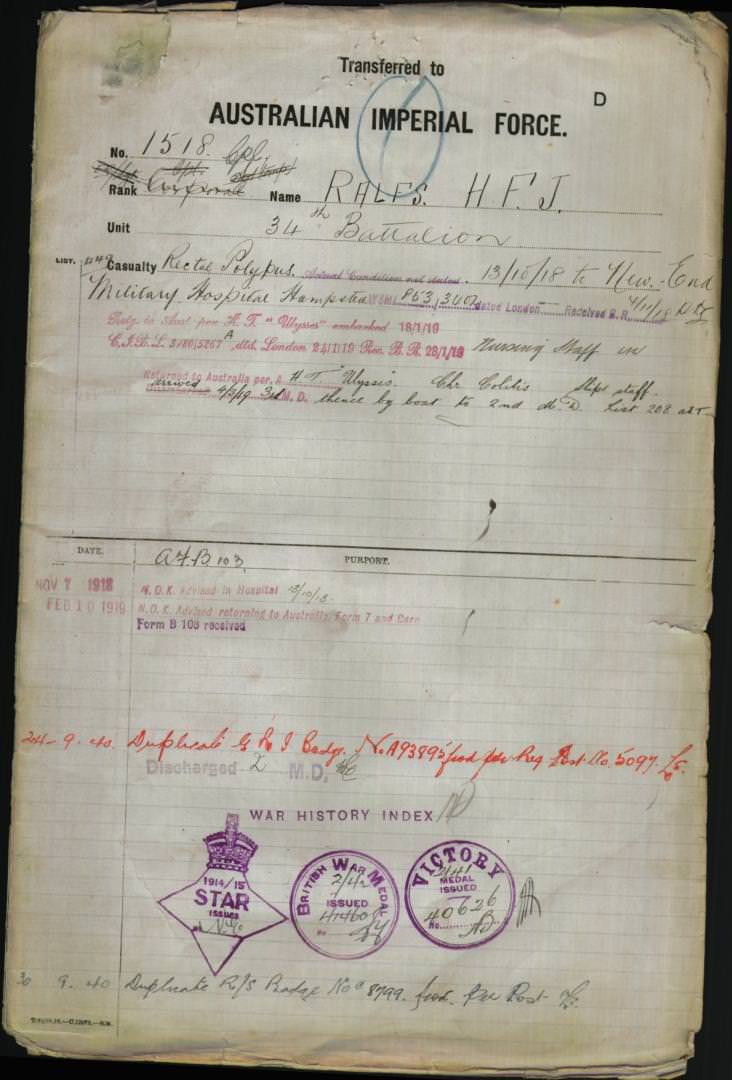
MILITARY COMMANDER
Brigadier General: Alexander JOBSON. D.S.O.
Born: 2nd April 1875. Clunes, Victoria Australia.
Married: 5 September 1905. North Sydney, New South Wales, Australia. Marriage Cert:7847/1905.
Wife: Madeline Ruth Jobson. nee: McGarland.
Died: 7 November 1933. Sydney, New South Wales, Australia. Death Cert:17215/1933.
Father: Christopher Jobson.
Mother: Elizabeth Cameron Jobson. nee: McColl.
INFORMATION
Jobson, Alexander (1875–1933) This article was published in Australian Dictionary of Biography, Volume 9, (MUP), 1983. "Alexander Jobson (1875-1933), public accountant, soldier and financial writer, was born on 2 April 1875 at Clunes, Victoria, son of Christopher Jobson, English-born merchant, and his second wife Elizabeth Cameron, née McColl, from Scotland. Educated at Clunes State School and Eton (Queensland) Public School, at 14 Jobson started as a junior clerk with the Australian Mutual Provident Society in Melbourne. He studied accountancy and in 1896 qualified as Associate of the Institute of Actuaries (London).
Jobson moved to Sydney in 1902 and became actuary for Australasia for the Equitable Life Assurance Society of the United States of America. On 5 September 1905 he married Madaline Ruth, daughter of Judge Alfred McFarland, at St Thomas Anglican Church, North Sydney, and next year began his own business as a consulting accountant and actuary. In 1910-16 he also wrote on company finances in his column 'Profit and Loss' which appeared weekly in the Sydney Sun. He was noted for his frank analysis; indeed, his criticisms of the Co-operative Assurance Co. resulted in the Sun and Jobson being sued for £50,000 damages for libel in 1914. The action was unsuccessful, Jobson's article being considered 'fair comment on a matter of public interest'.
Jobson devoted much time to military activities. He had joined the Victorian Scottish Regiment in August 1898, was commissioned in December 1899 and promoted captain in August 1902. On moving to Sydney he transferred to the New South Wales Scottish Rifles with the rank of lieutenant and was promoted captain in 1903 and major in 1909. He transferred in that rank to the 25th Infantry Regiment in July 1912, and next July was promoted lieutenant-colonel and appointed to command the 34th Infantry Regiment, Australian Military Forces. In July 1915 he took command of the 35th Infantry Regiment but on 10 February 1916 he was appointed to the Australian Imperial Force with the rank of colonel to command the 9th Infantry Brigade. He was promoted temporary brigadier general and in May embarked at Sydney.

The Maitland Daily Mercury - 18 Feb 1916
Jobson's brigade reached France in November after training in England and saw action first in the Armentières sector in November-December 1916, then at Houplines, Le Touquet, Ploegsteert and Messines. Jobson was mentioned in dispatches on 1 June 1917 and recalled the preparations for, and participation in, the battle of Messines as the most interesting part of his war service. Twice during the earlier months of 1917, during Major General (Sir) John Monash's absence, he temporarily commanded the 3rd Division. Although Monash had praised his 'active mind and great industry' and placed great trust in his leadership at Messines, Jobson was not by nature suited for active command.

Charles Bean commented that he was 'a man of many fine and endearing qualities, of marked ability and absolute probity, but constitutionally incapable of facing battle conditions'. Offered the opportunity to resign by Monash, Jobson accepted. On 25 August he relinquished command of the 9th Brigade and on 9 December his A.I.F. appointment was terminated. That month he was again mentioned in dispatches and was awarded the Distinguished Service Order in the 1918 New Year honours.

AWM Photograph of Senior AIF Officers taken at Victoria Barracks Melbourne in 1920.
Brigadier-General A. JOBSON identified by red circle.
After returning home Jobson became State president of the New South Wales branch of the Returned Sailors' and Soldiers' Imperial League of Australia in 1918. In October that year he was given command of the 2nd Battalion, 53rd Infantry Regiment, A.M.F., with the rank of lieutenant-colonel and honorary brigadier general, and in December 1919 was promoted colonel. In February 1921 he was transferred to the reserve of officers. In January 1918 he had resumed his financial writing in Sydney newspapers and in 1920 he began publication of the Australian Investment Digest (later to be called Jobson's Investment Digest of Australia and New Zealand), a monthly publication summarizing and criticizing latest company reports. A fellow of the Australasian Corporation of Public Accountants, and generally acknowledged as one of the keenest and most searching of financial critics, he established a considerable professional reputation. He held numerous business directorates; in particular he was appointed a director of the A.M.P. Society in 1925 and vice-chairman in 1932.
Survived by his wife and only child Alexander, Jobson collapsed and died in King Street, Sydney, from coronary artery occlusion on and was cremated with Presbyterian forms. His estate was sworn for probate at £11,102. One of his sisters, Nancy Jobson, was a prominent educationist and another, Isabella Kate Jobson, saw active service as a nursing sister in World War I.
by Colin Forster.
Australian Dictionary of Biography
Brigadier General Alexander JOBSONBrigadier General Alexander JOBSON, who was awarded the D.S.O. returned from the front recently owing to ill health. Whilst in France he was in Command of the 9th Brigade. He was born at Clunes (Victoria) in 1875. He was educated partly in the town of Mackay (Queensland) and started his business career with the A.M.P. in Melbourne. Coming over to Sydney he joined the Equitable Life Assurance Company, subsequently starting in business for himself as an accountant. His military career commenced in 1893 when he joined the Scottish Rifles. Six months later he was appointed Captain. He obtained his crown in 1909, and was made Lieutenant Colonel in 1913.
Trove Artice
MR. ALEXANDER JOBSON. Sudden Death in the City.Mr. Alexander Jobson, one of the leading public accountants and actuaries of Sydney collapsed in Pitt-street late yesterday after- noon. He was taken to Sydney Hospital, but it was found there that he had died, apparently instantly. Mr. Jobson recently had suffered a severe attack of influenza, and had subsequently complained of, pains in the region of the heart. Mr. Jobson, who was 58 years of age, was deputy-chairman of the Australian Mutual Provident Society, founder of "Jobson's Investment Digest of Australia and New Zealand," and director of several other companies.
Mr. Jobson was generally acknowledged as one of the keenest and most searching of financial critics, and experts have freely availed themselves of his wide knowledge of actuarial work. He was in the closest touch with business and professional circles of Sydney, and his opinion was always accepted with the utmost confidence because of his exceedingly high integrity and lack of bias. His publications on matters relating to his profession were standard works. He was born at Clunes, Victoria, on April 2, 1875. He was educated in that town and in Mackay, Queensland. Returning to Victoria, he entered the service of the Australian Mutual Provident Society at the age of 14 years, and during the 13 years he was in the service of that Institution he gained valuable training for his future work. in 1896 he obtained his degree of Associate of the Institute of Actuarlos (London), sub- sequently, Mr. Jobson became actuary for Australasia for the Equitable Life Assurance Co. of U.S.A. He remained with that company for four years, and when it decided to discontinue actuarial business in Australia he commenced business on his own account as a consulting accountant and actuary.
Despite the close study he had made of financial matters, Mr. Jobson had been able to devote time to the study of «lilitary science. Joining the Victorian Scottish Regiment in 1898, he rose to the rank of captain. On coming to Sydney five years later he Joined the Scottish Regiment here. When the volunteer system was abandoned, Mr. Jobson took charge of a Citizen Force bat- talion, with the rank of Lieutenant-Colonel. In the Great War he was given command of the 9th Infantry Brigade, and he served with the A.I.F. in France as Brigadier-General until breakdown in health forced him to relinquish the command. He was twice men- tioned In despatches, and was awarded the D.S.O.
After the war he became associated with "Smith's Weekly," having charge of a special financial section, which he decided subsequently to turn into a monthly publication under the title of "Jobson's Investment Digest of Australia and New Zealand." He was appointed a director of the A.M.P. Society in 1925, and vice-chairman when, on the death of Sir Alfred Meeks, Sir Samuel Hordern was elected chairman. He was also a director of De Havilland Aircraft Pty., Ltd., Hoyts Theatres, Ltd., Noyes Bros. (Sydney), Ltd., and the Commercial Building and In- vestment Co., Ltd. Formerly, he was a direc- tor of Bond's Cotton Mills, Ltd., and S. Bennett, Ltd. Mr. Jobson was auditor for Amalgamated Wireless (Australasia), Ltd., Dy mock's Book Arcade, and Commercial Build- ing and Investment Co. "Jobson's Investment Digest" is now published by Jobson's Publications. Ltd., of which Mr. Jobson was chairman of directors. Mr. Jobson's only hobby was golf, and he was an enthusiastic member of the Royal Sydney Golf Club.
Mr. Jobson is survived by Mrs. Jobson, who is a daughter of the late Judge MacFarland, by a son. Mr. A. J. (Peter) Jobson, and by two sisters, Miss Nancy Jobson, of Hopewood House School, Darling Point, and Miss Isabel Jobson, a distinguished war nursing sister, now of Melbourne. The funeral will take place tomorrow.
Trove Article
11th November 1933.
"The Sydney Morning Herald.
GENERAL ALEXANDER JOBSON. The Rev. J. L. Cope said that the late Brigadier-General Alex. Jobson was a man of simple tastes and avoided publicity. His work as a returned soldier for returned soldiers should not pass unnoticed. He was State president of the N.S.W. branch of the Re- turned Soldiers' League in those difficult times of 1918, when thousands of men were returning. In those days the returned men looked to the league as an inquiry annex to the Repatriation Department. Brigadier-General; Jobson's task was a great one, with a large, unwieldy committee, no special pensions officer as now, and frequent attempts to make the league political. He did his work quietly and unostentatiously, and many then young , returned soldiers can now thank him for his ever ready financial advice. He was a soldier, a gentleman, and a distinguished citizen.
Trove Article
Military Records
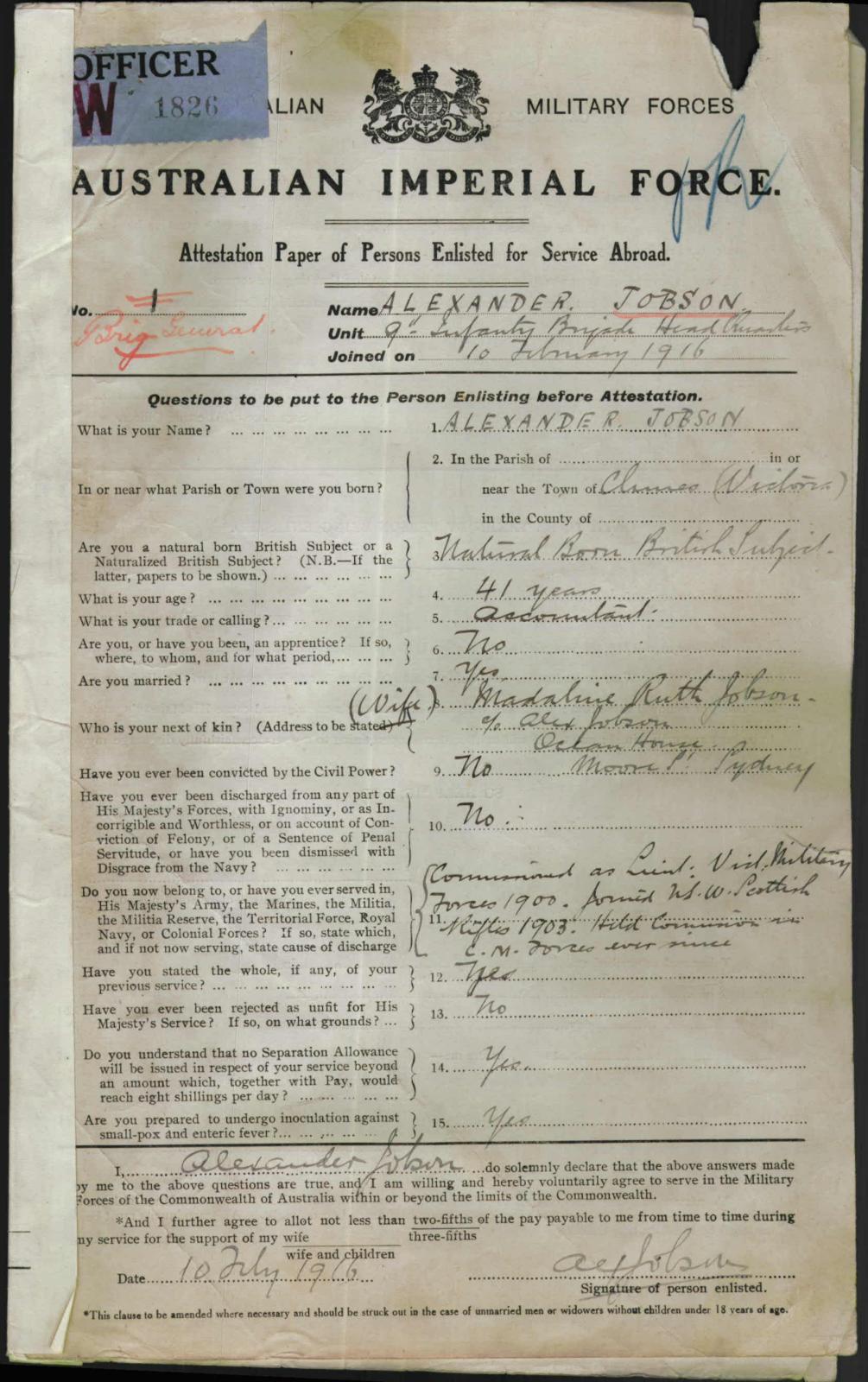
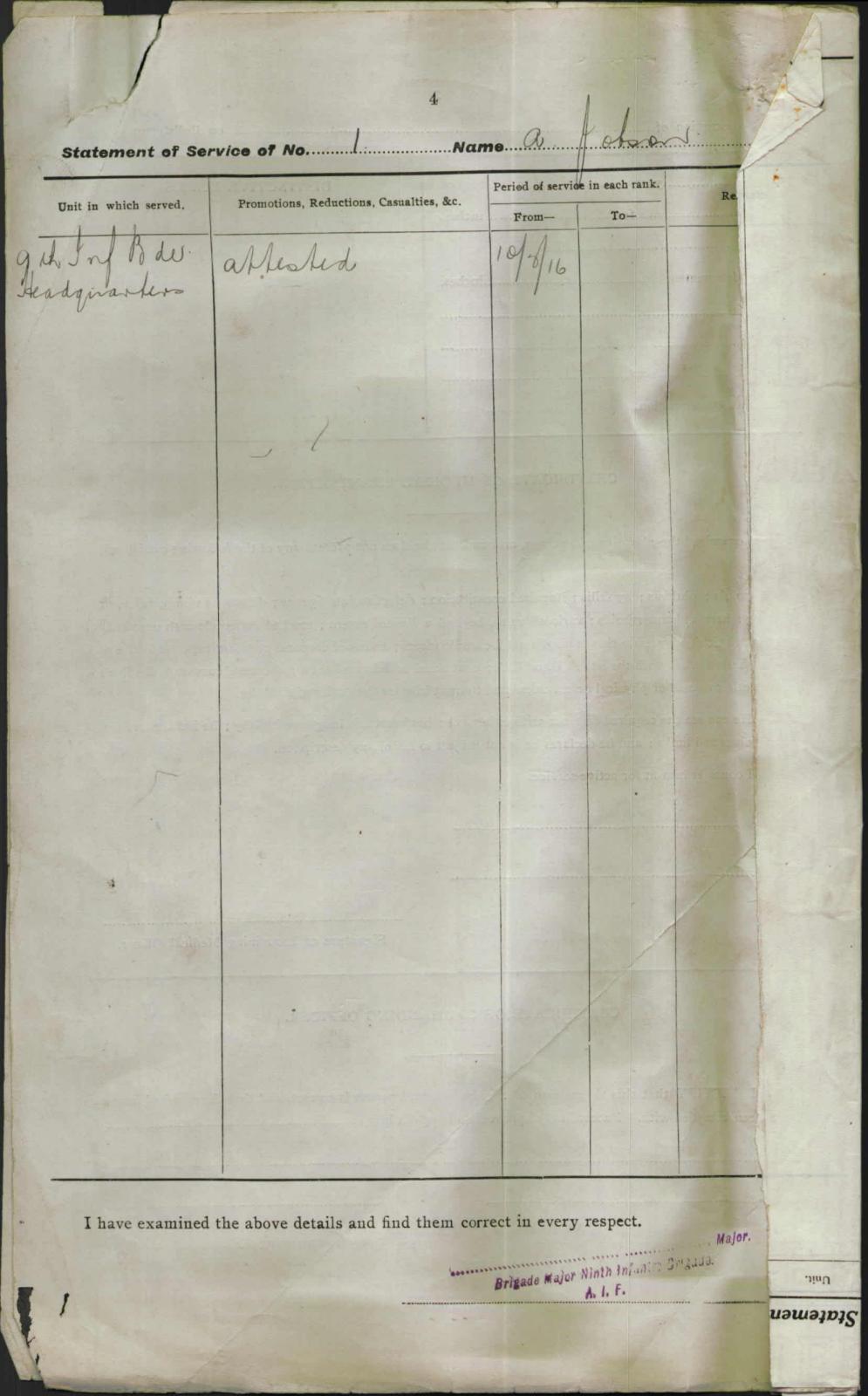
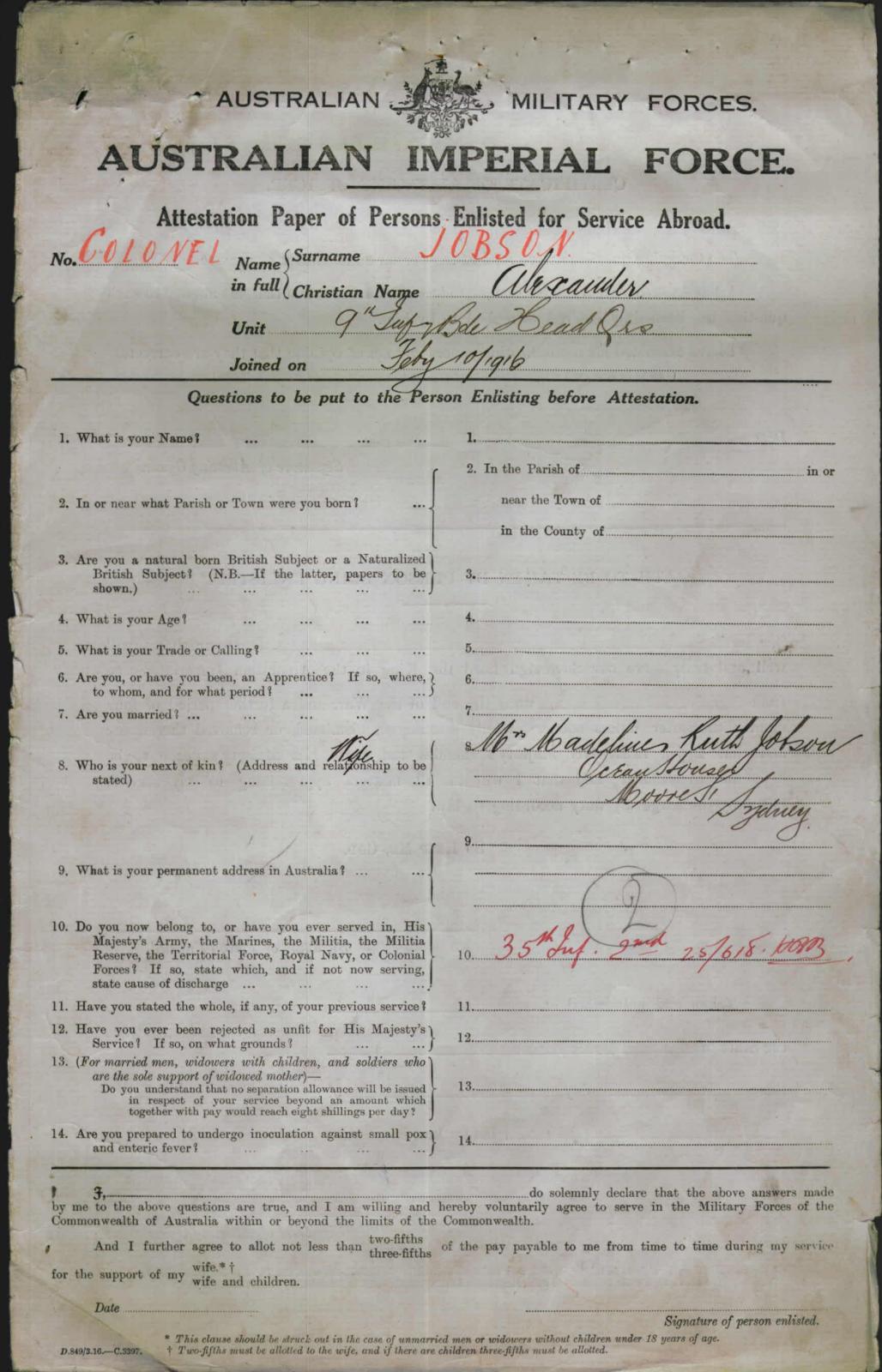
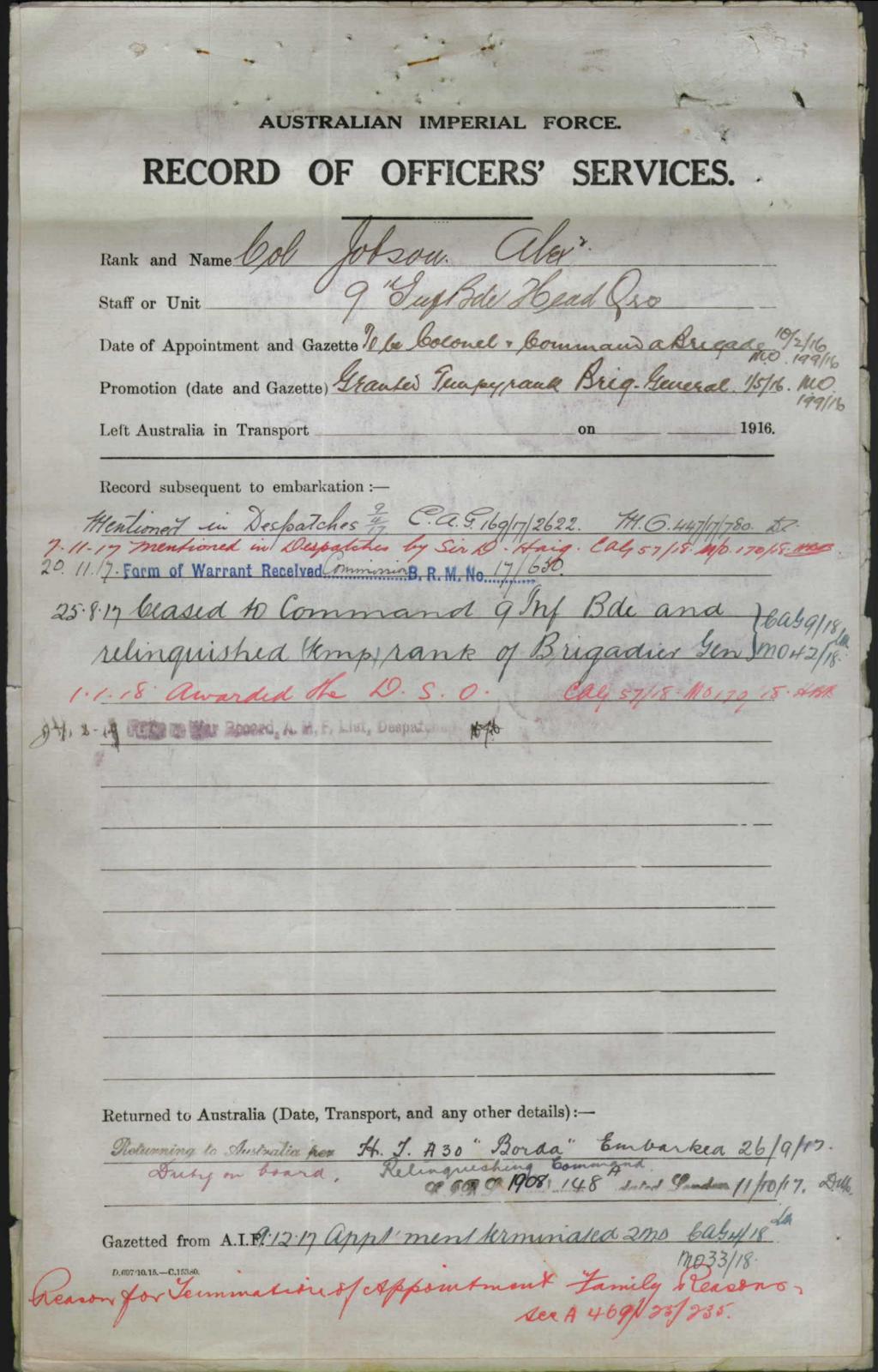

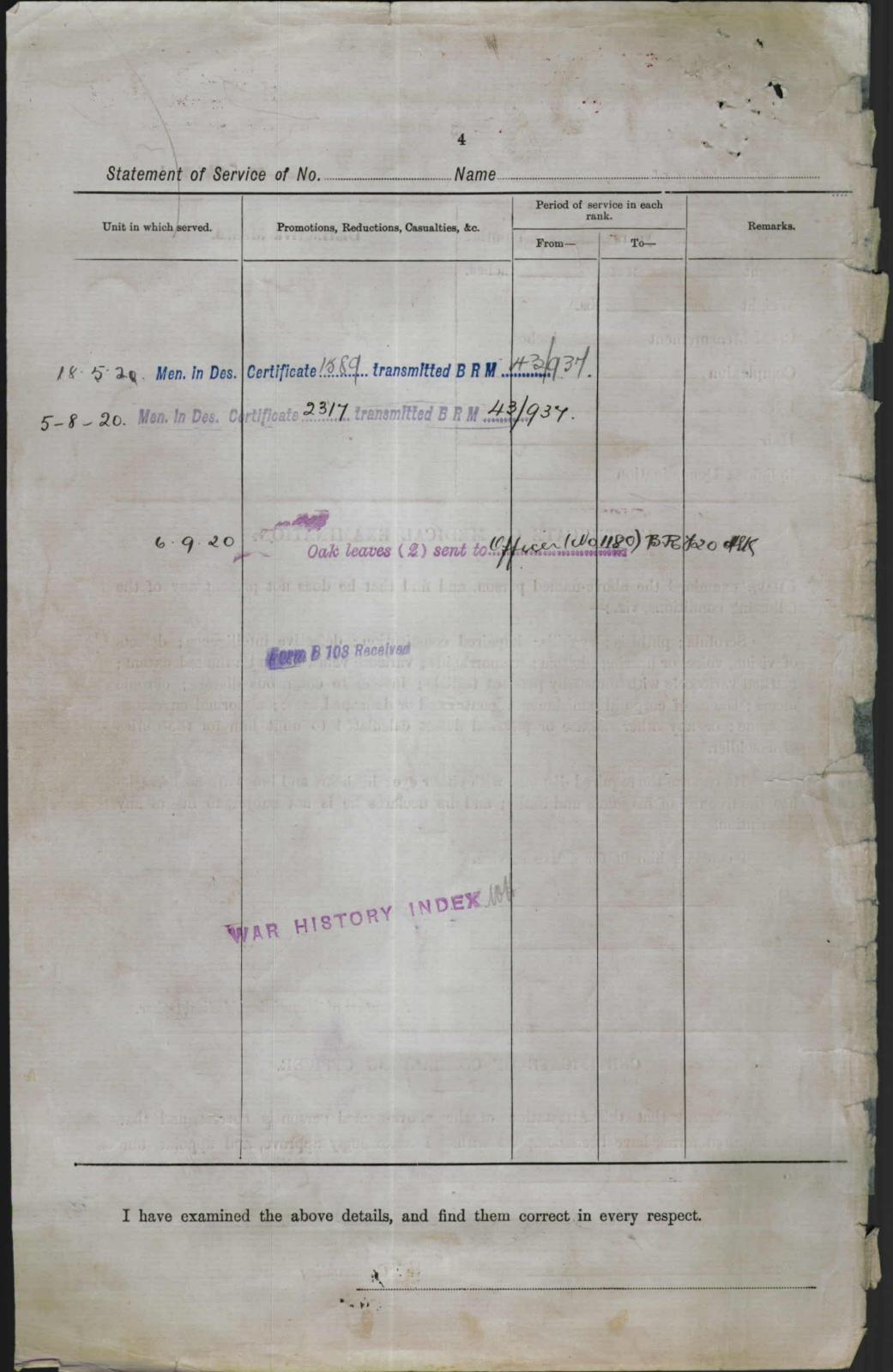
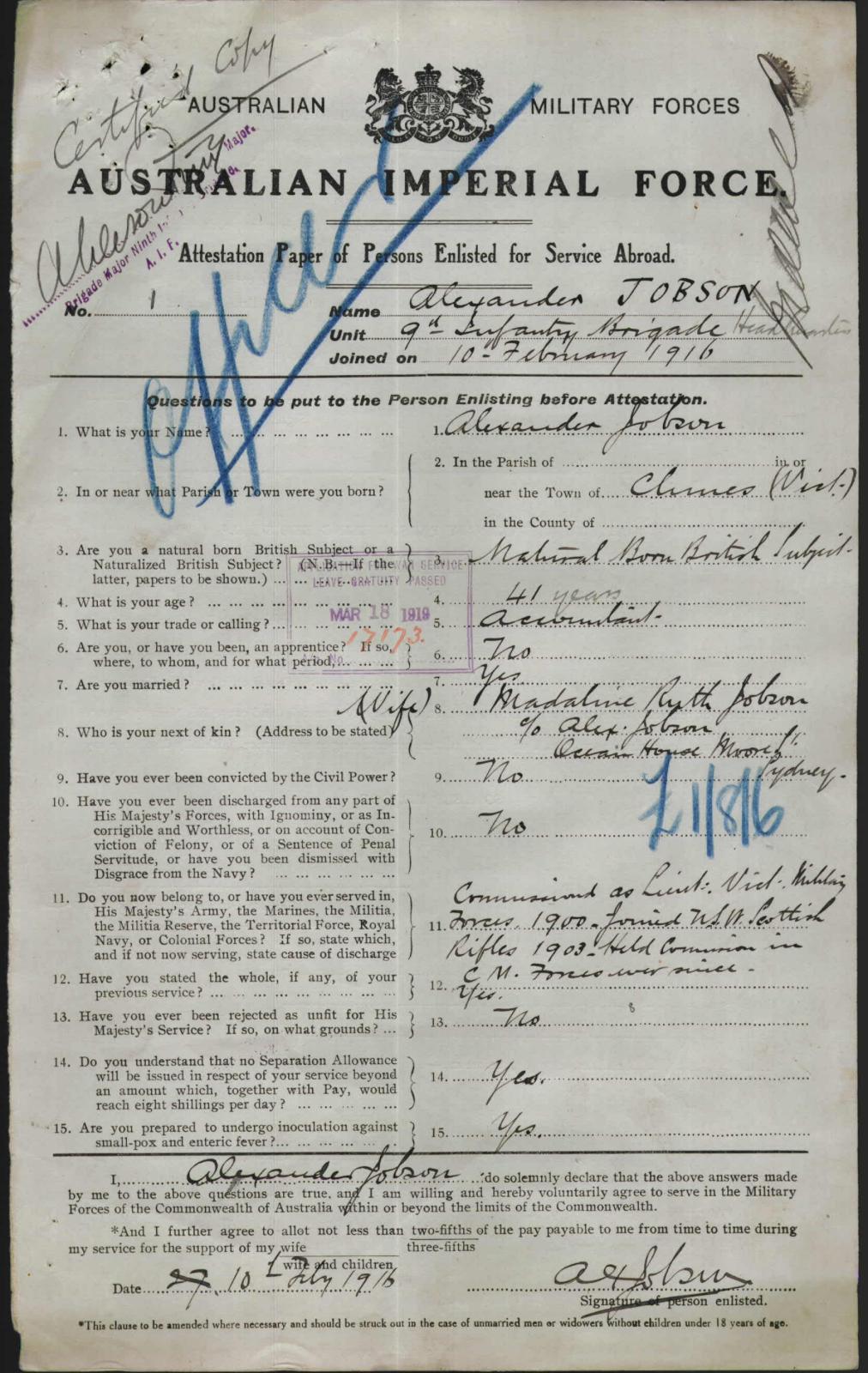
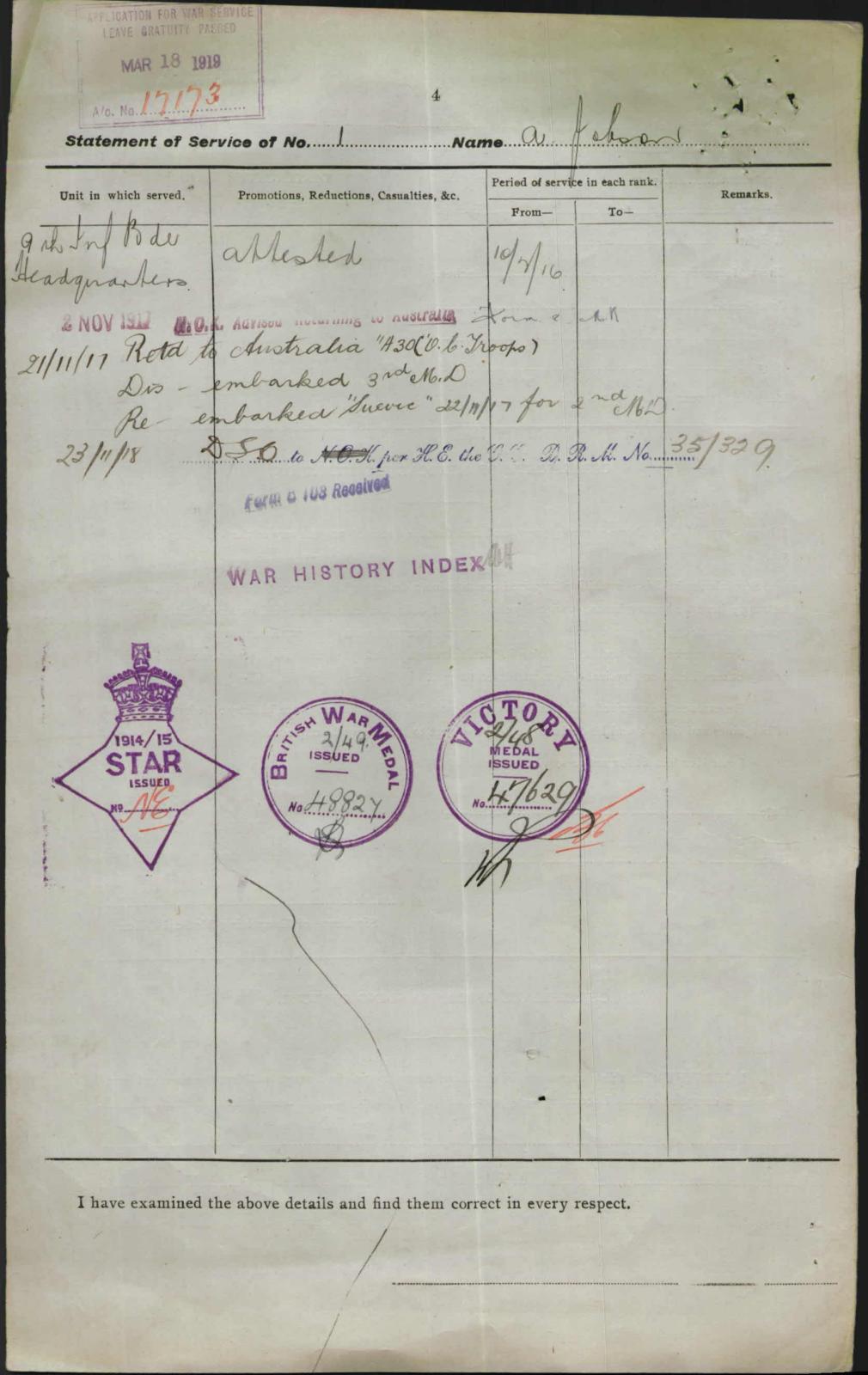




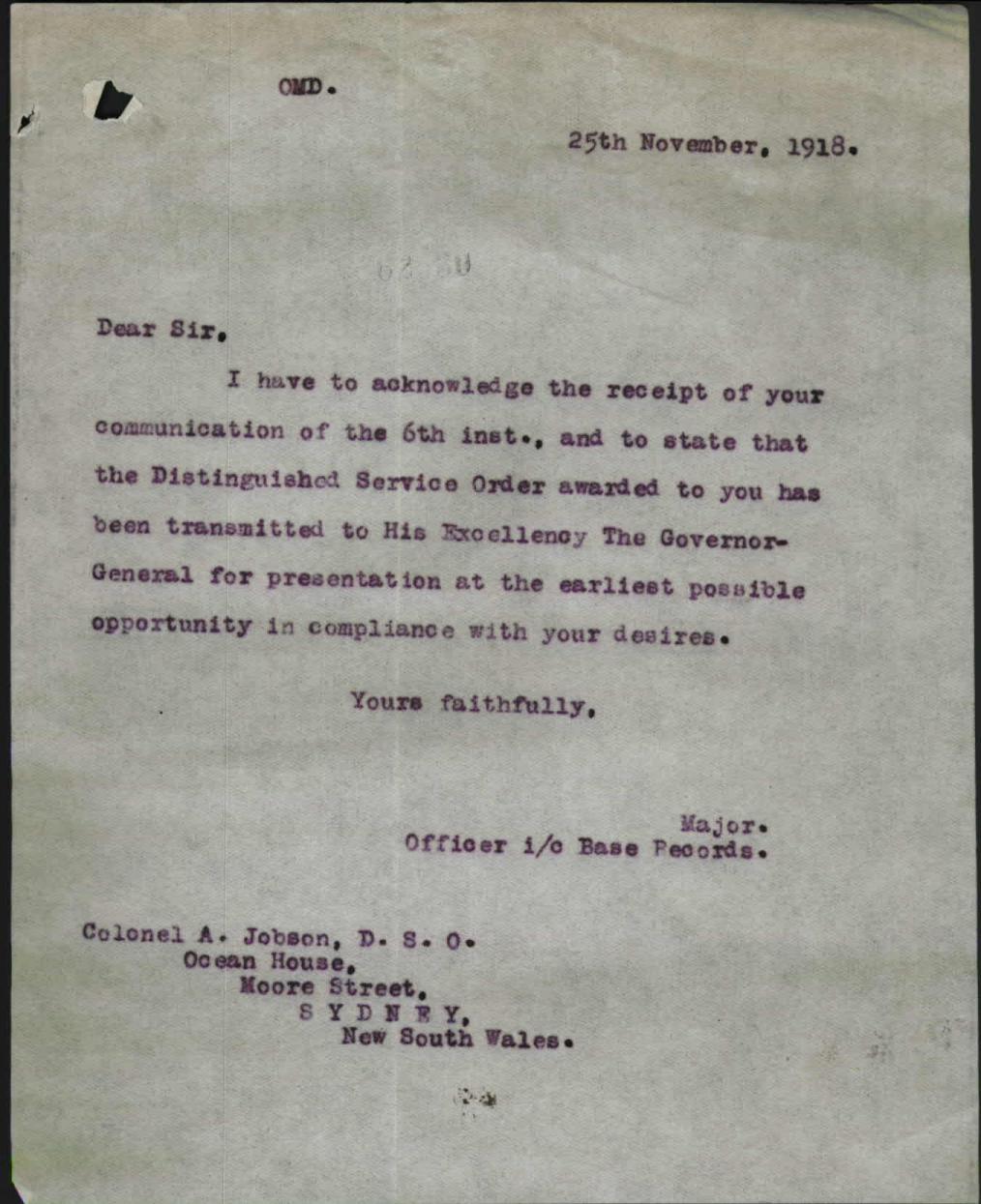

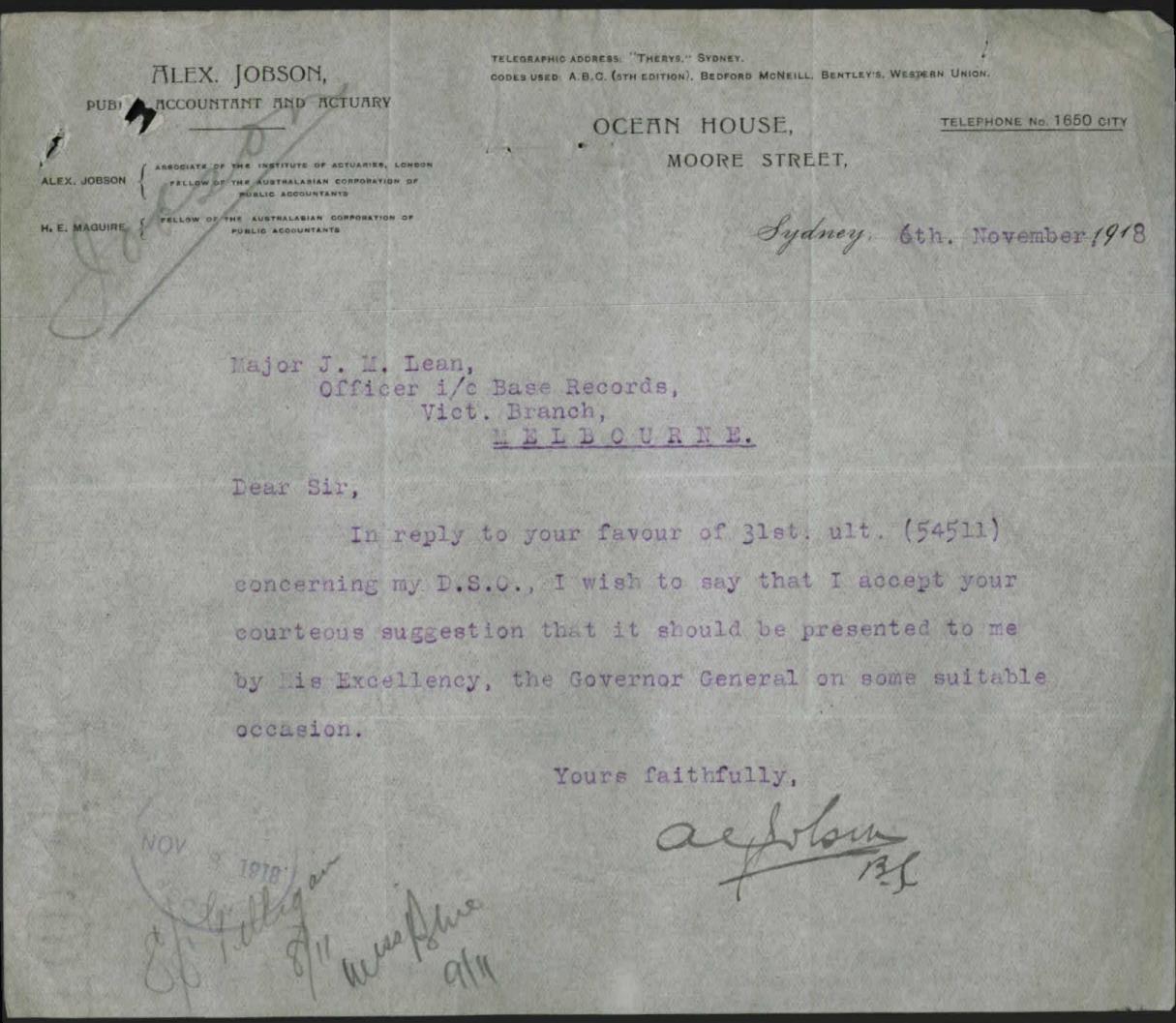
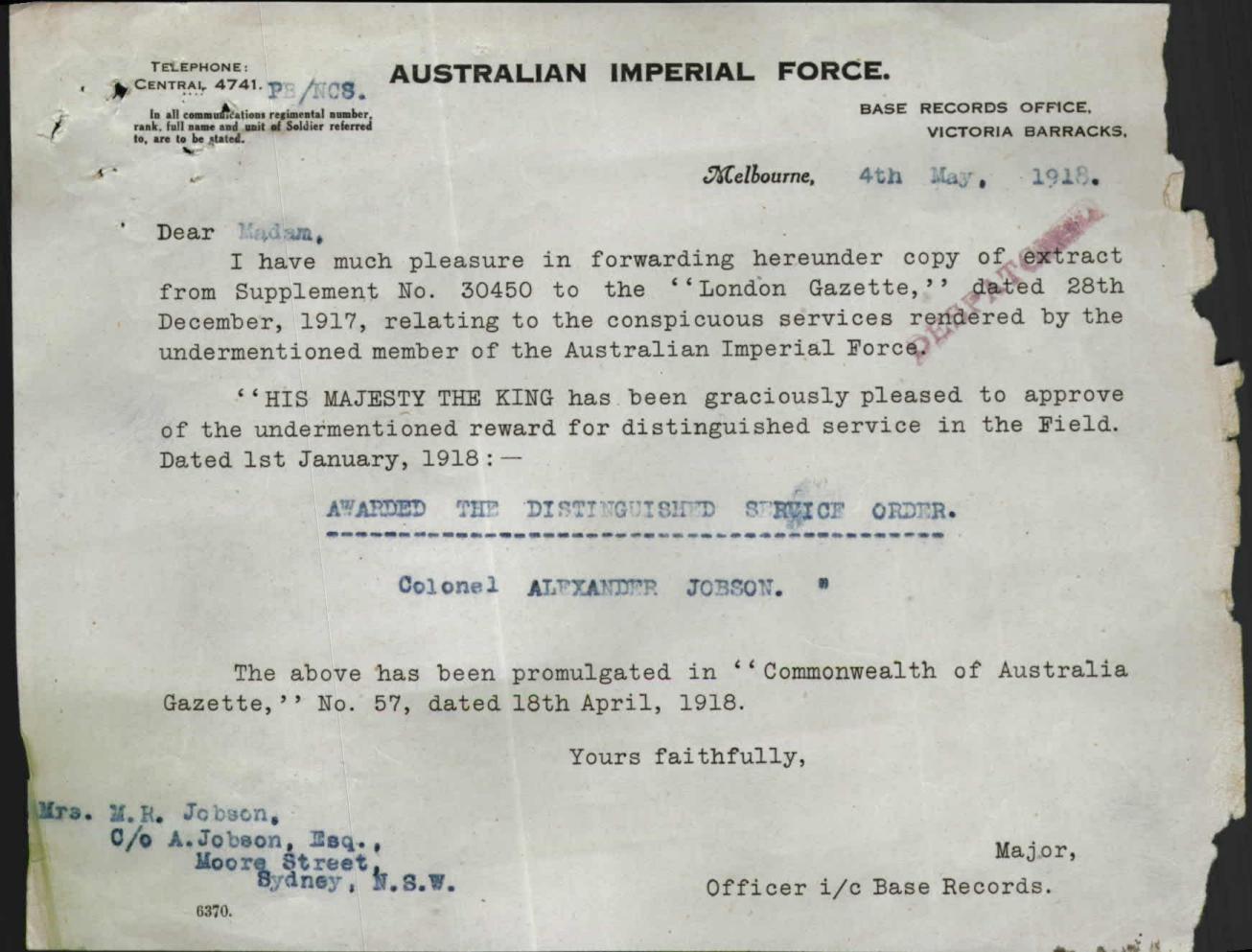
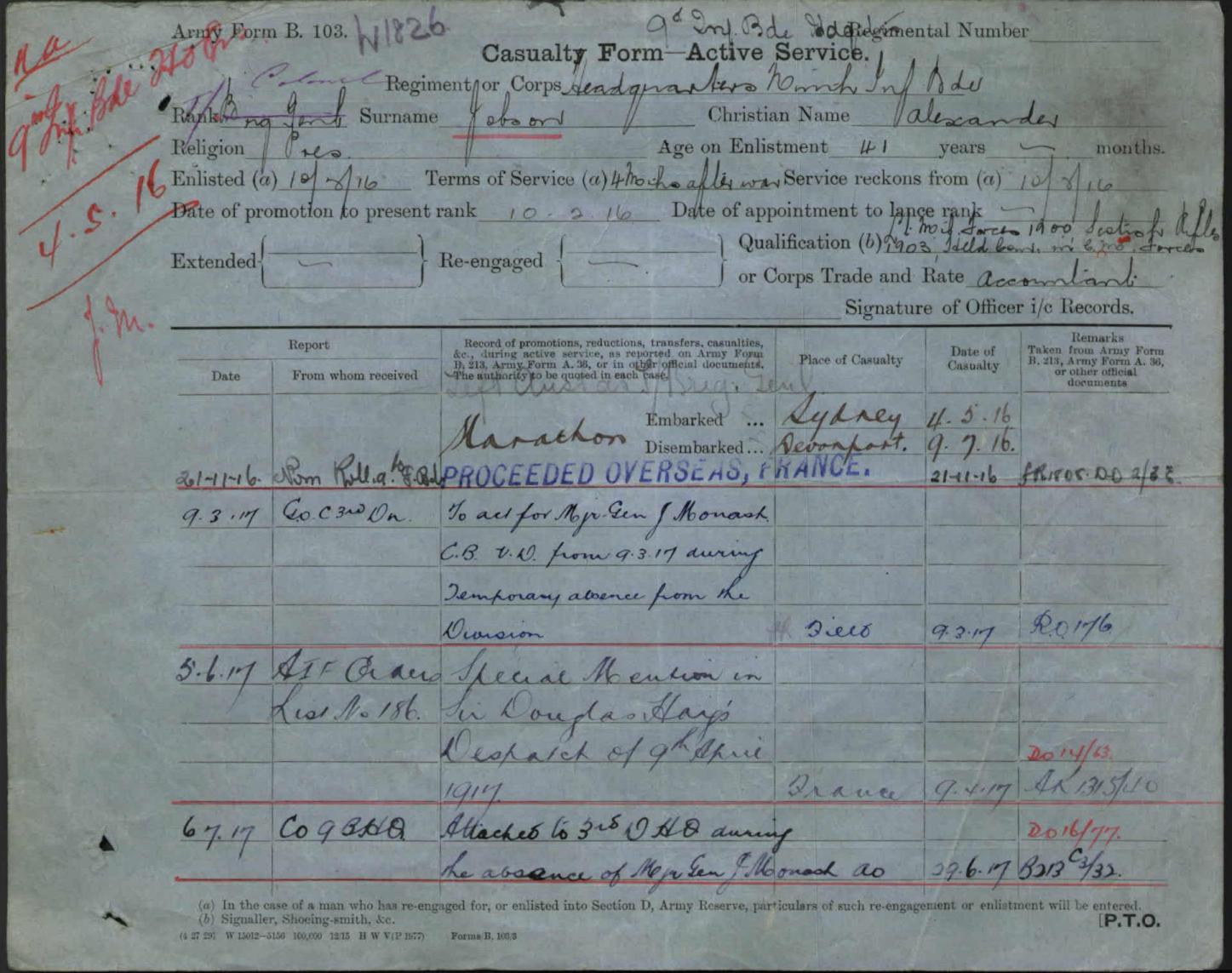
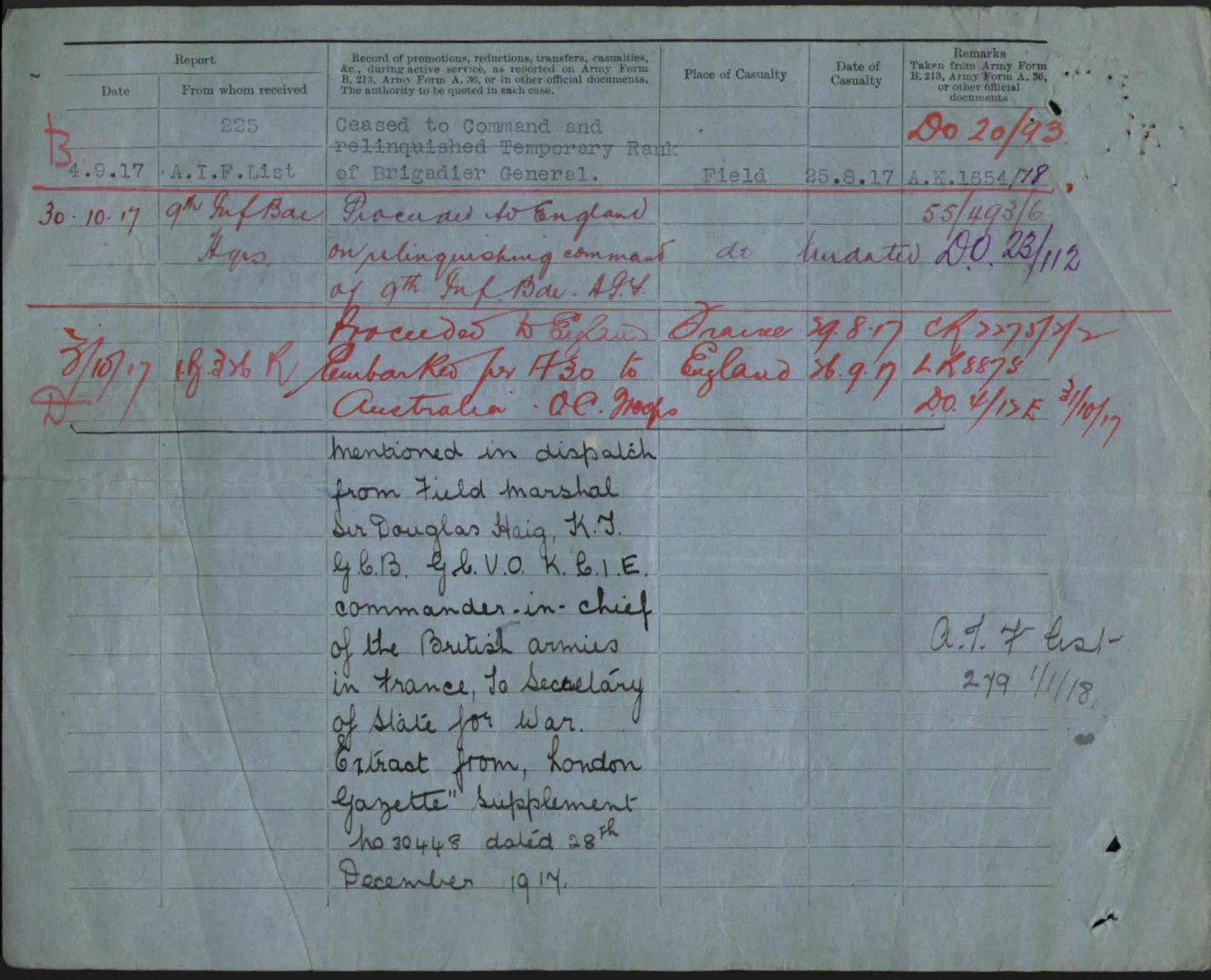
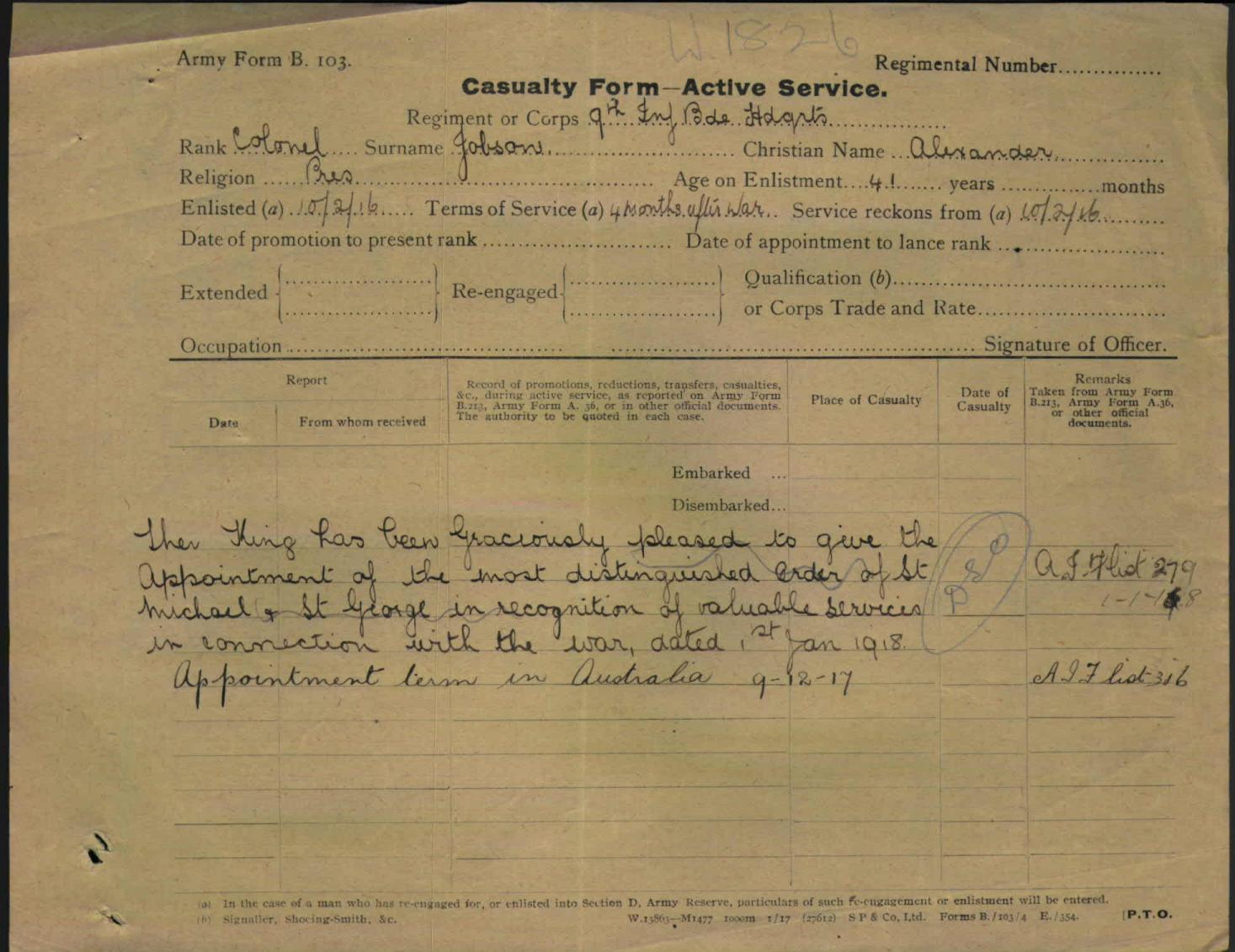
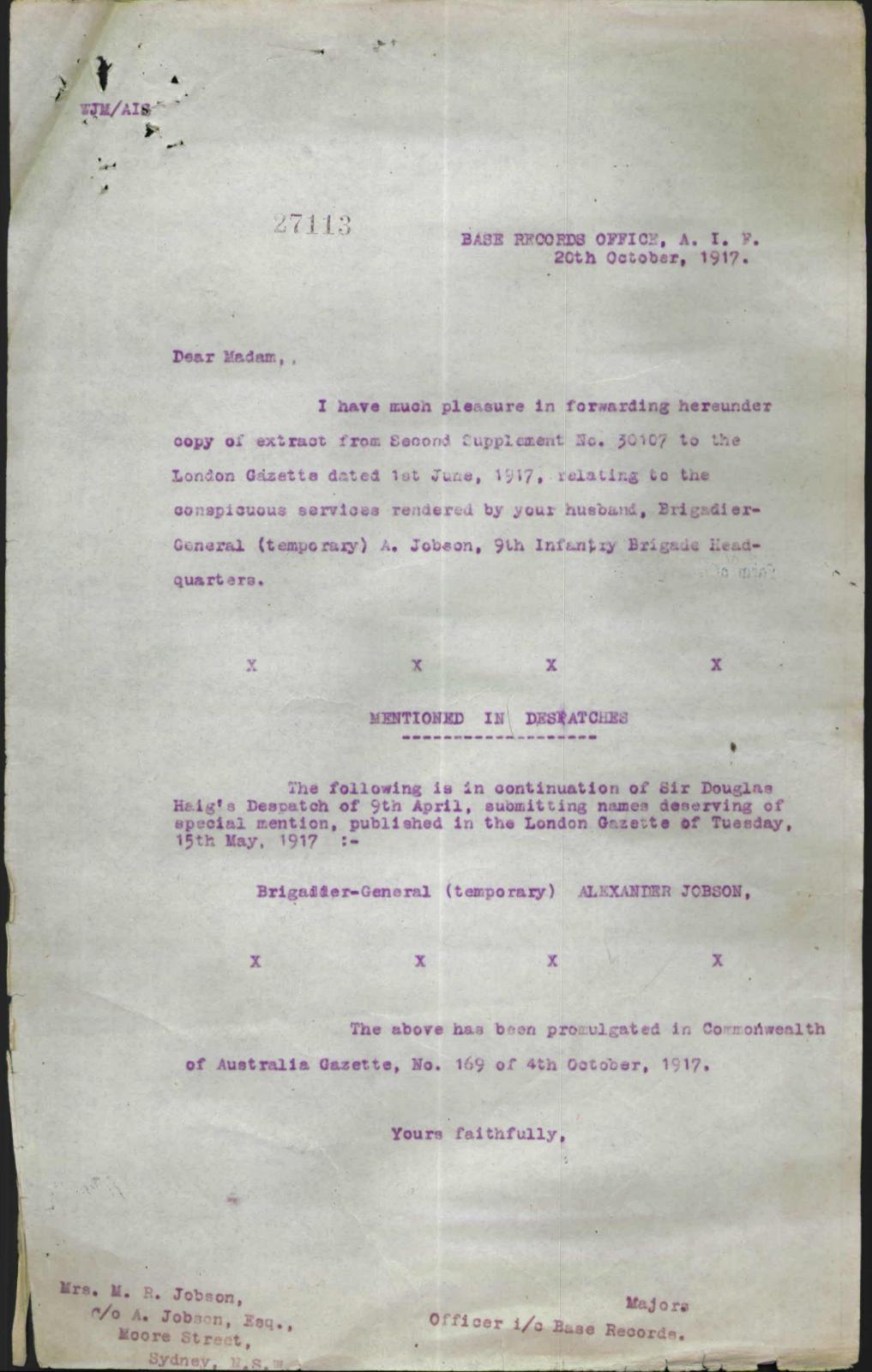

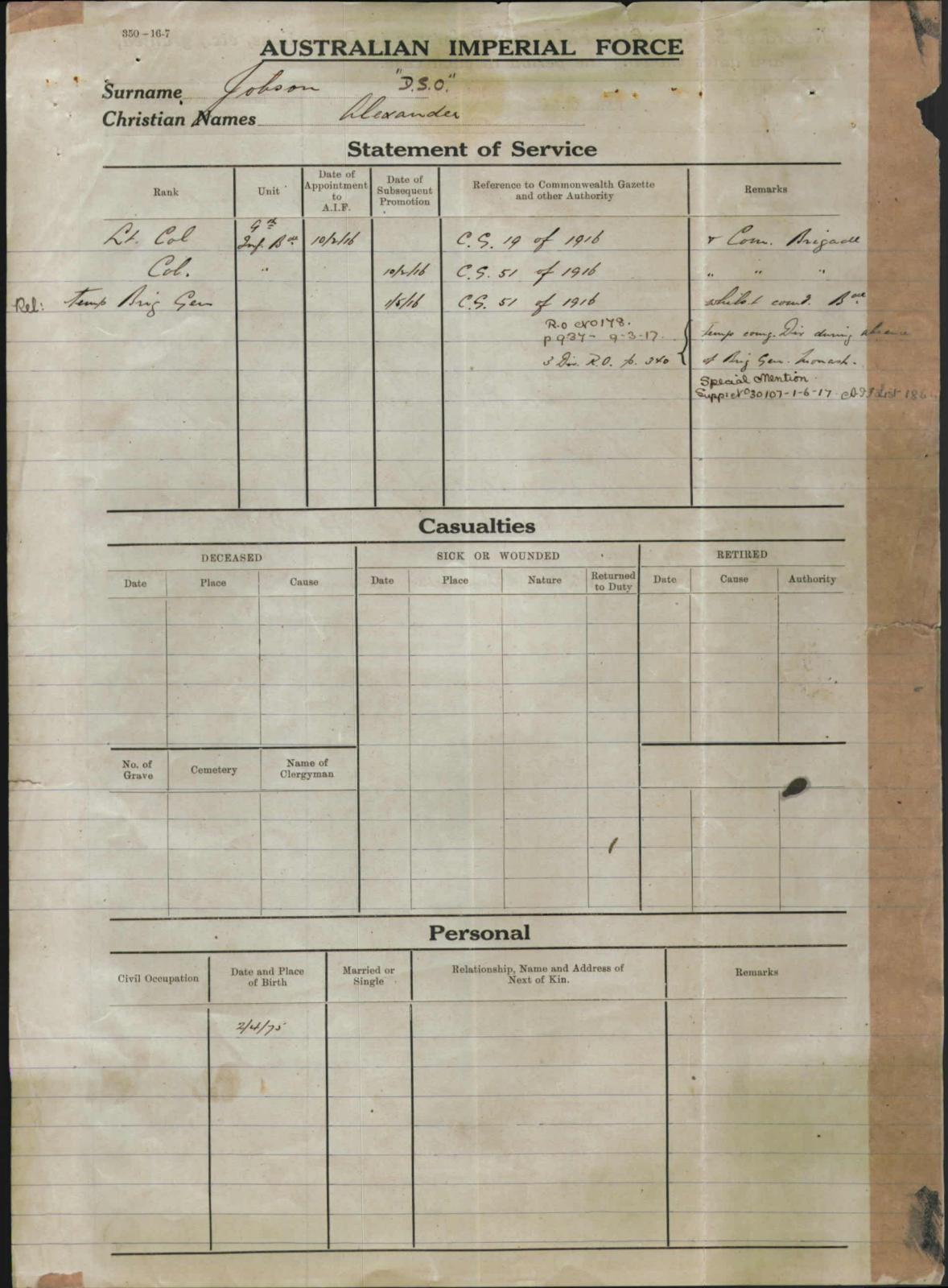
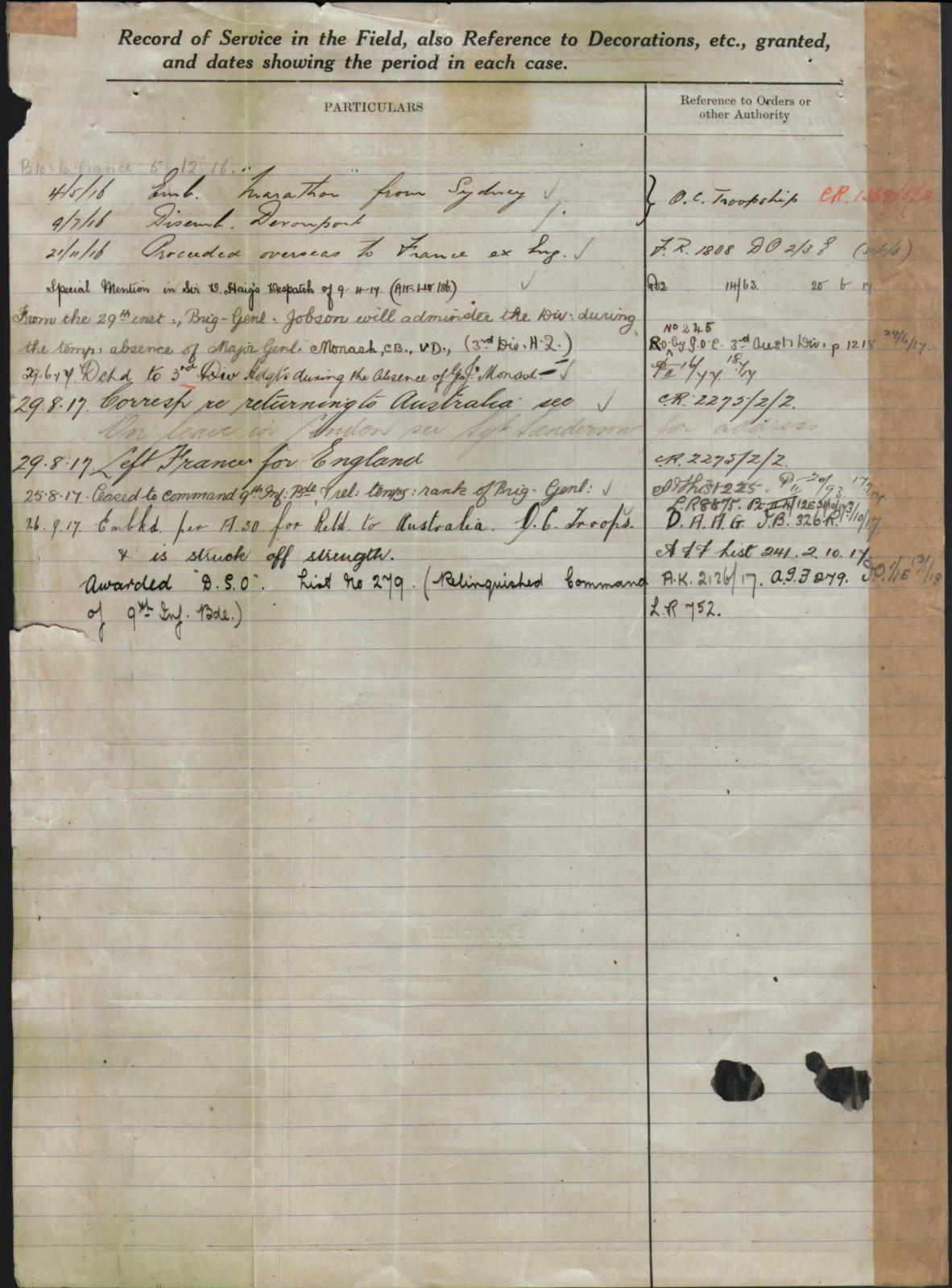
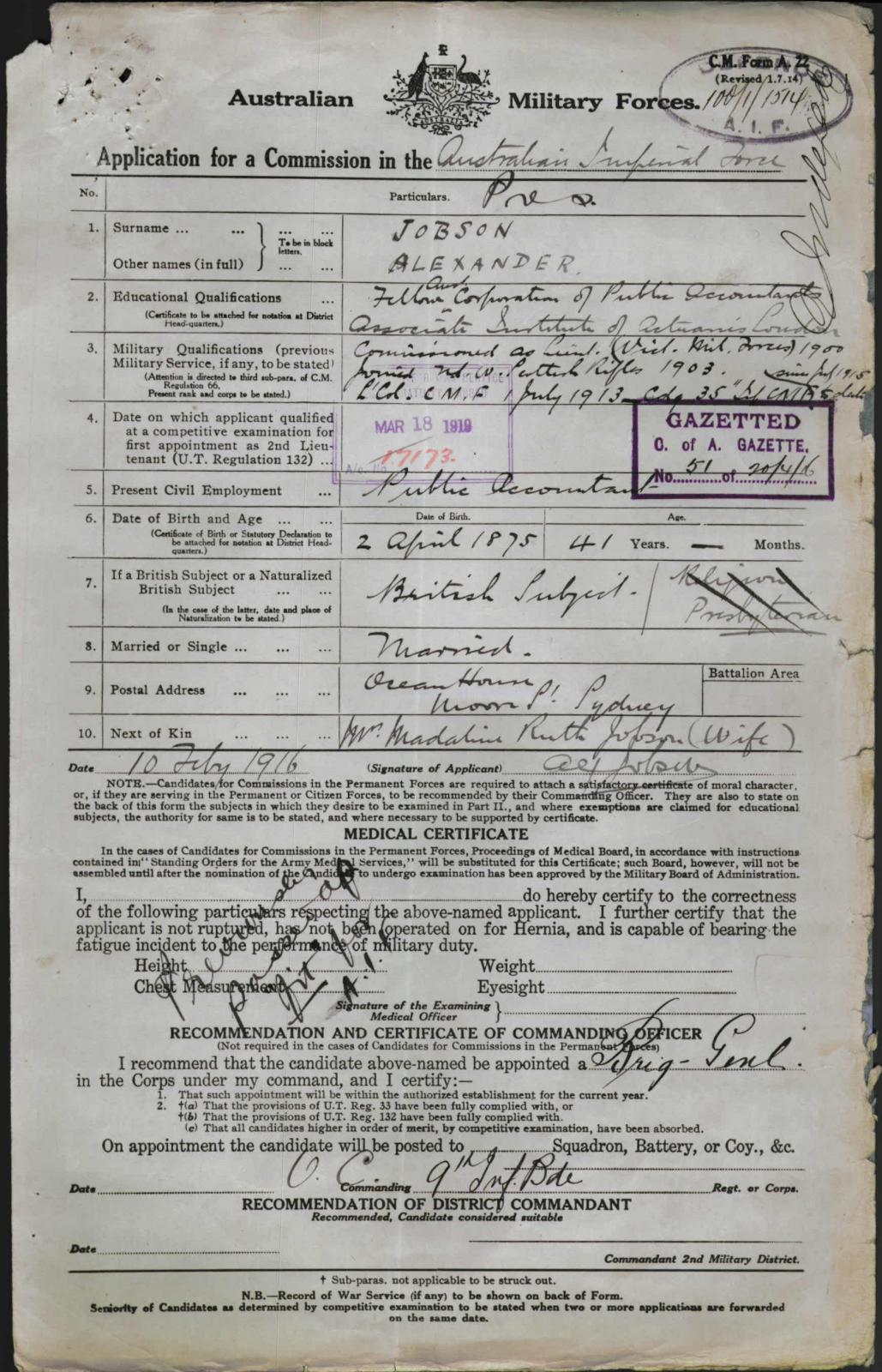
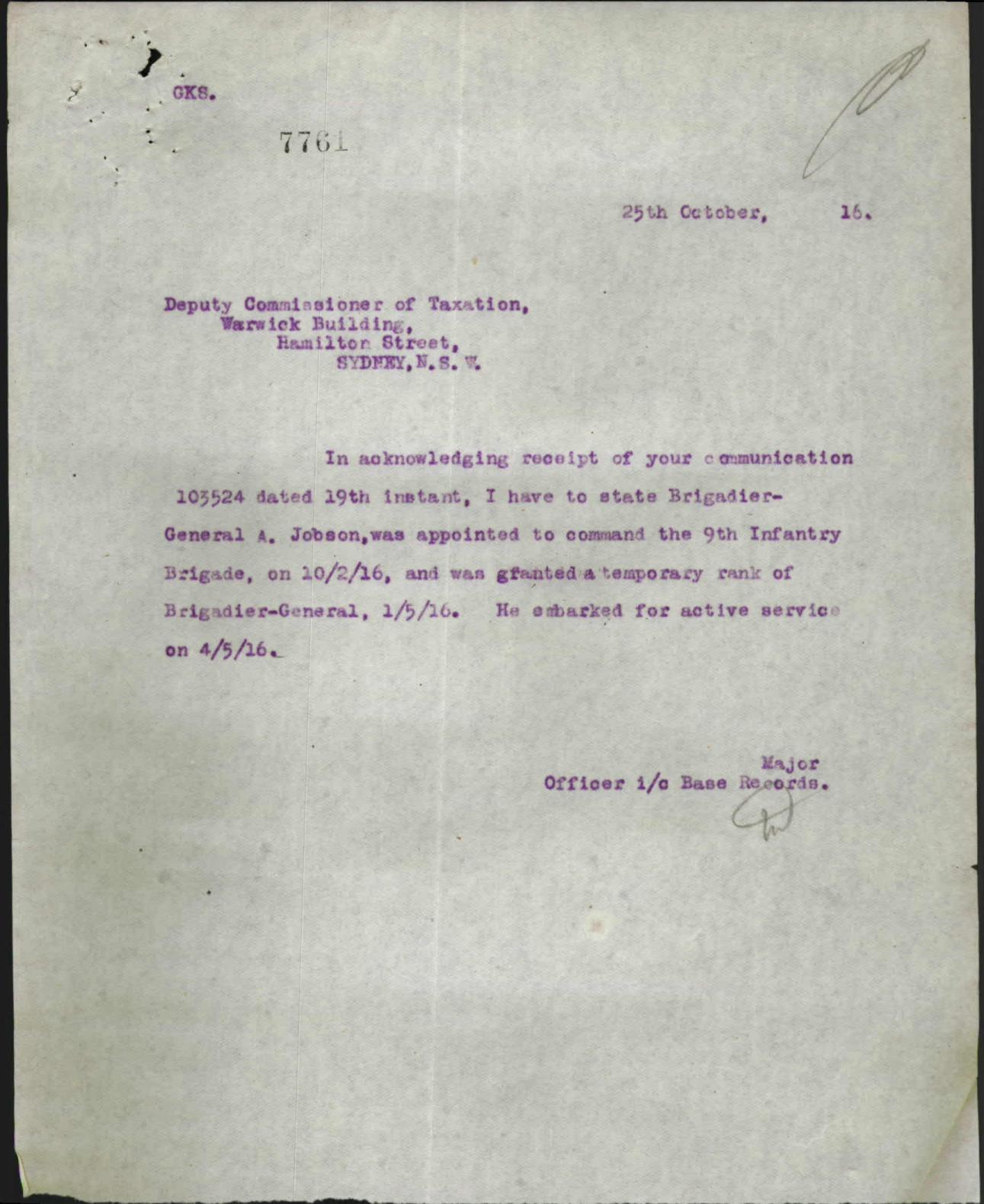
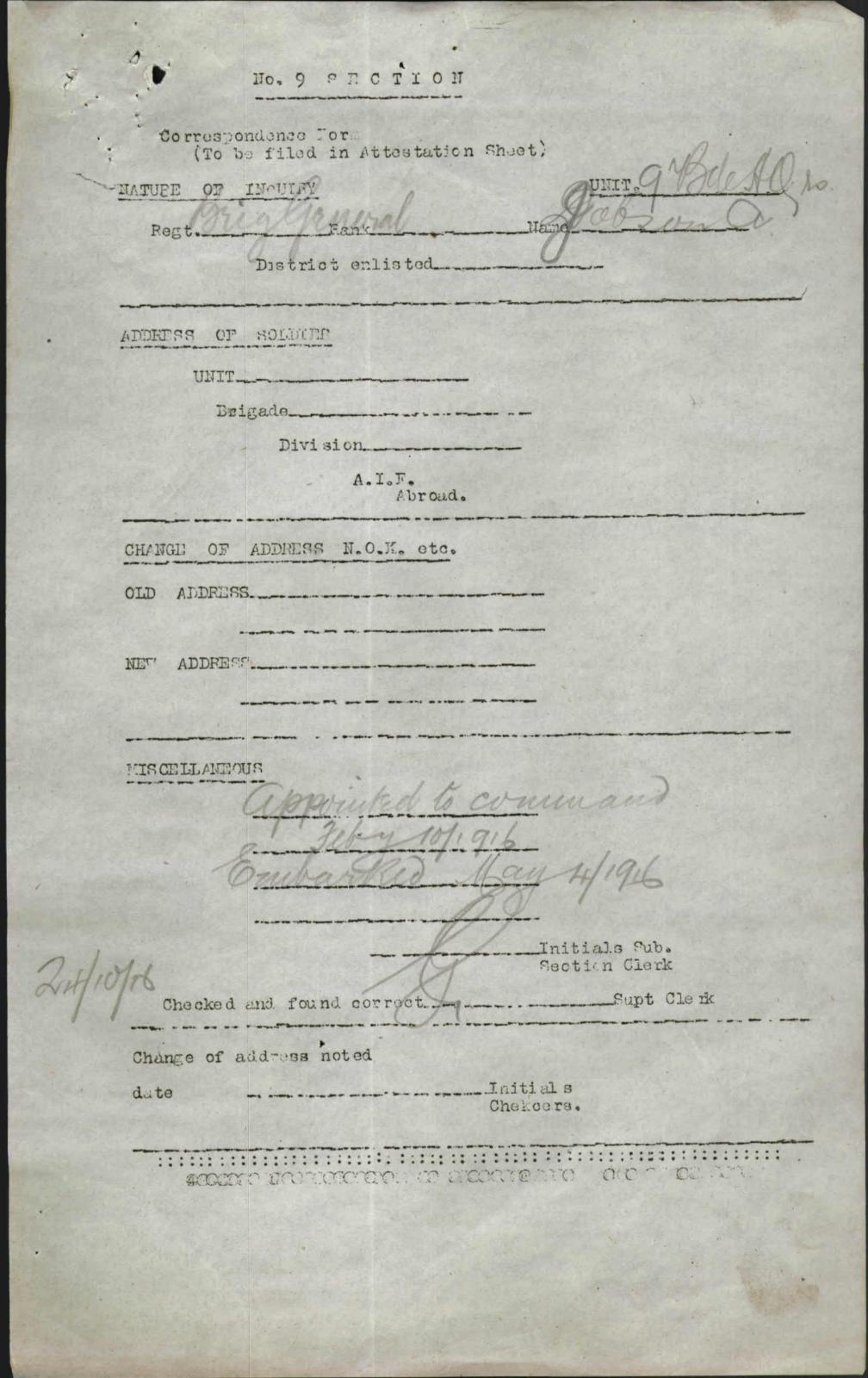
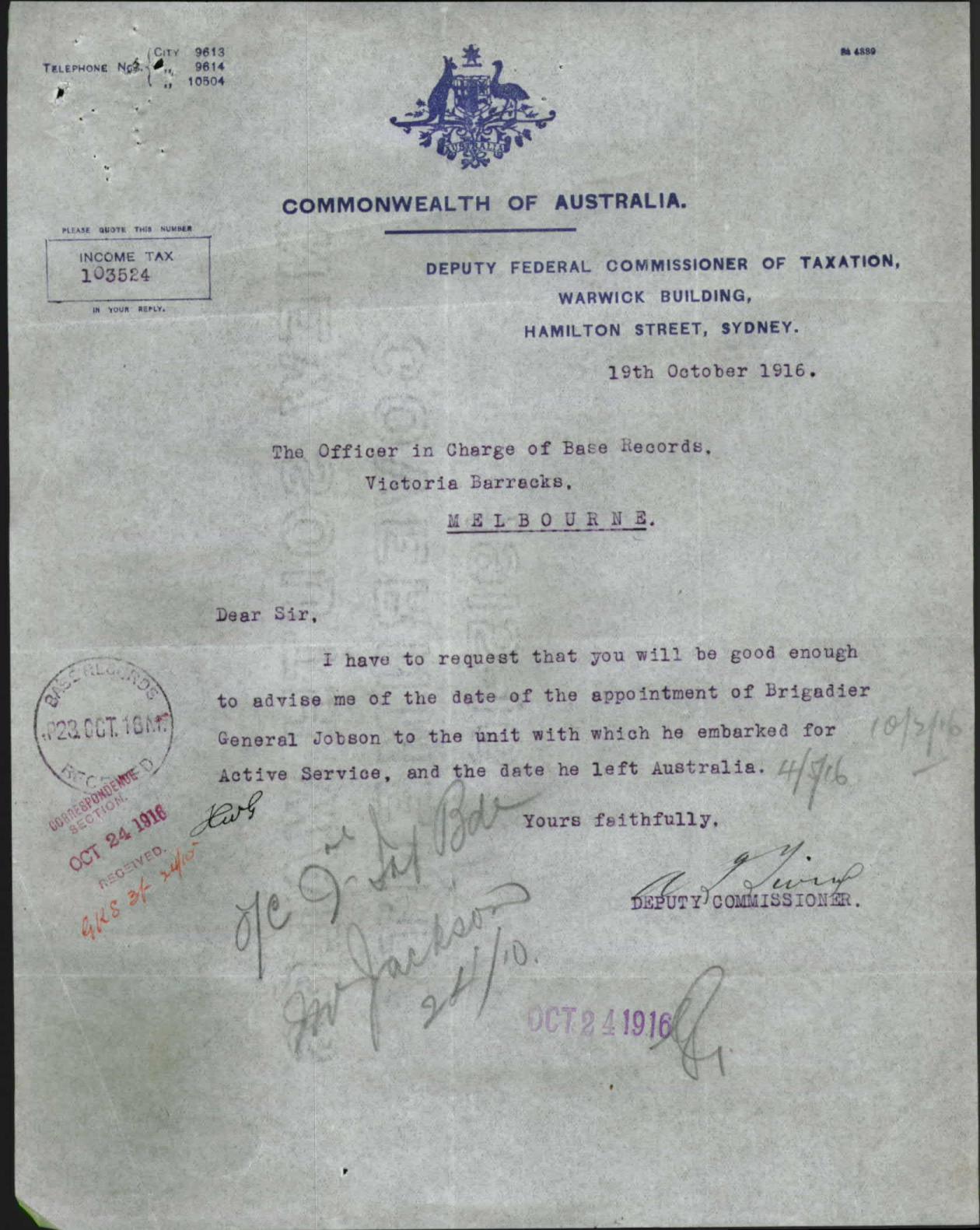

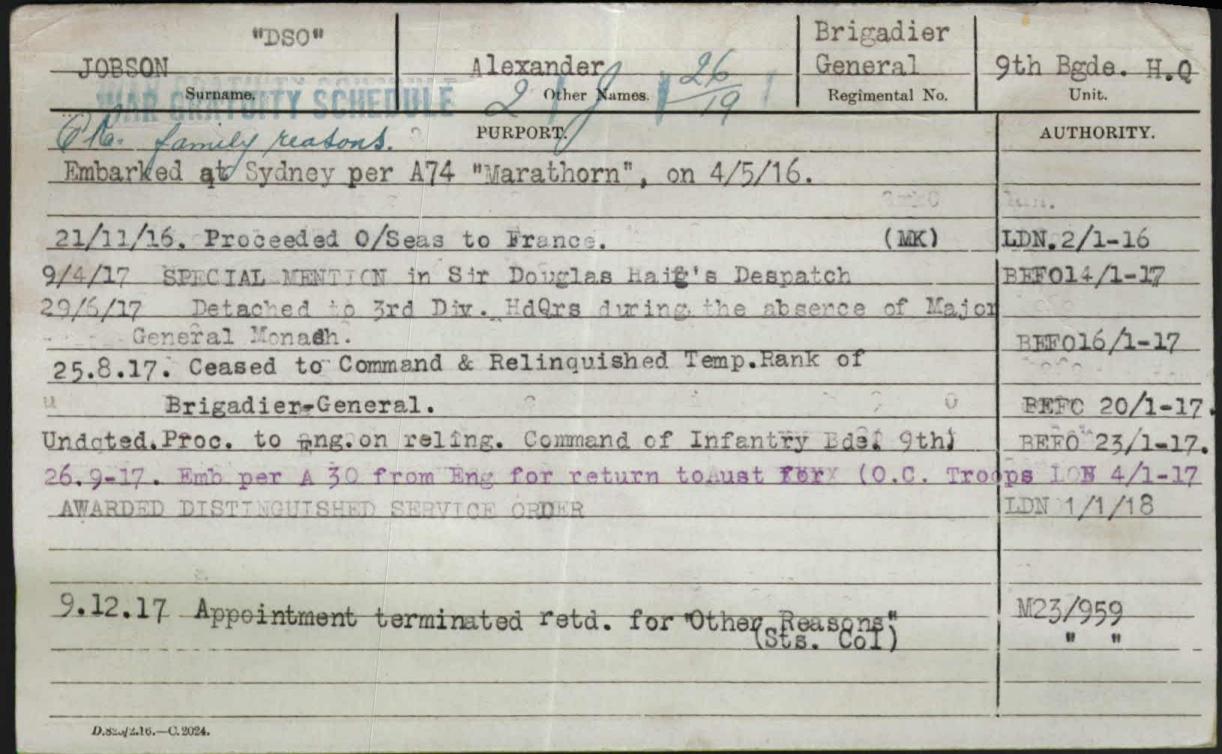

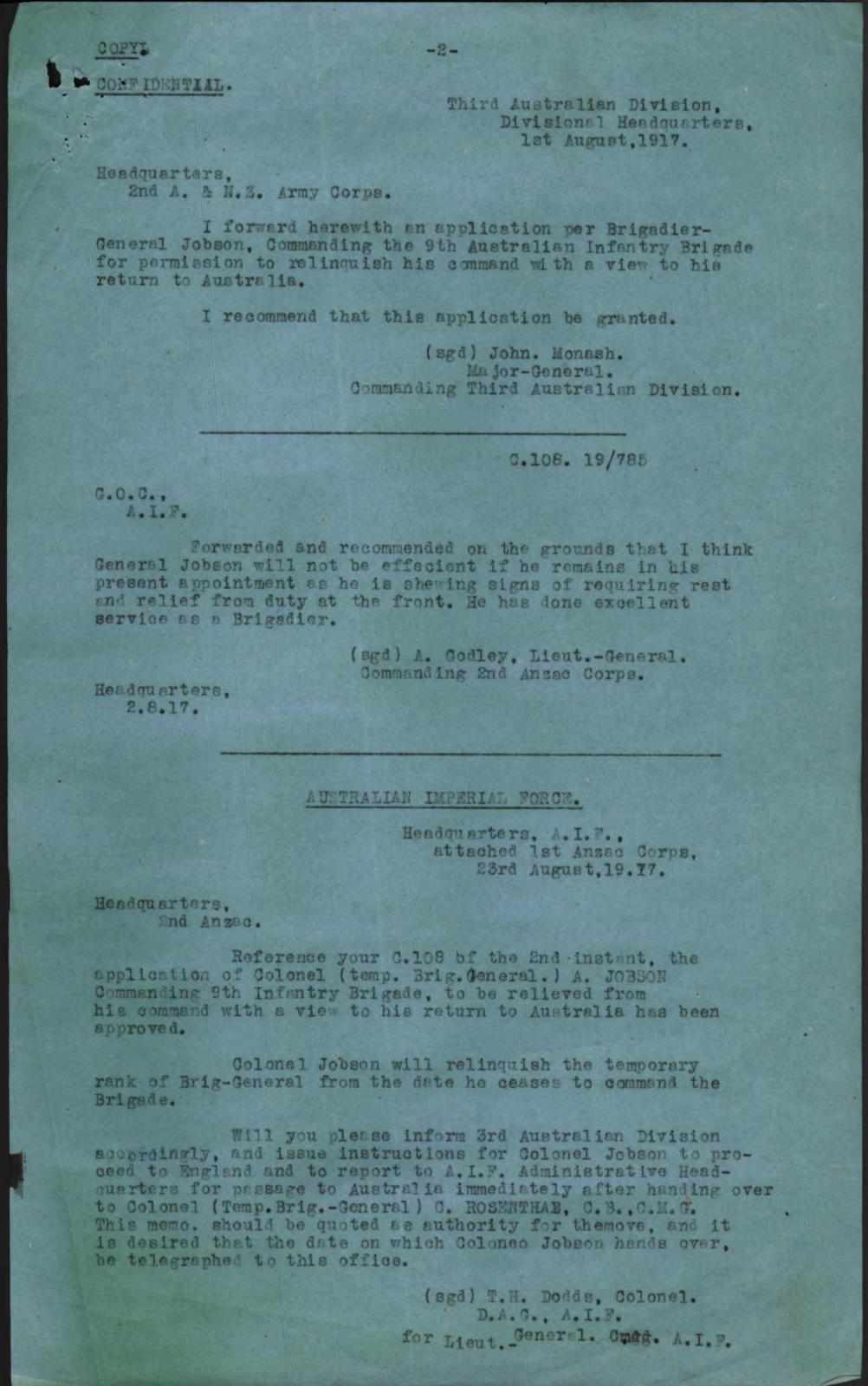
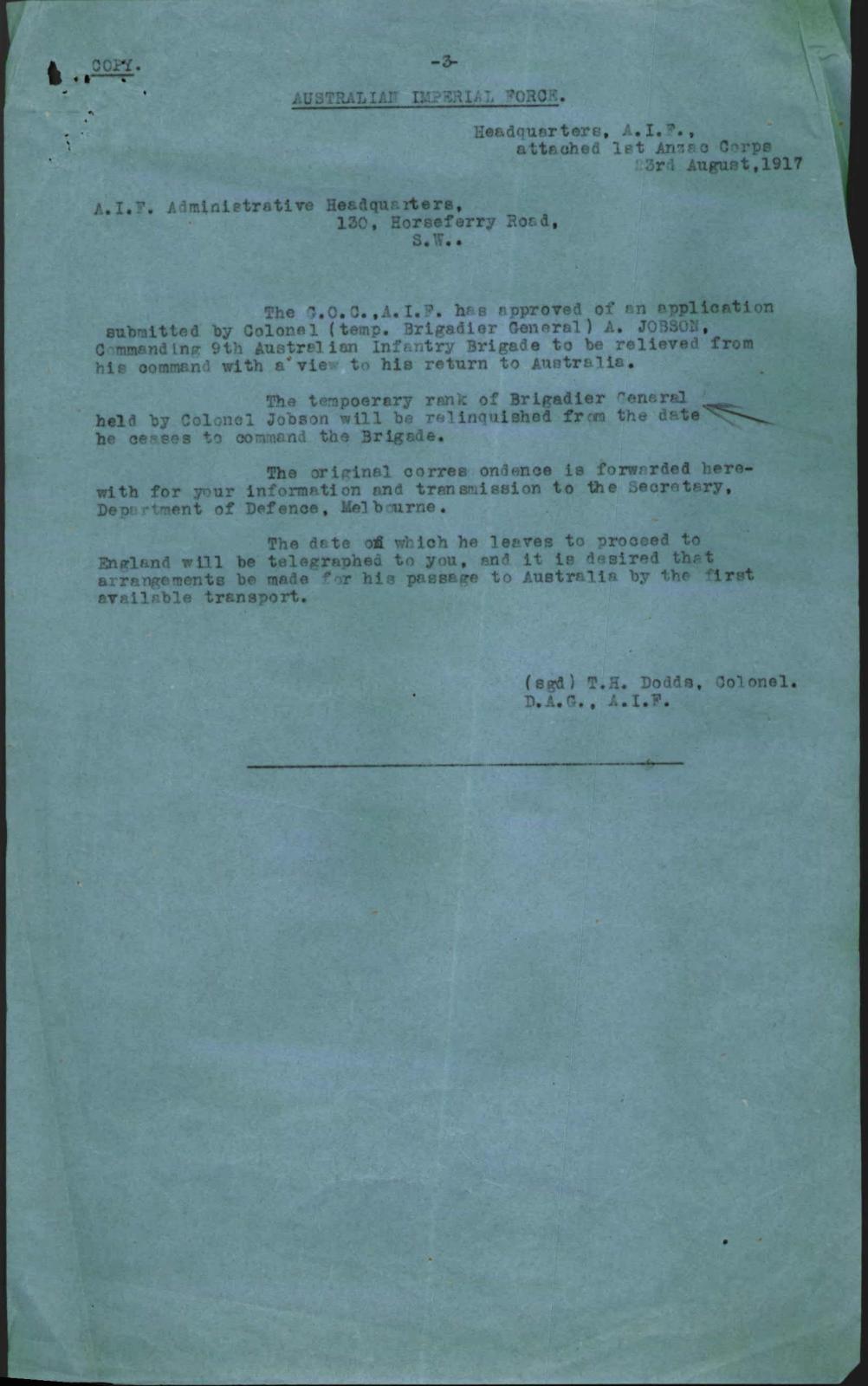
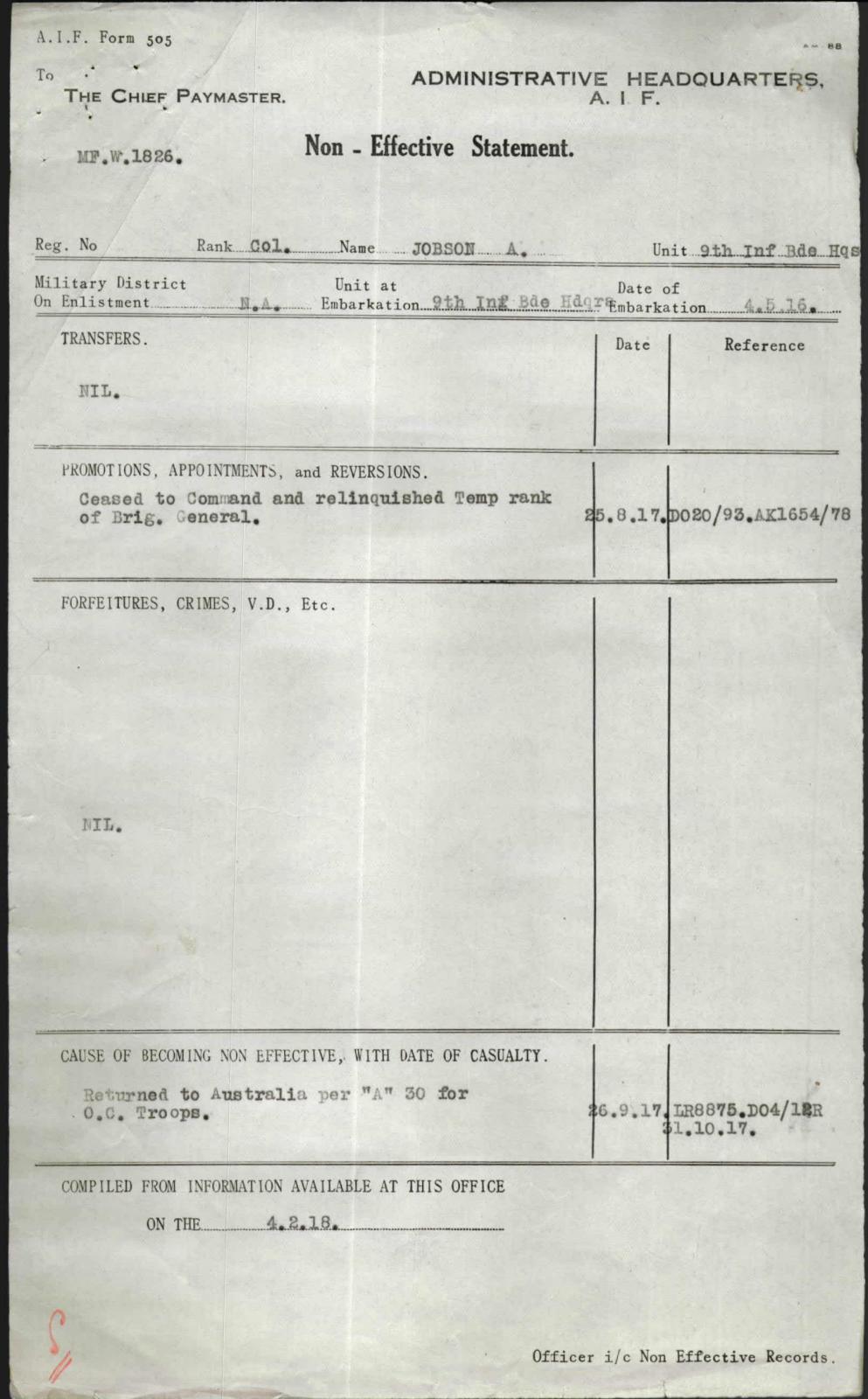
(Australian National Archives)
Under Construction: 07/02/2014-04/06/2018.
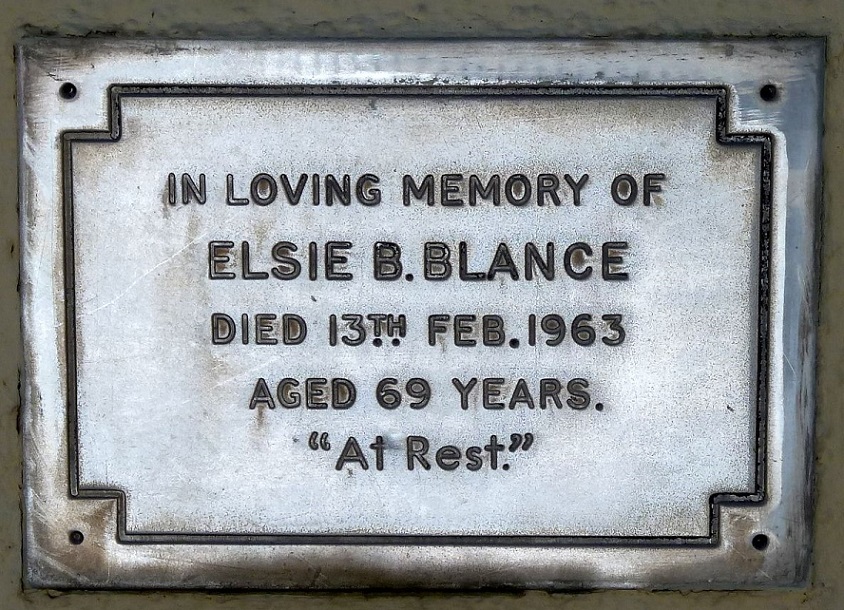
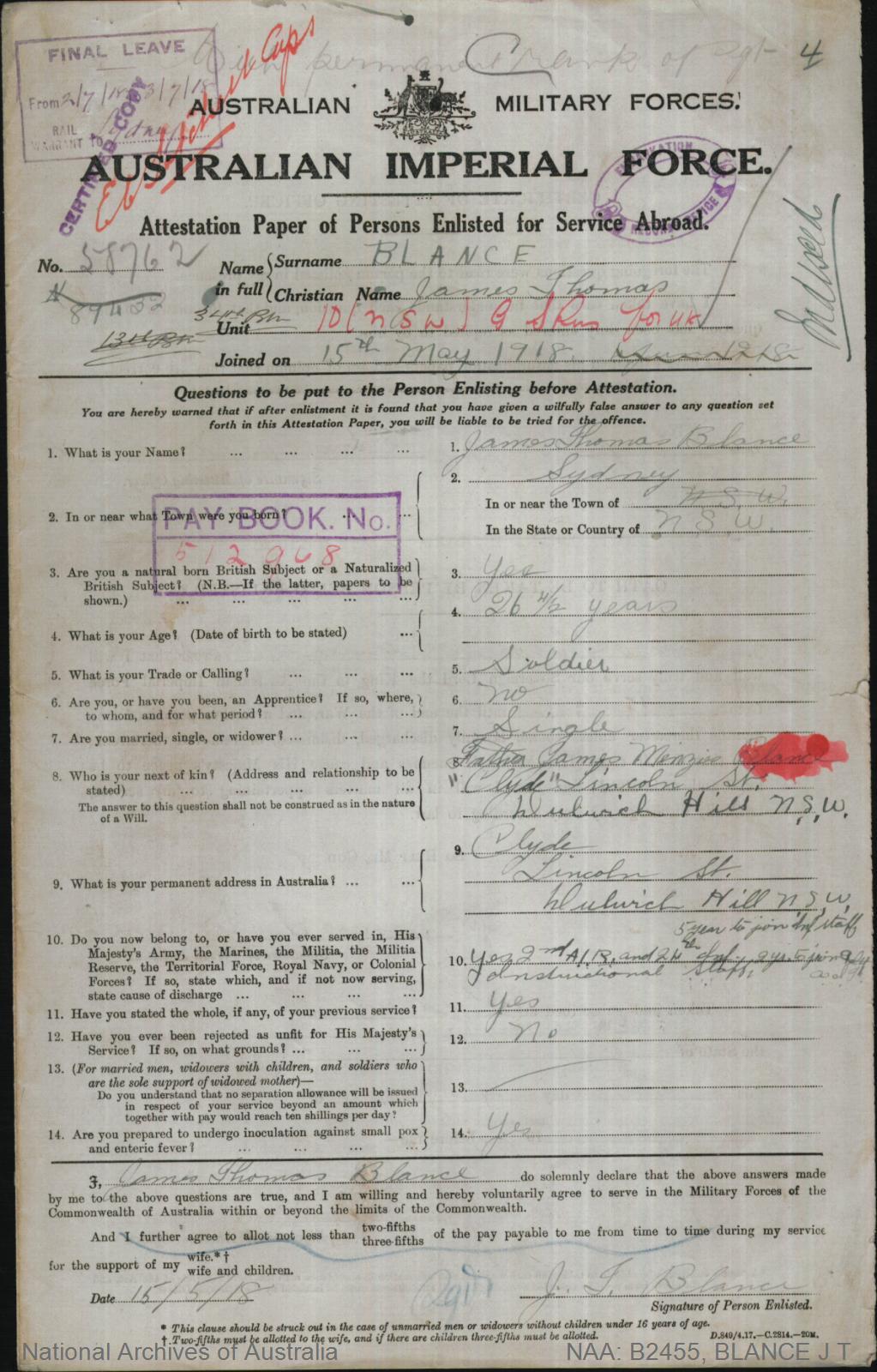
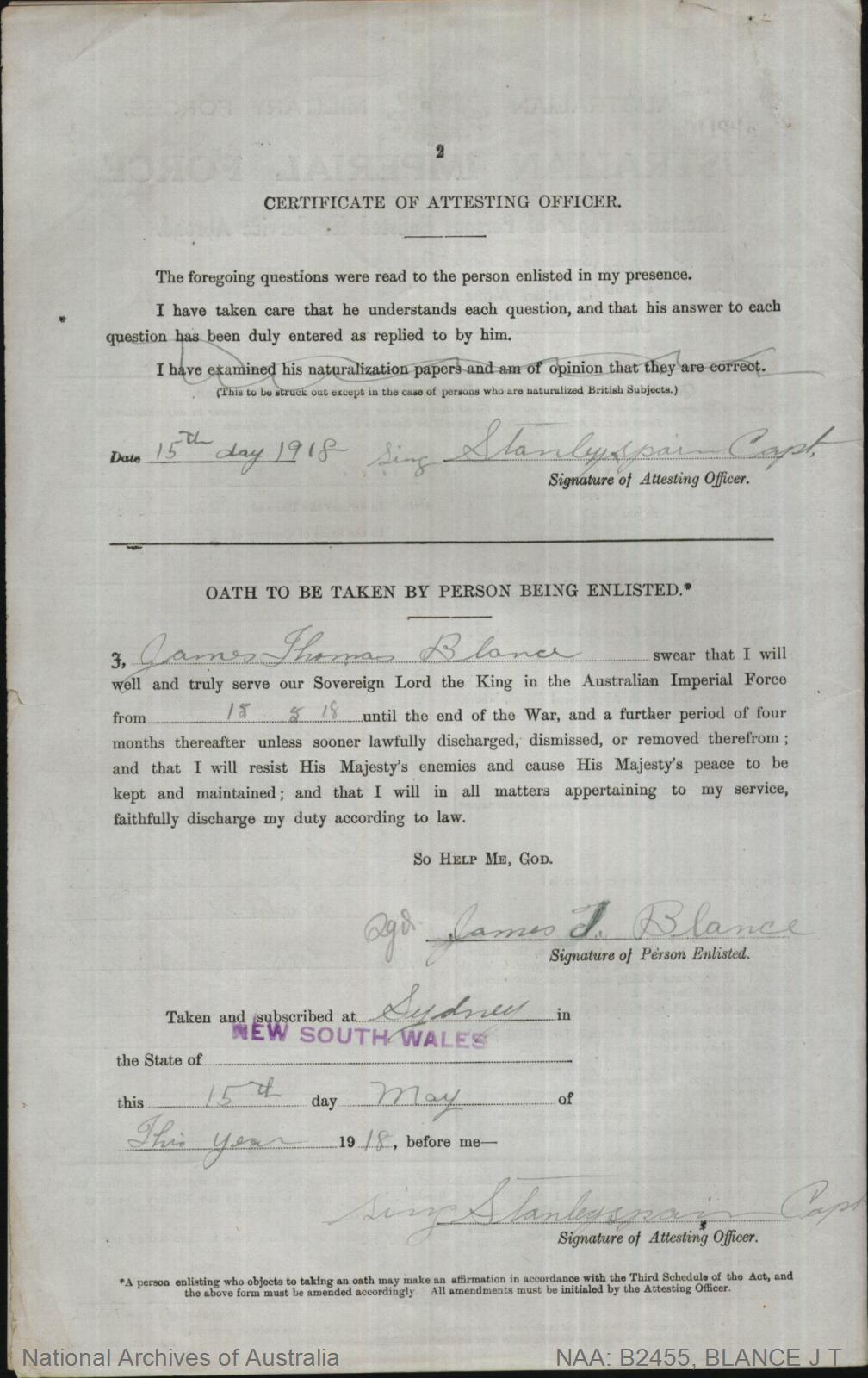

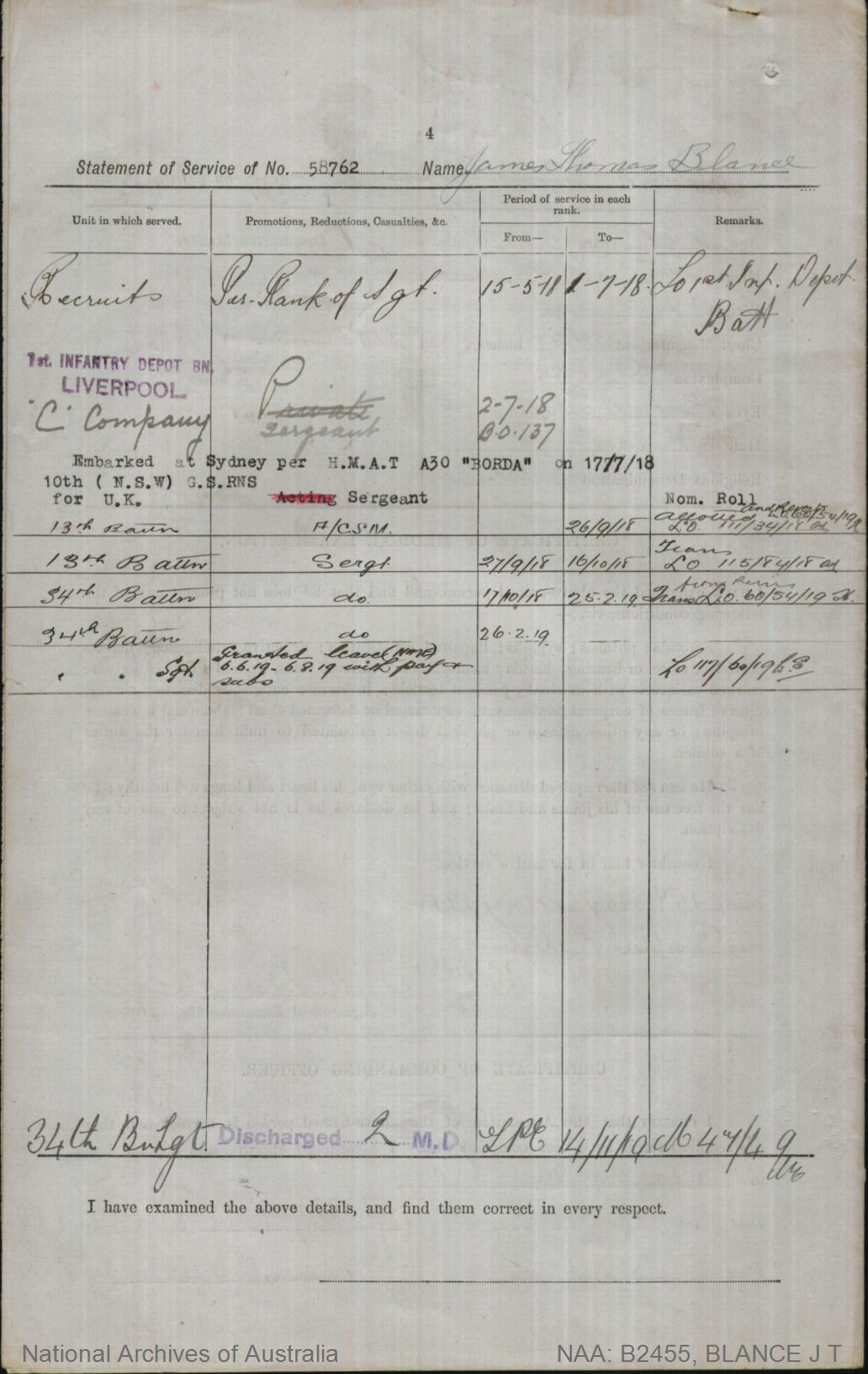
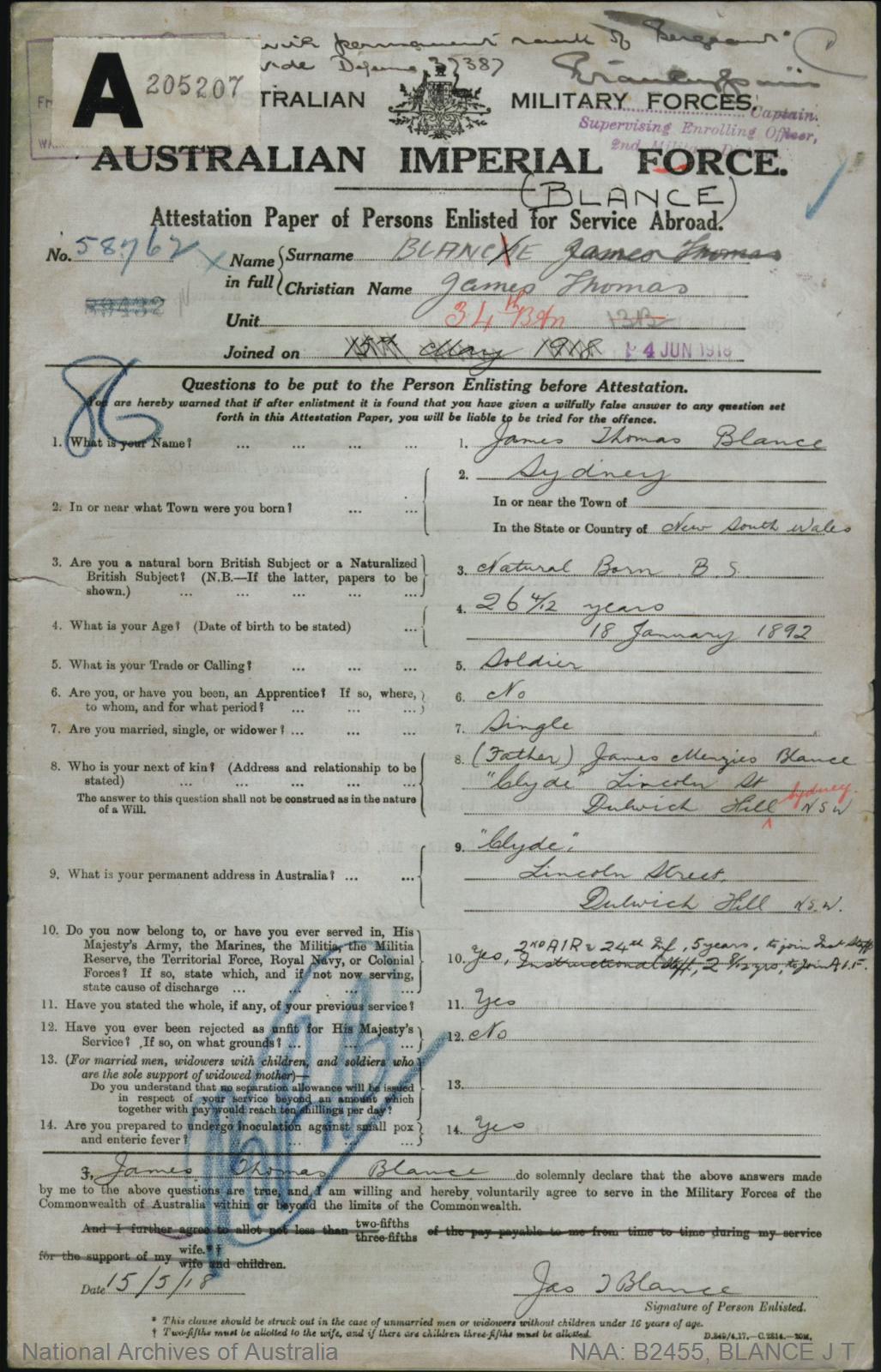
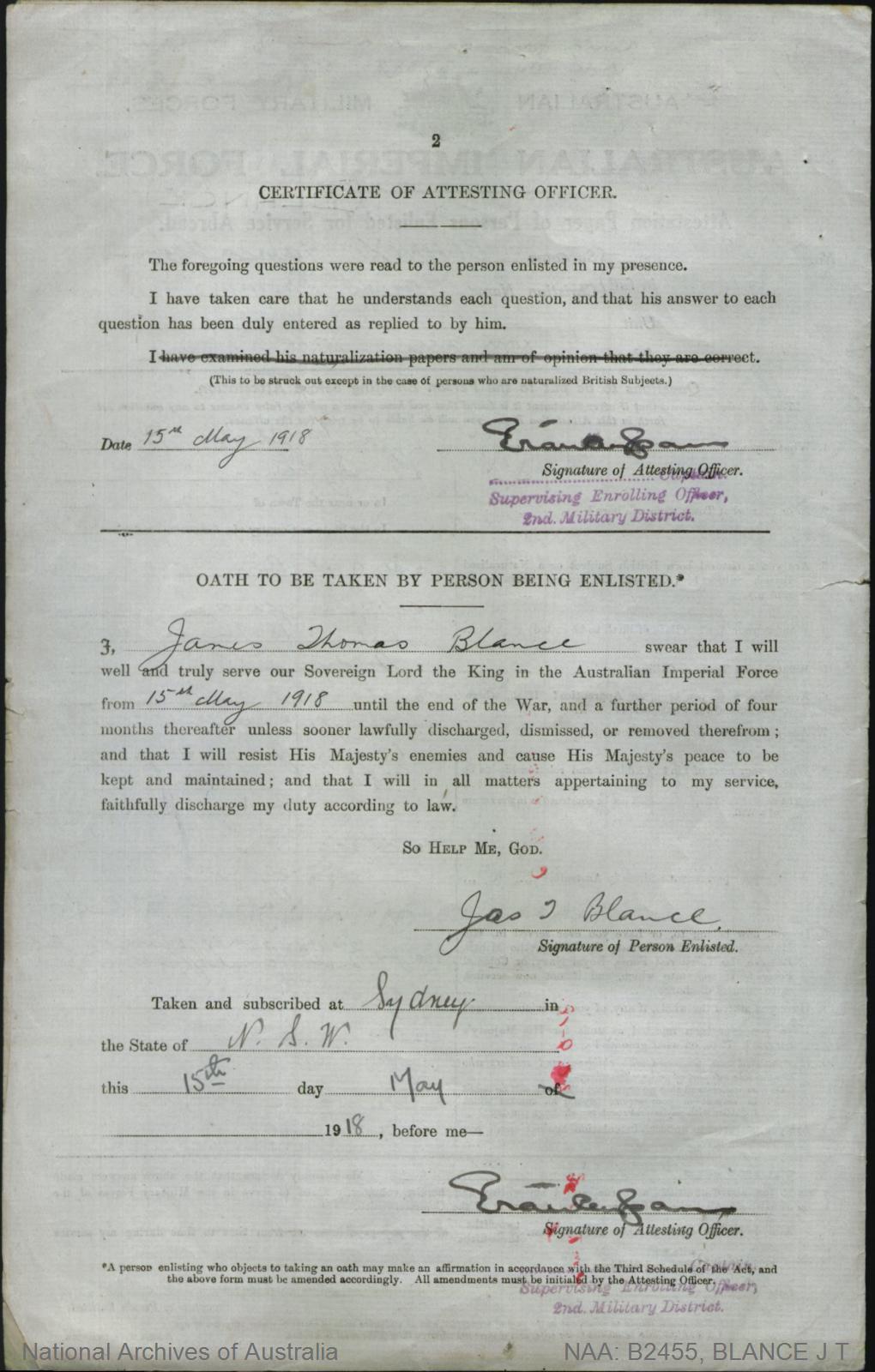
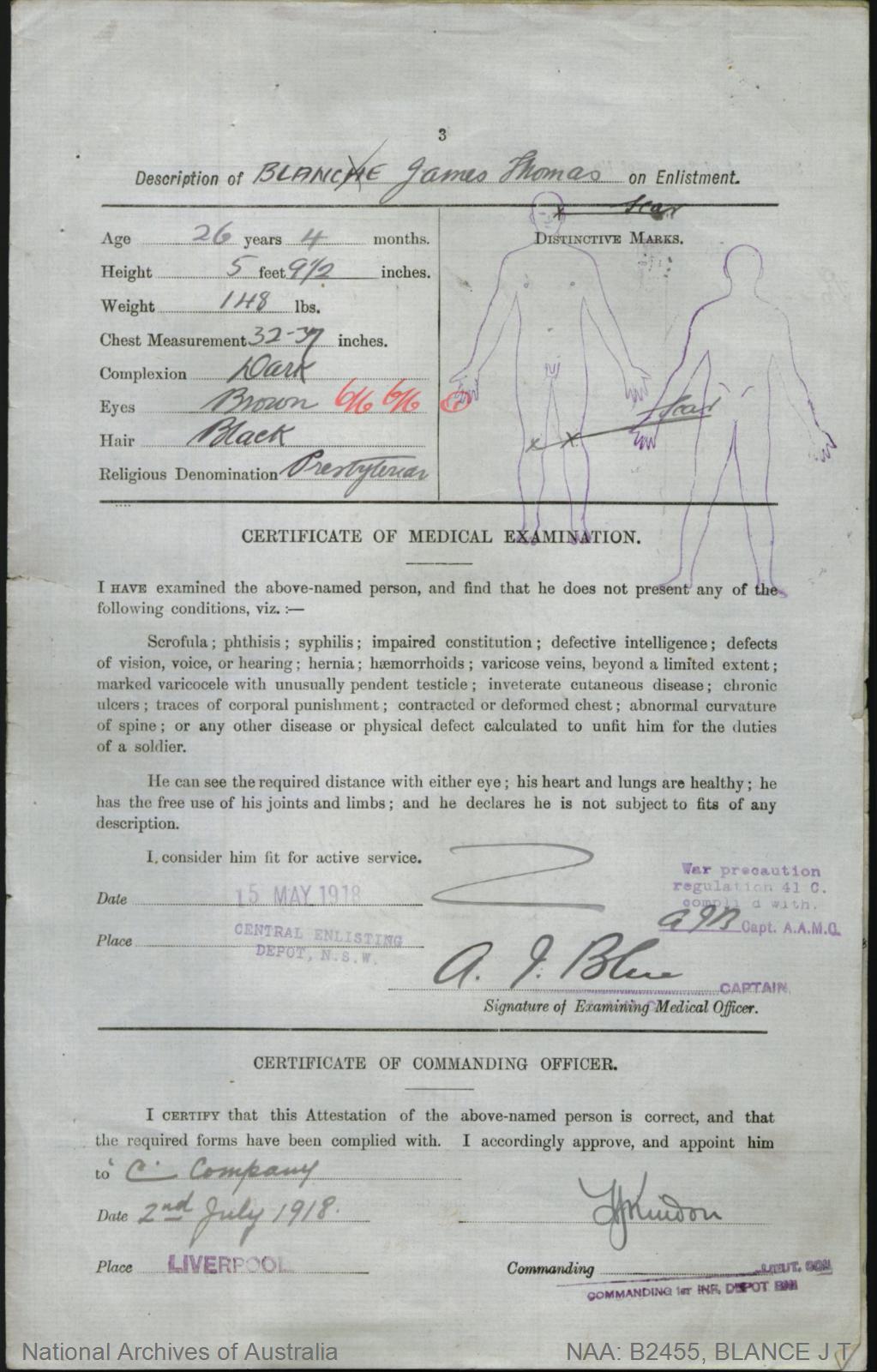
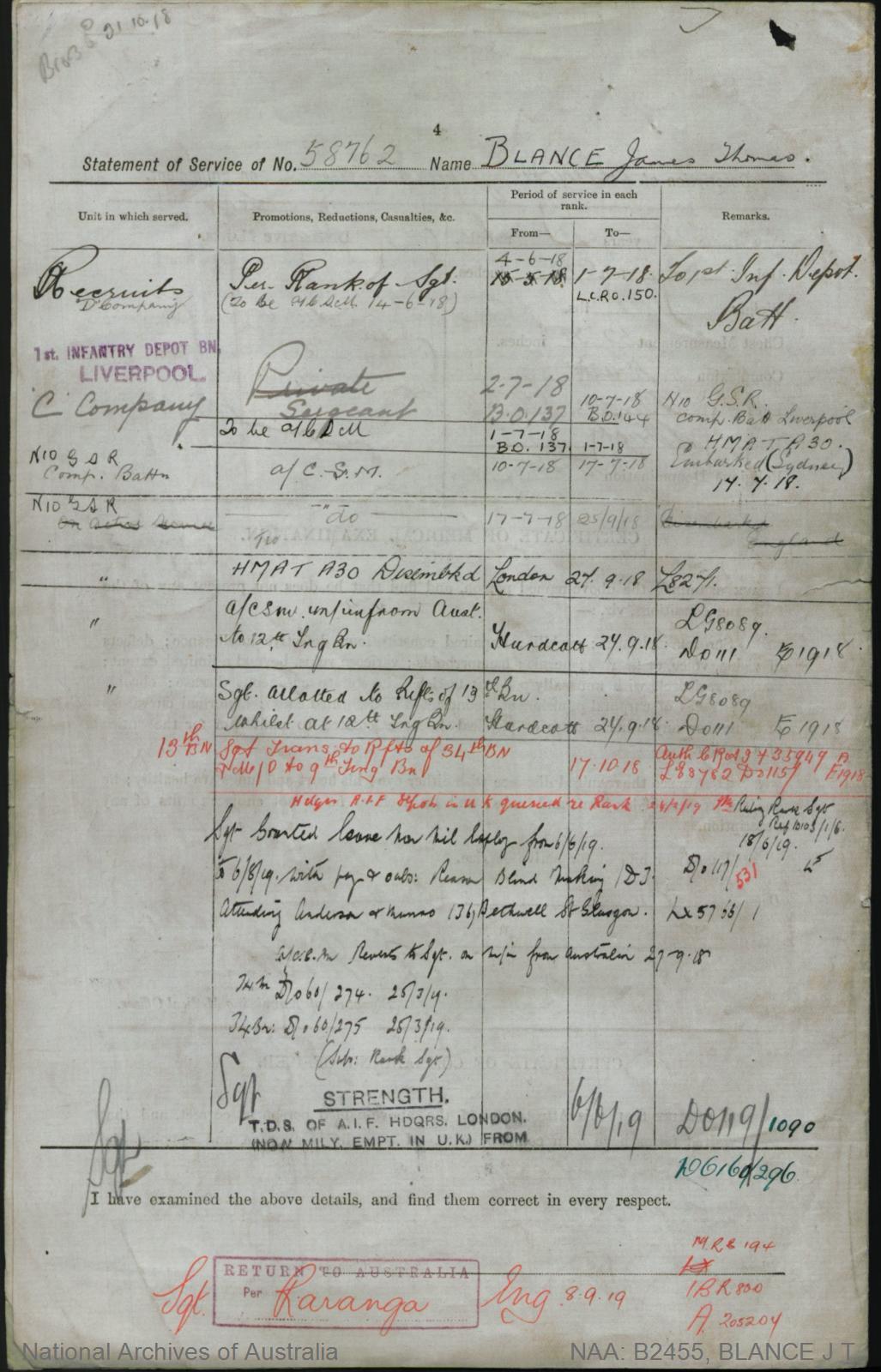

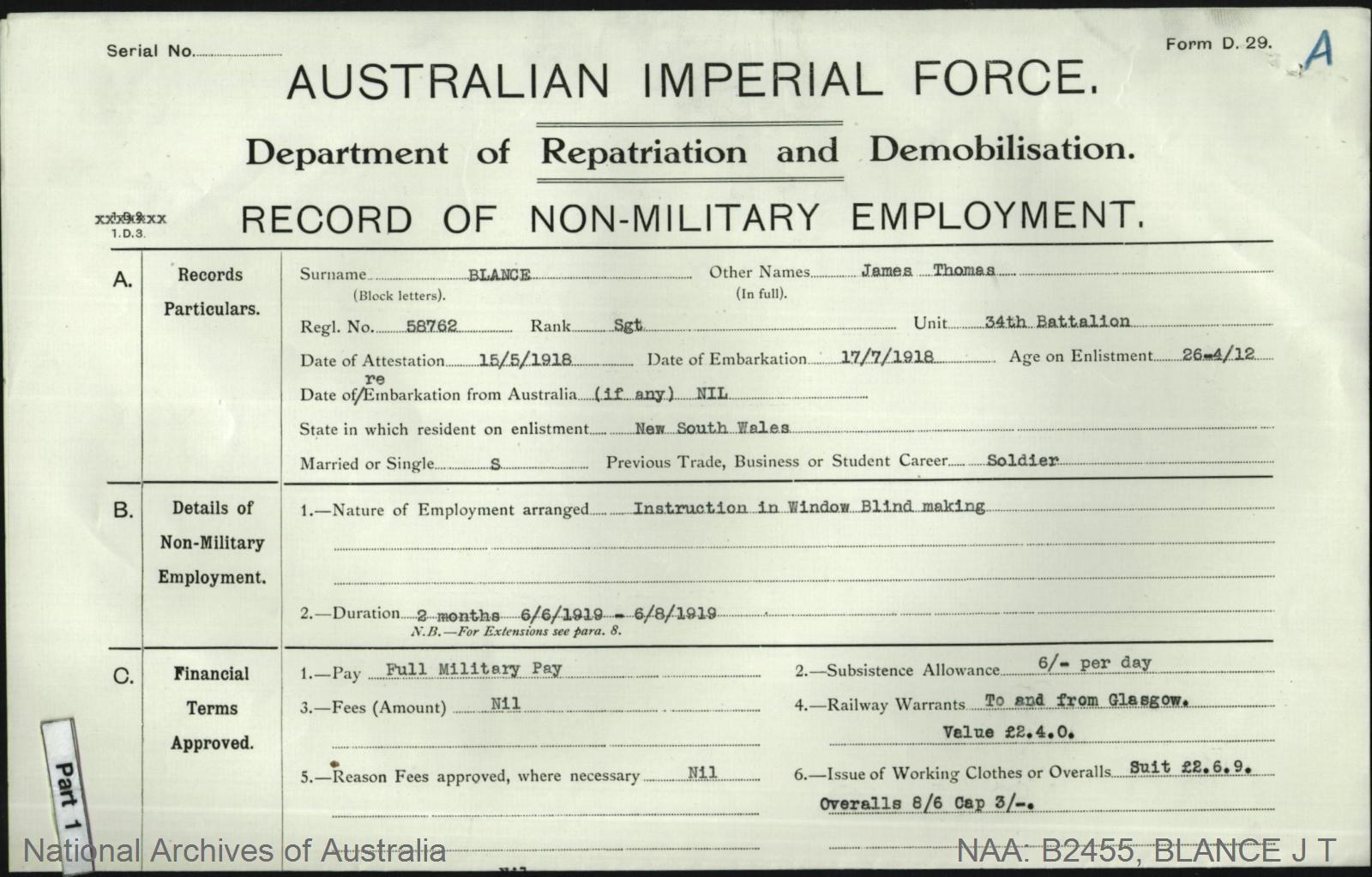
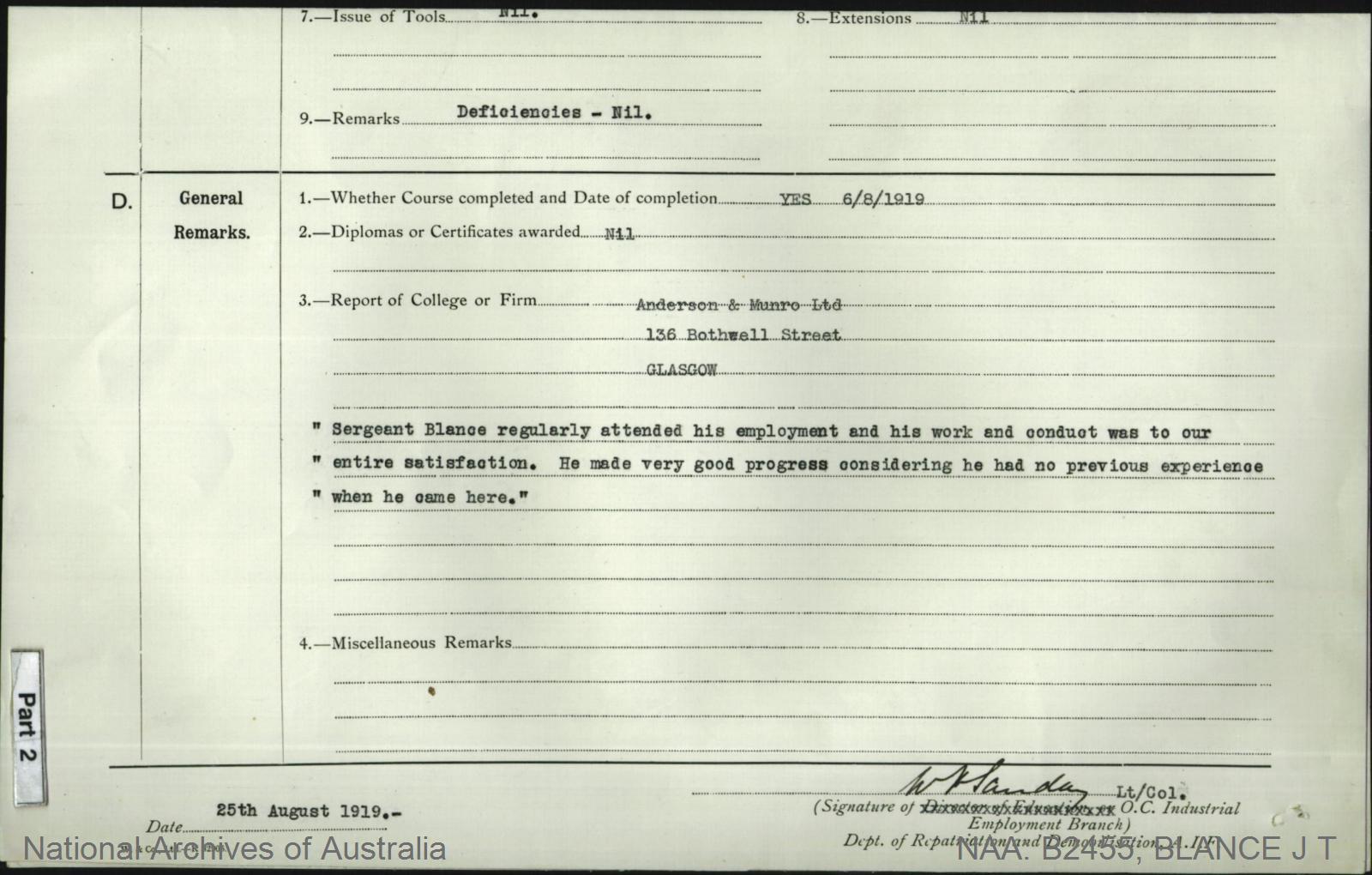
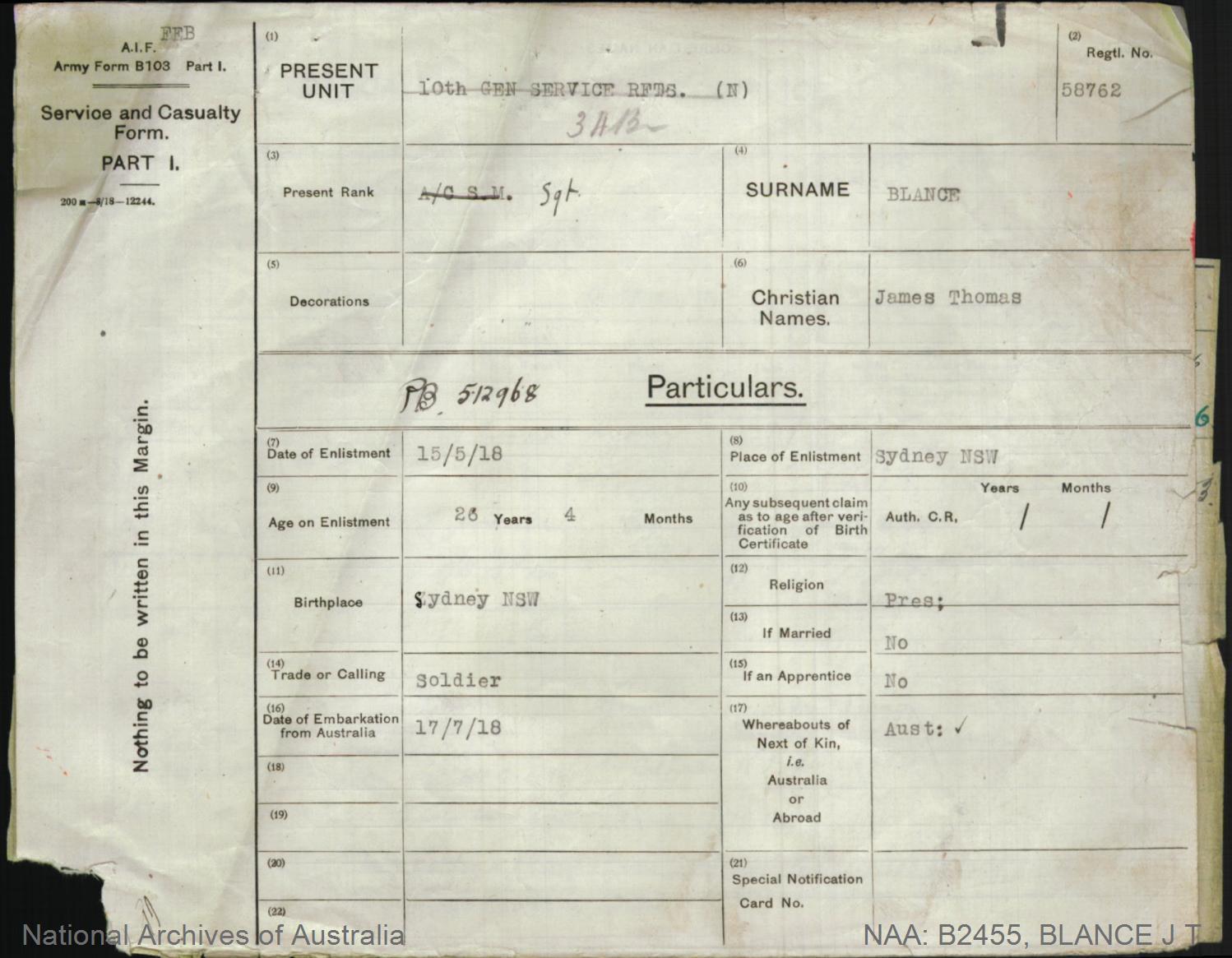

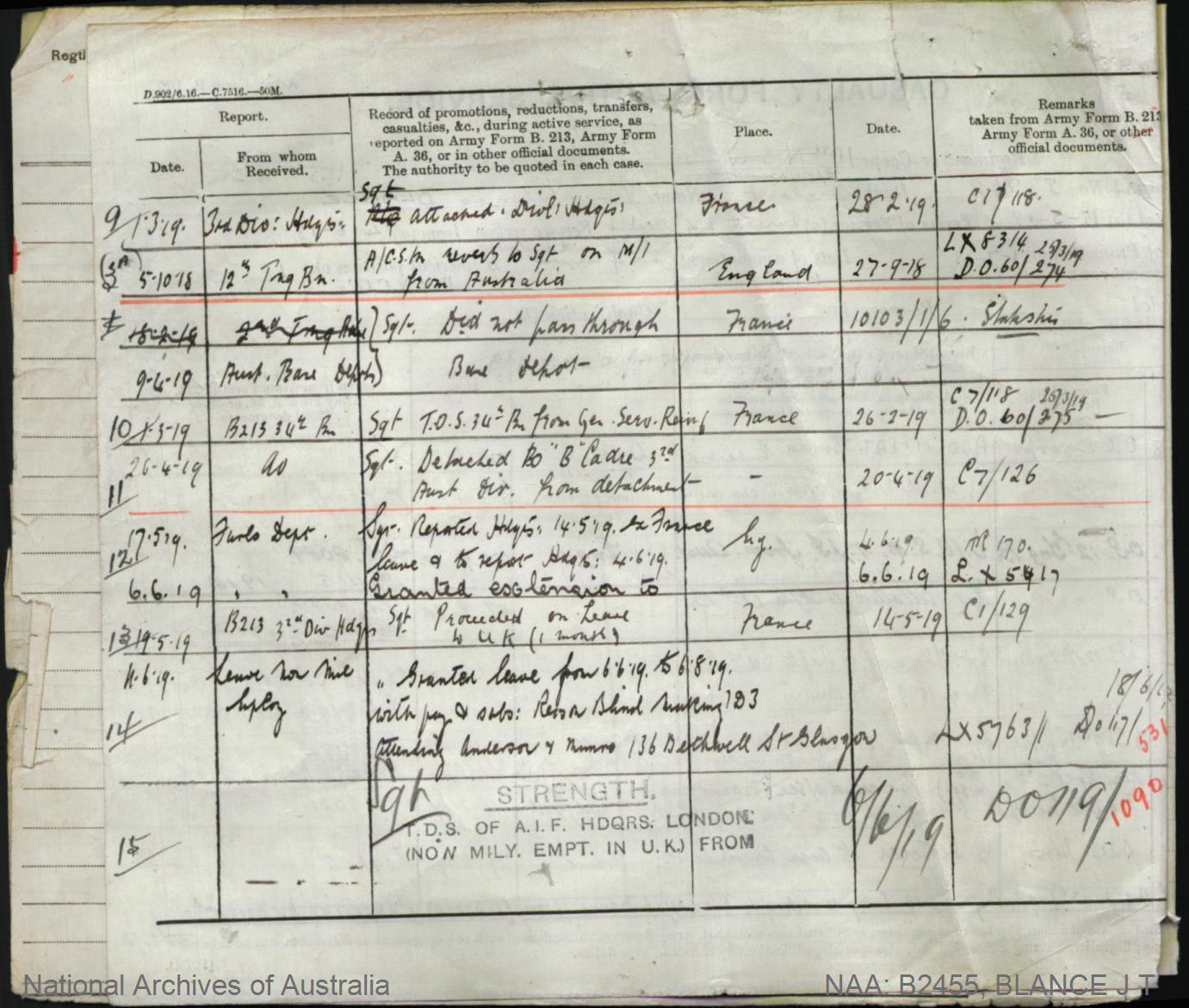
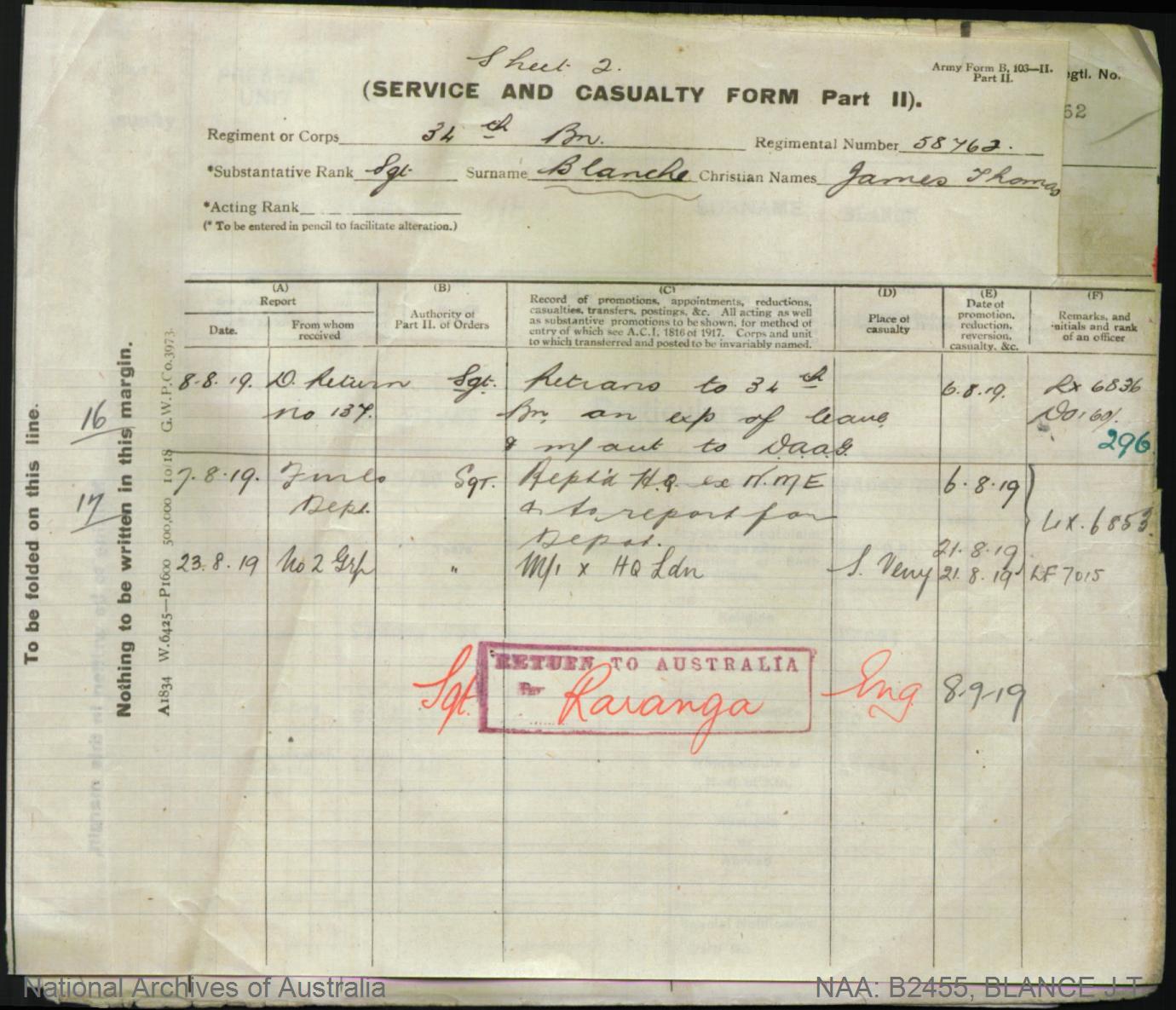
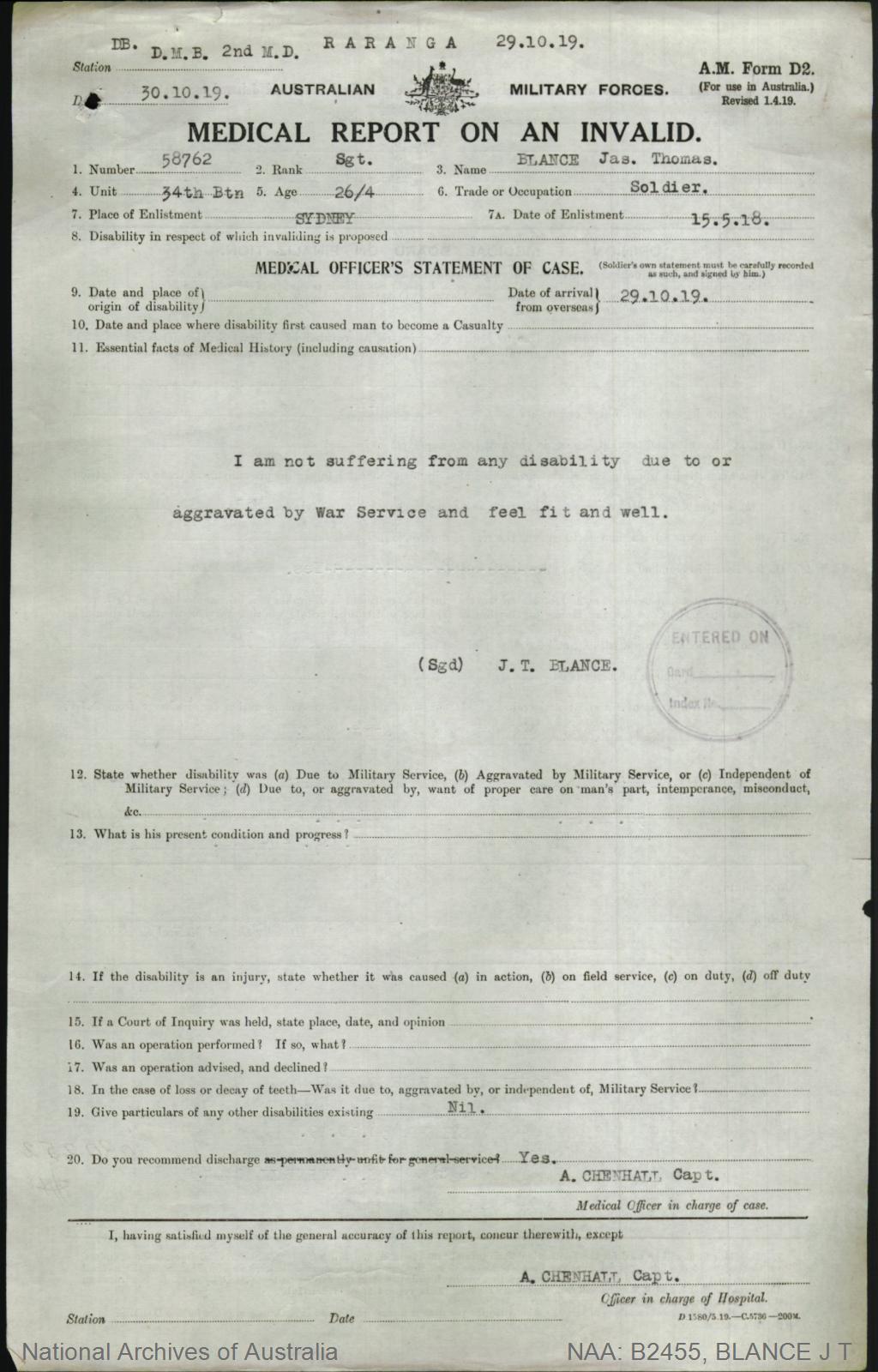
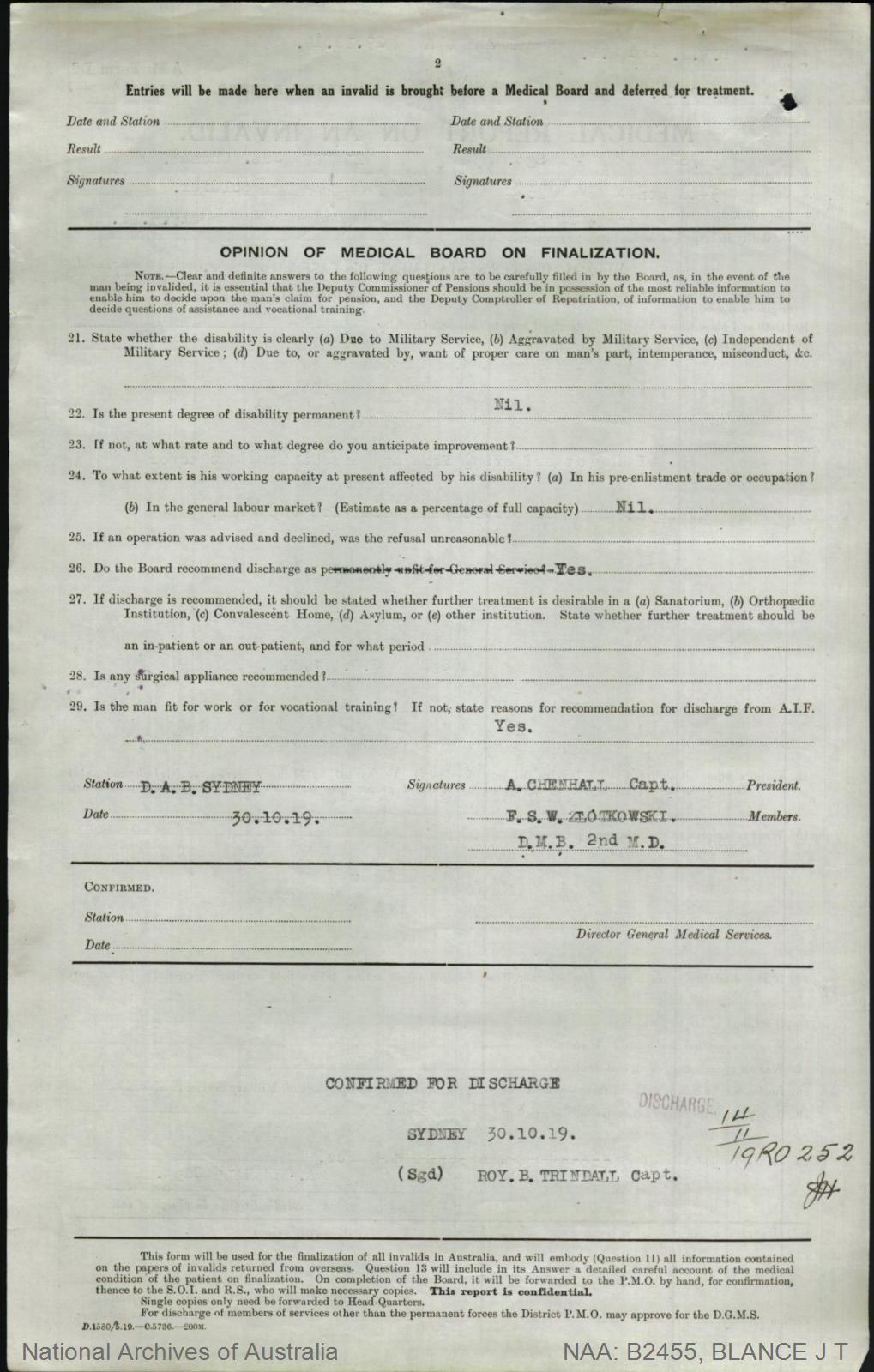

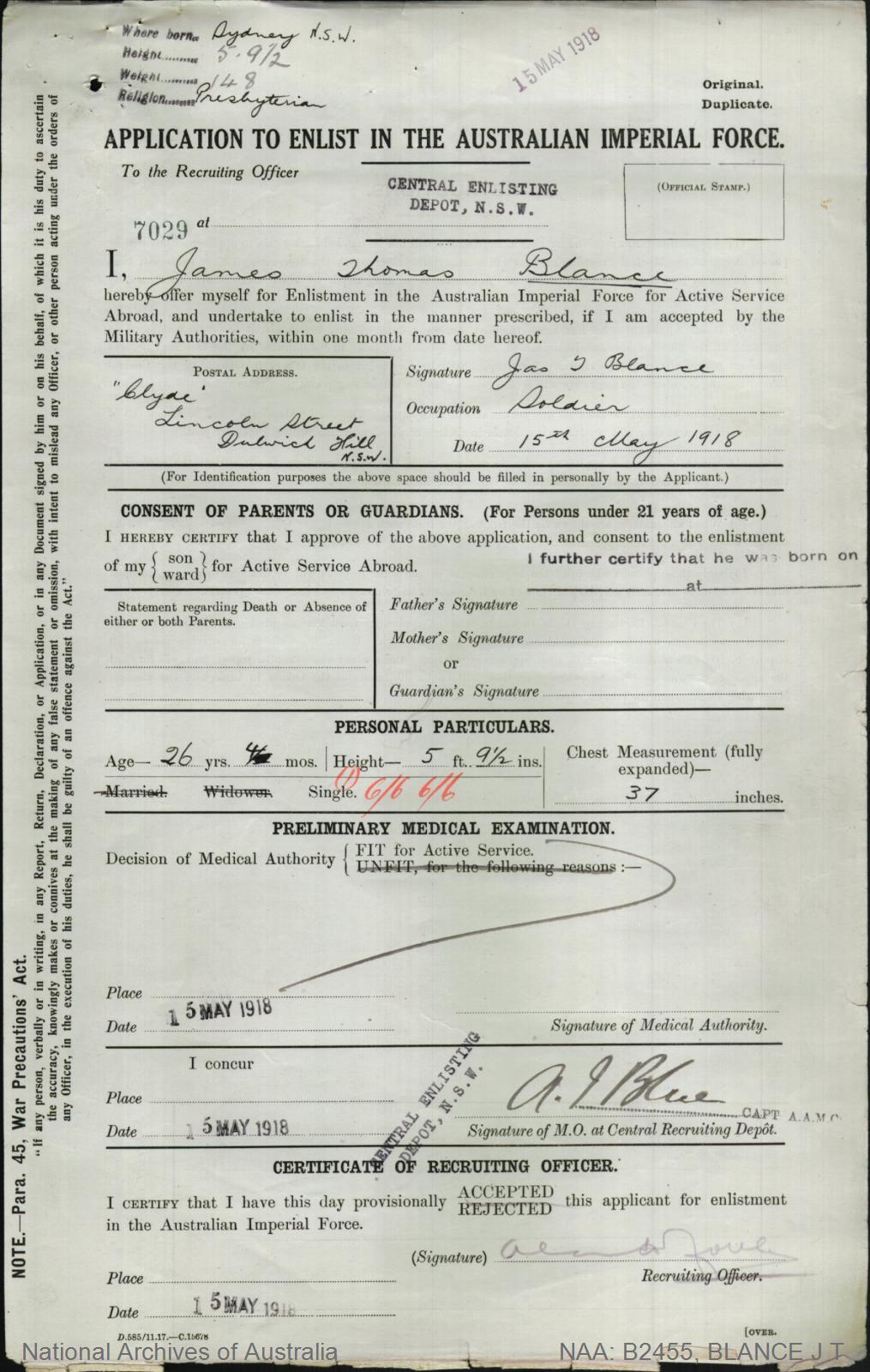
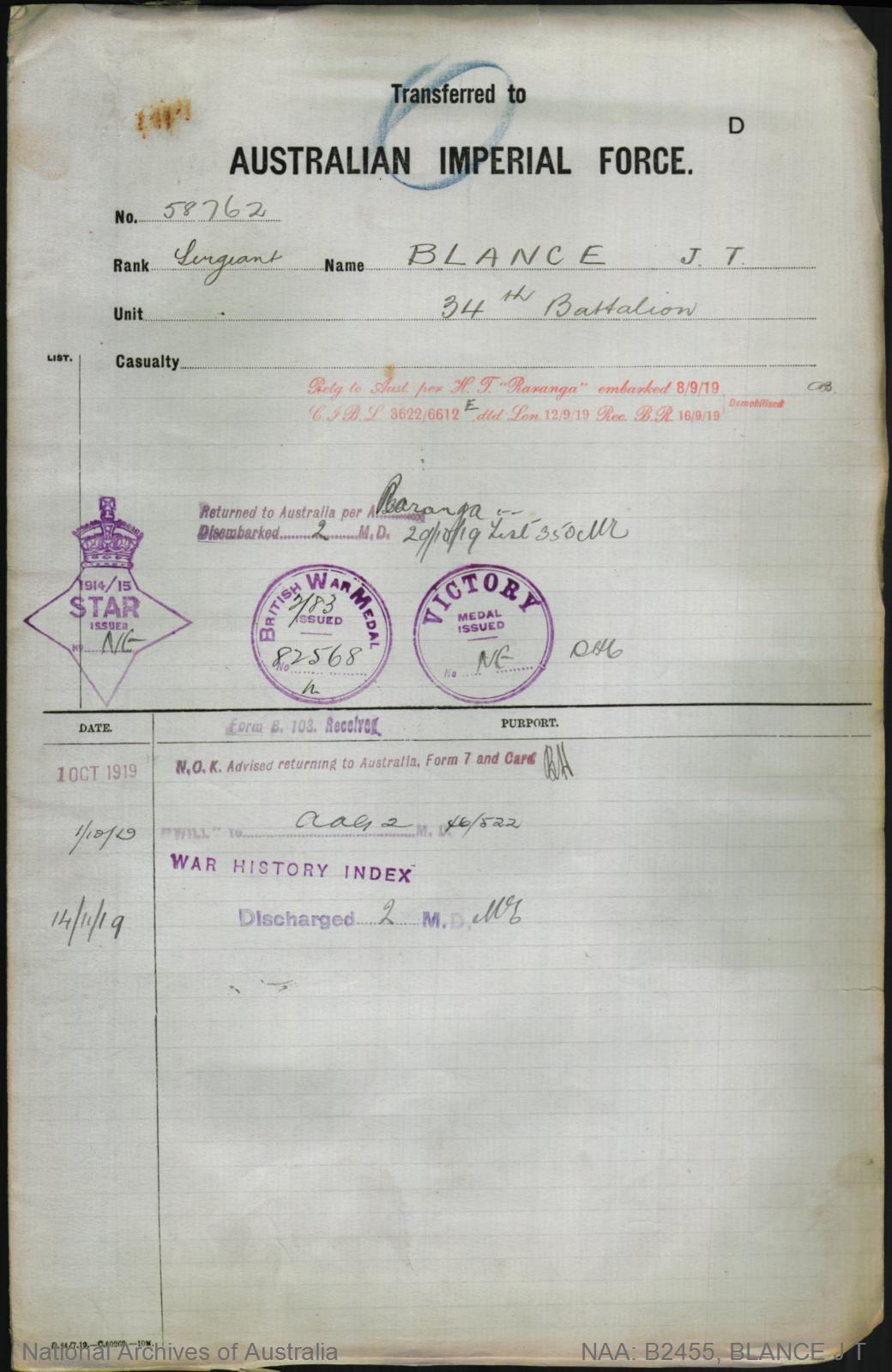
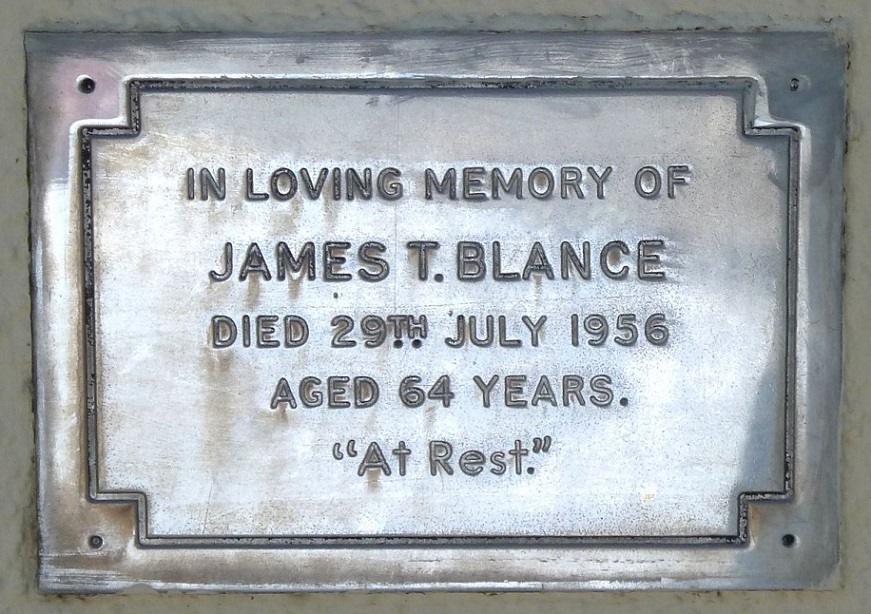


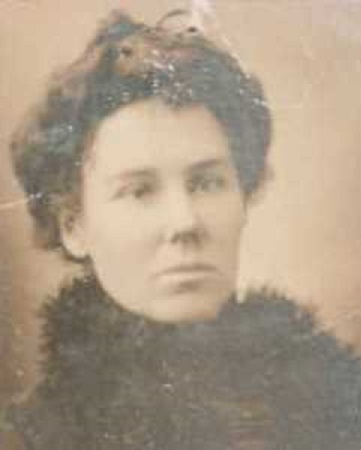
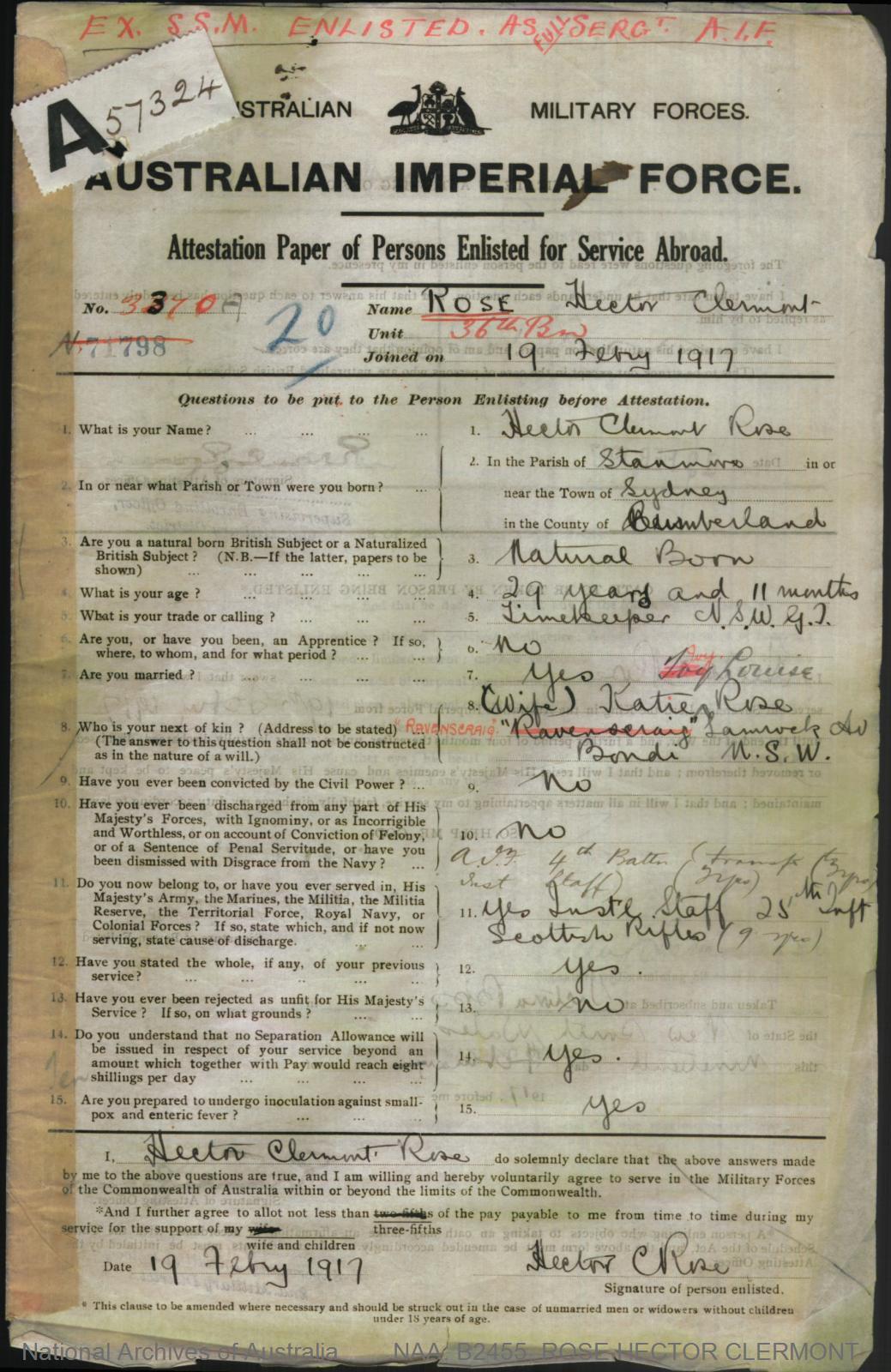
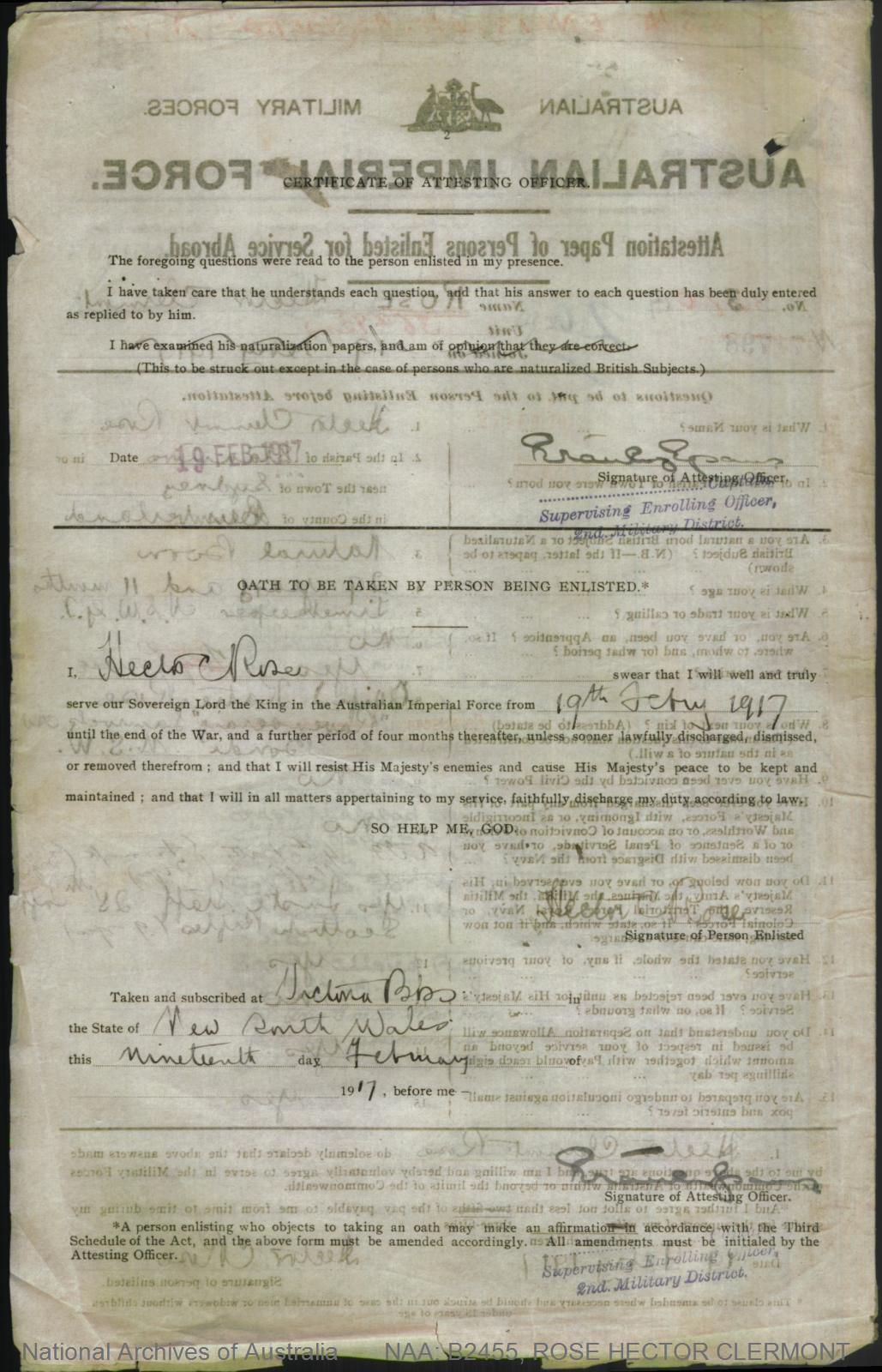

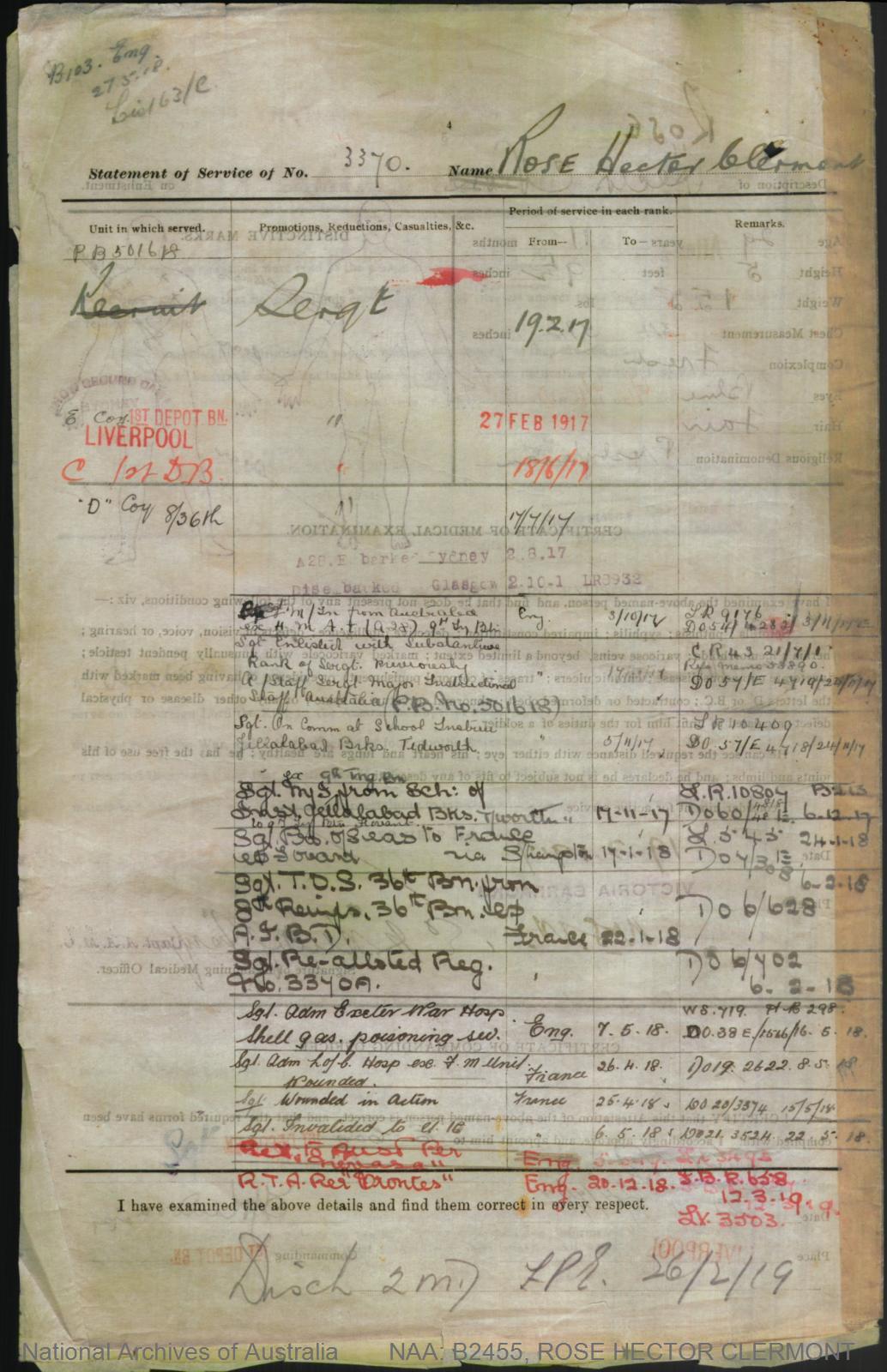
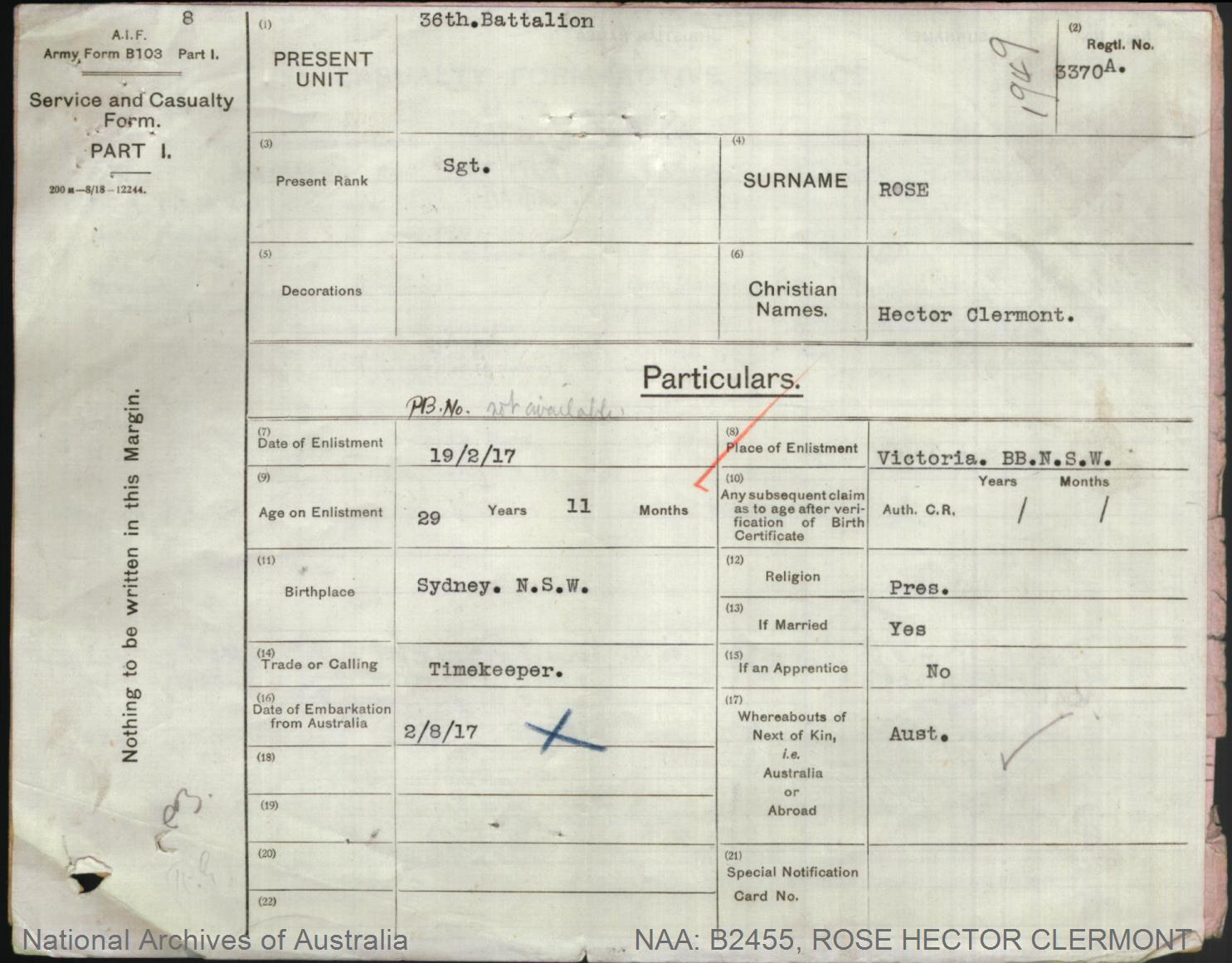
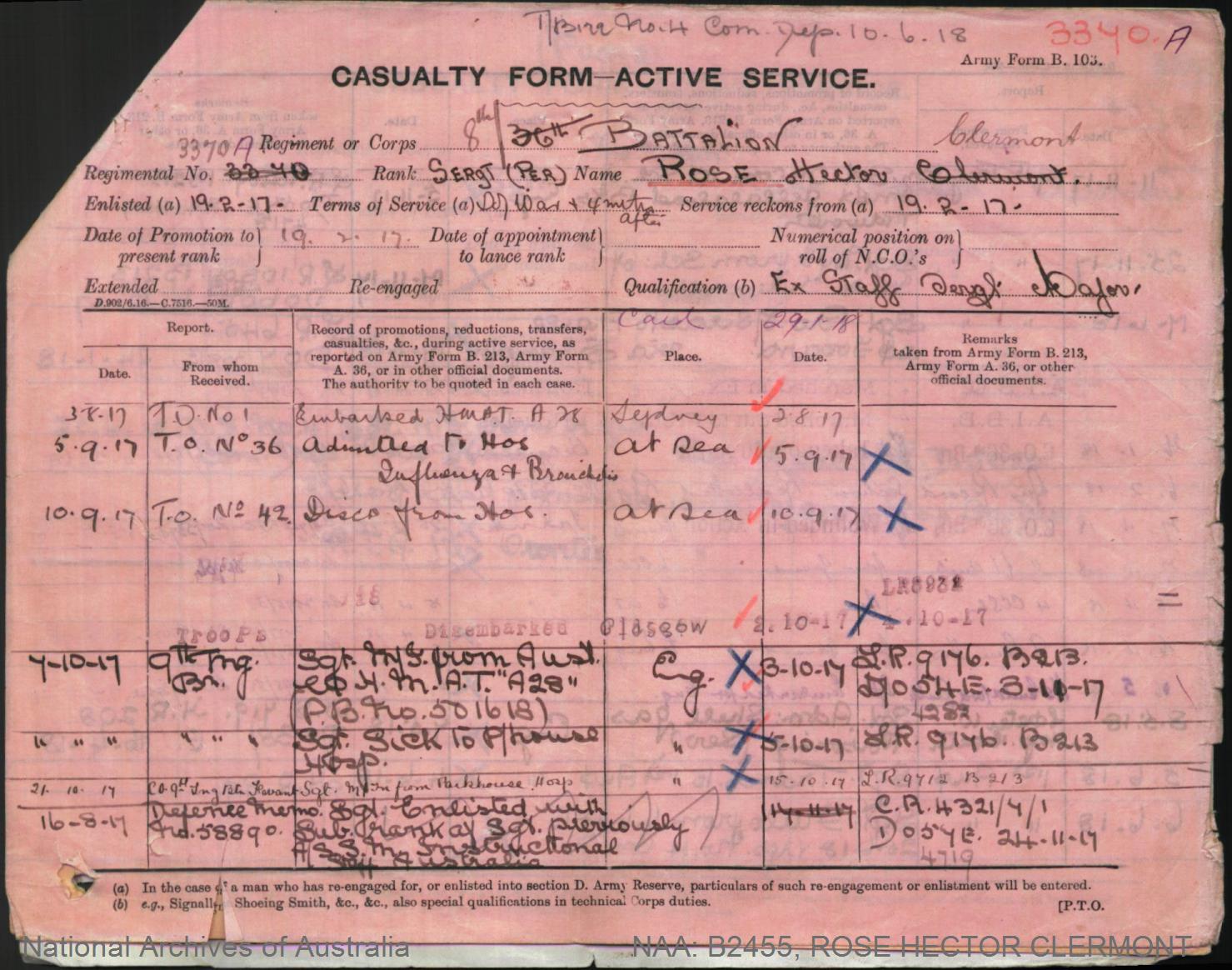
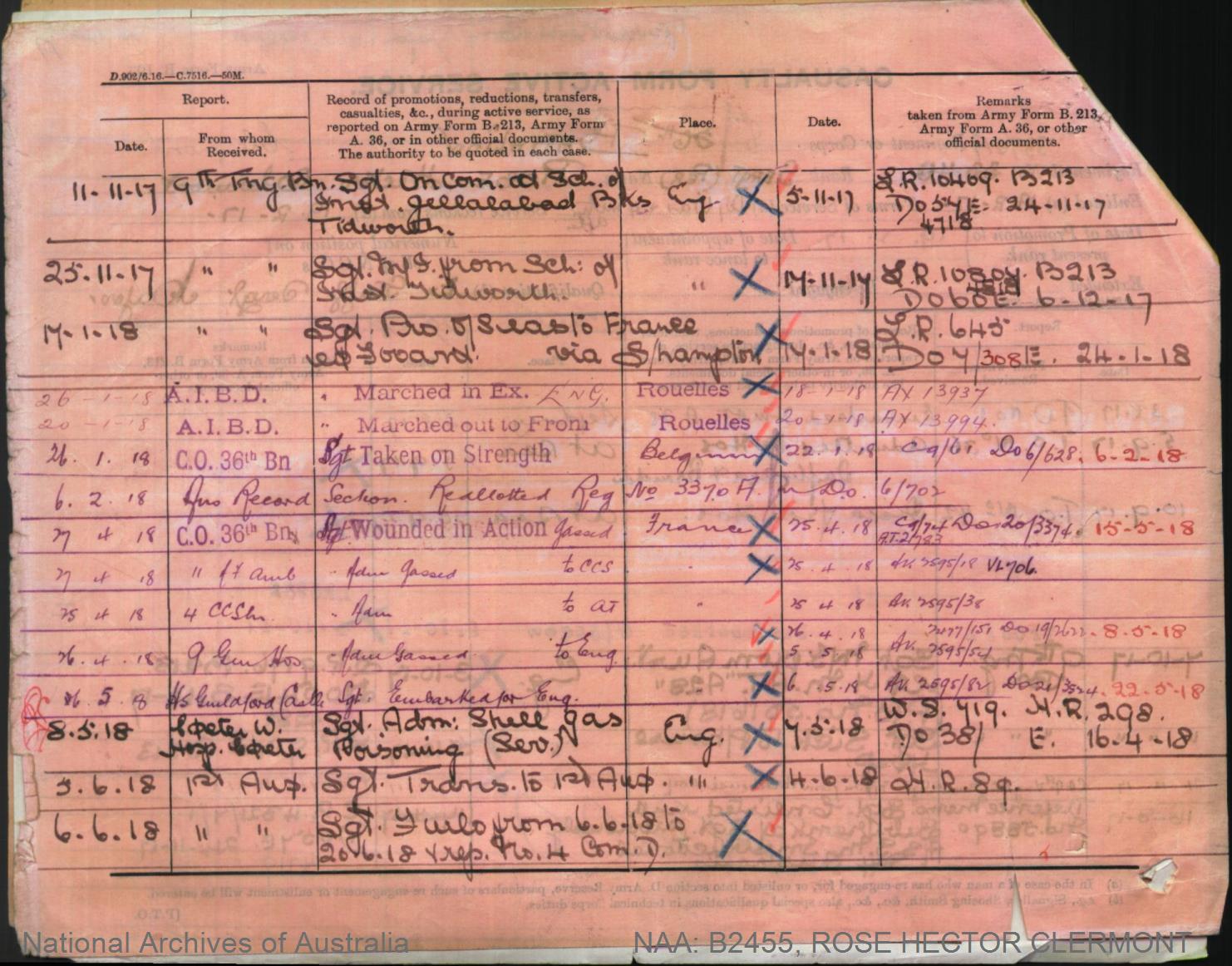
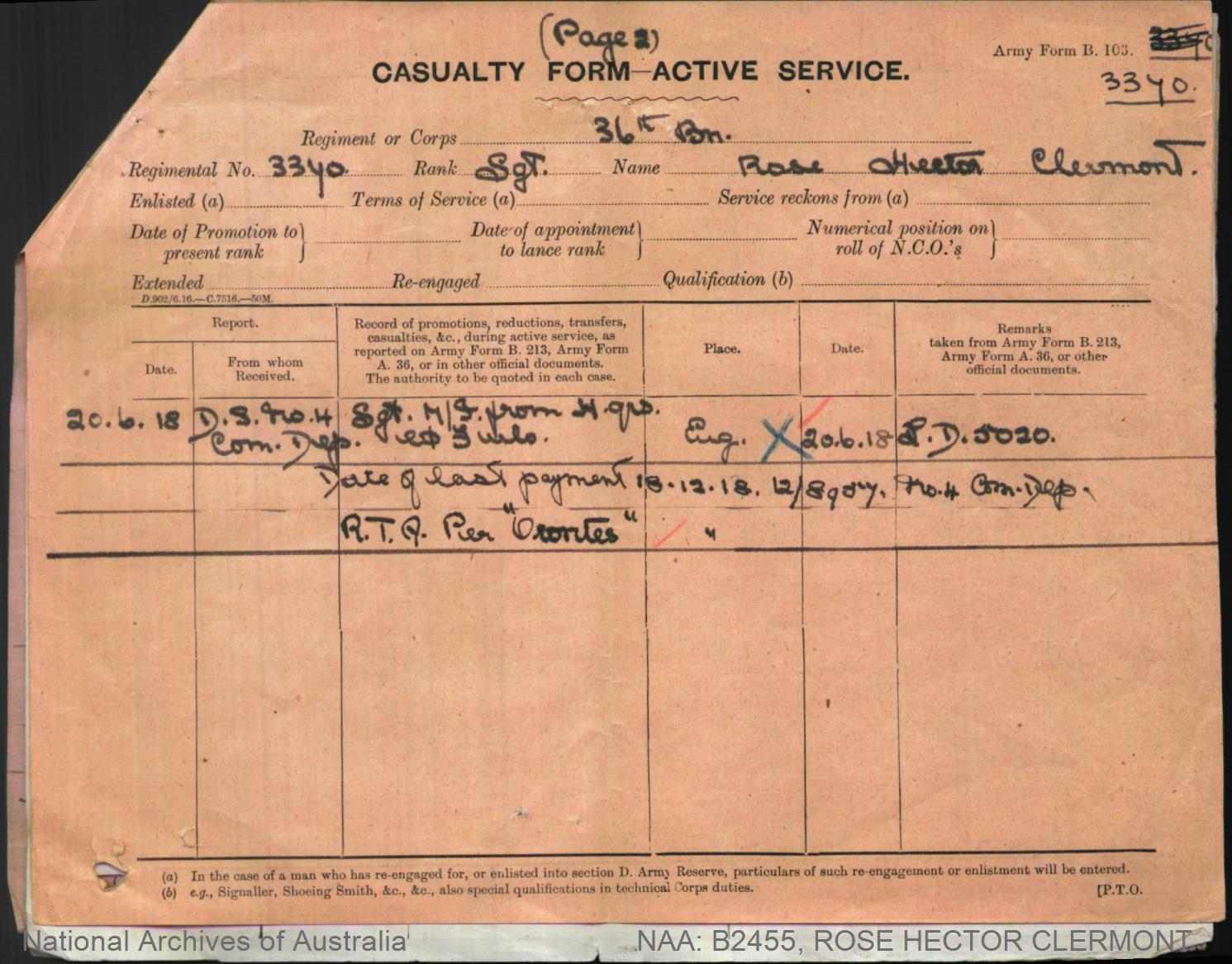
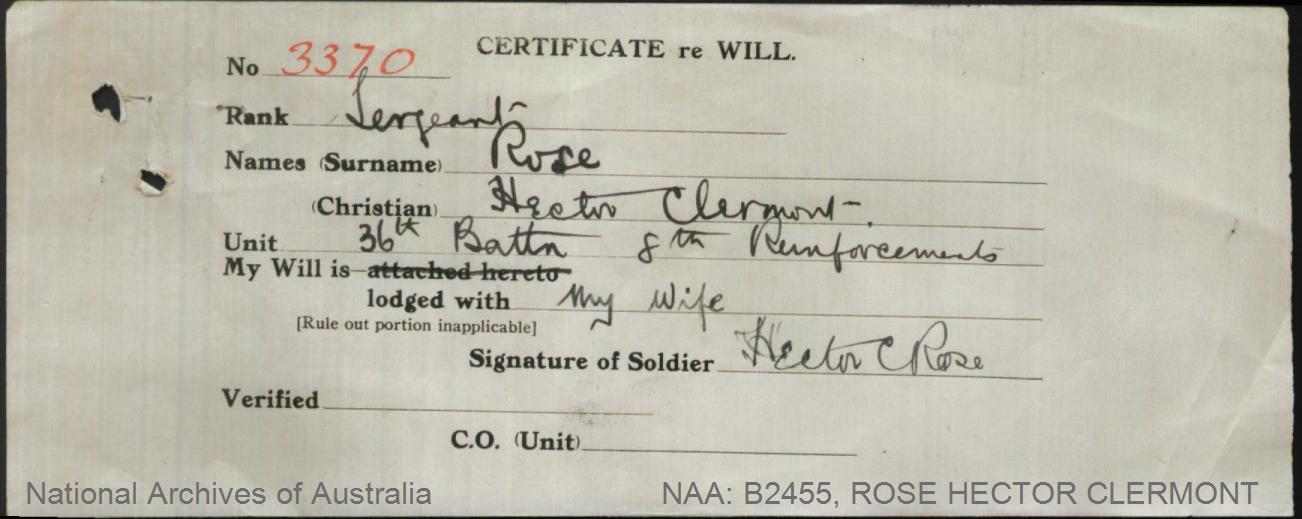

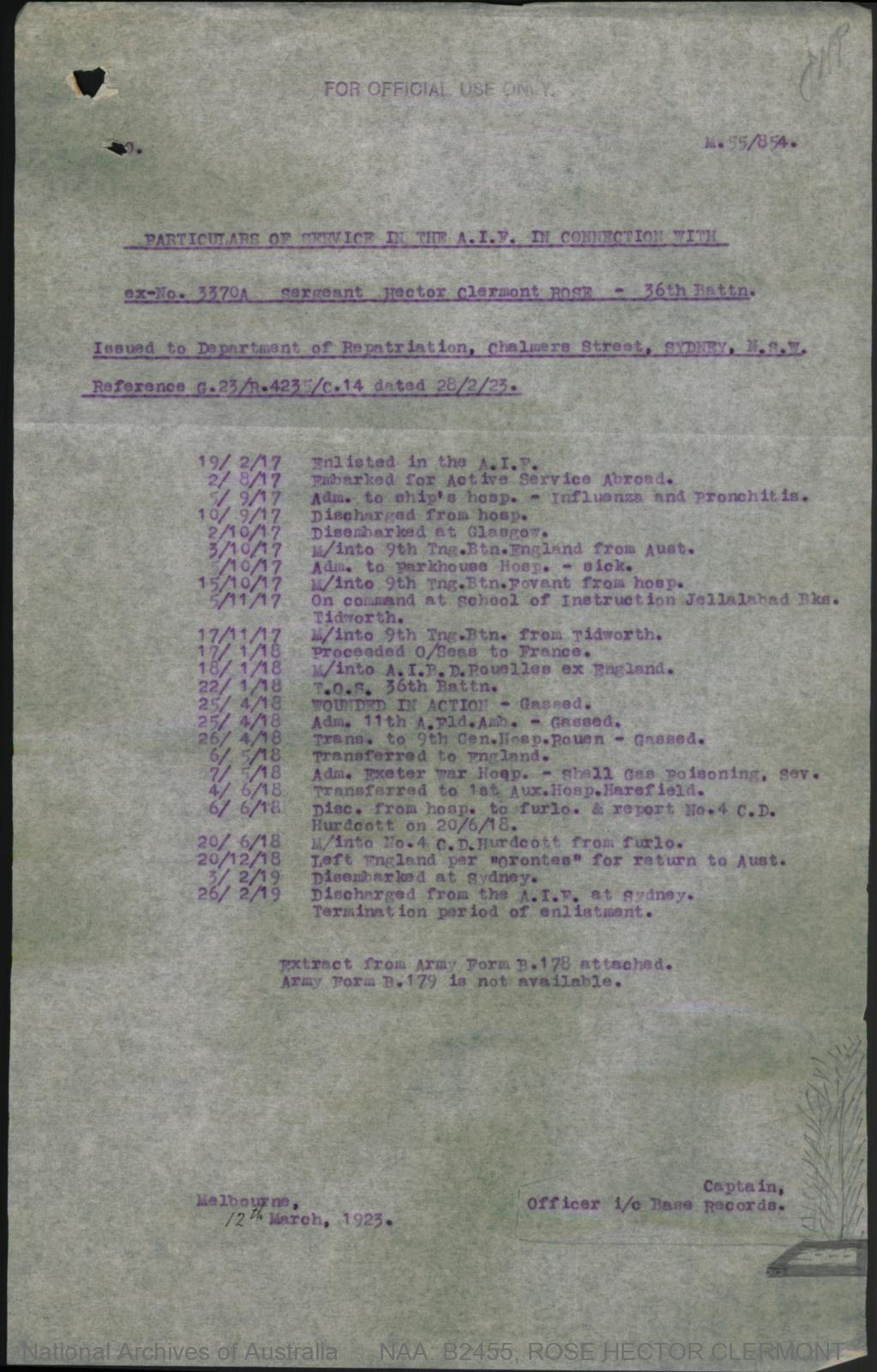
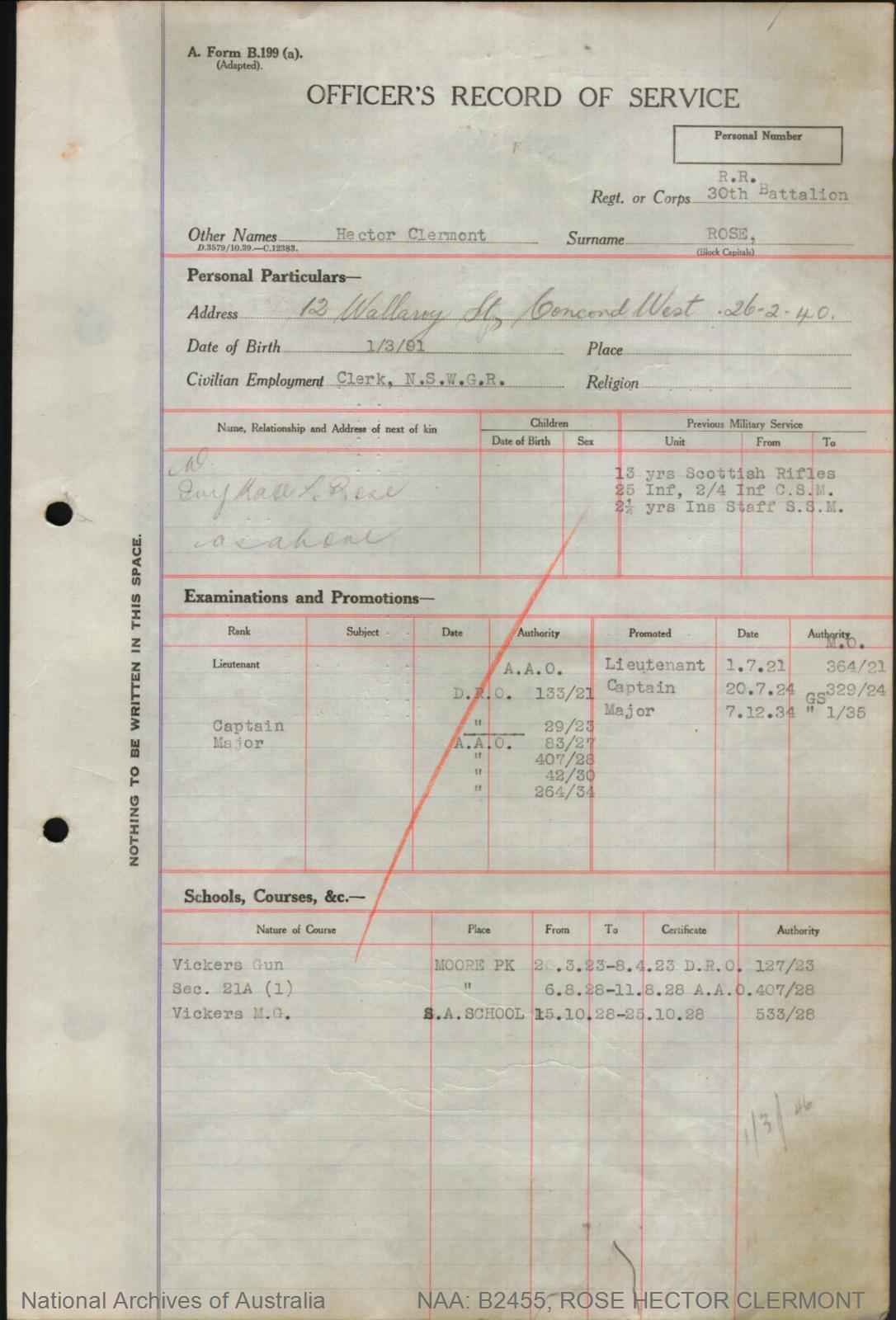
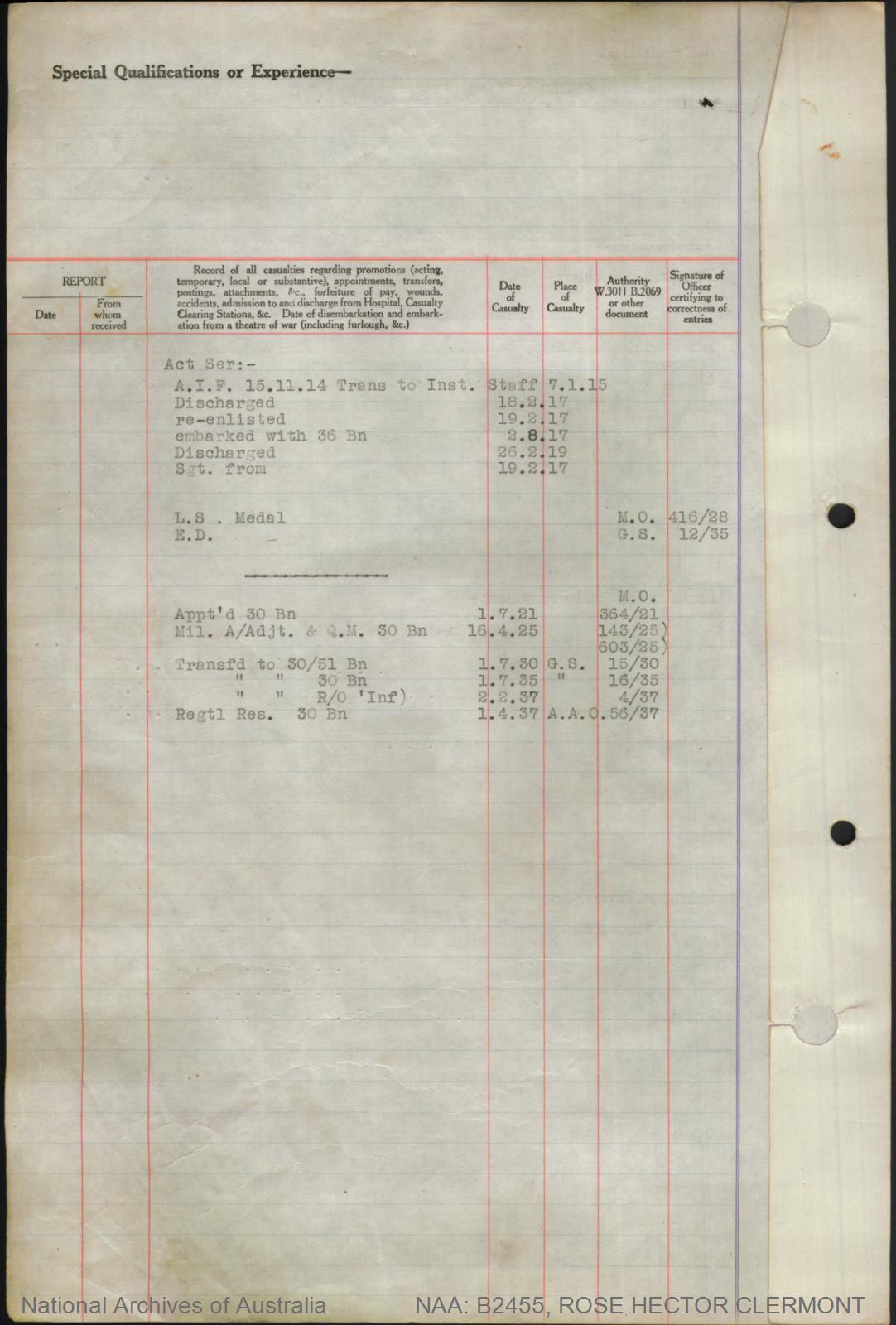
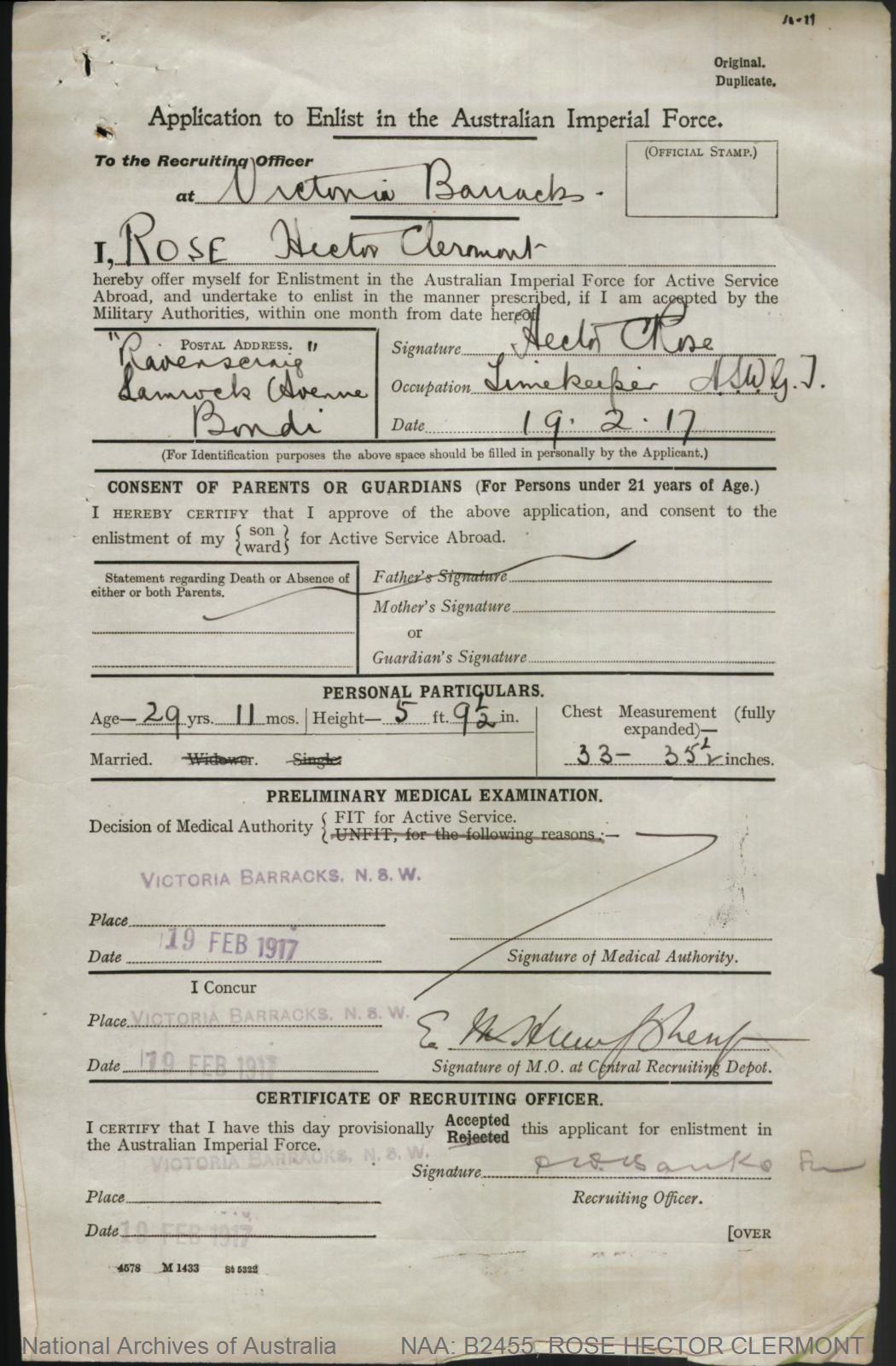

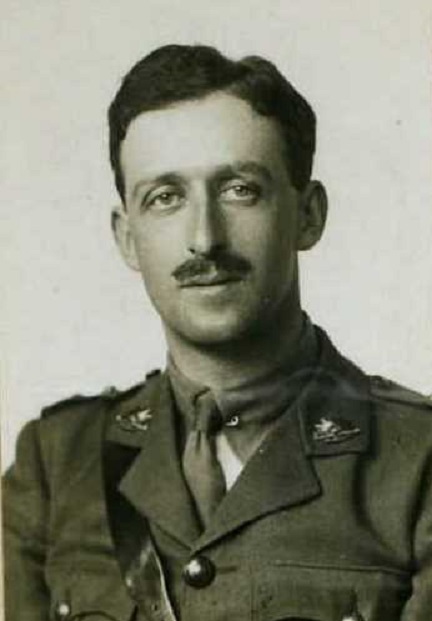
 embarked from Melbourne on the 17th January 1917 and disembarked at Plymouth, England on the 27th March 1917. Elias was marched in the the School of Instruction in Aviation and on the 30th May was admitted to hospital with a Fractured Tibia and Injuries to his Face and Legs from an accident at Training School.
embarked from Melbourne on the 17th January 1917 and disembarked at Plymouth, England on the 27th March 1917. Elias was marched in the the School of Instruction in Aviation and on the 30th May was admitted to hospital with a Fractured Tibia and Injuries to his Face and Legs from an accident at Training School.
